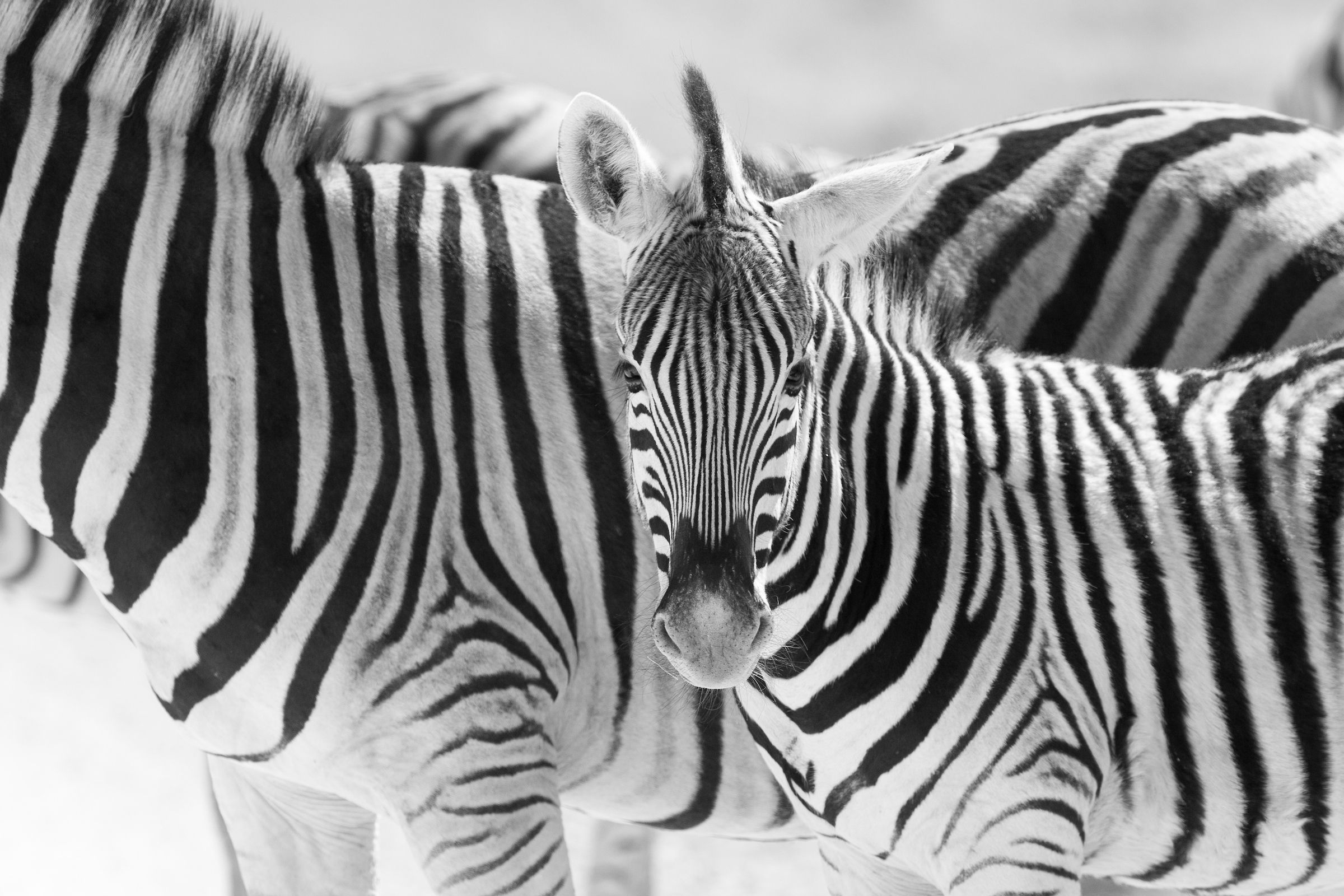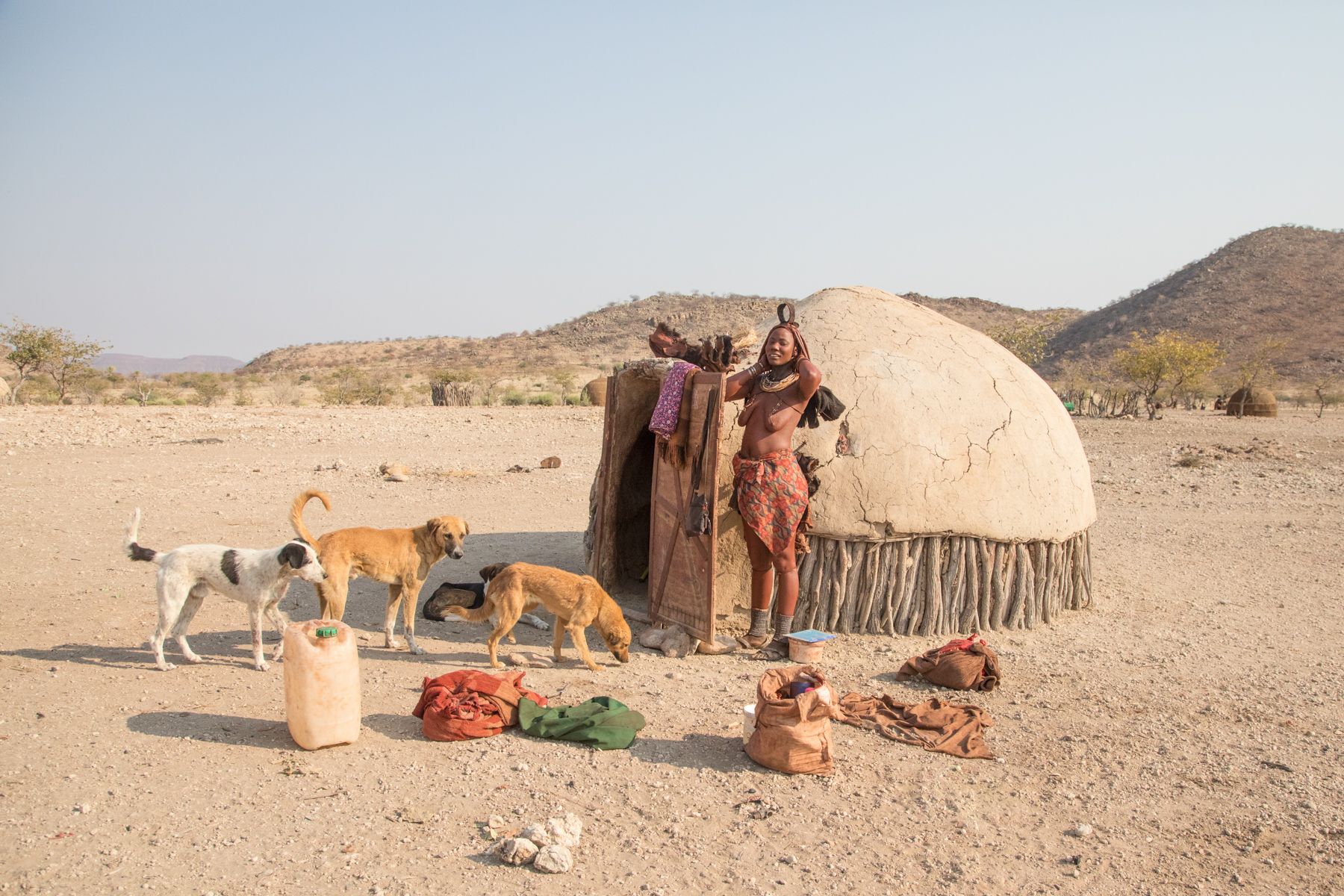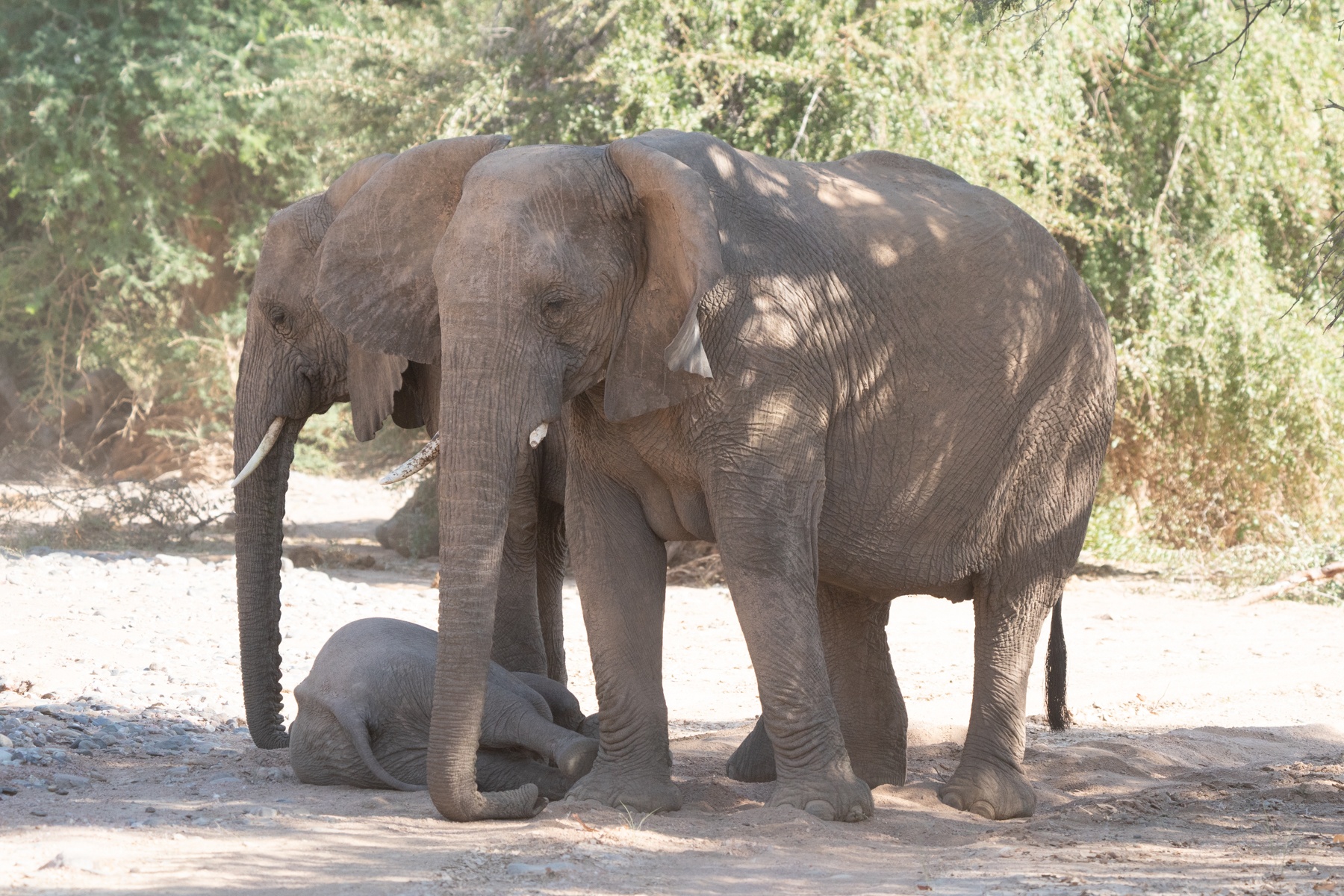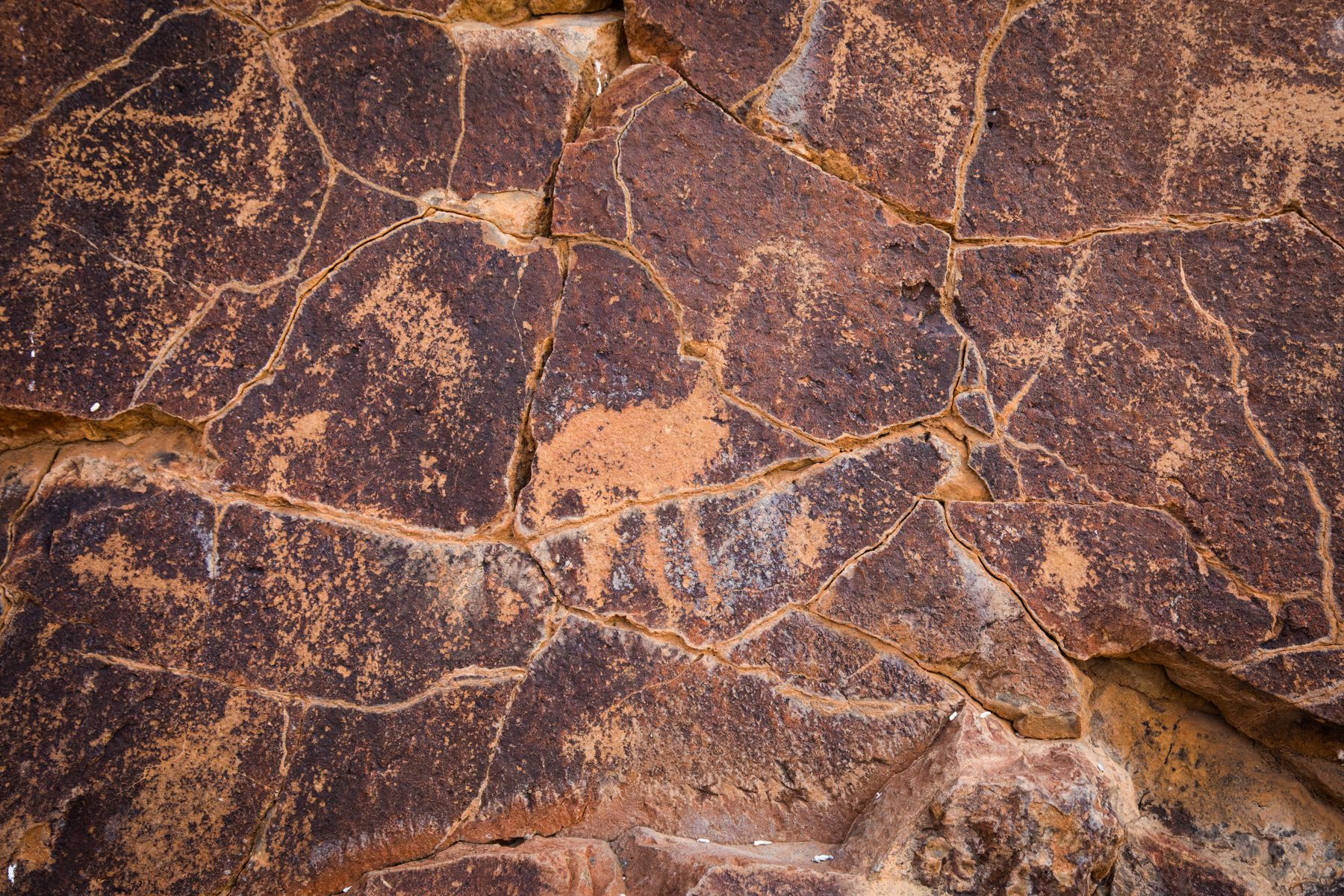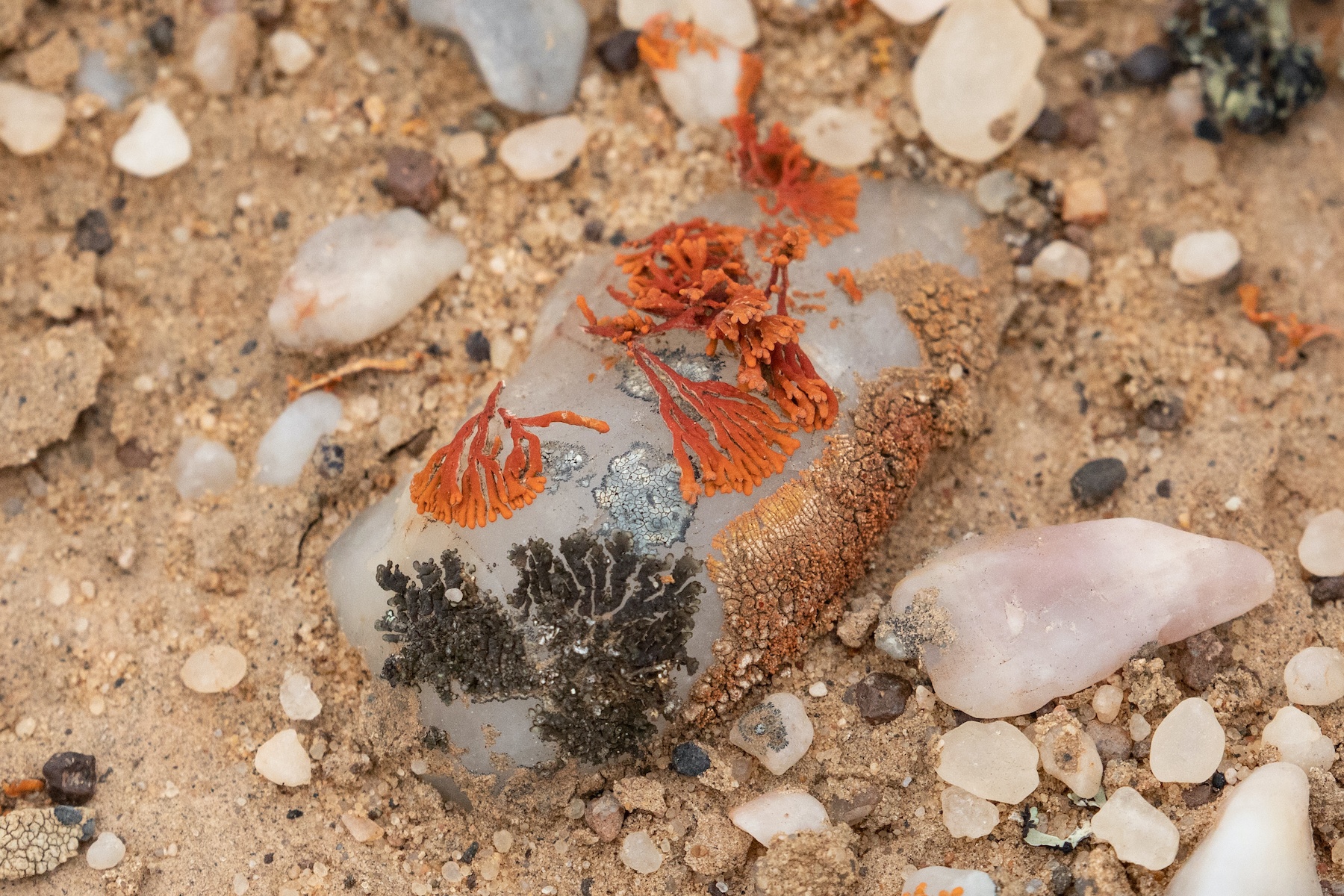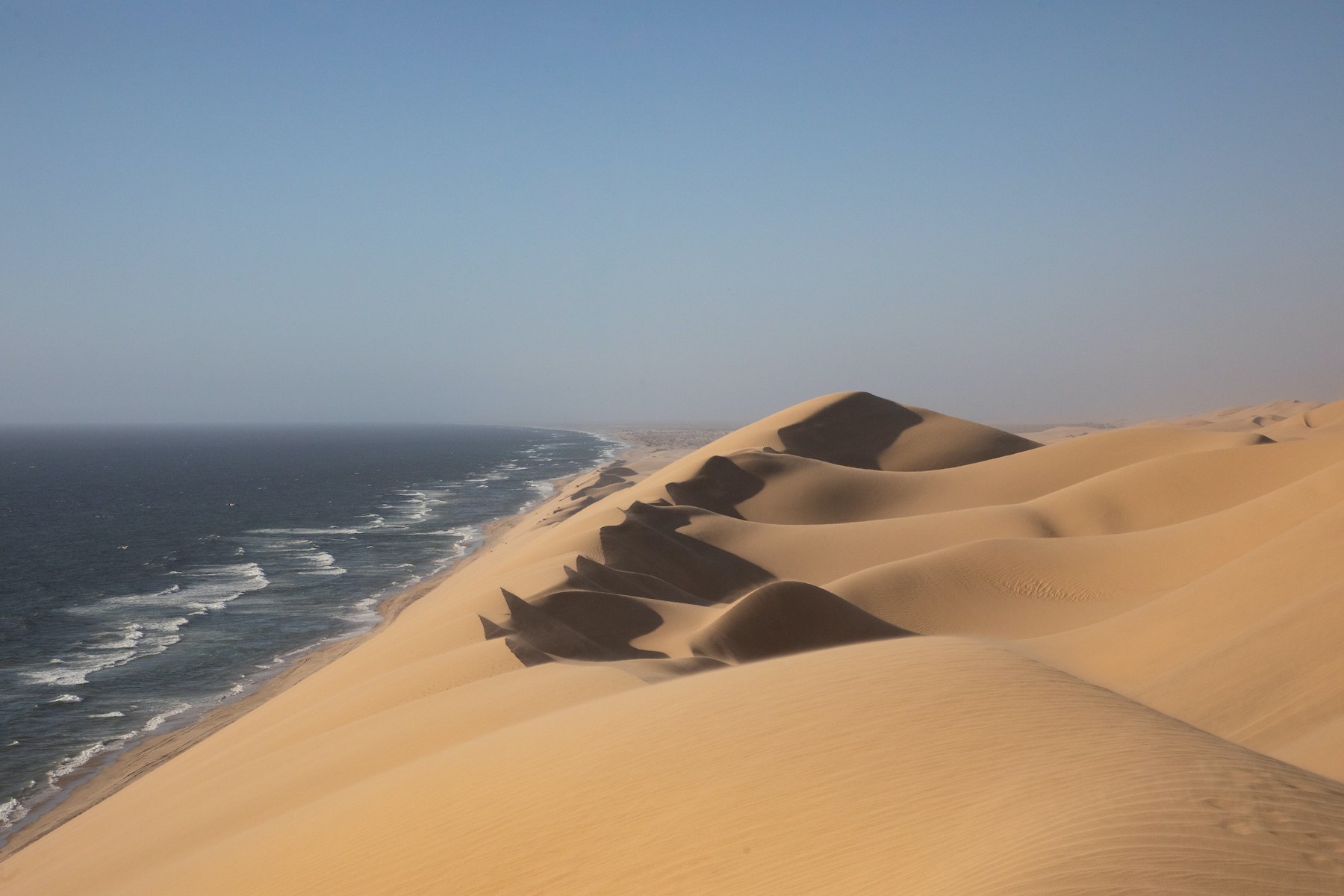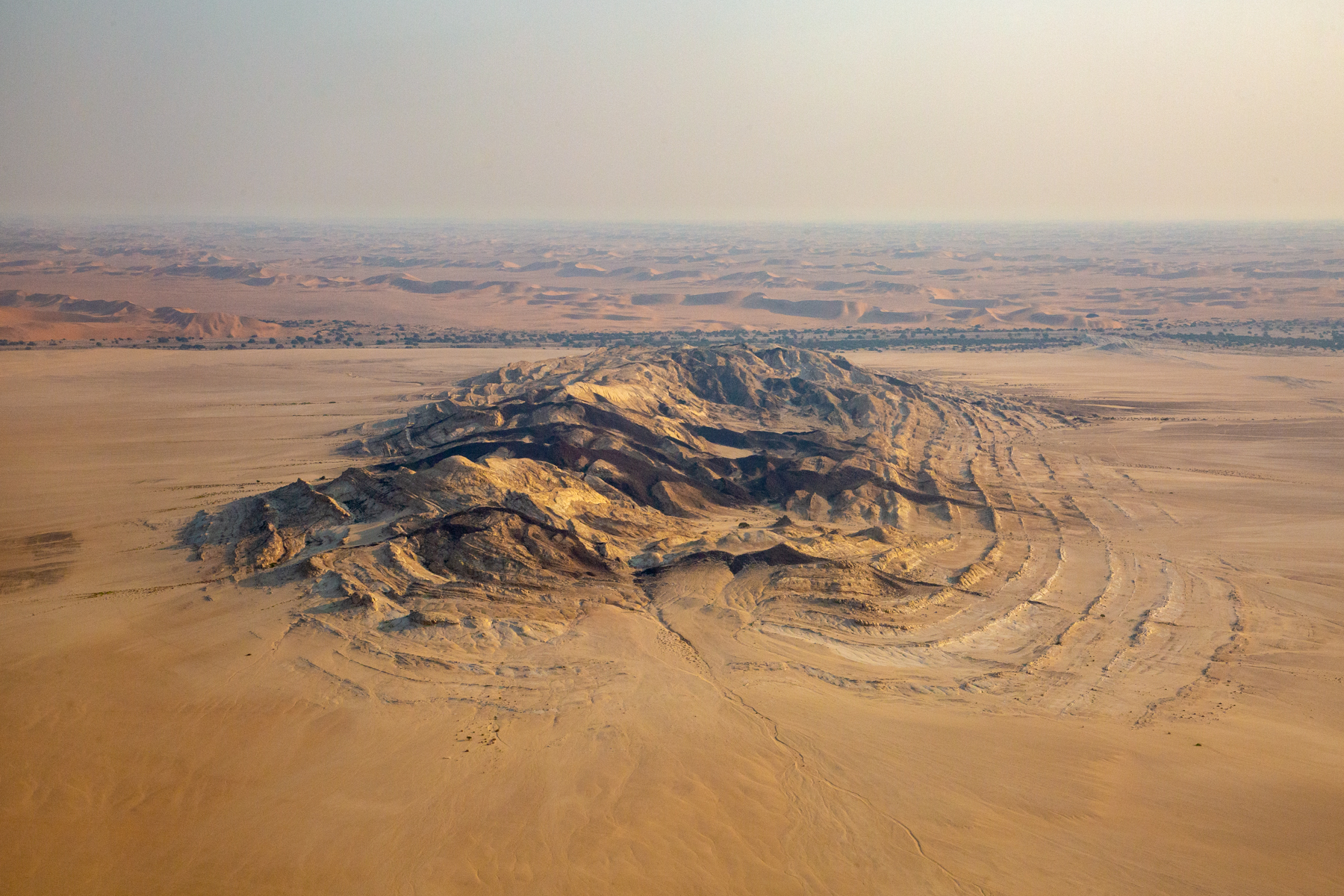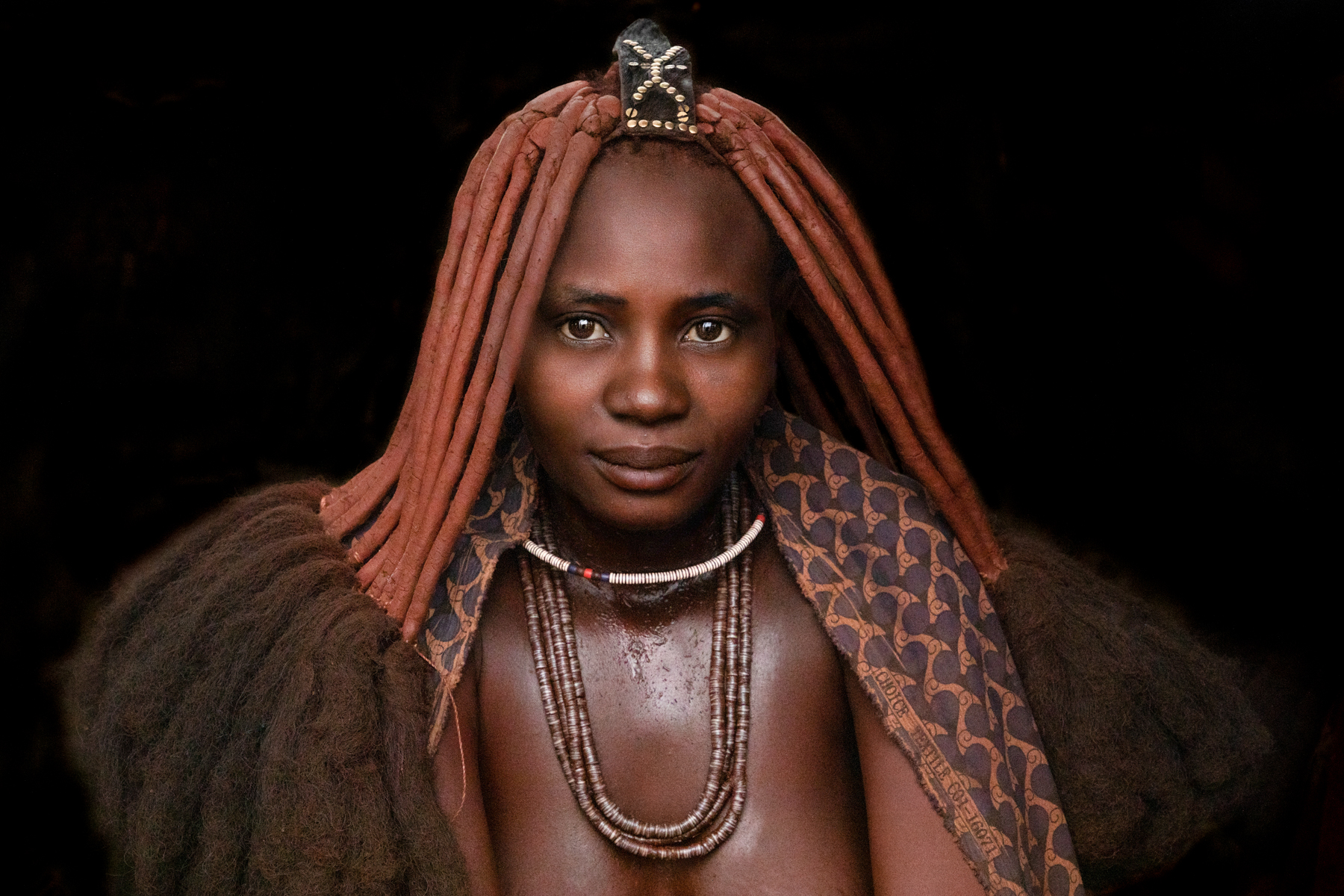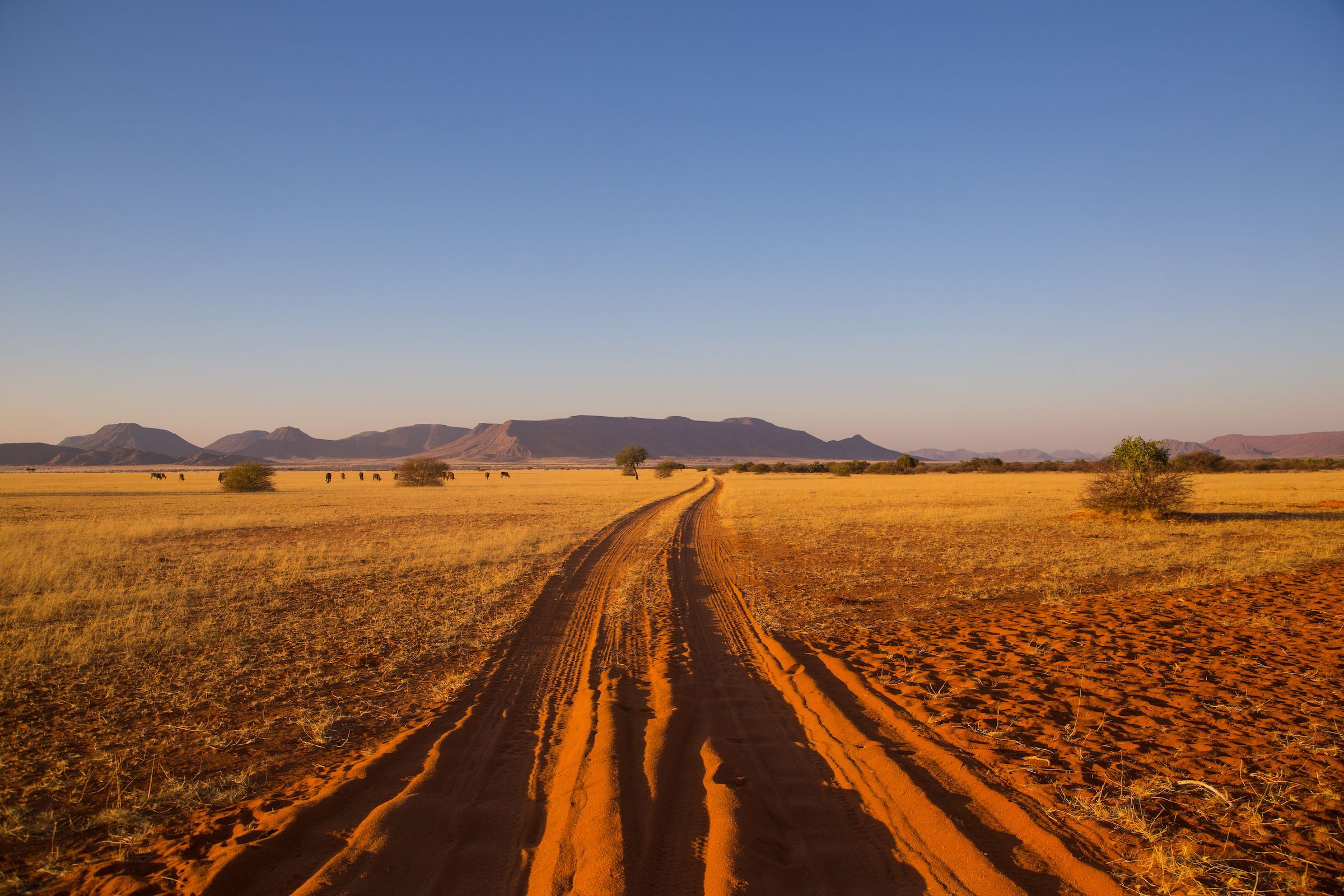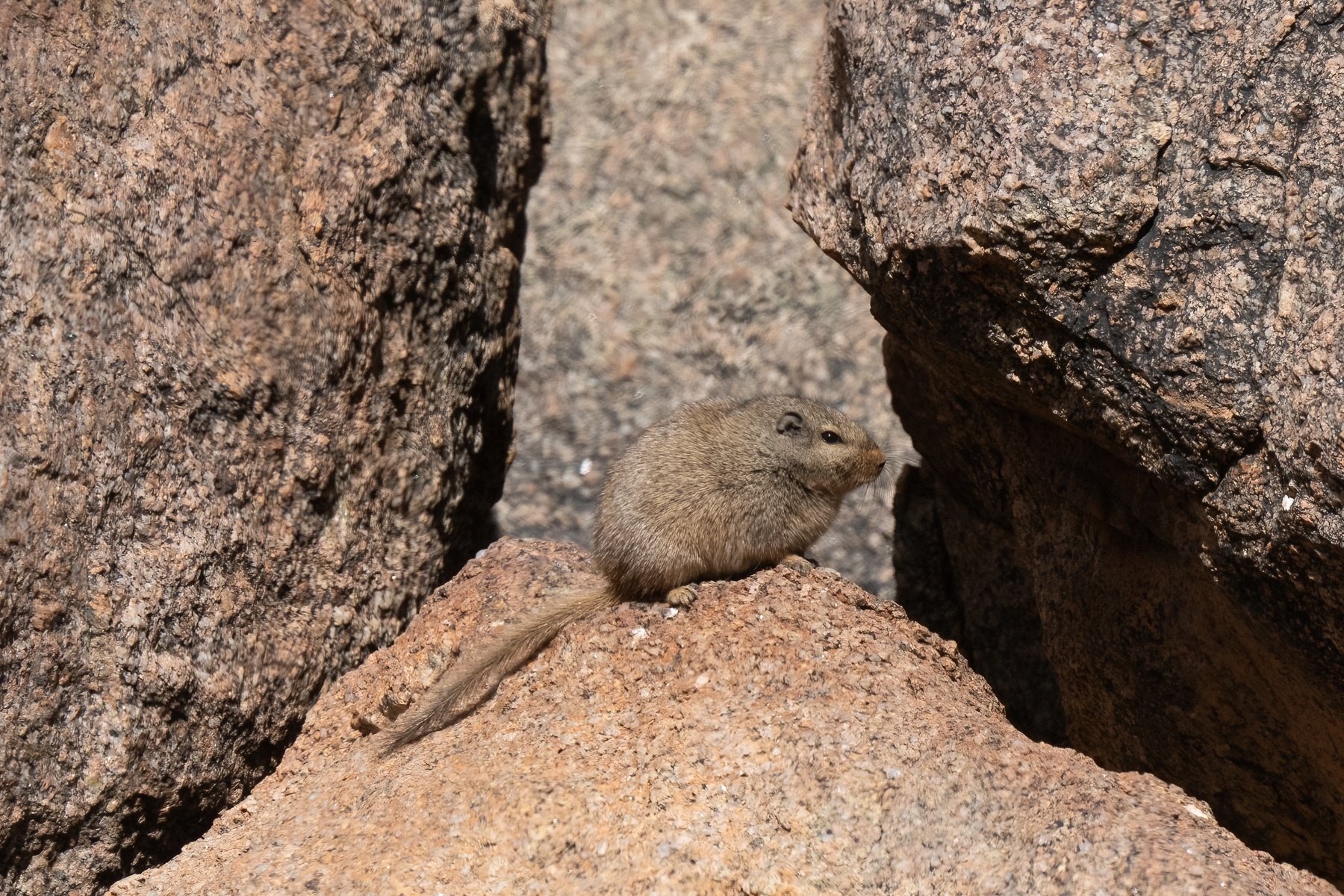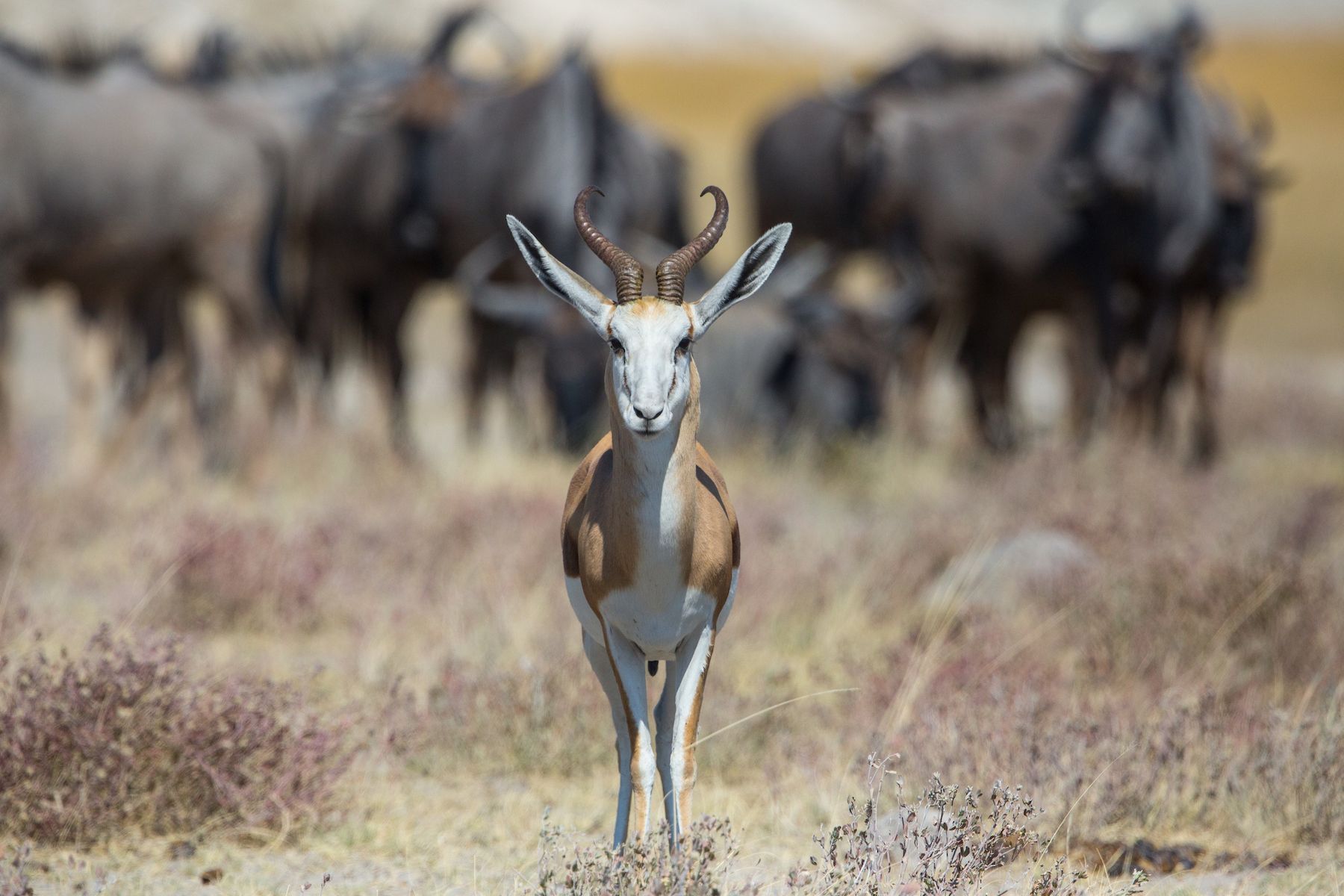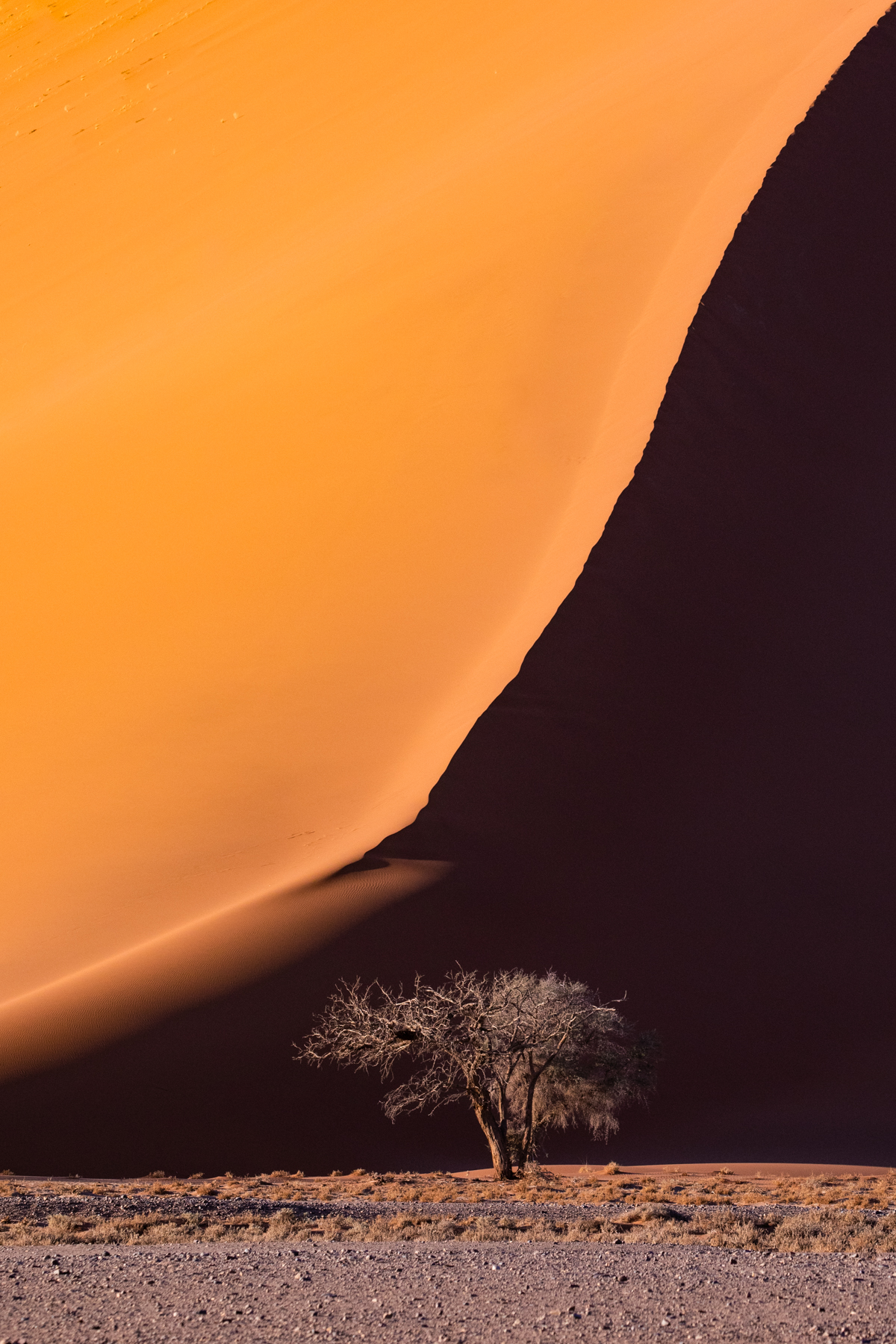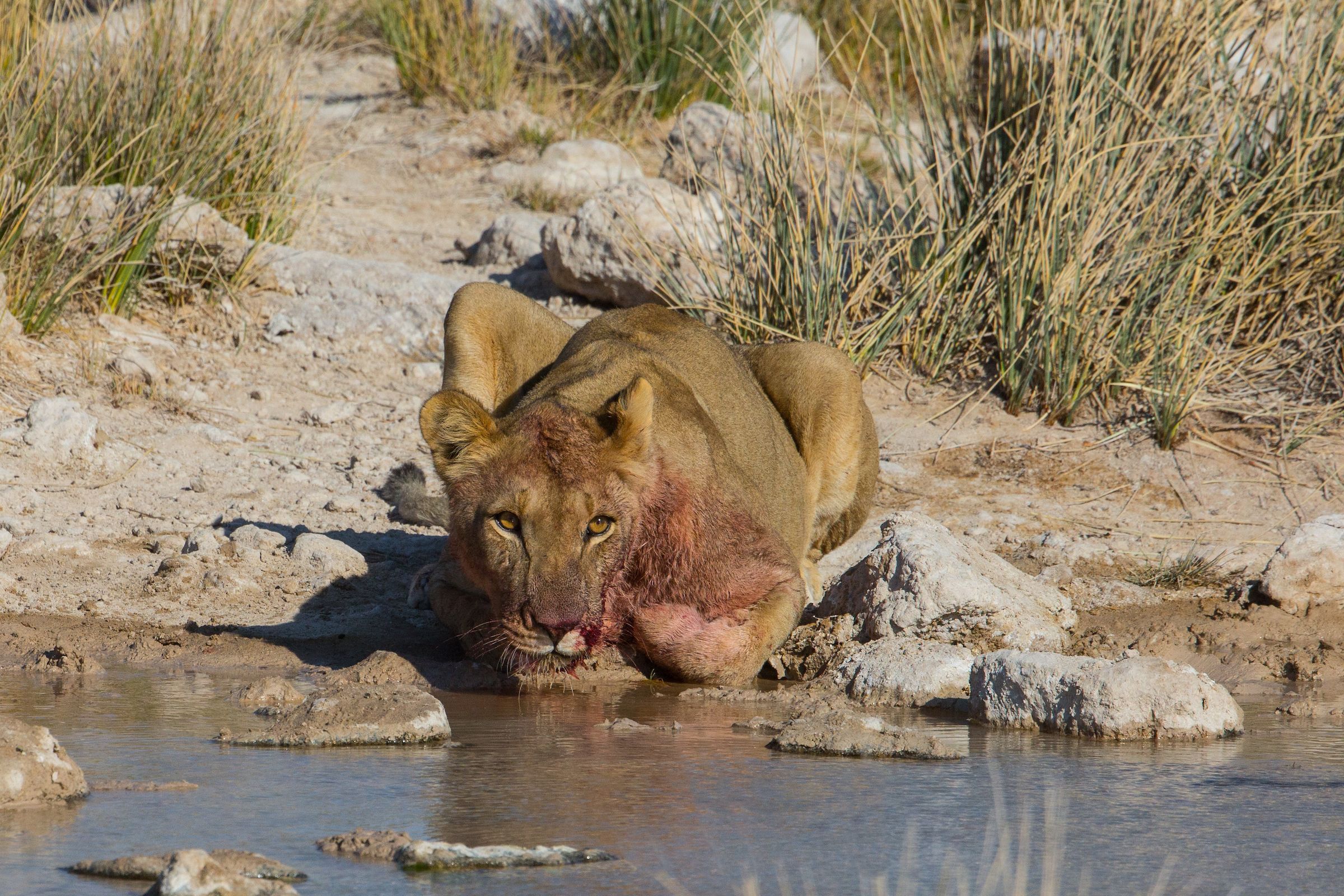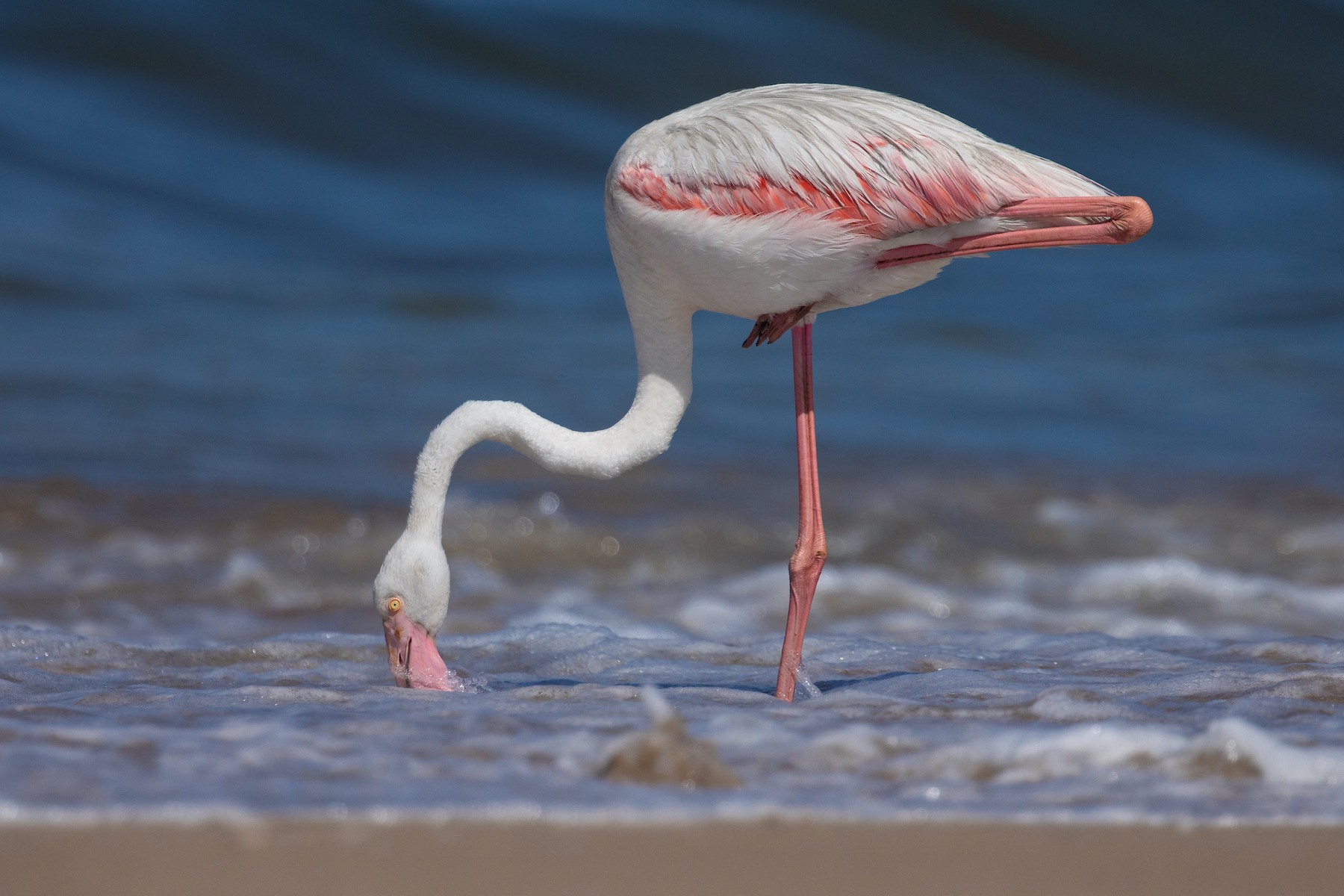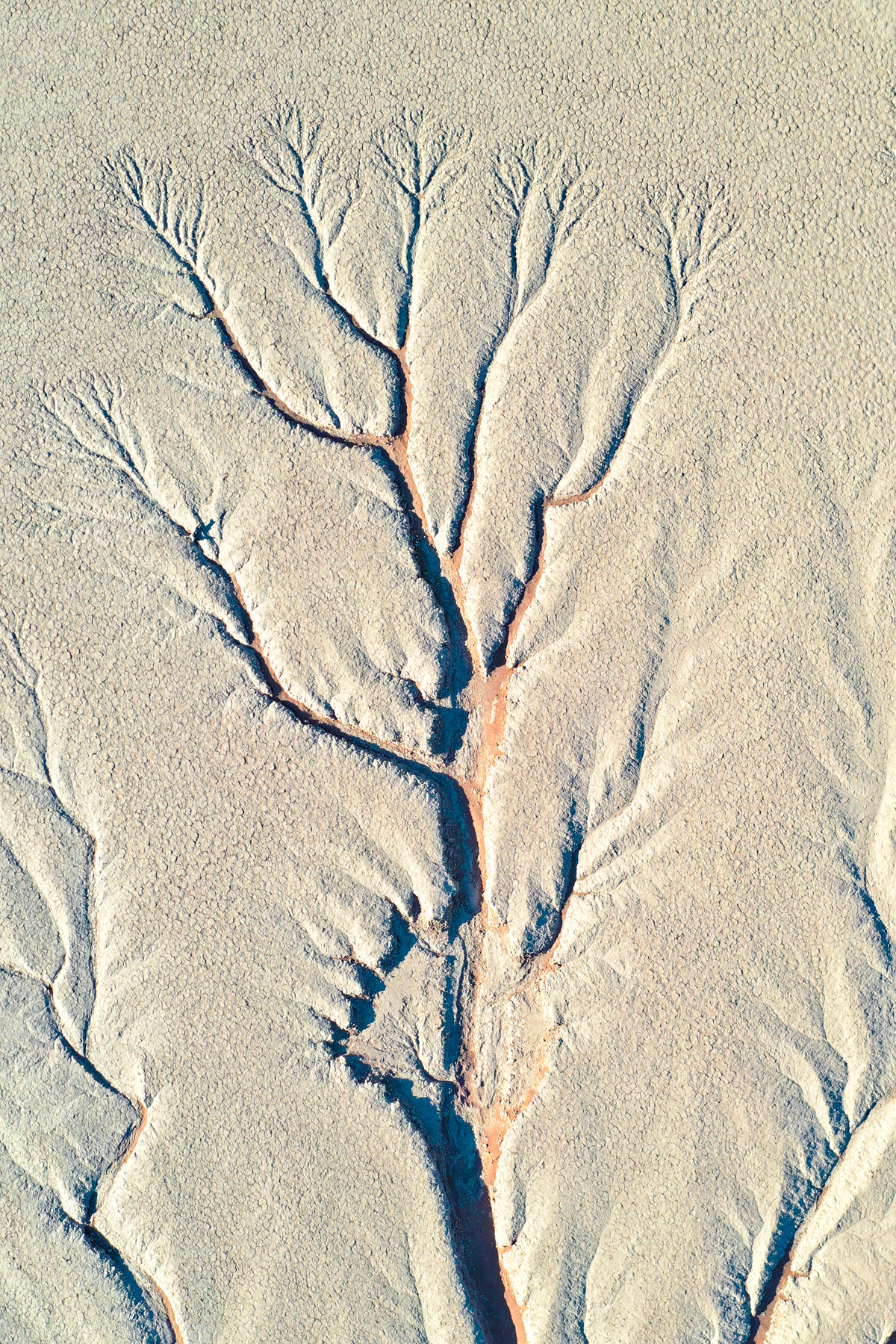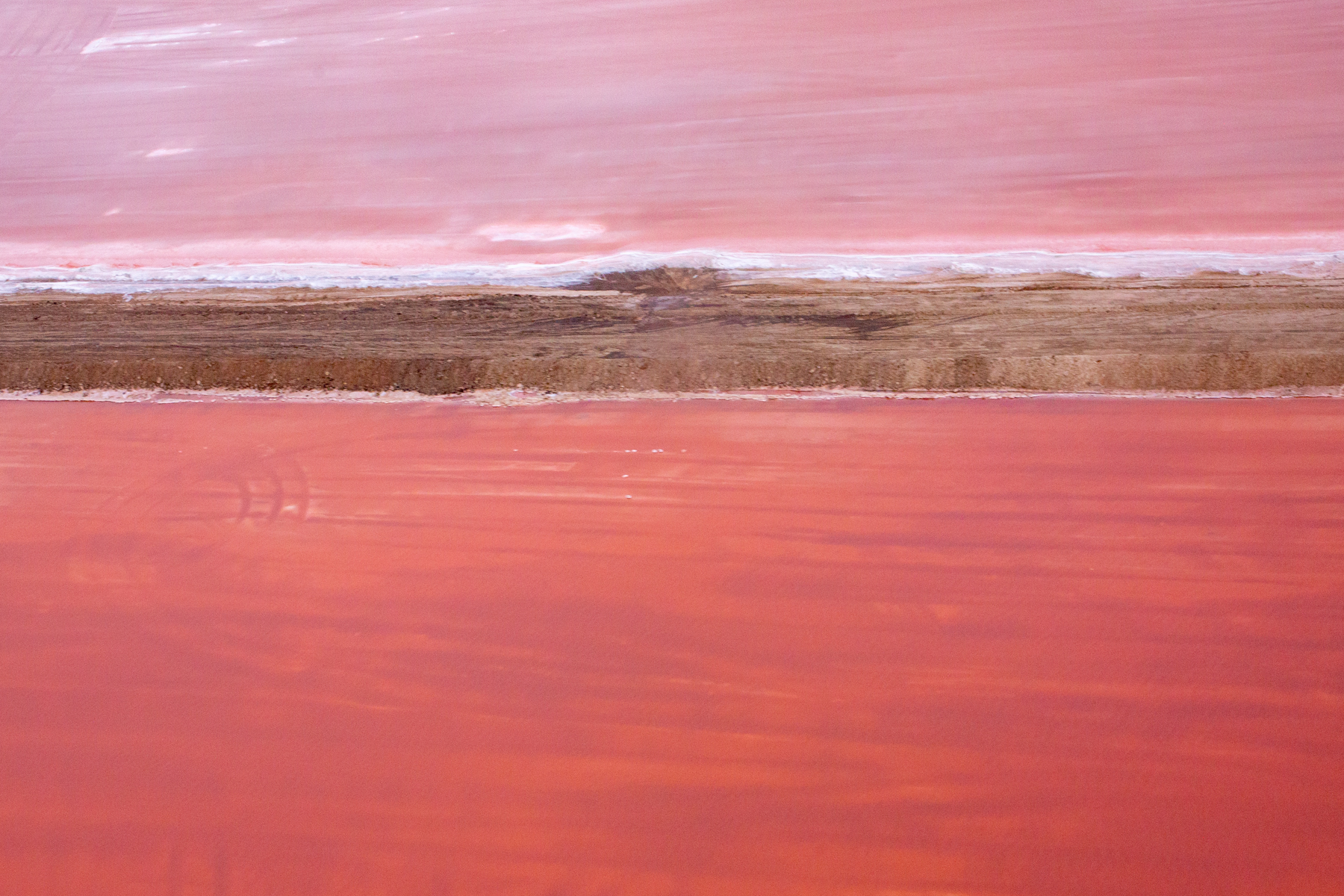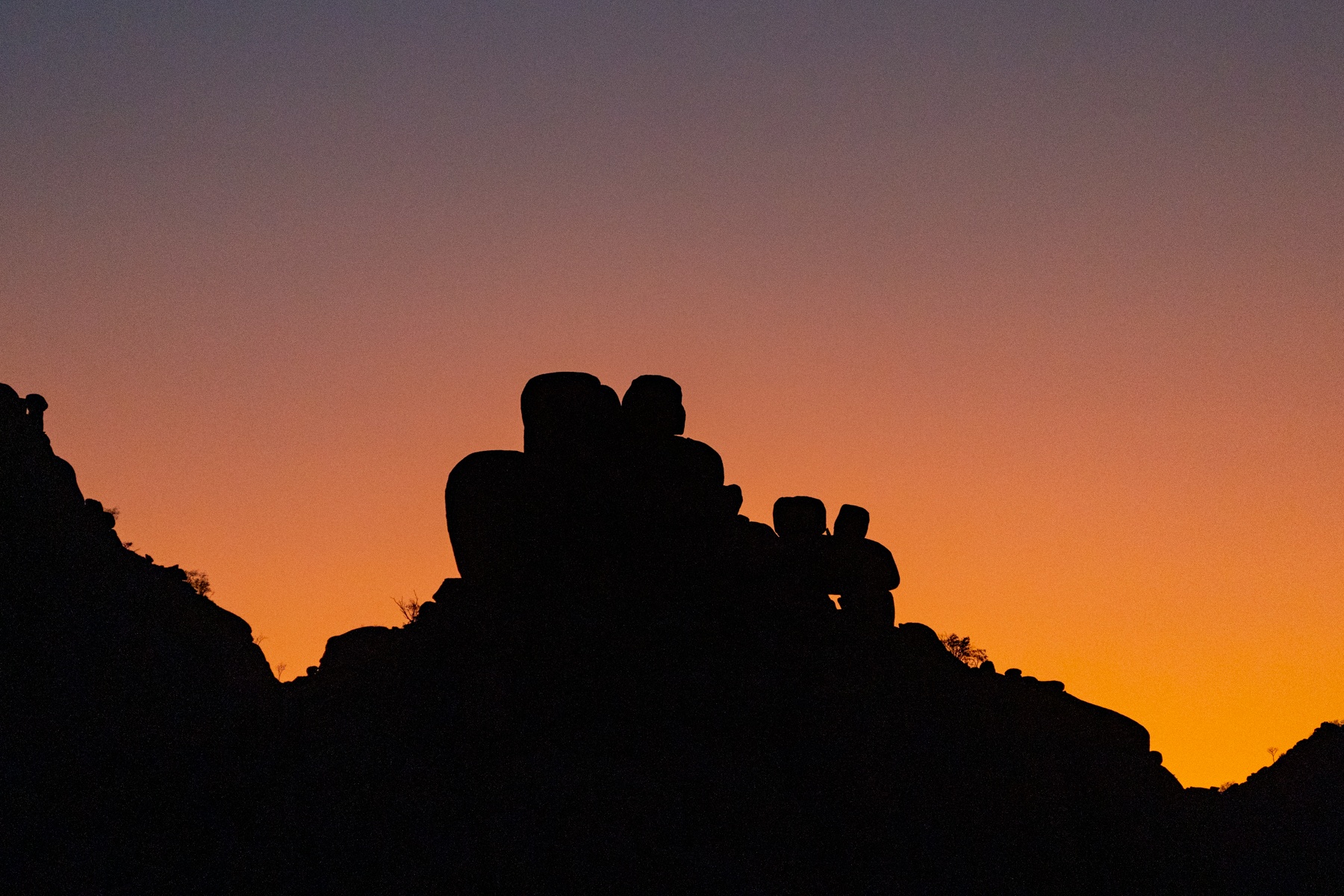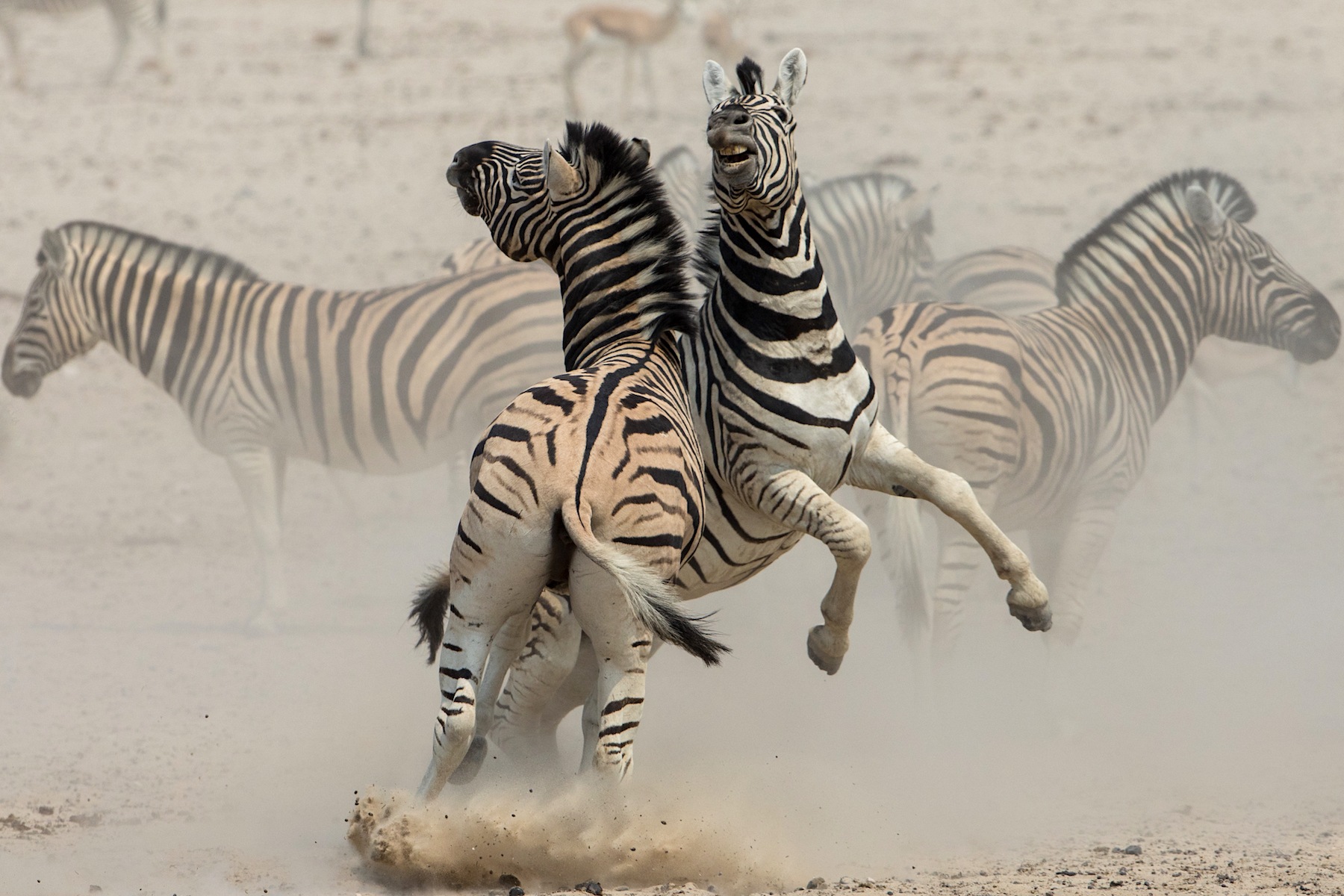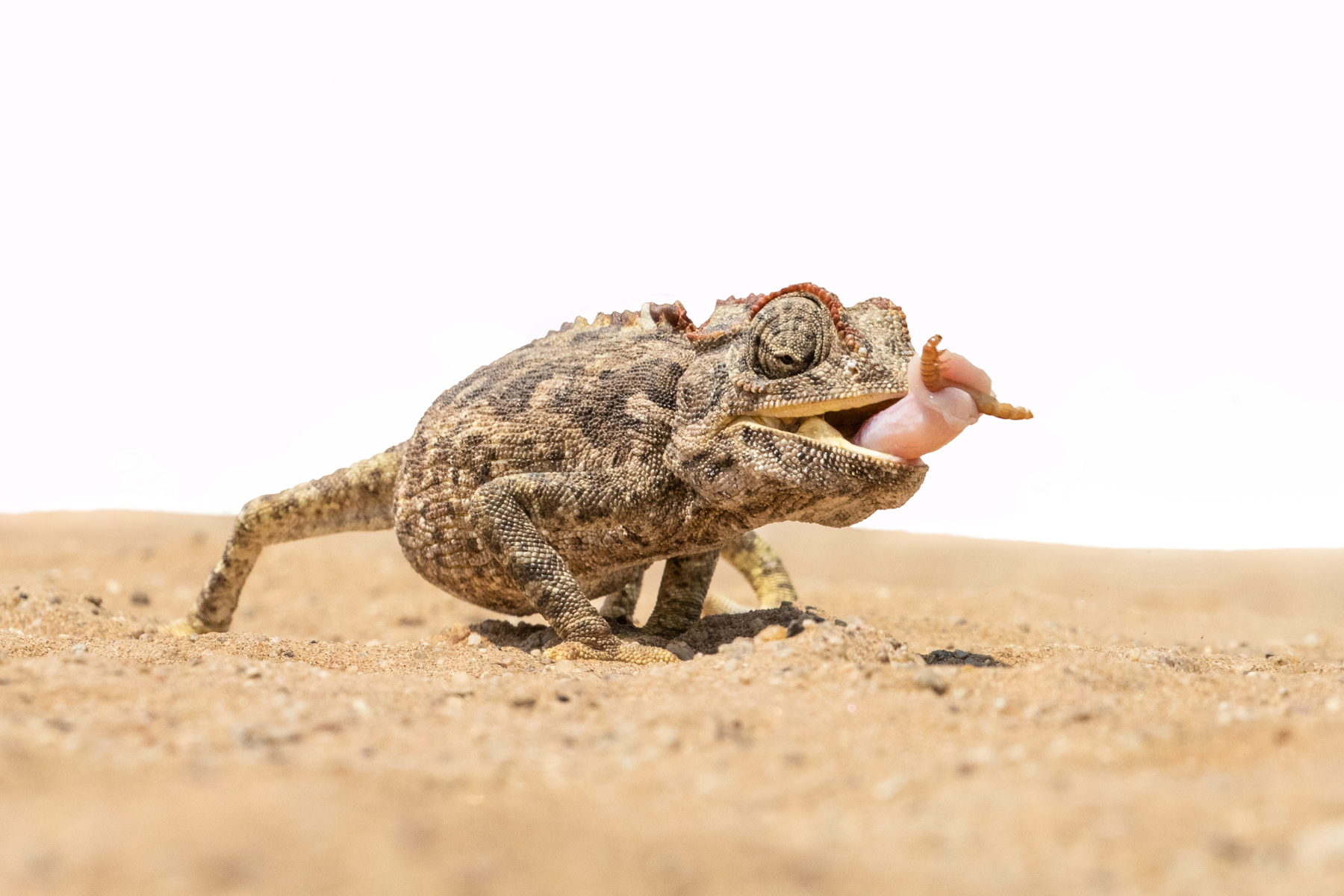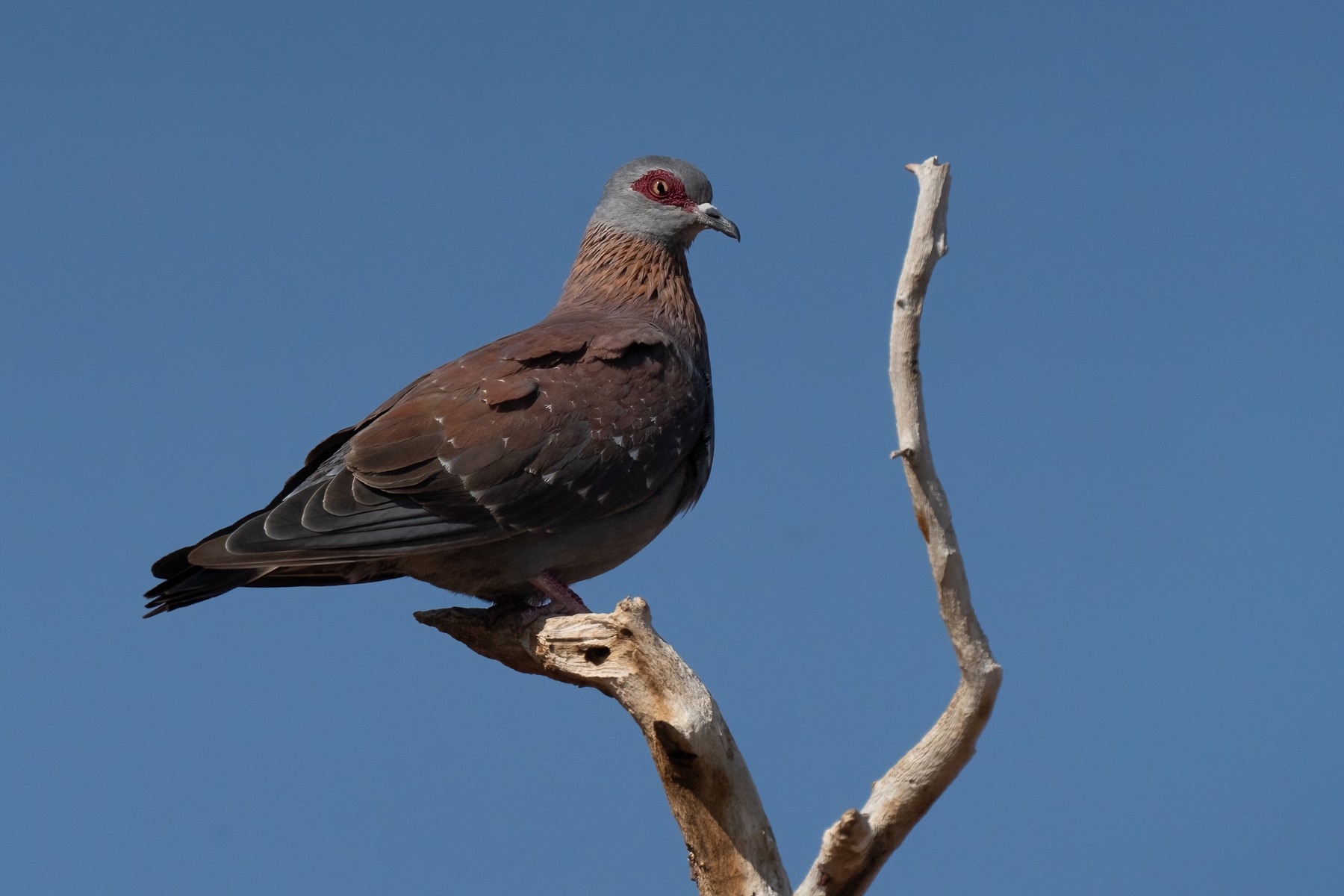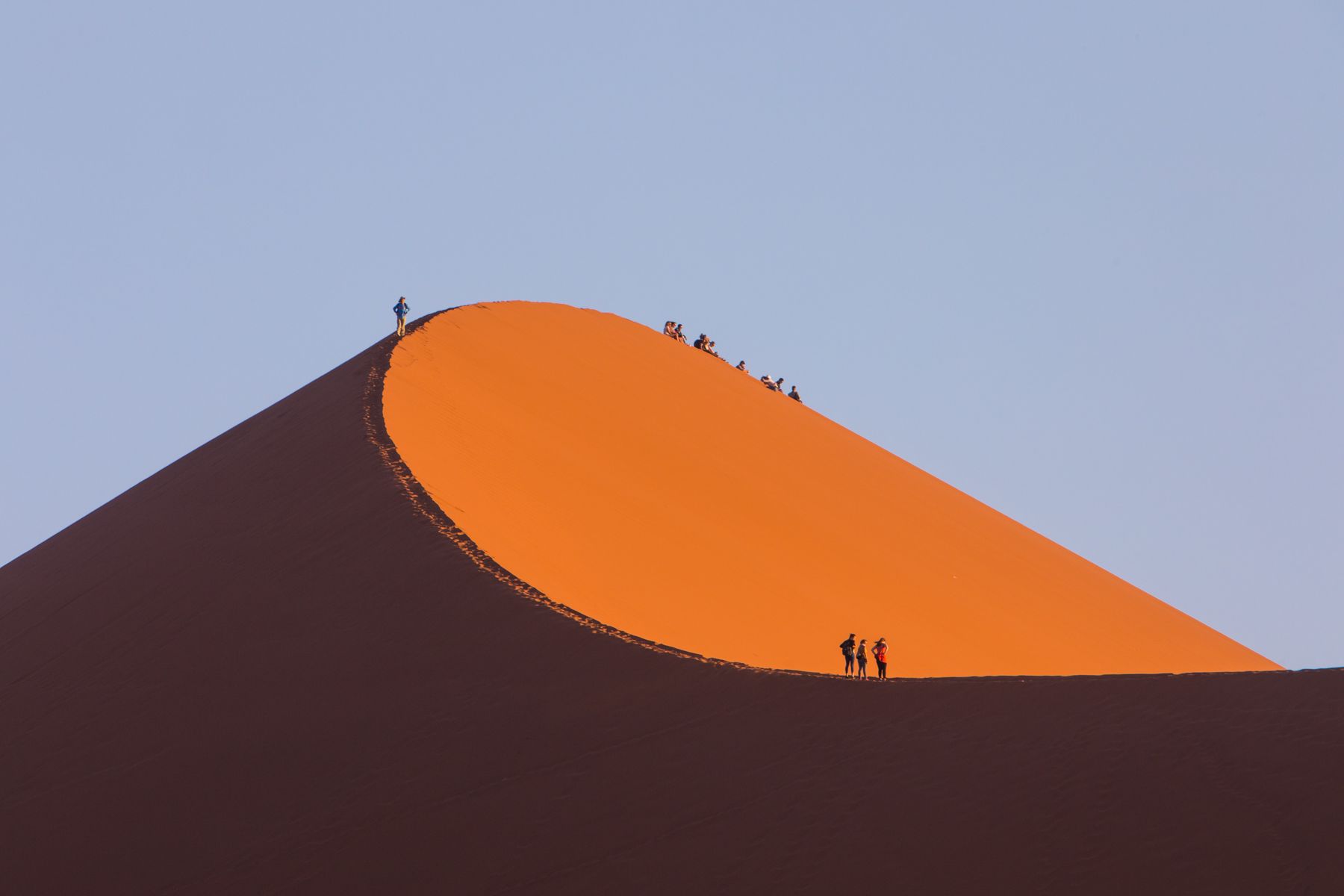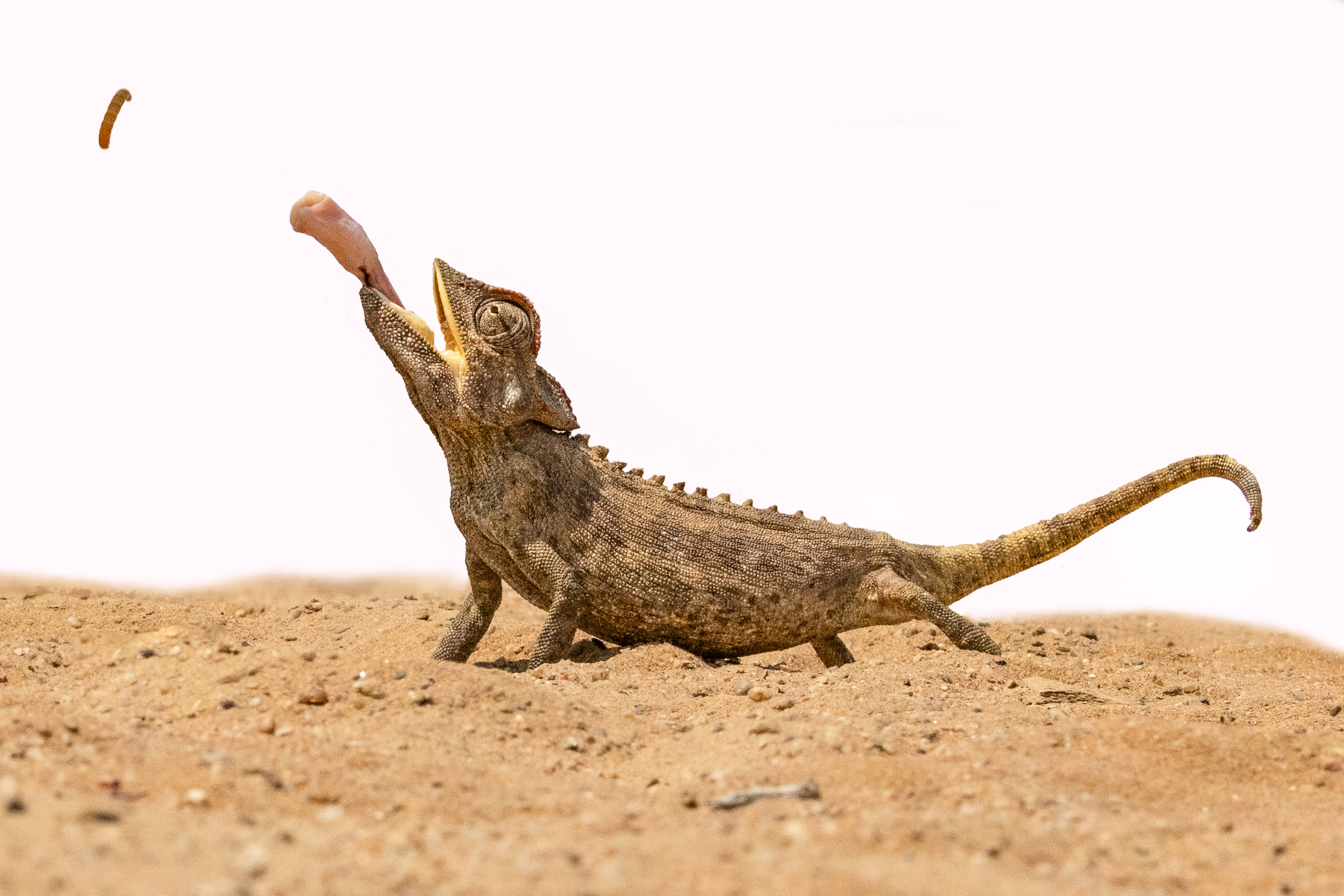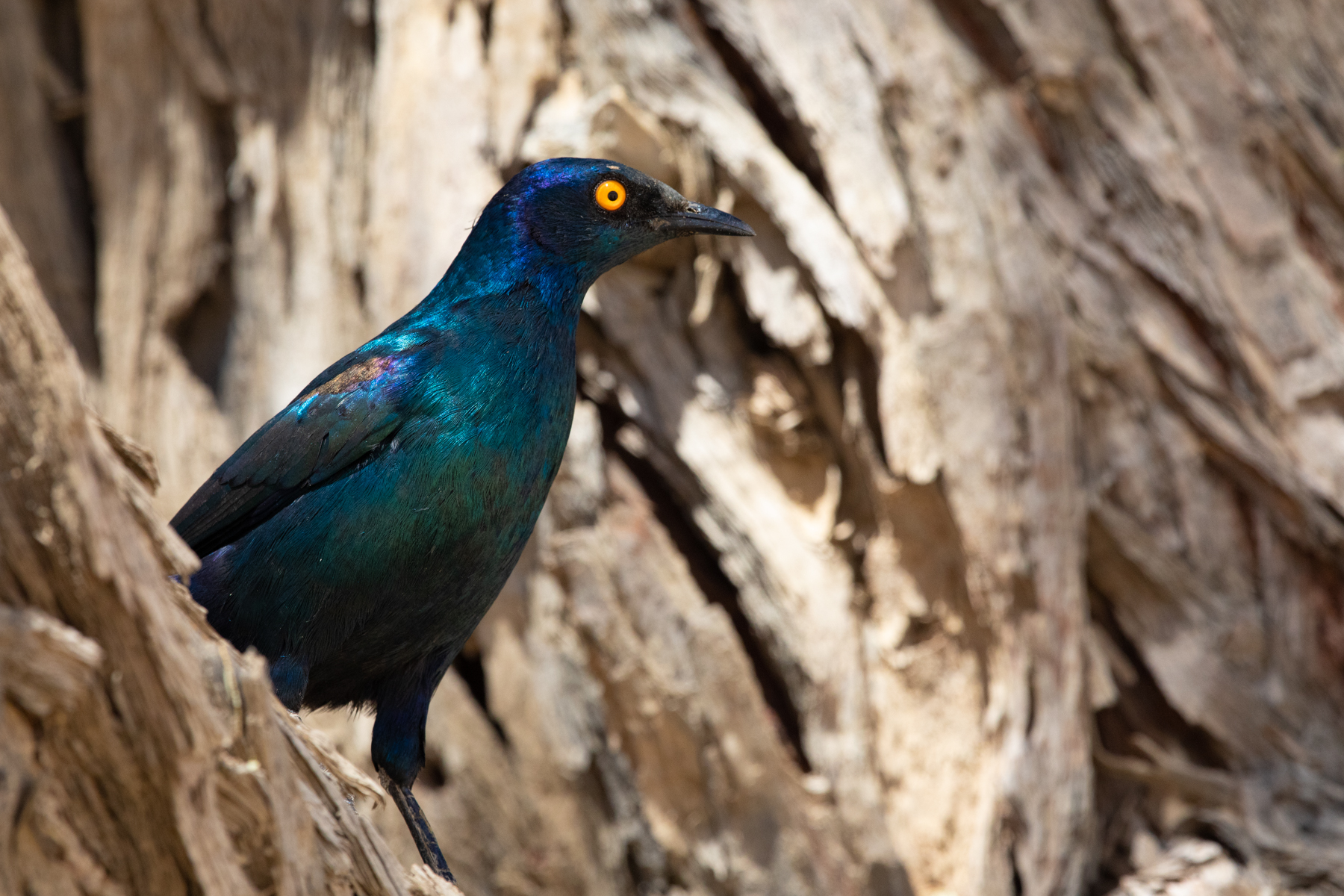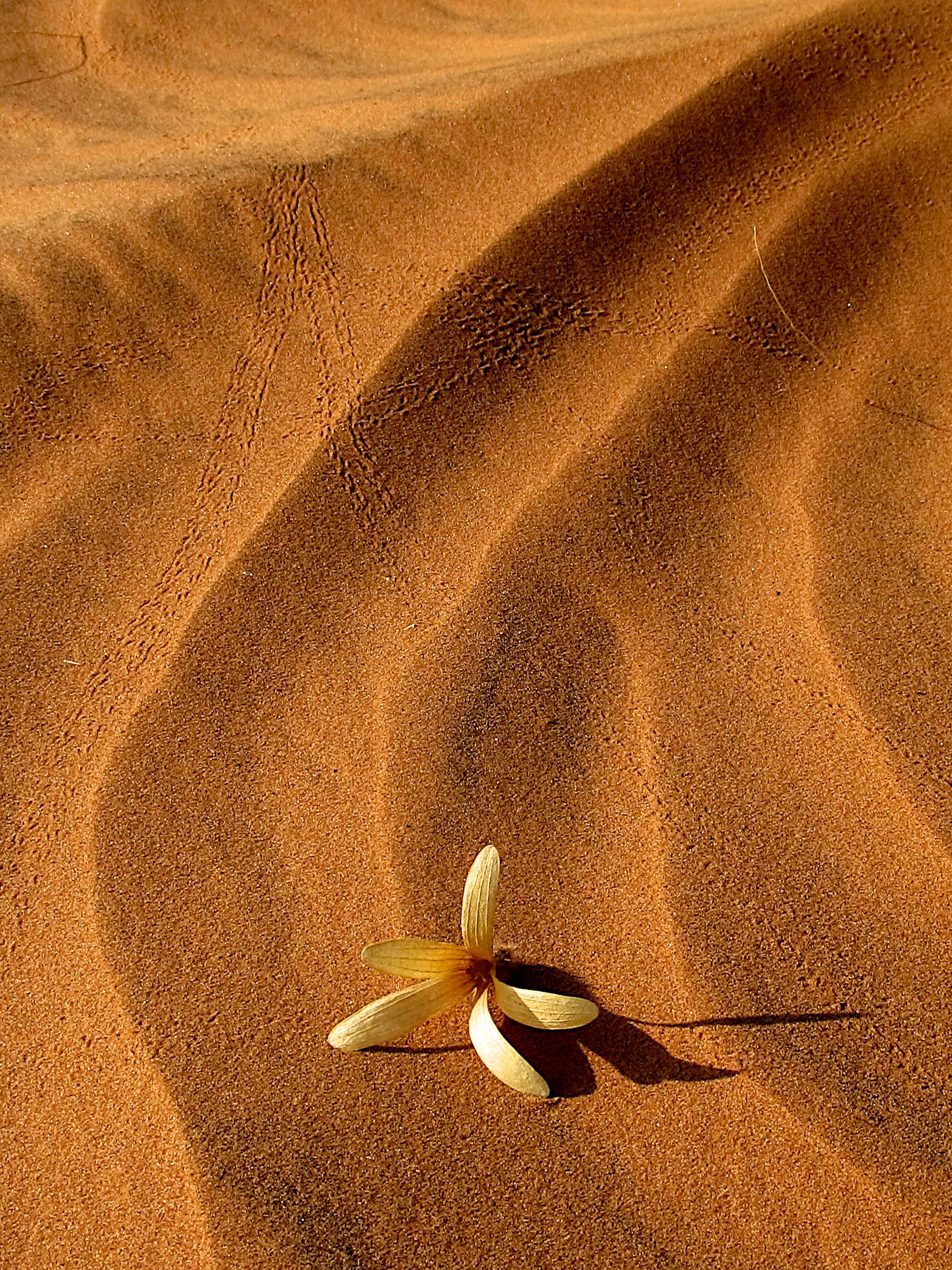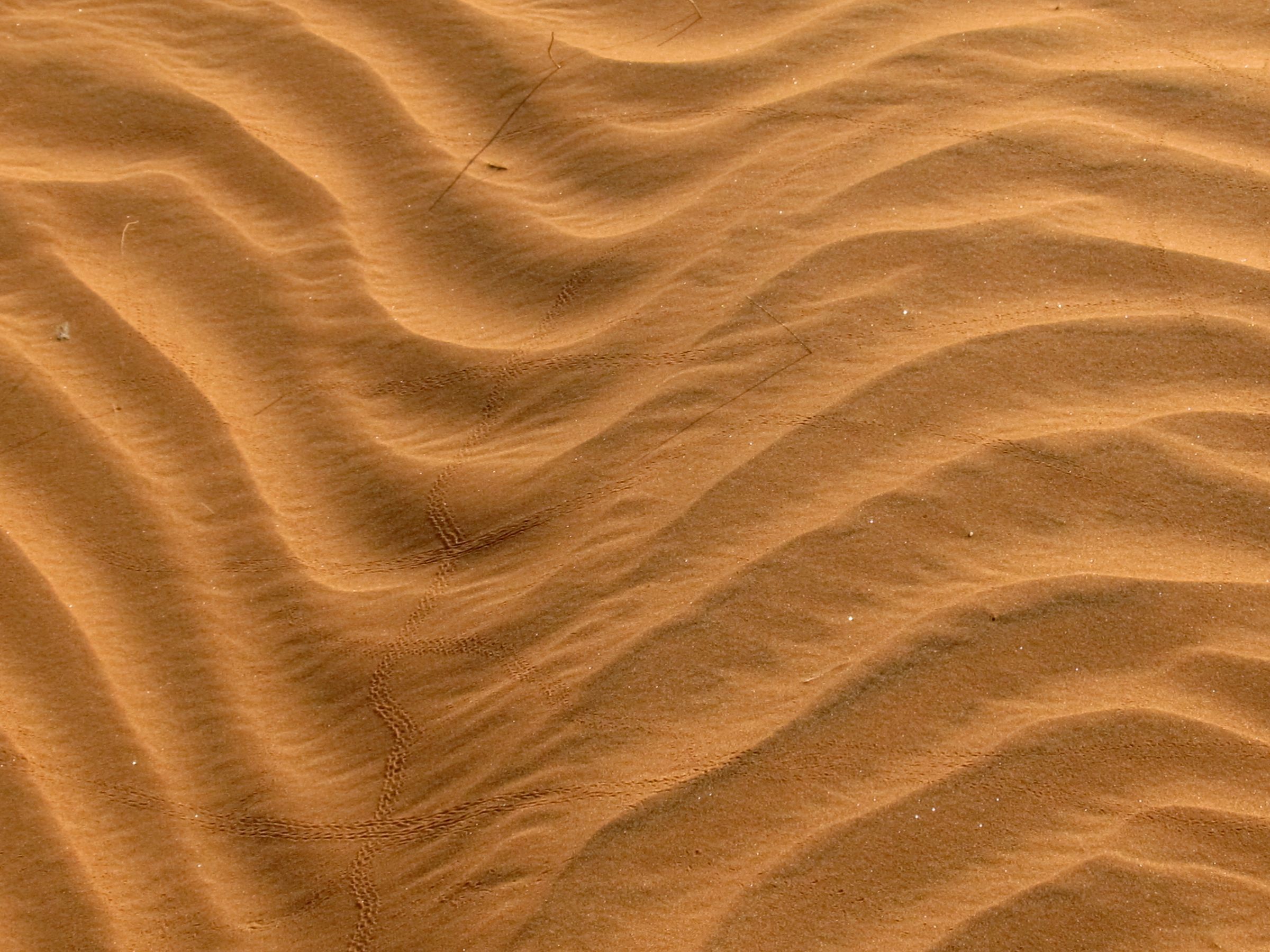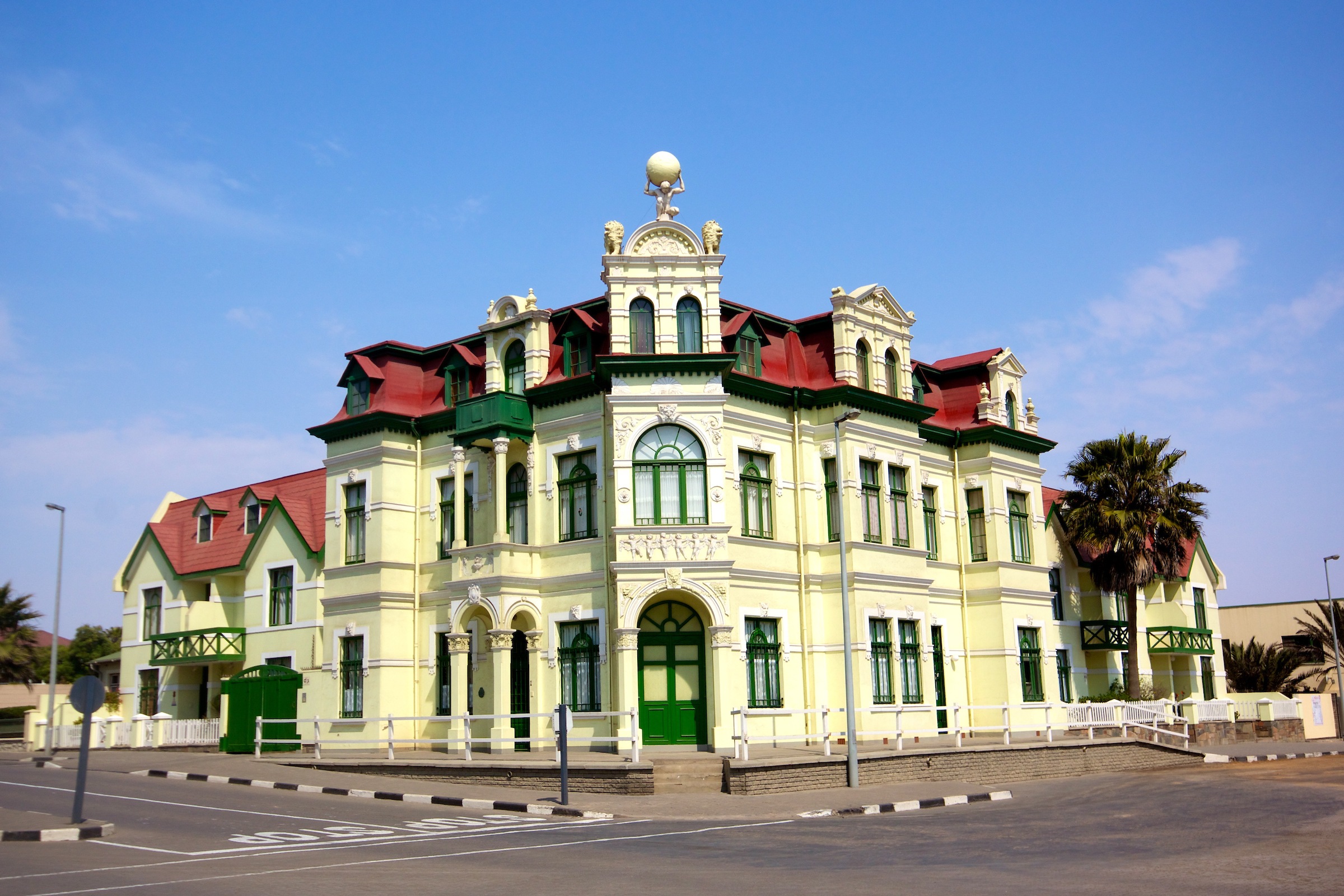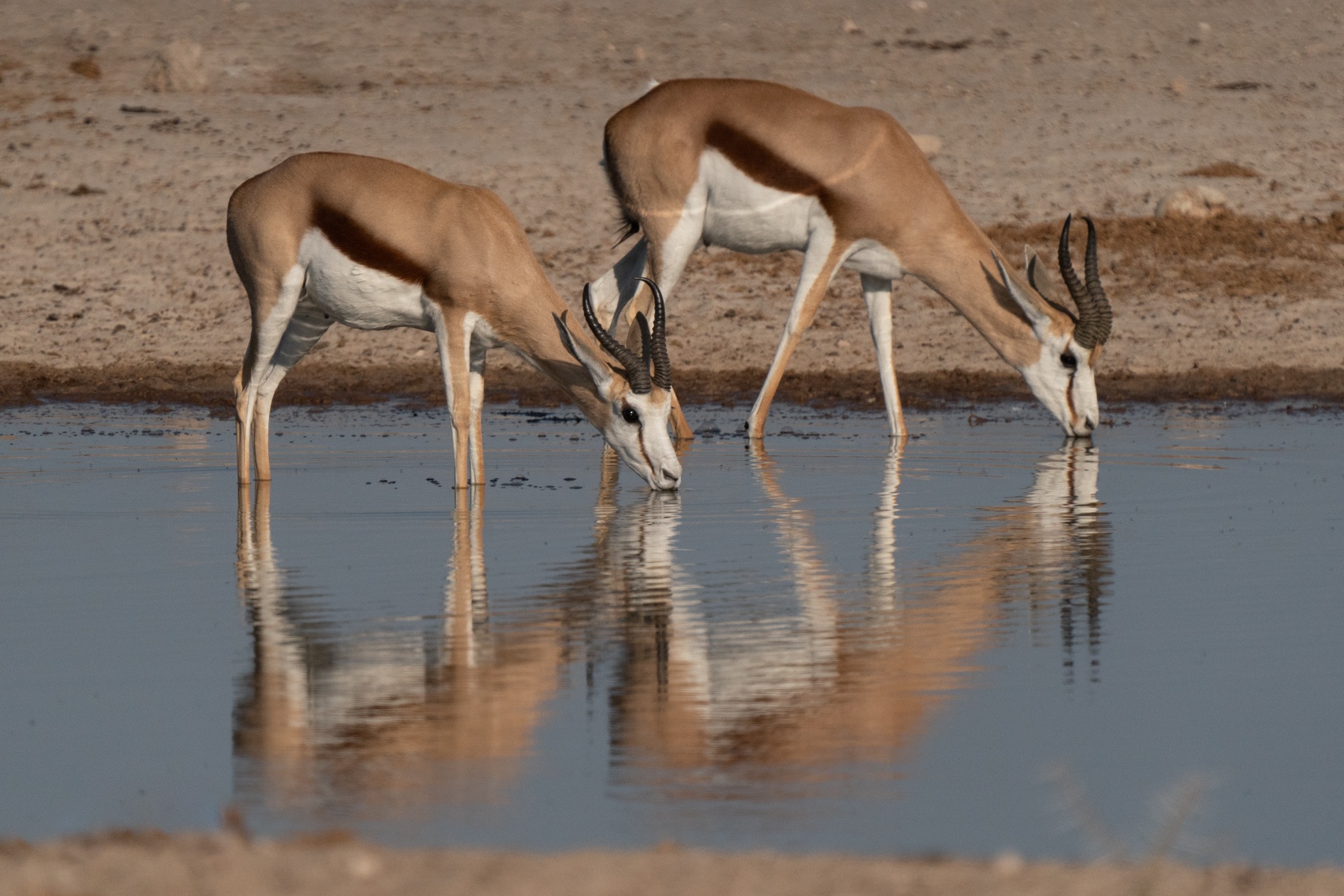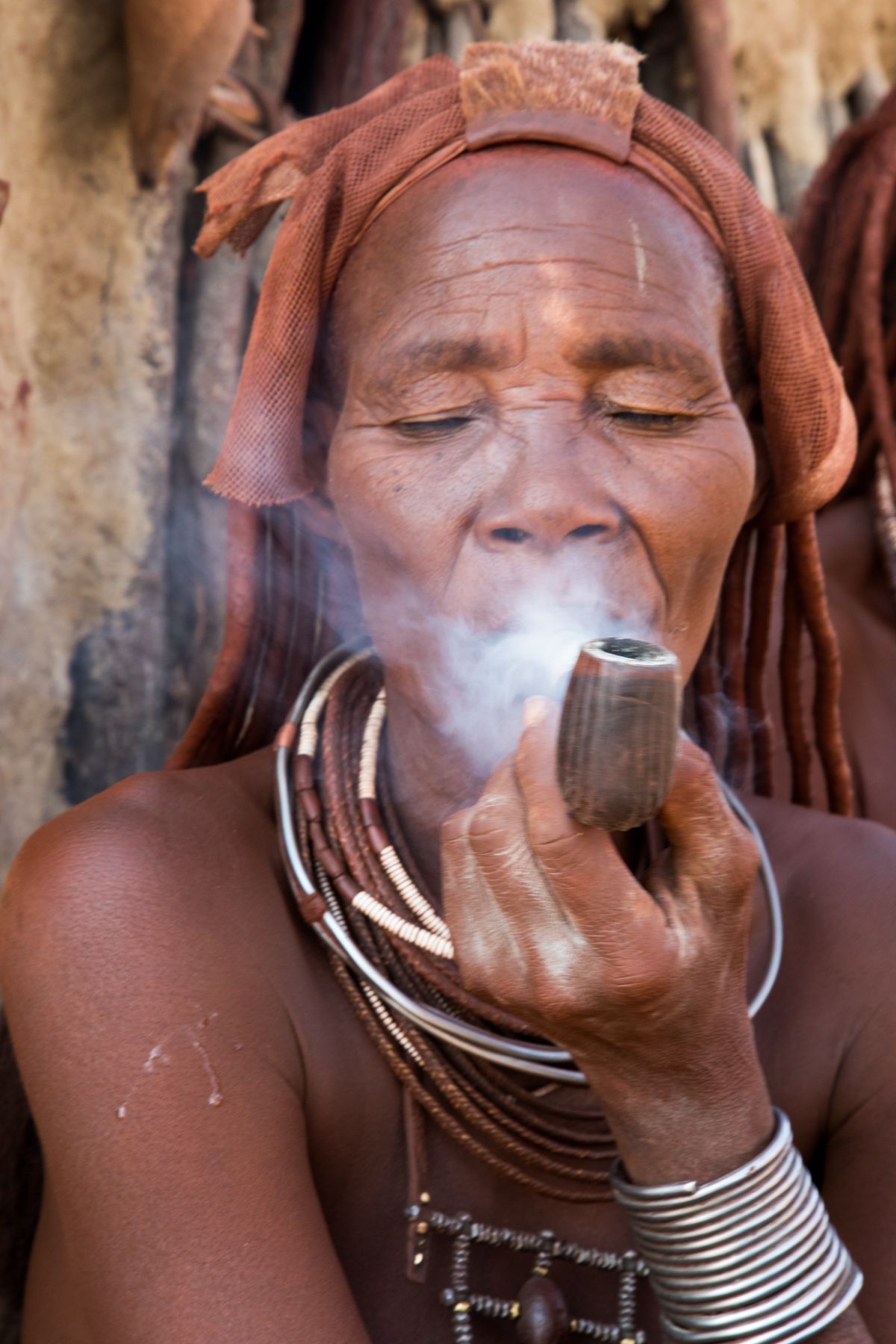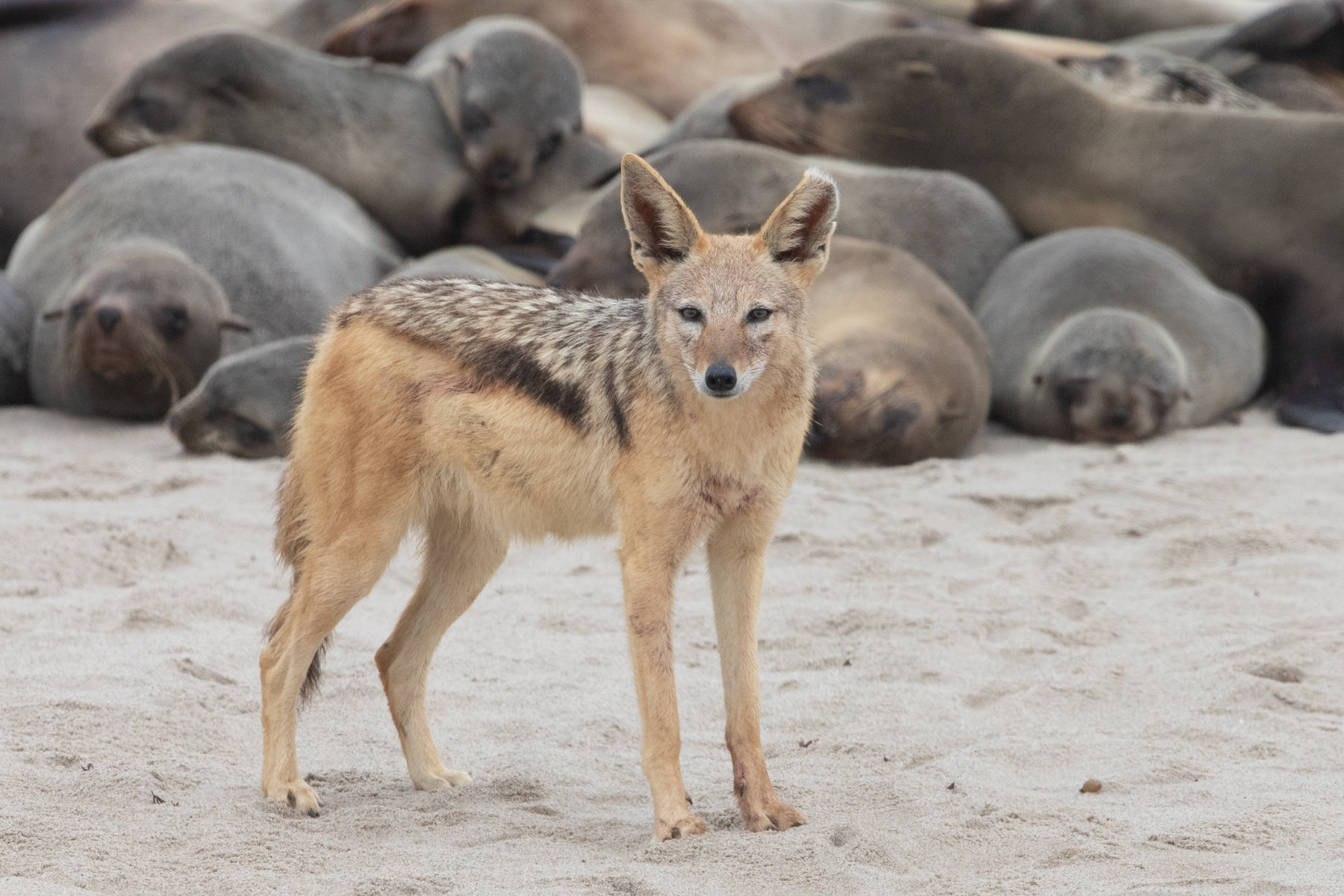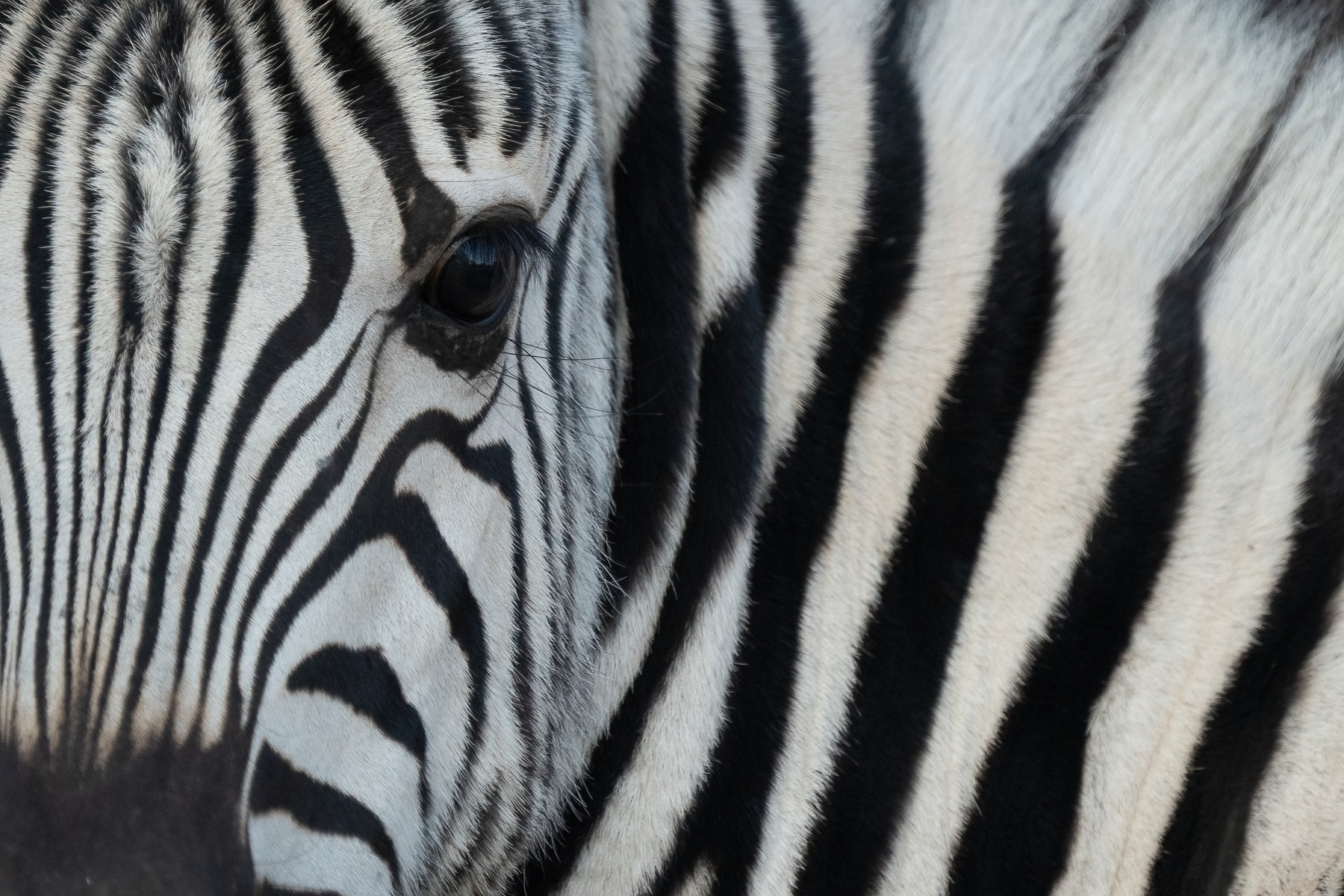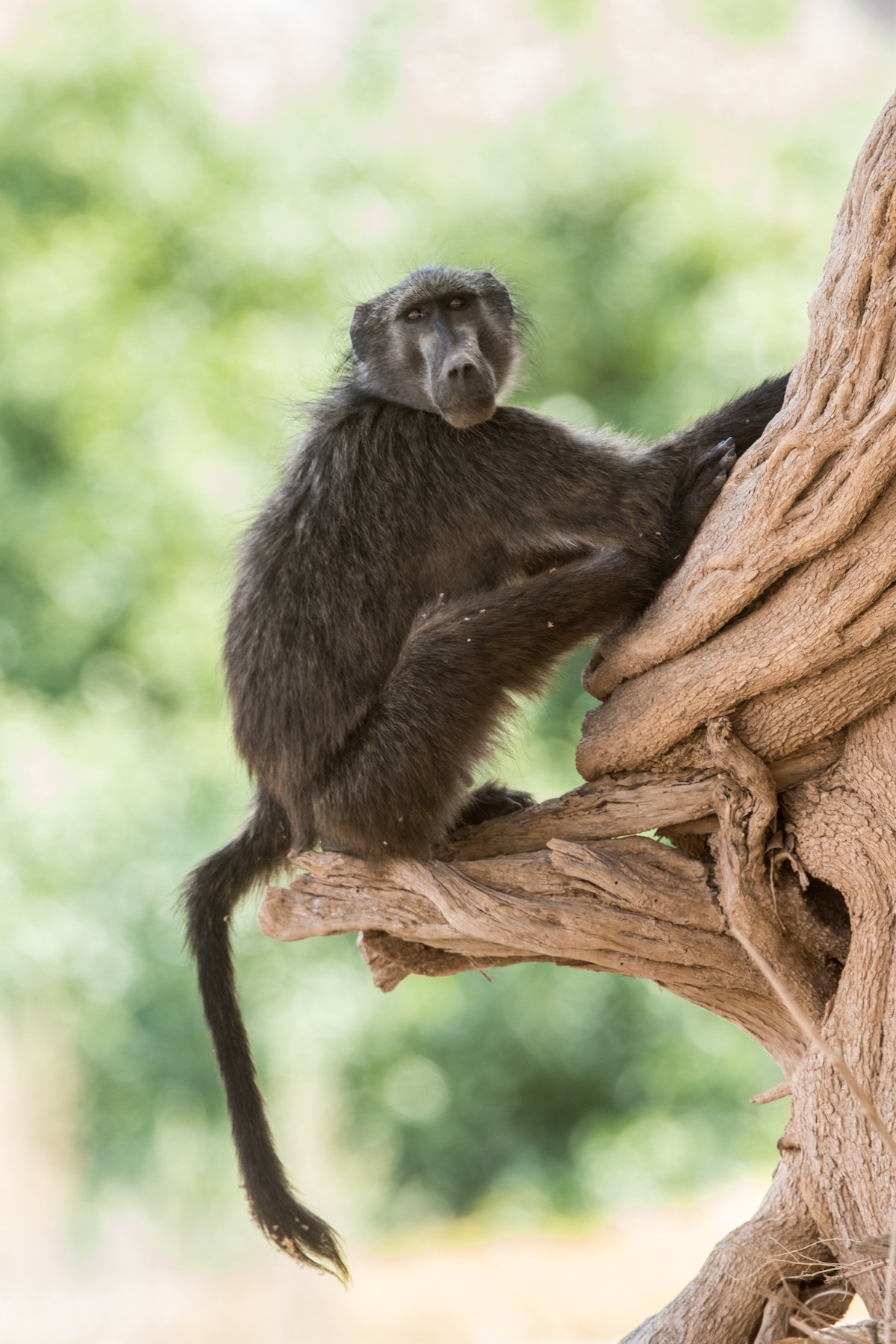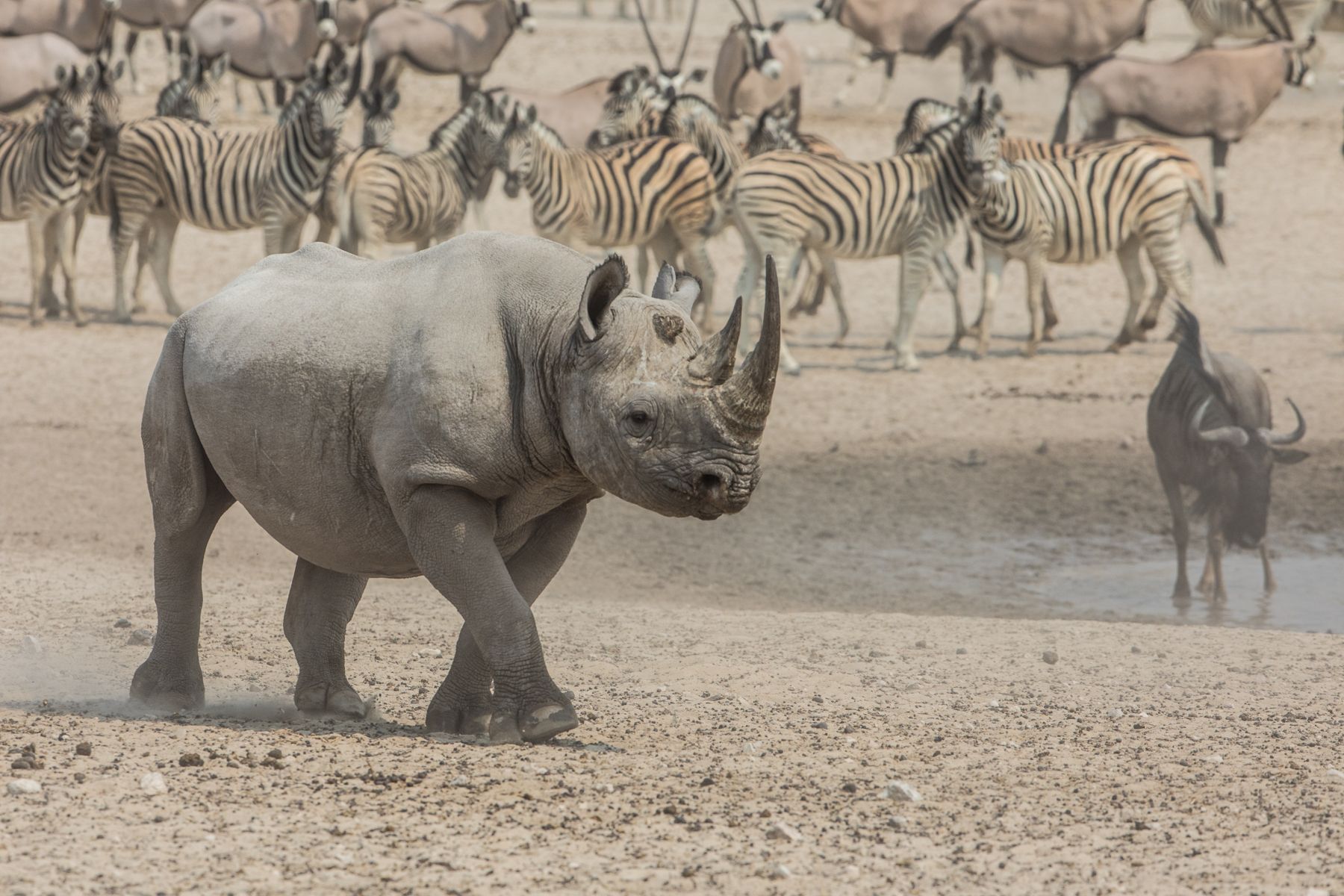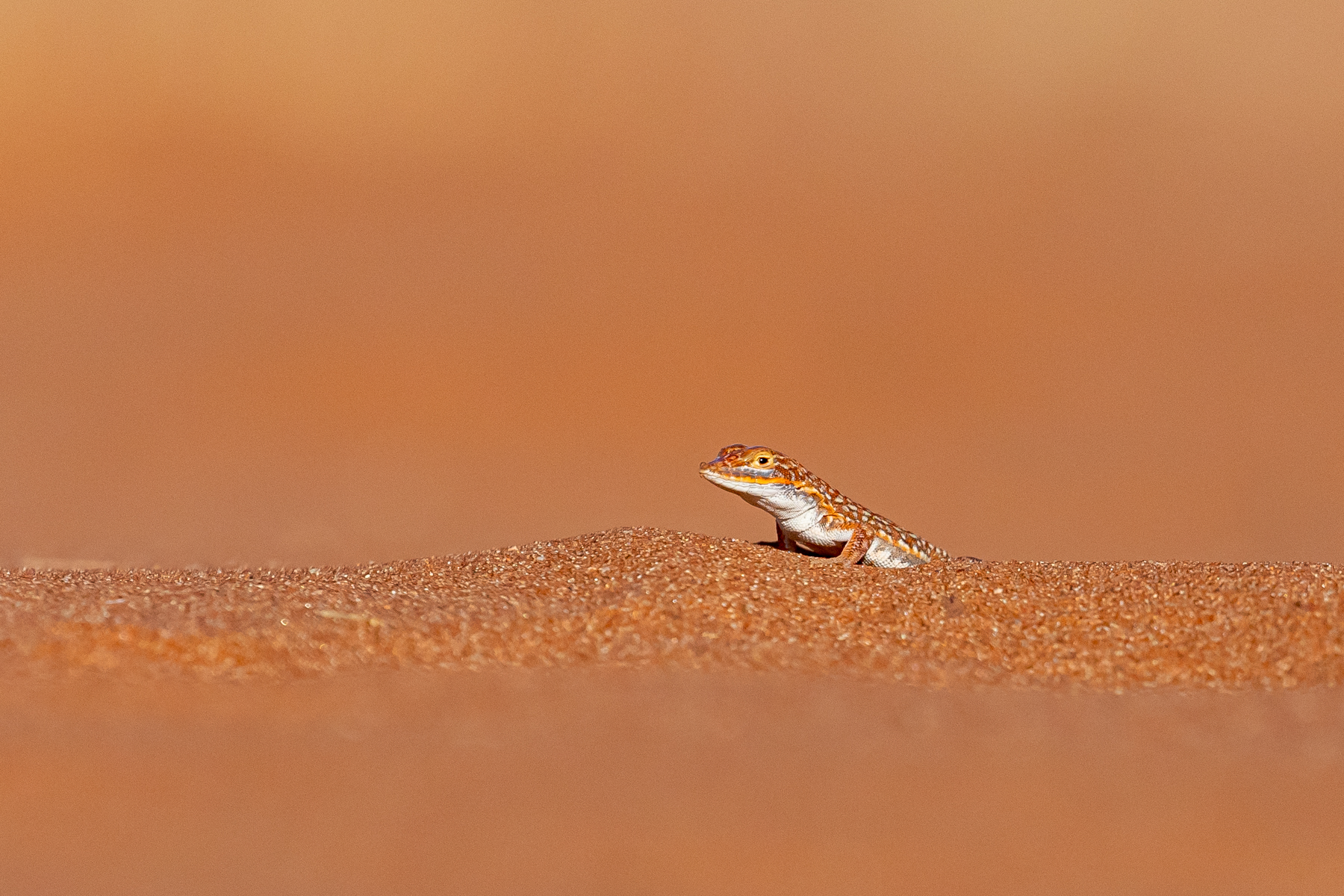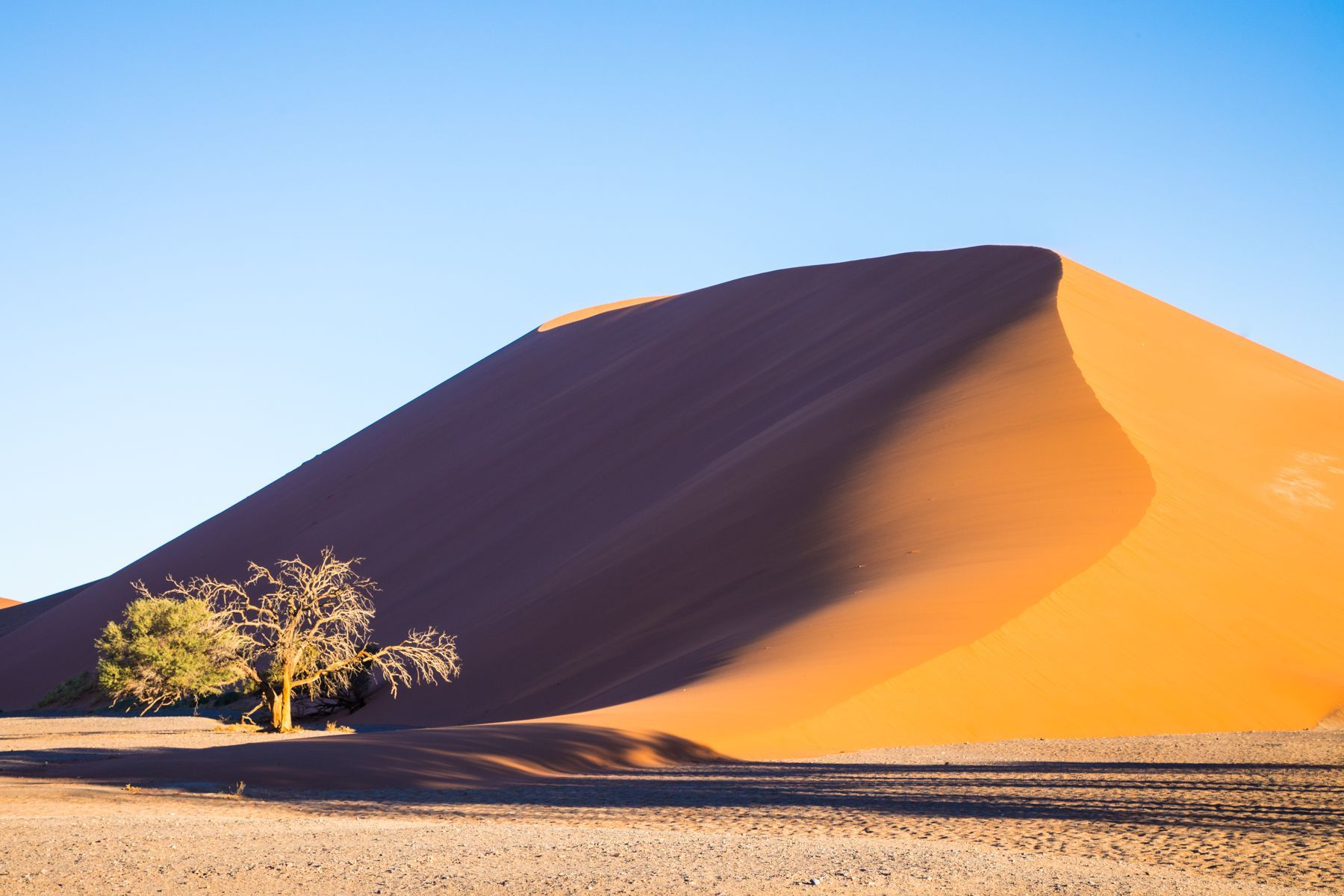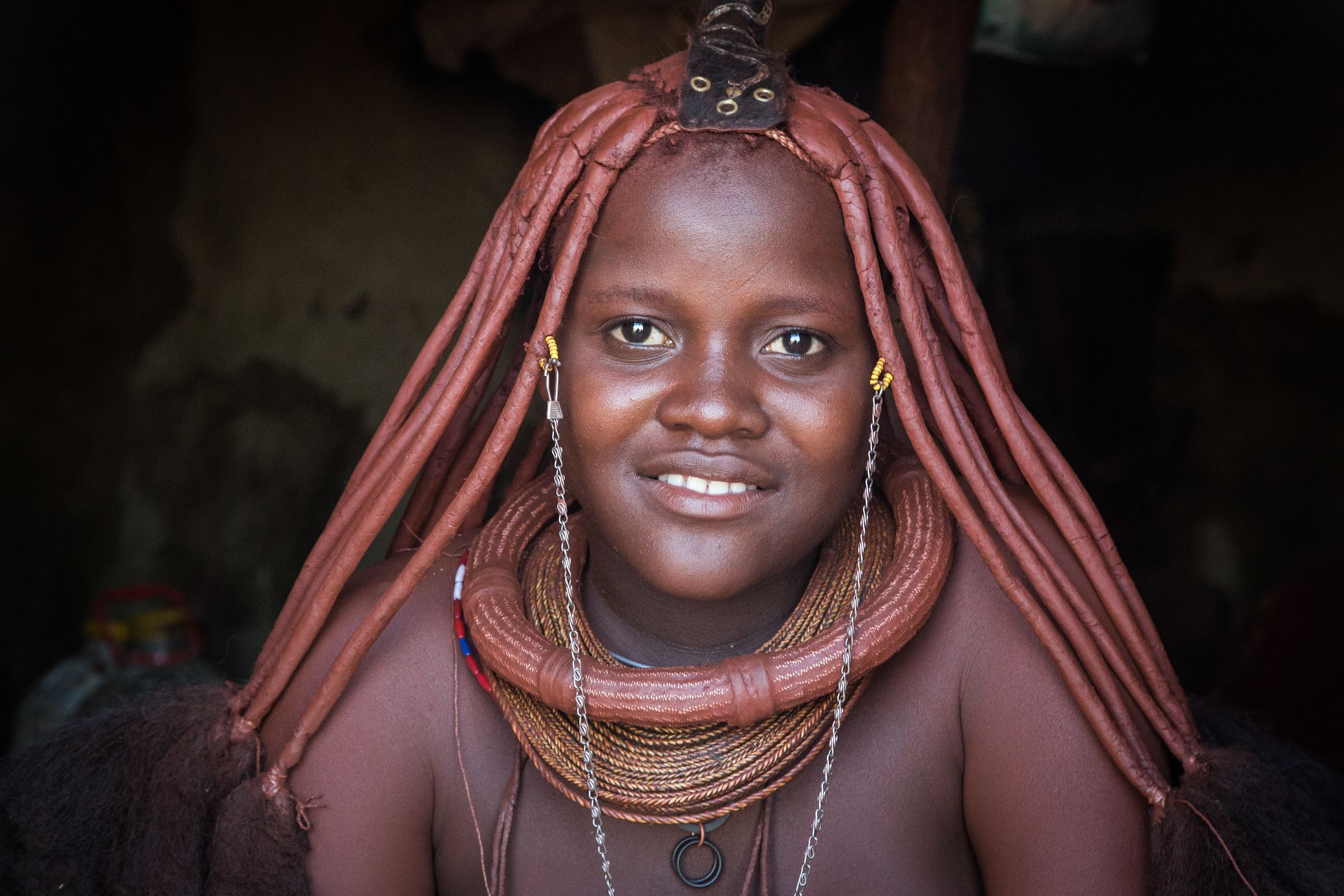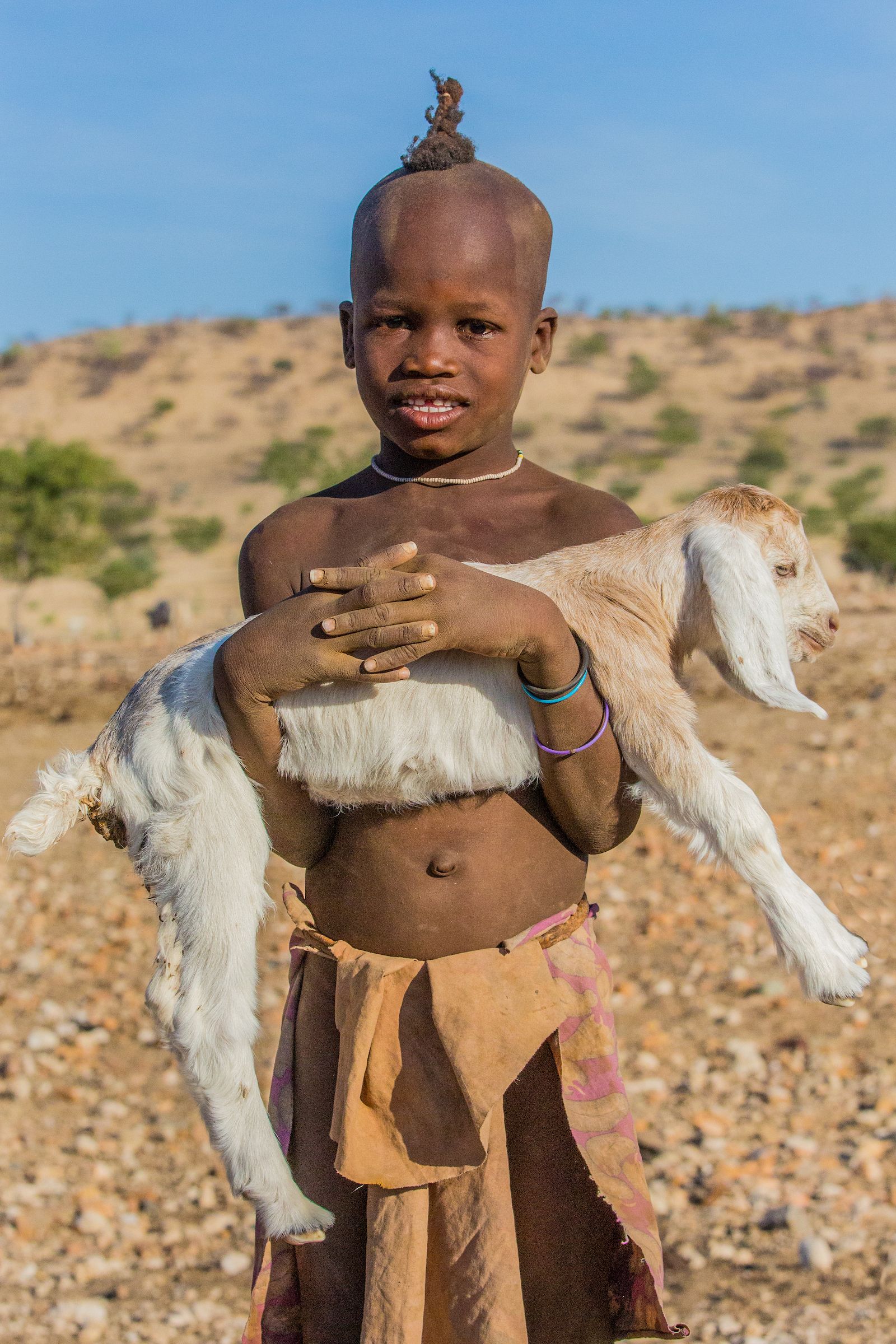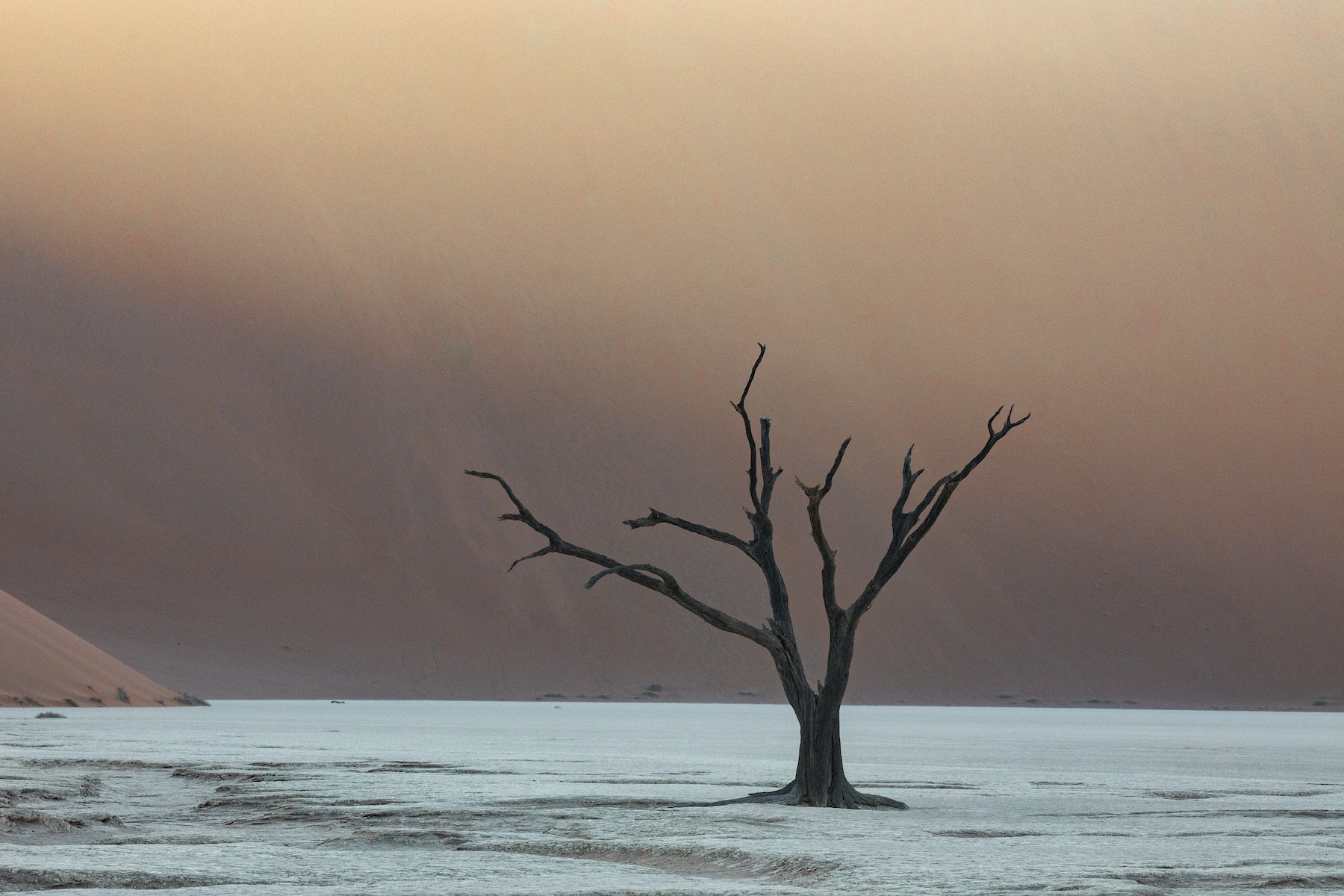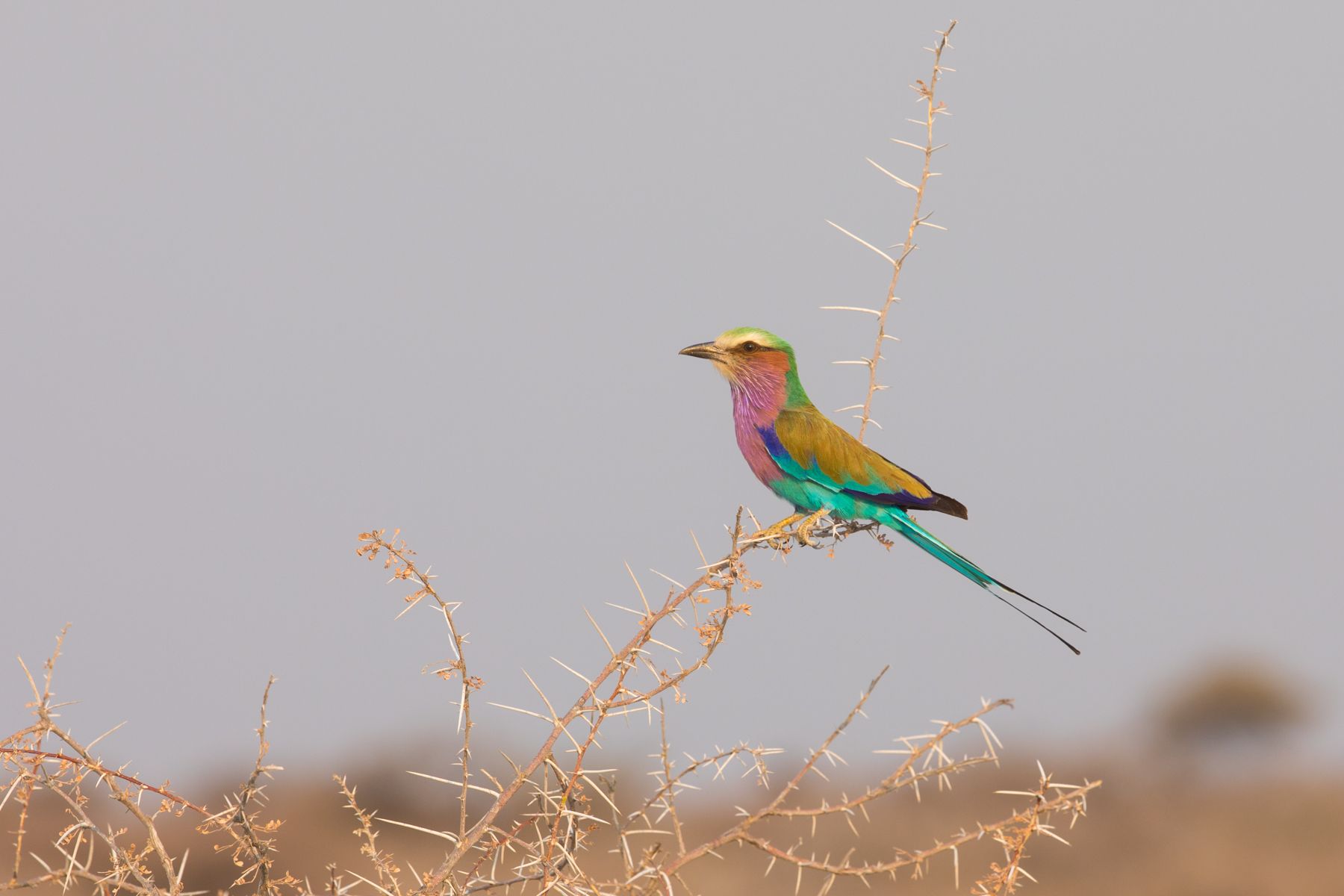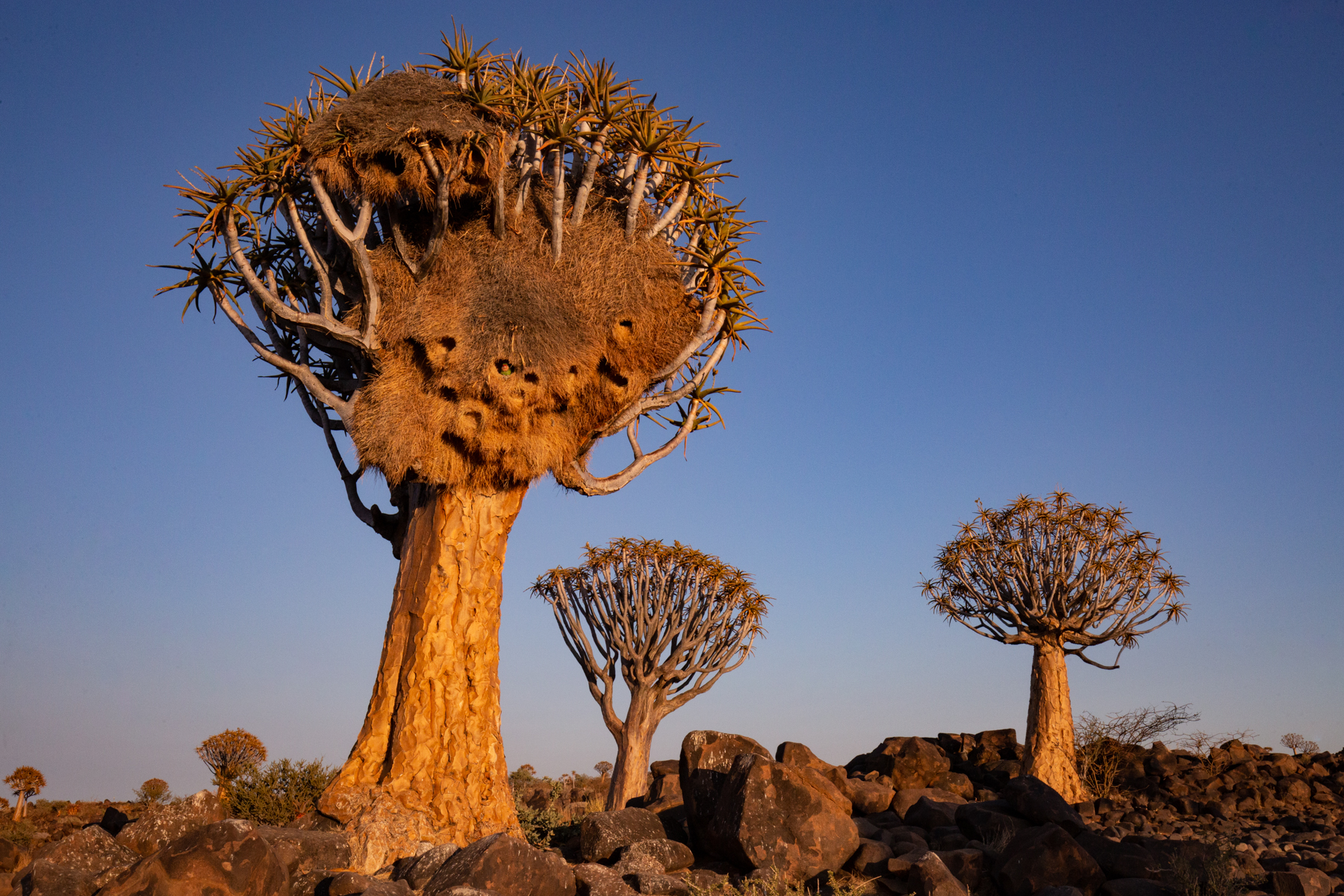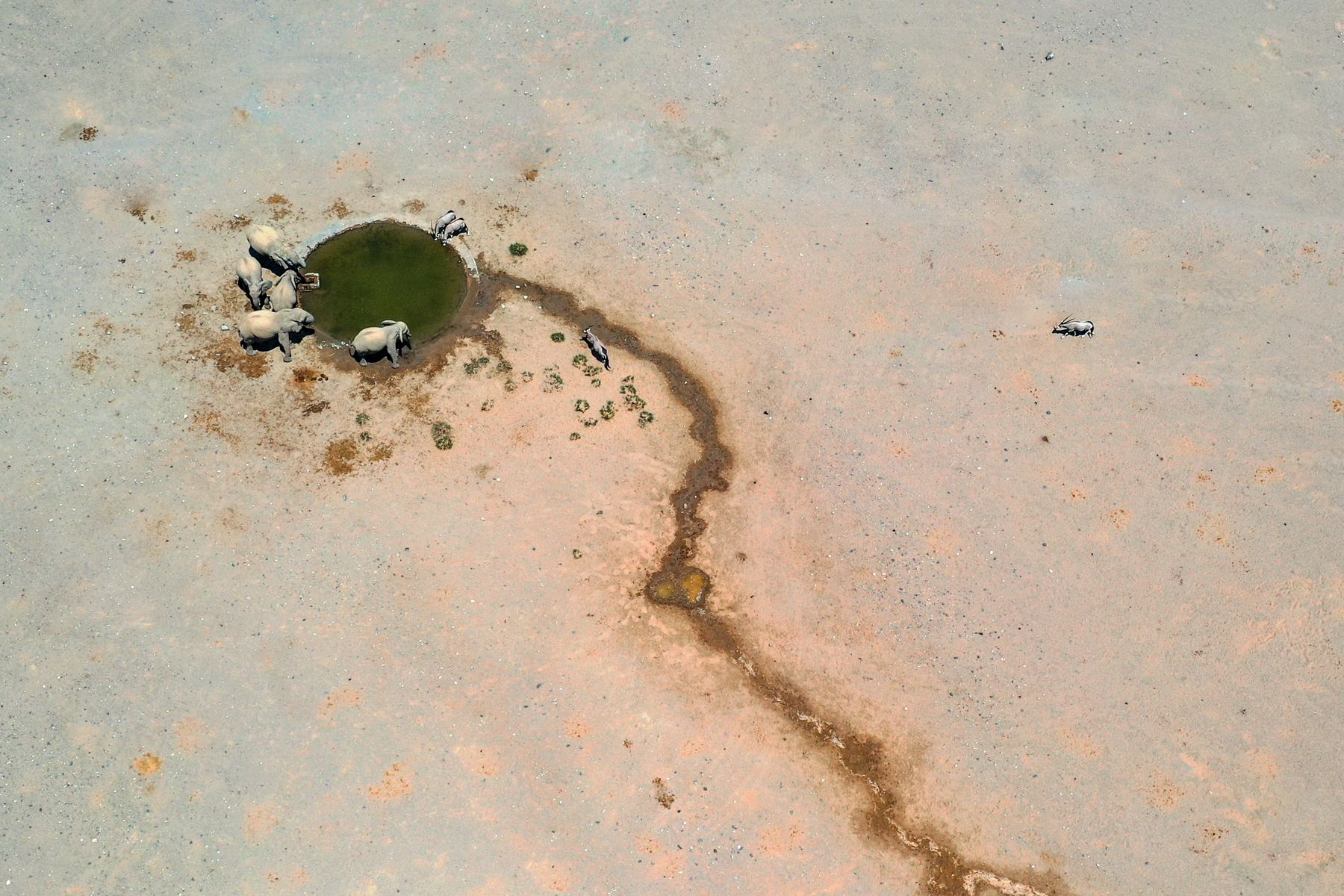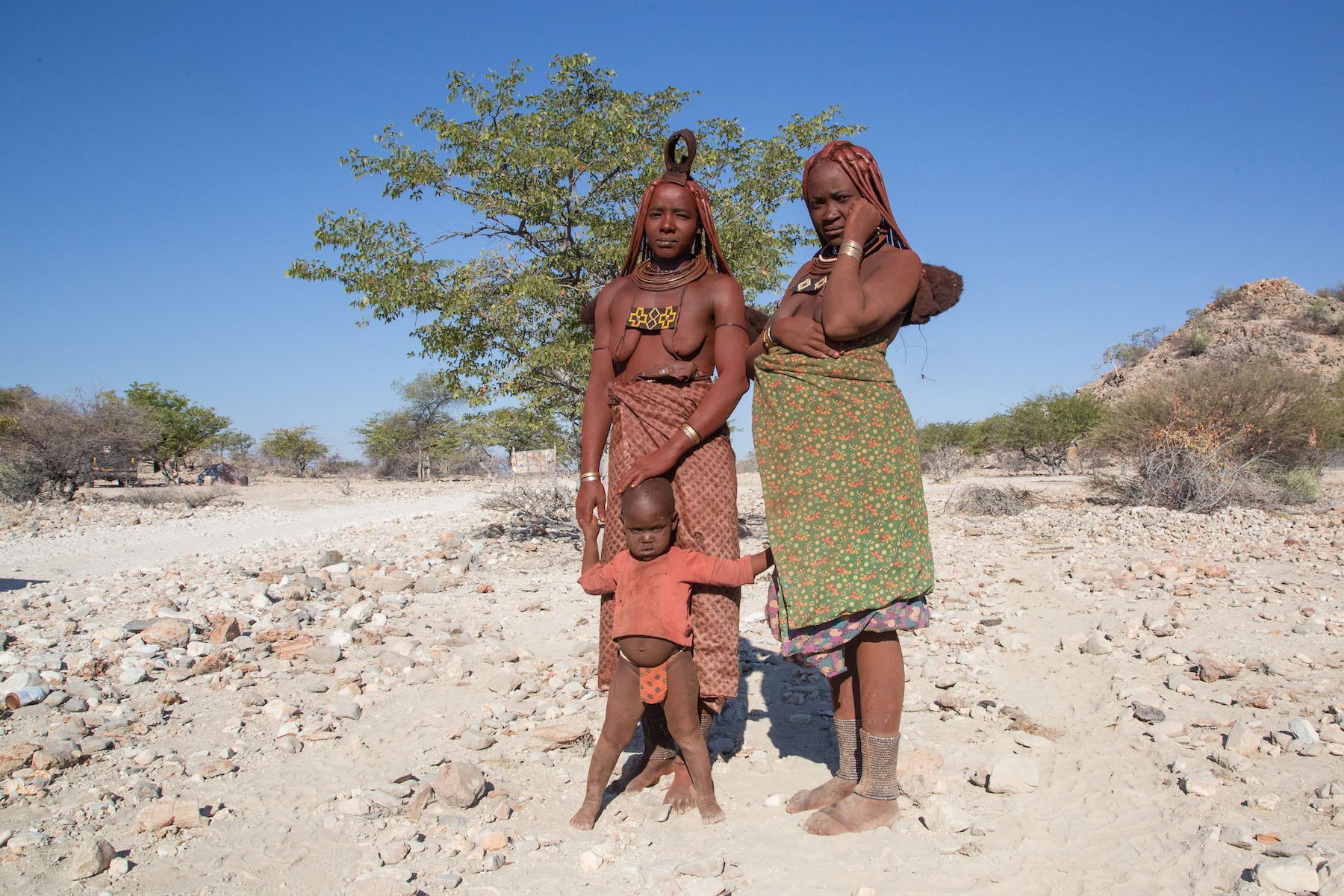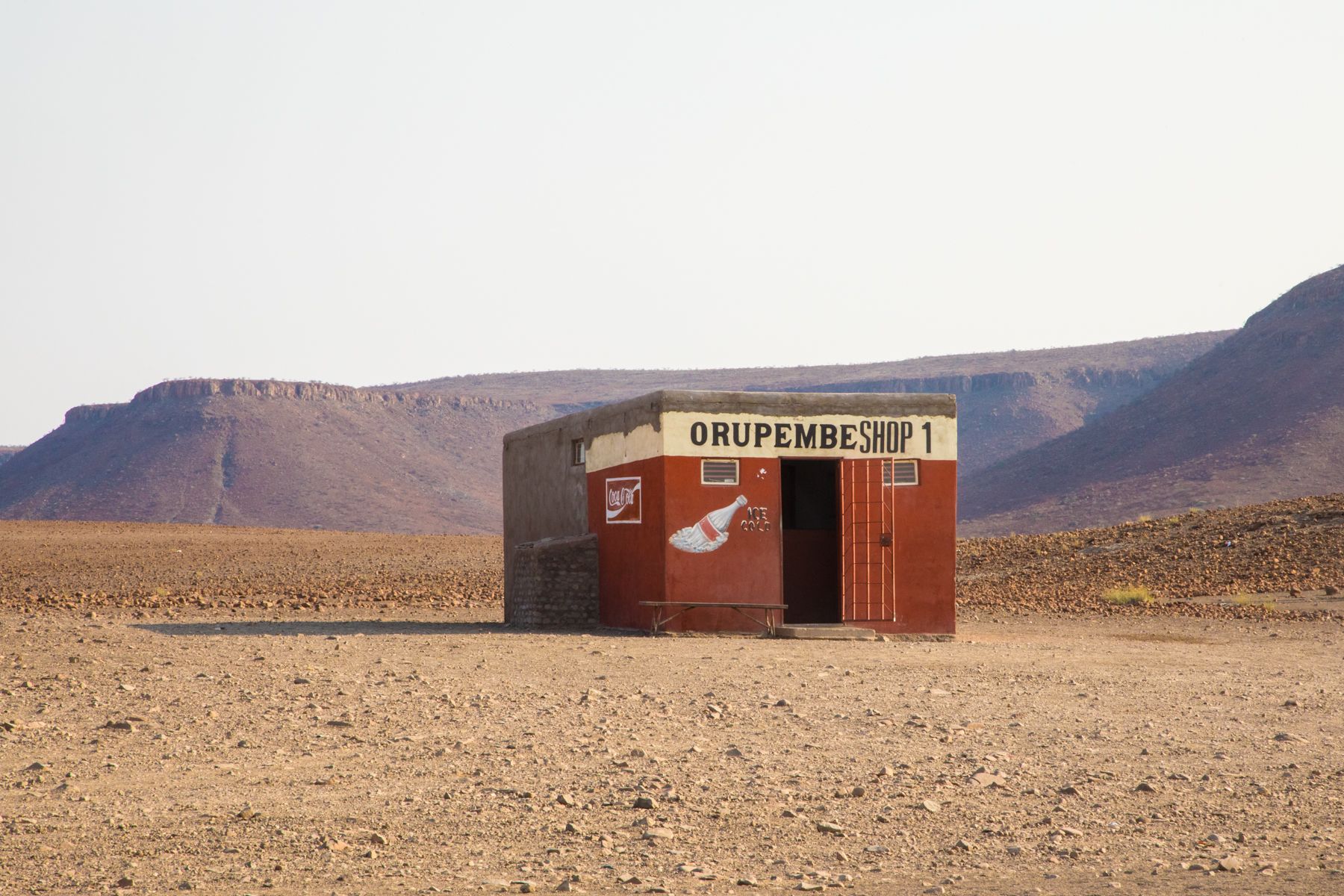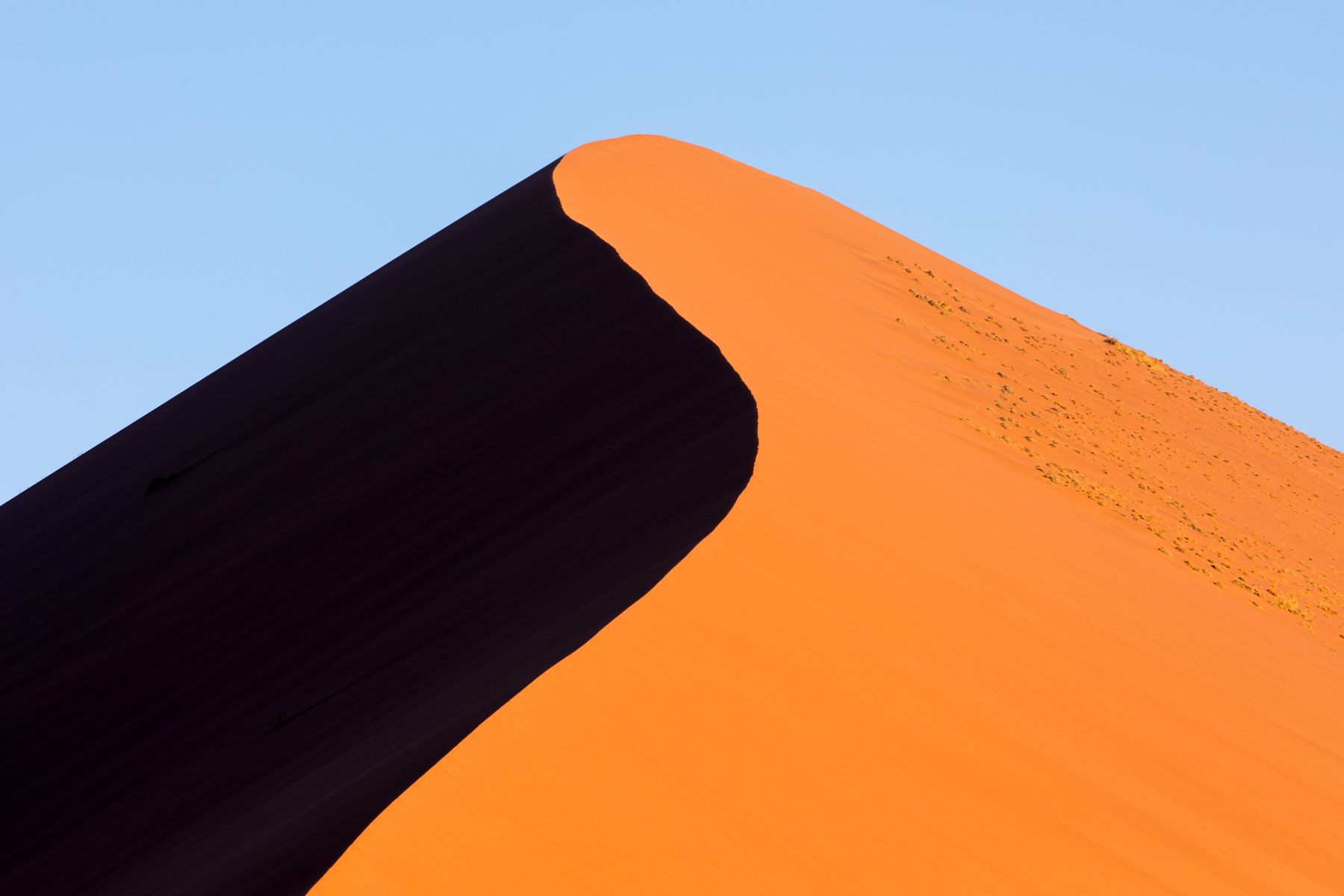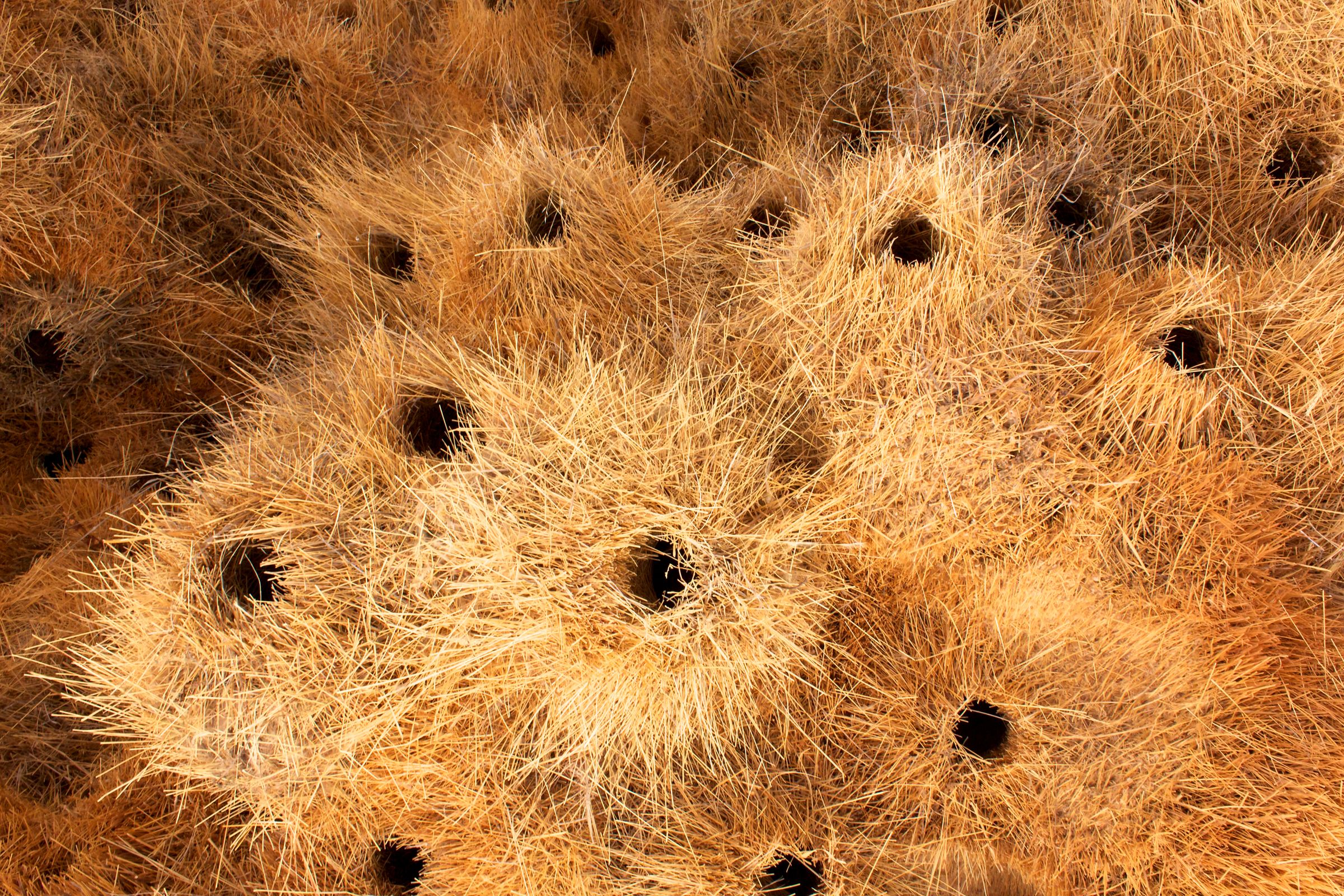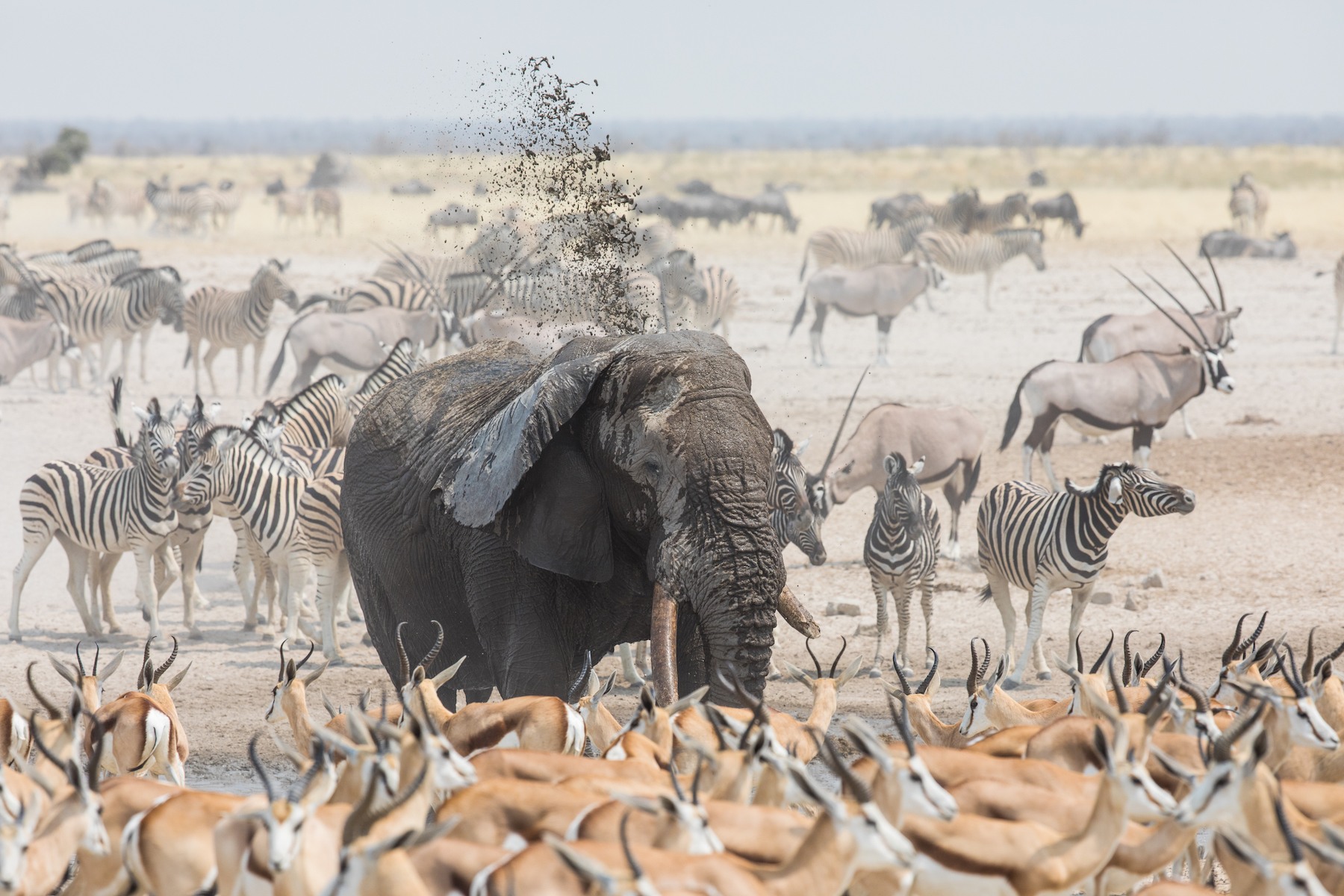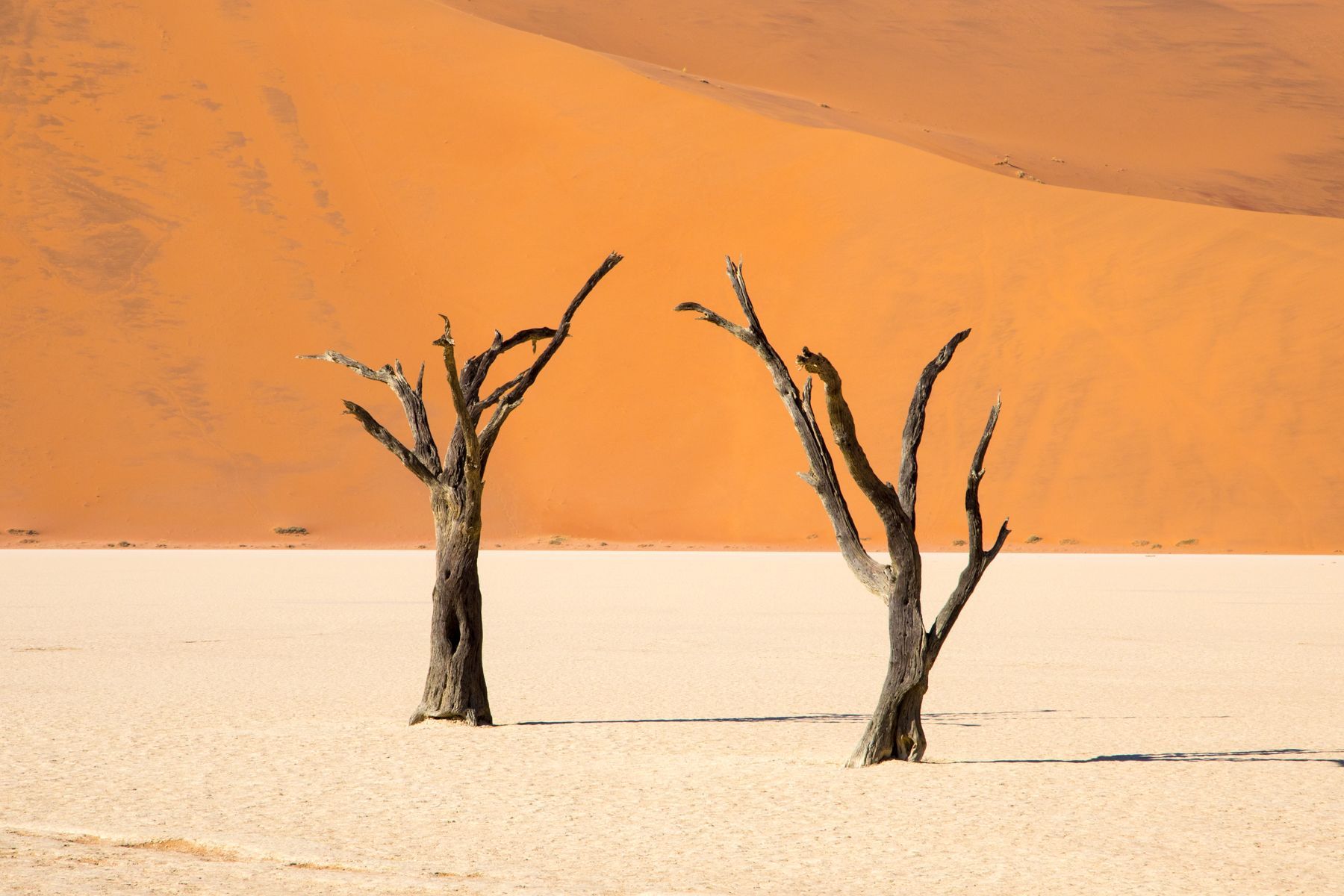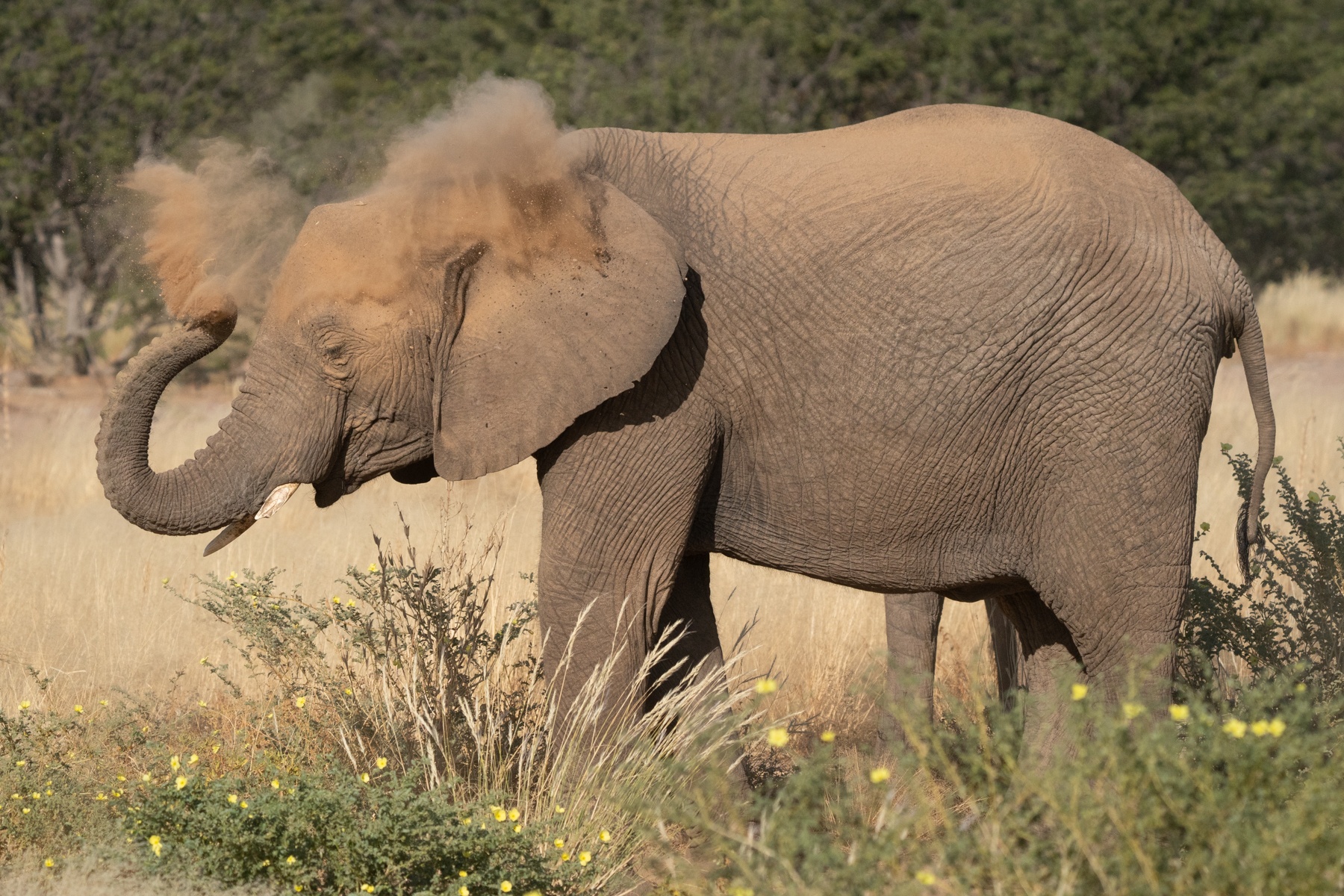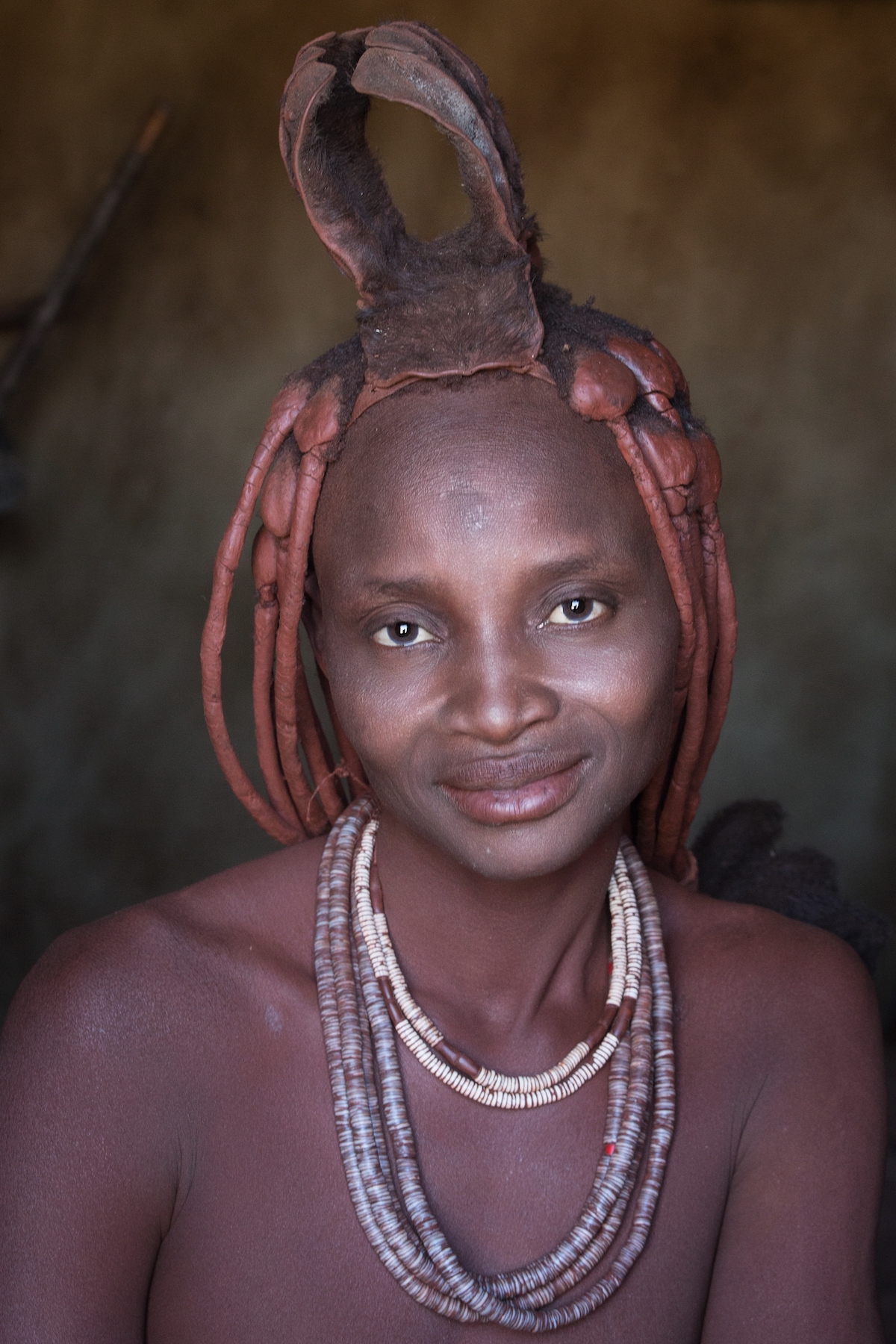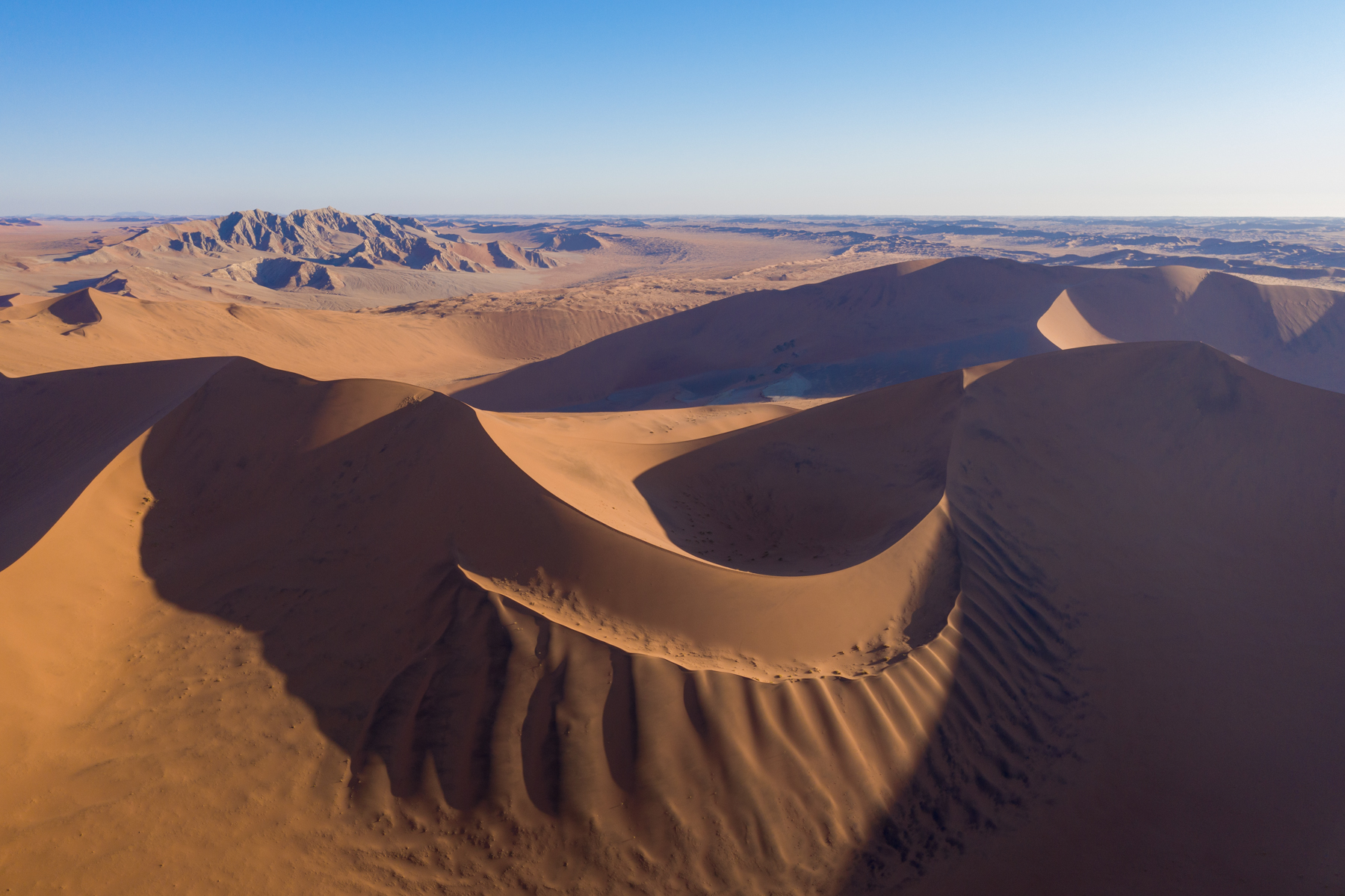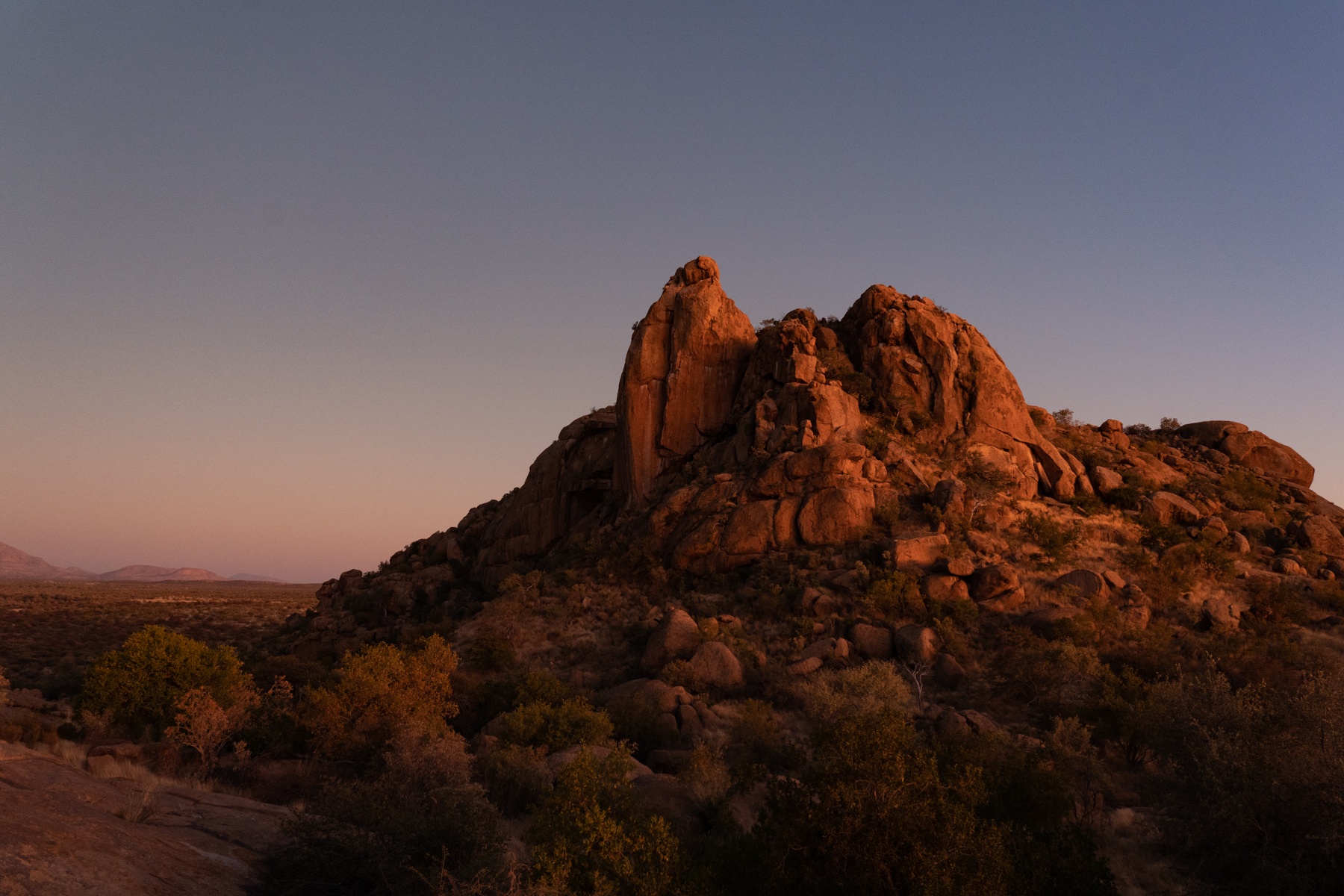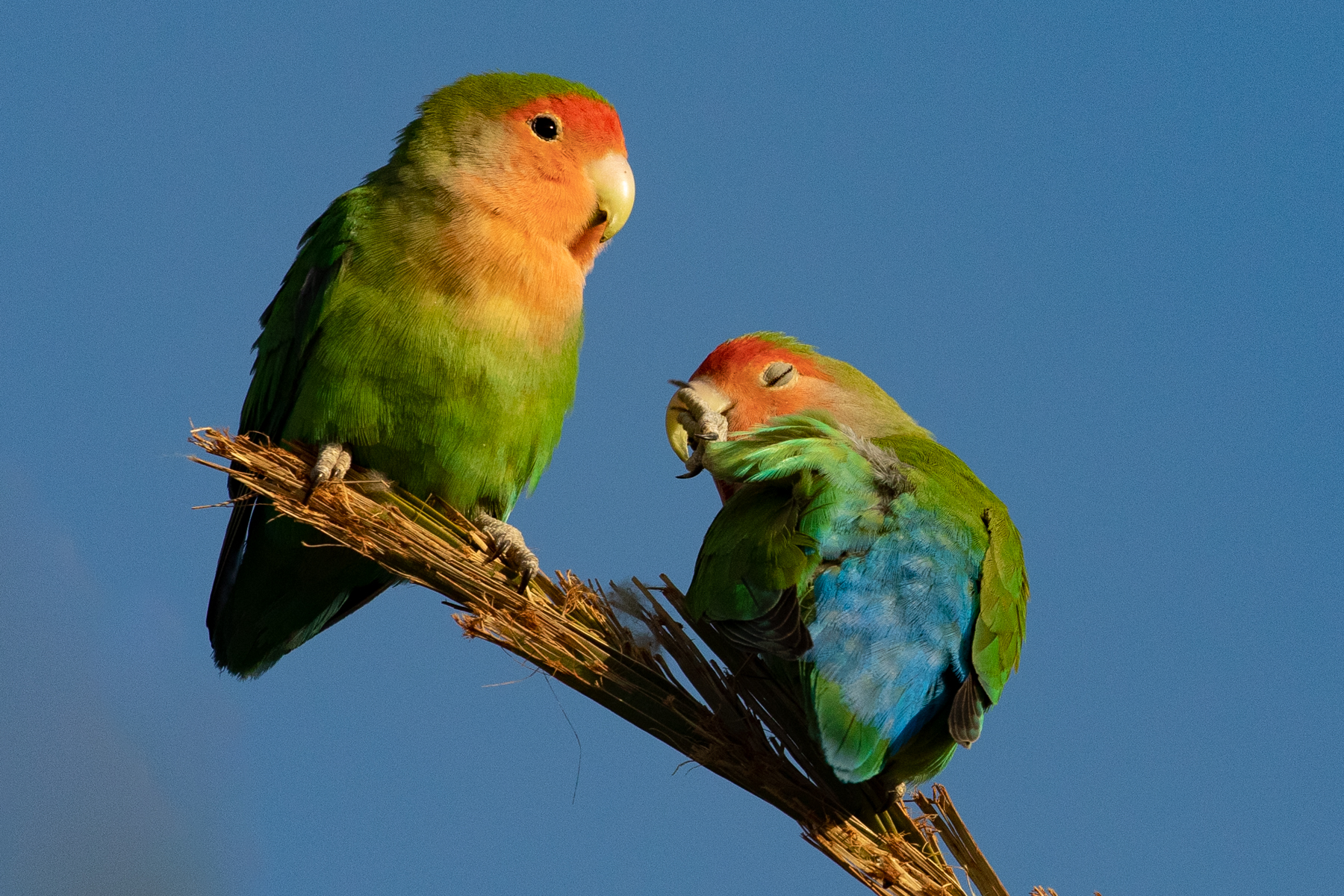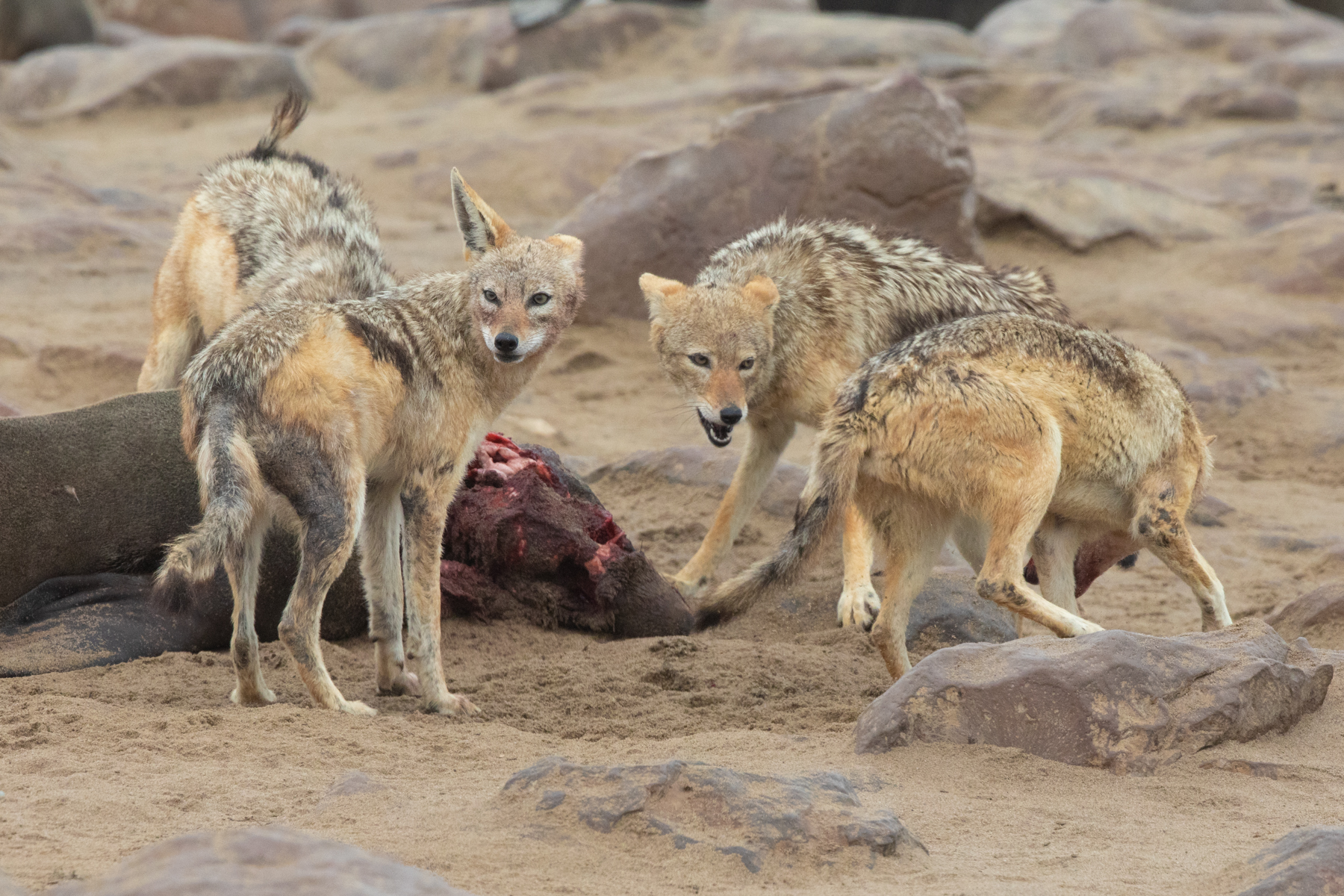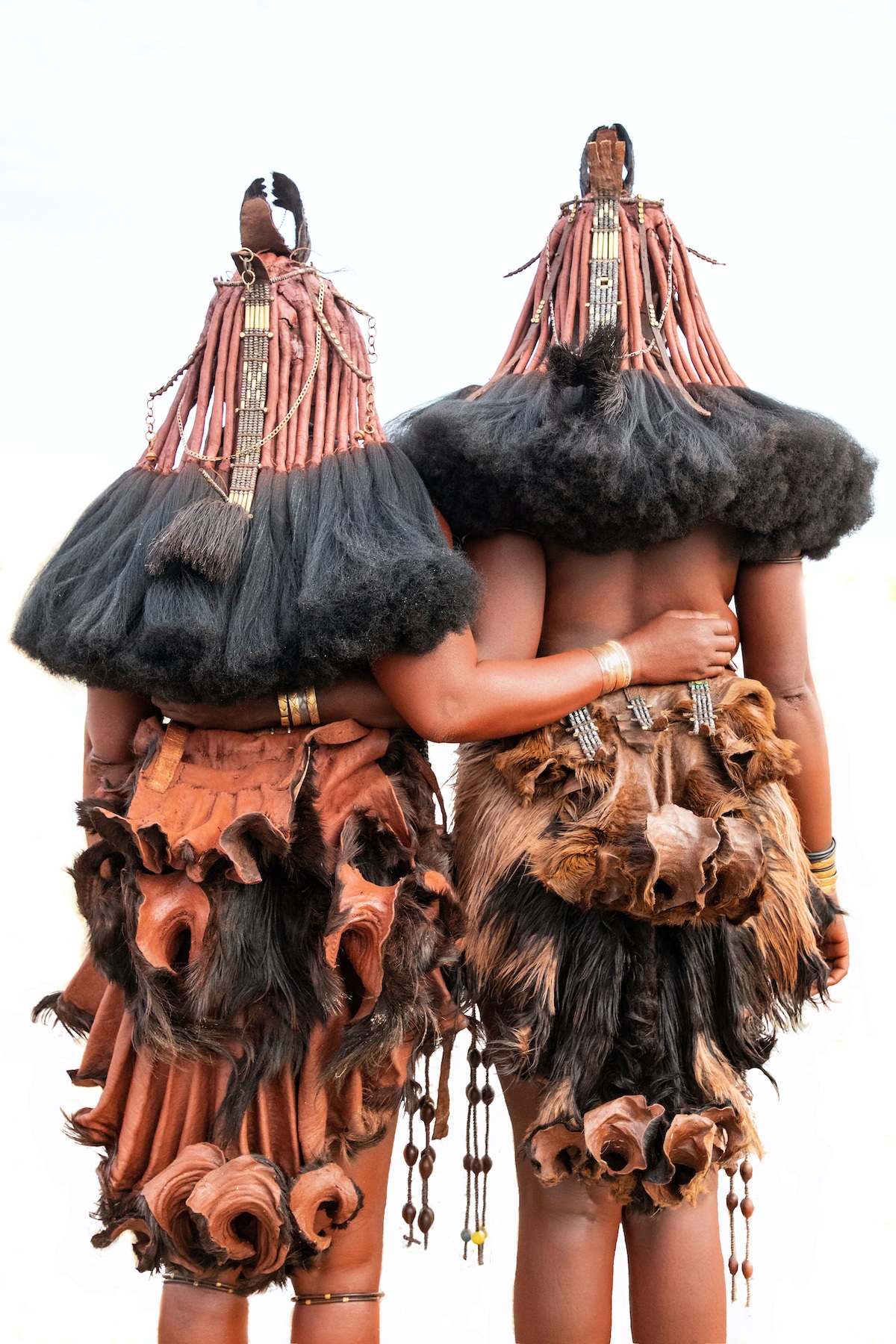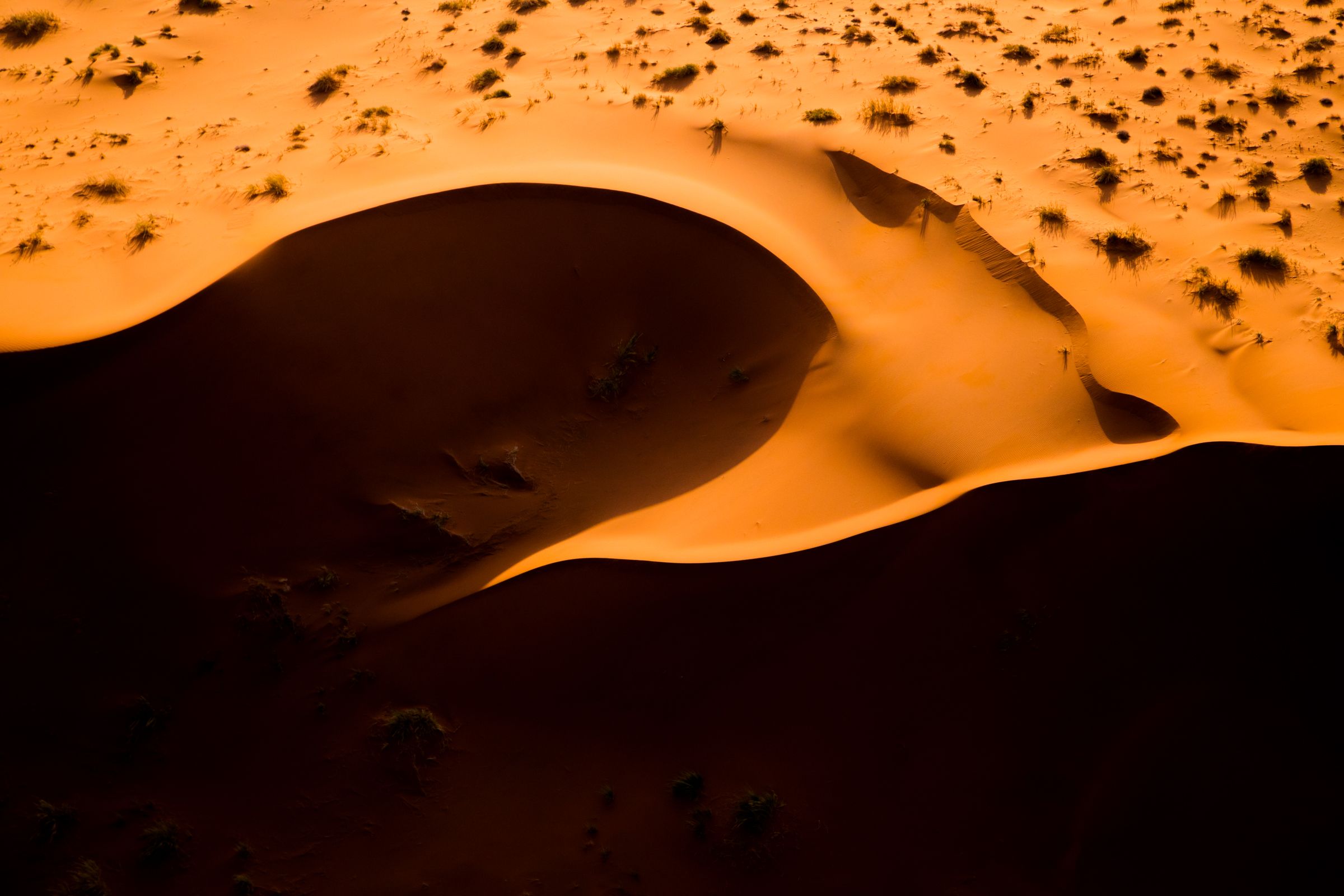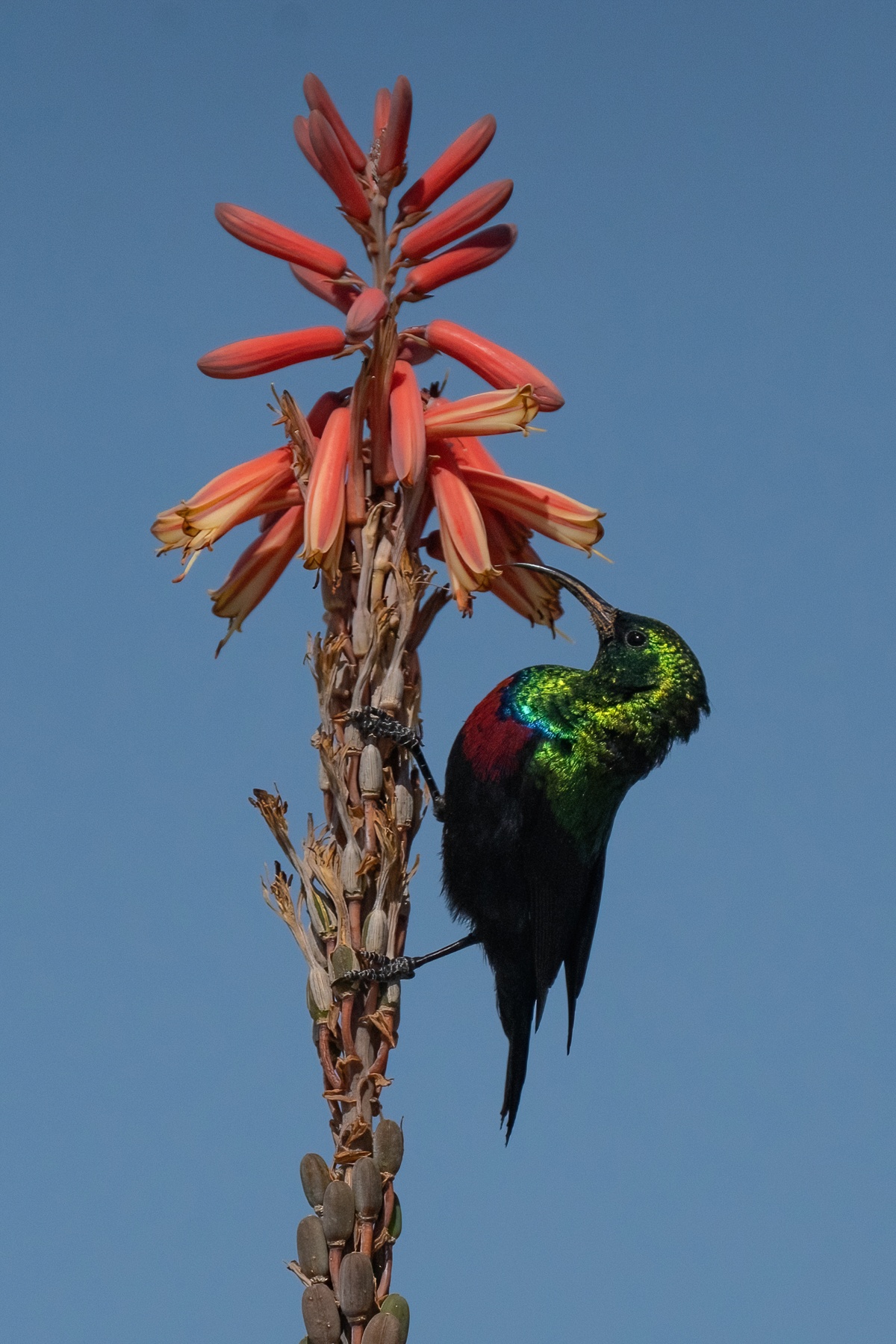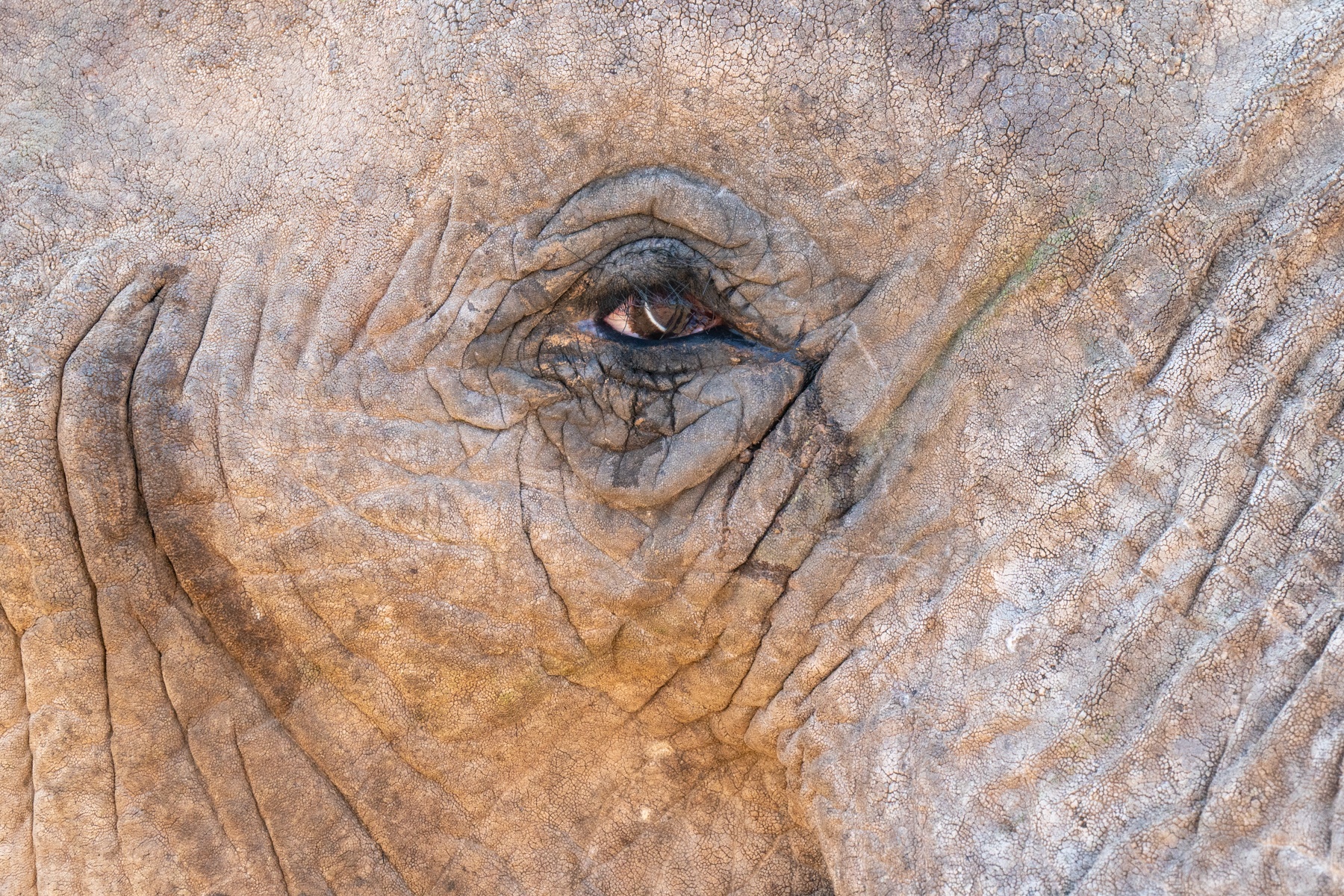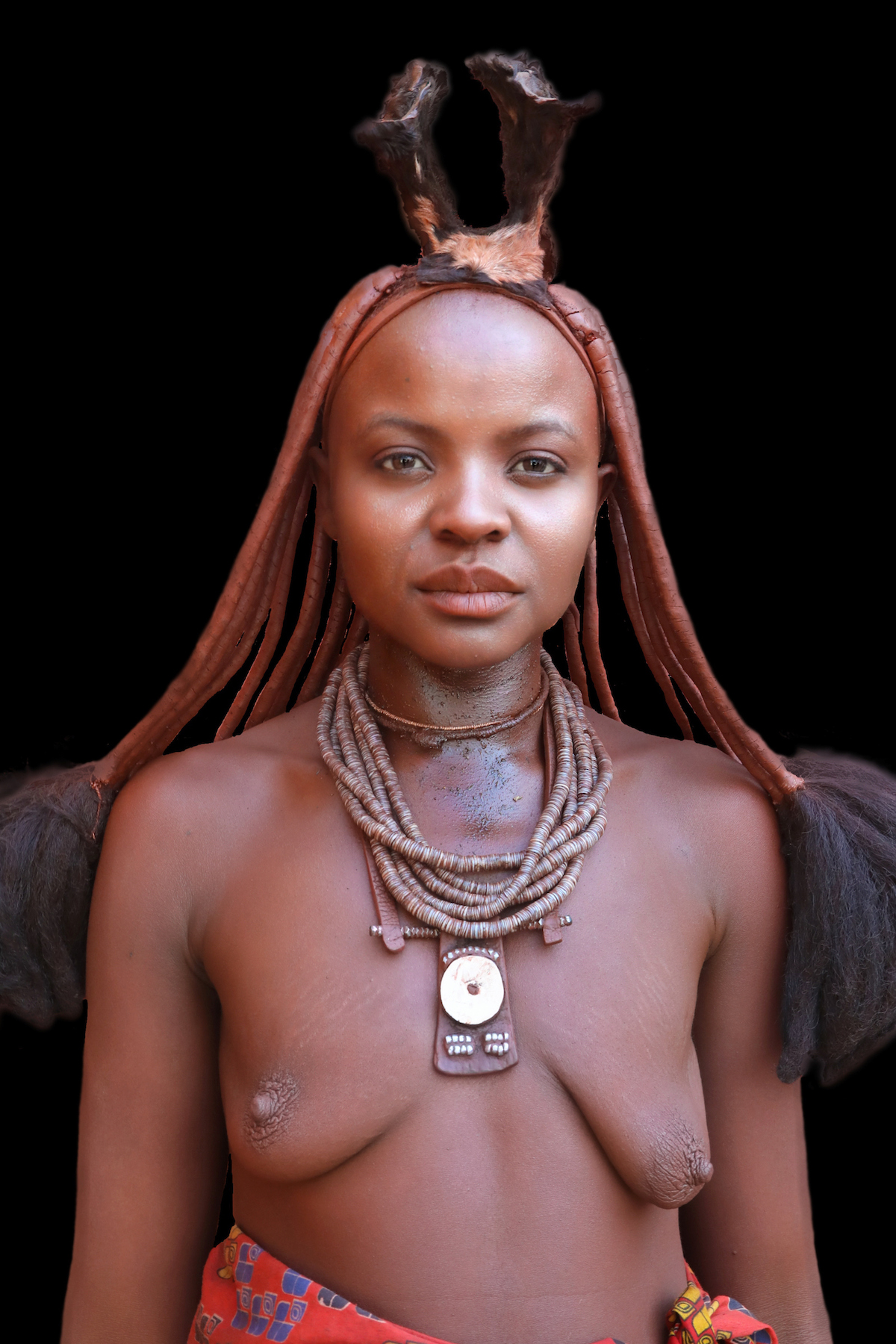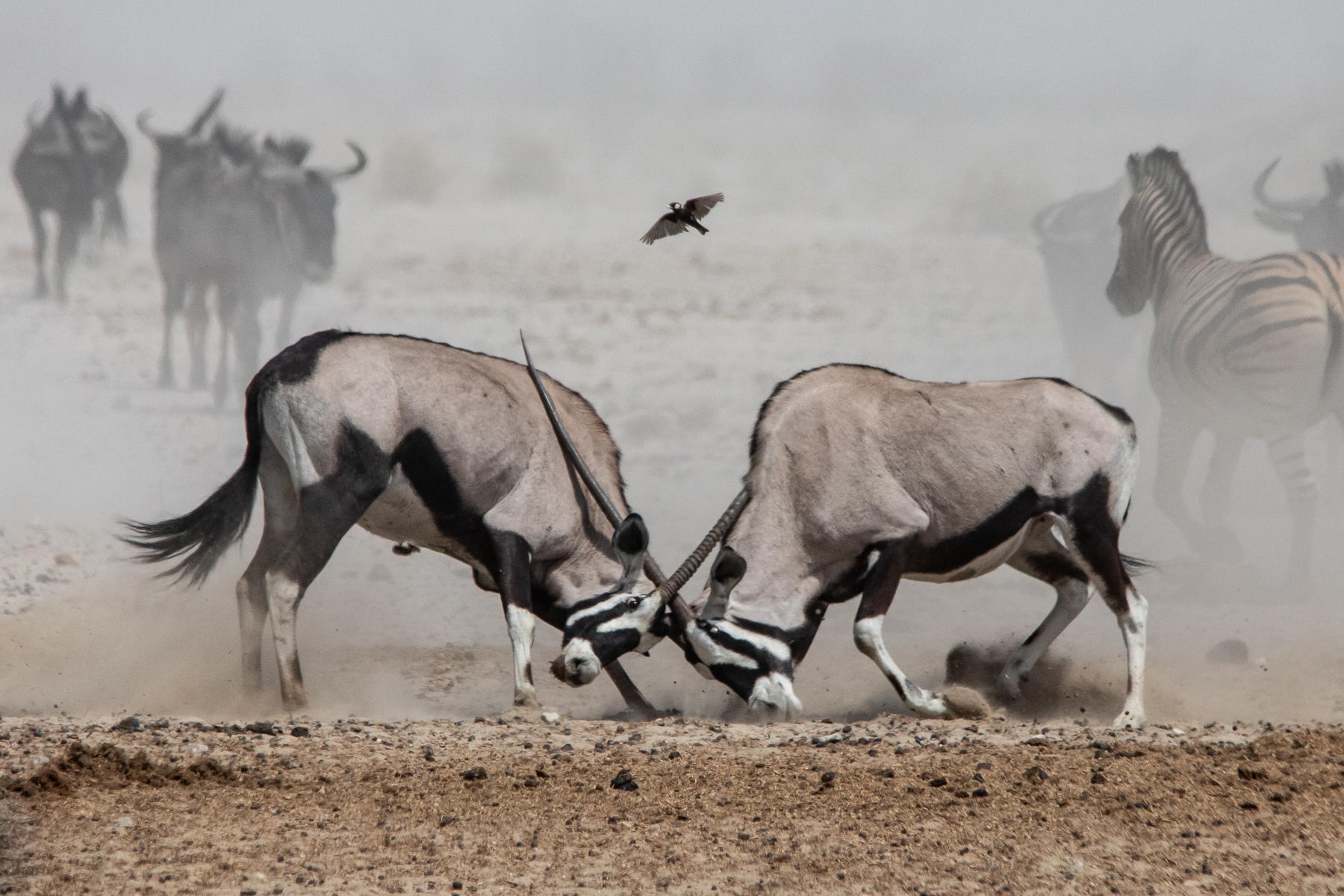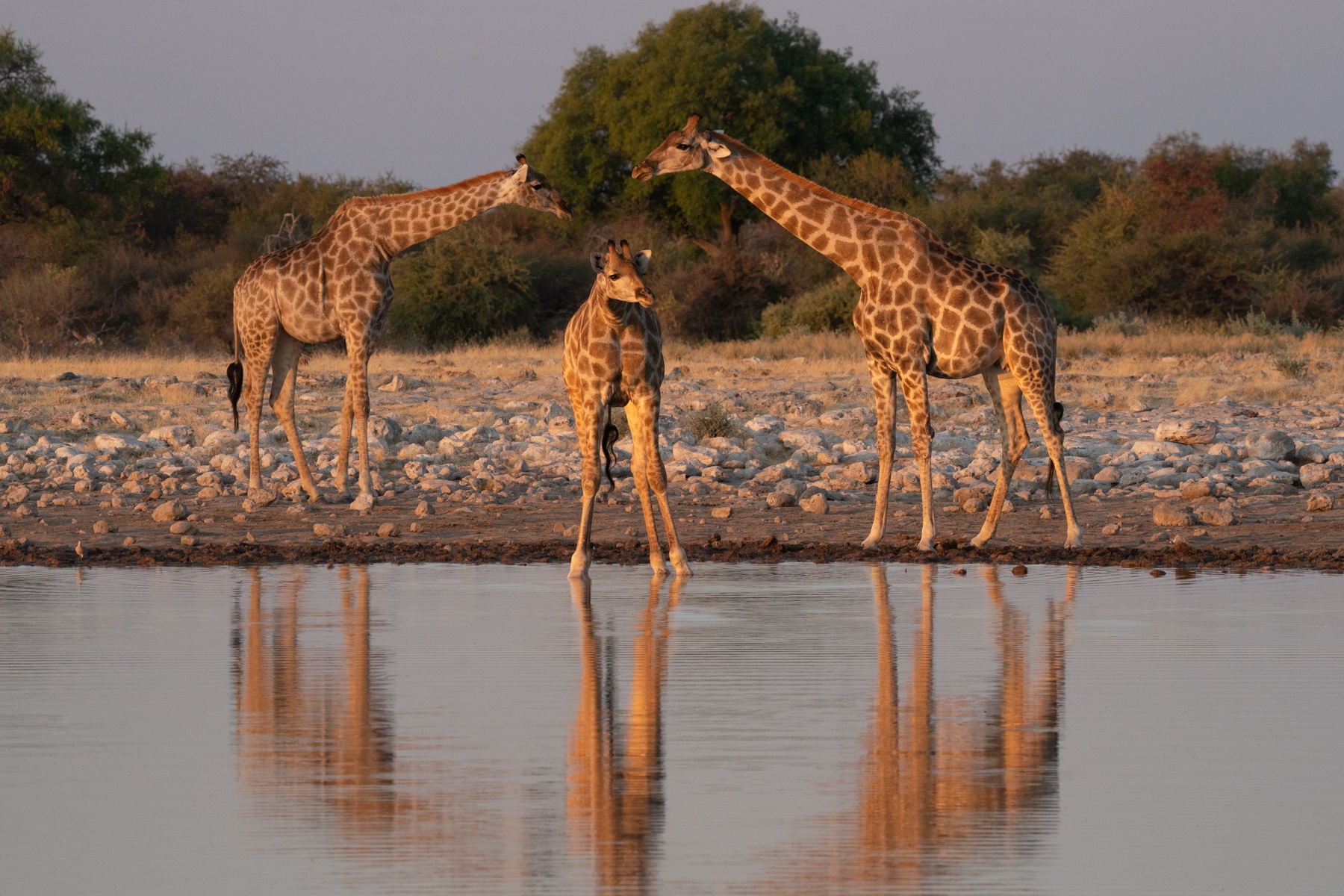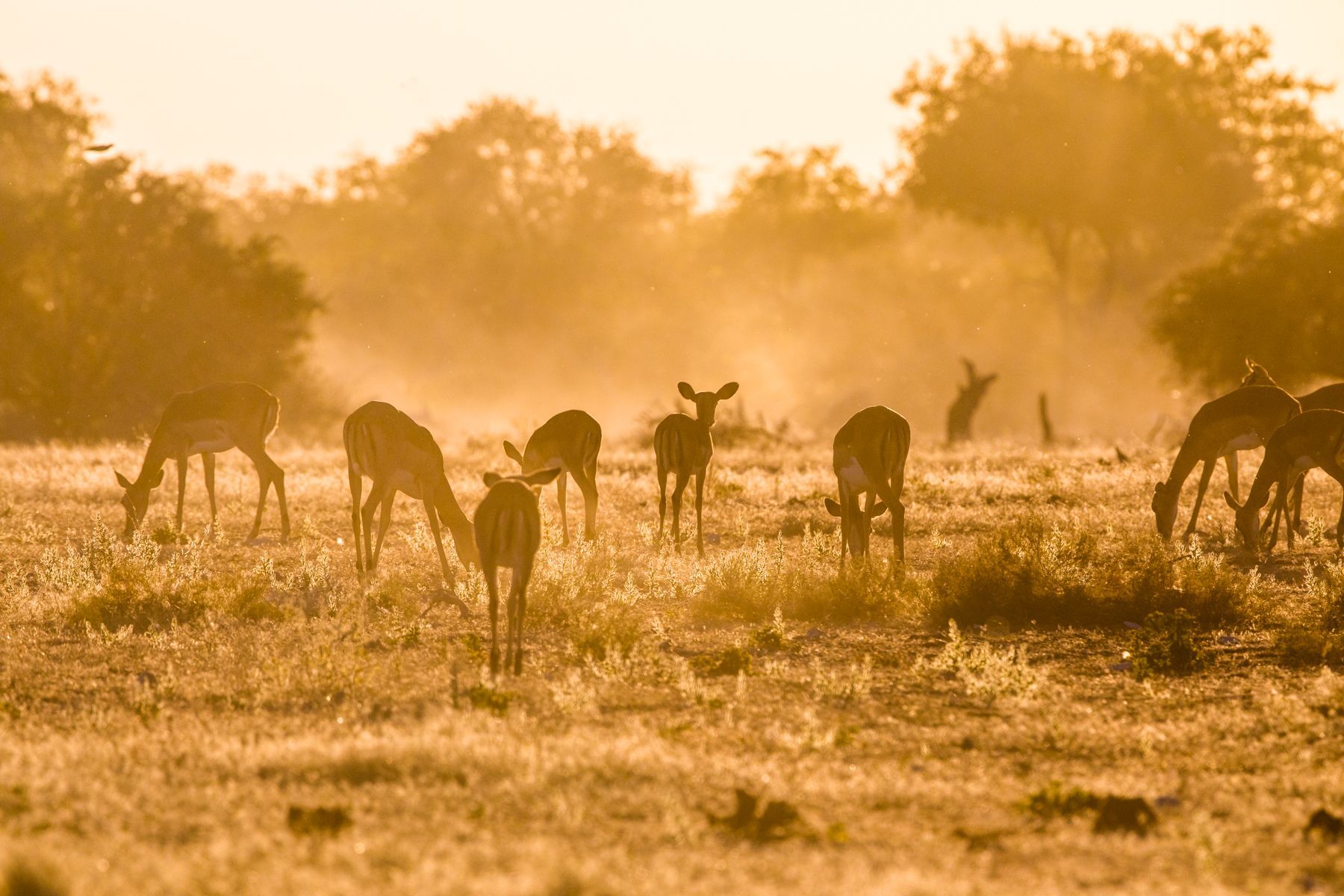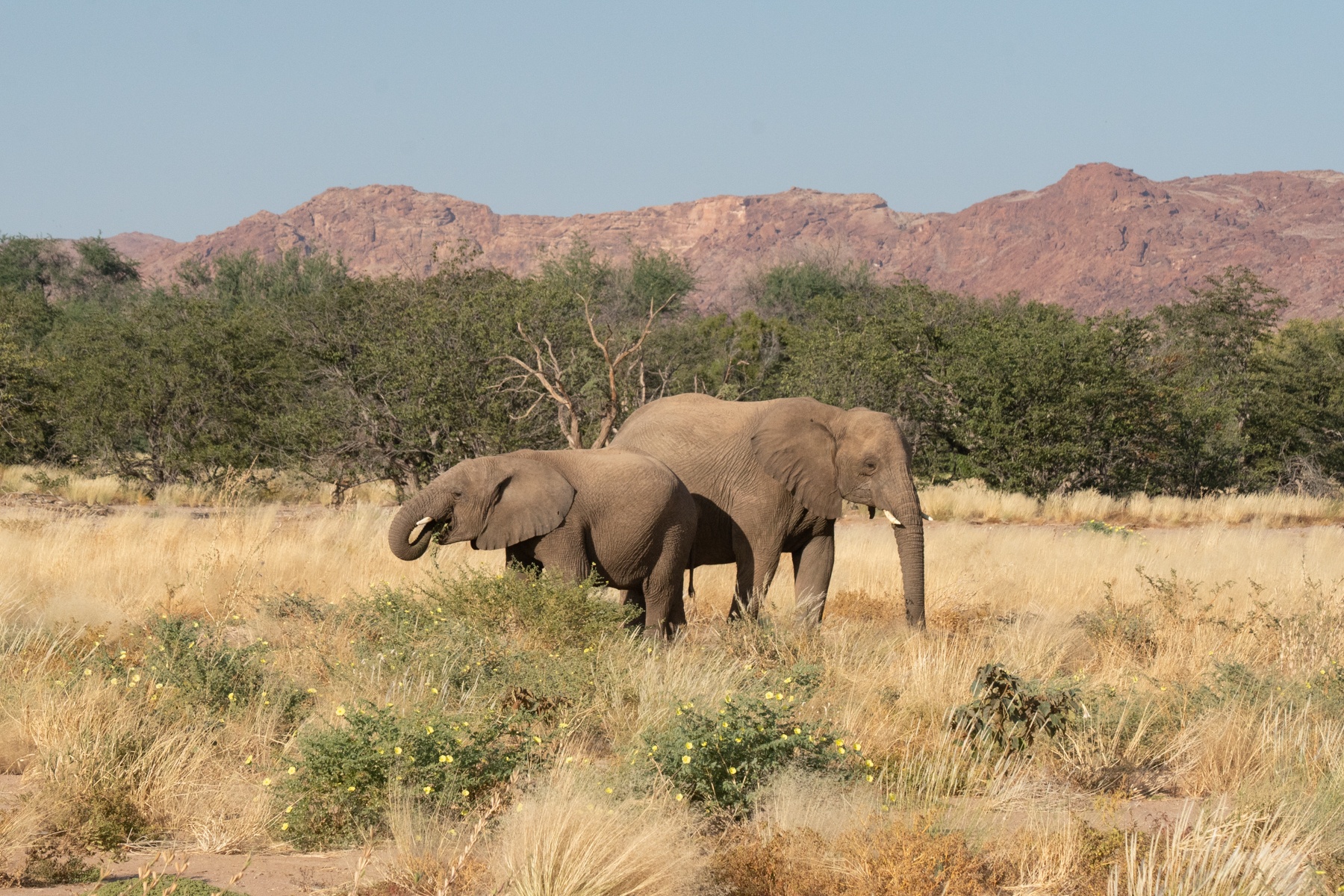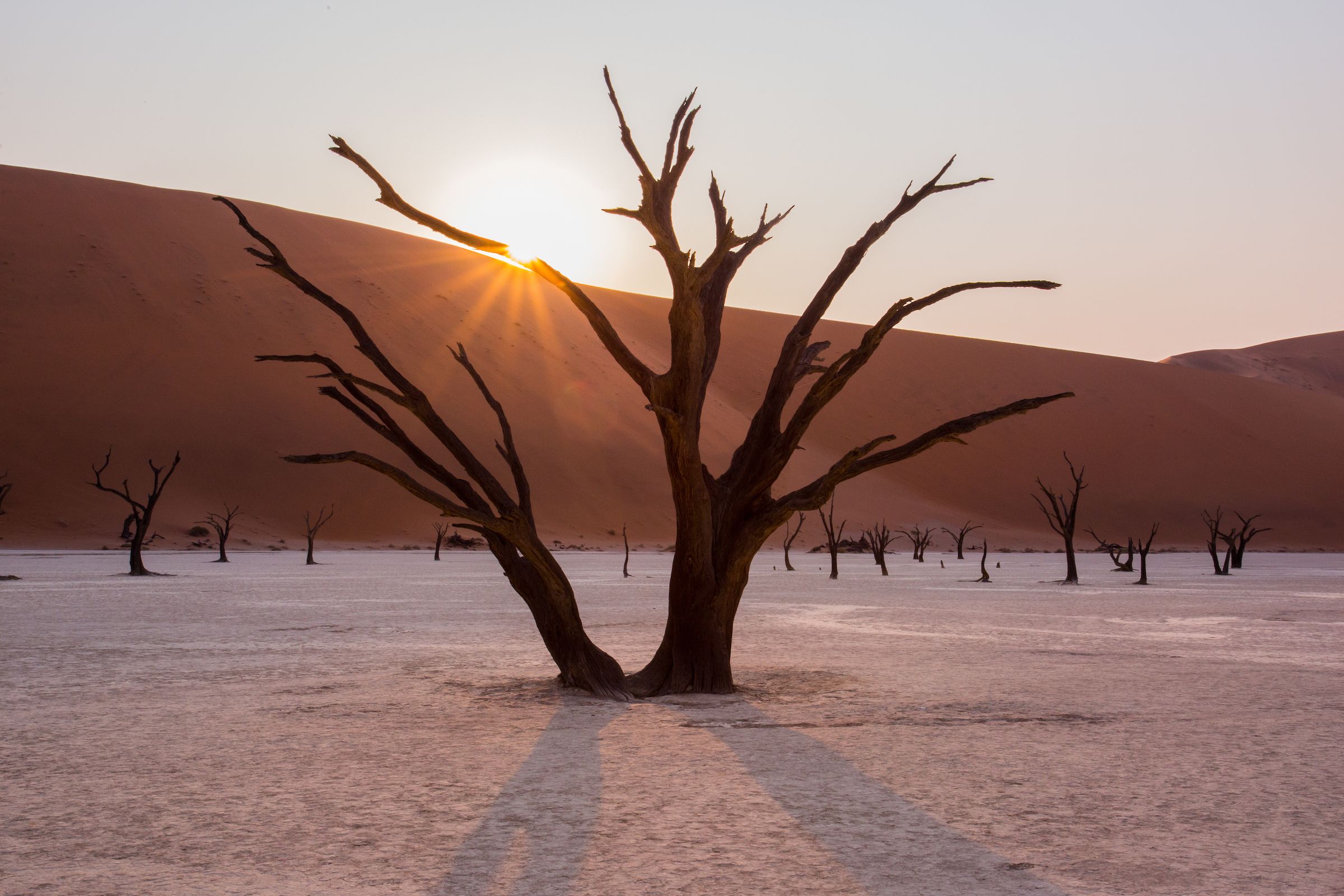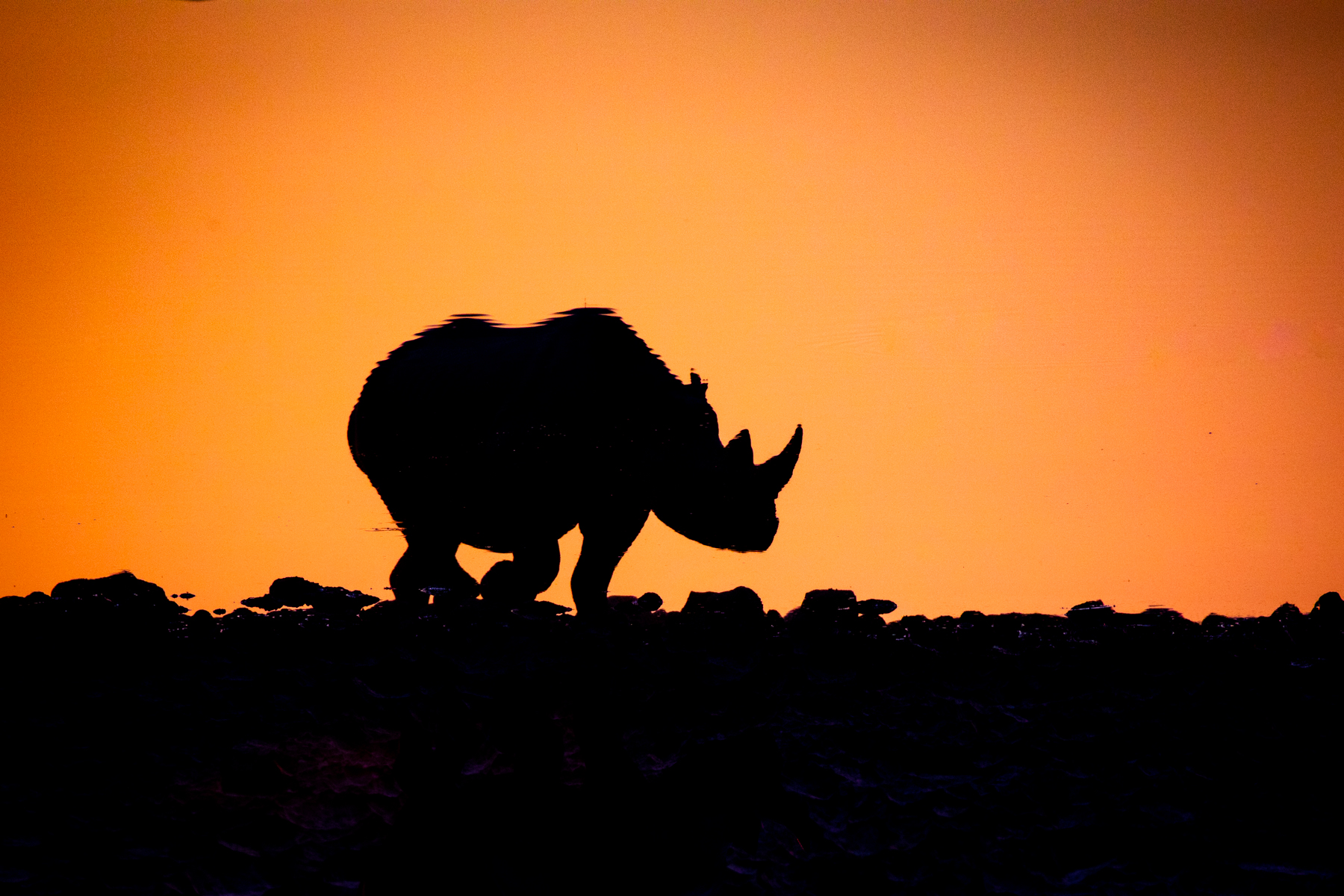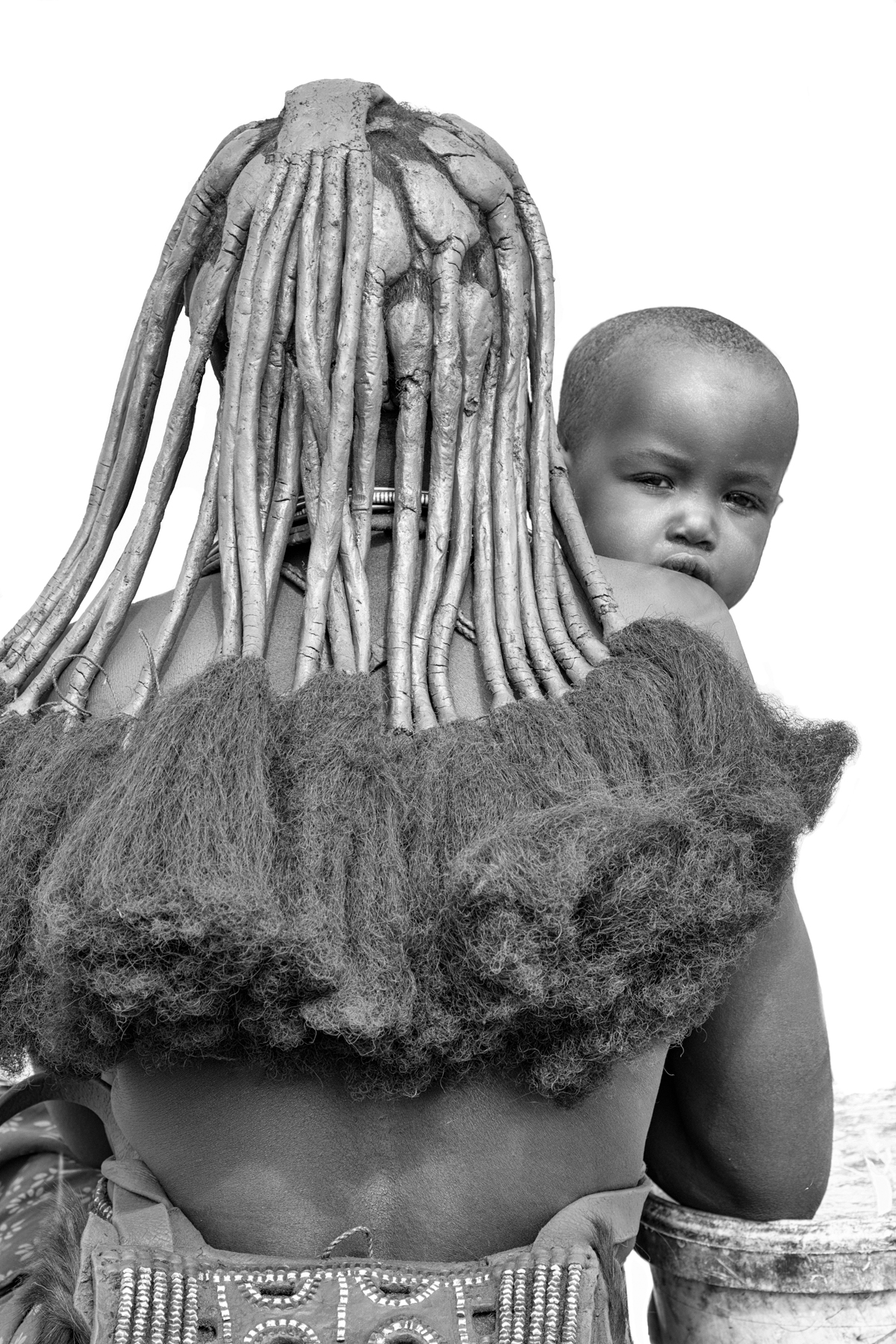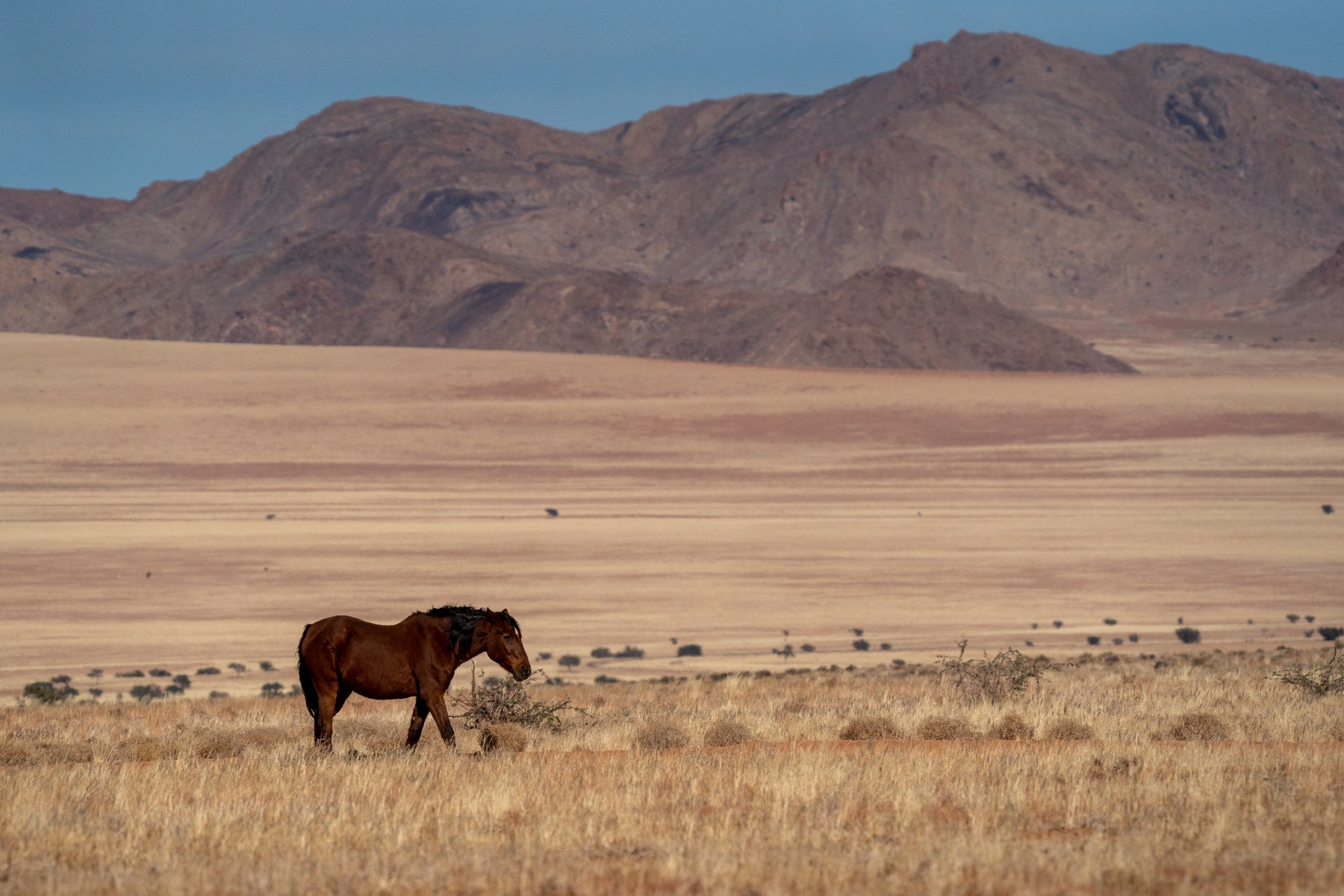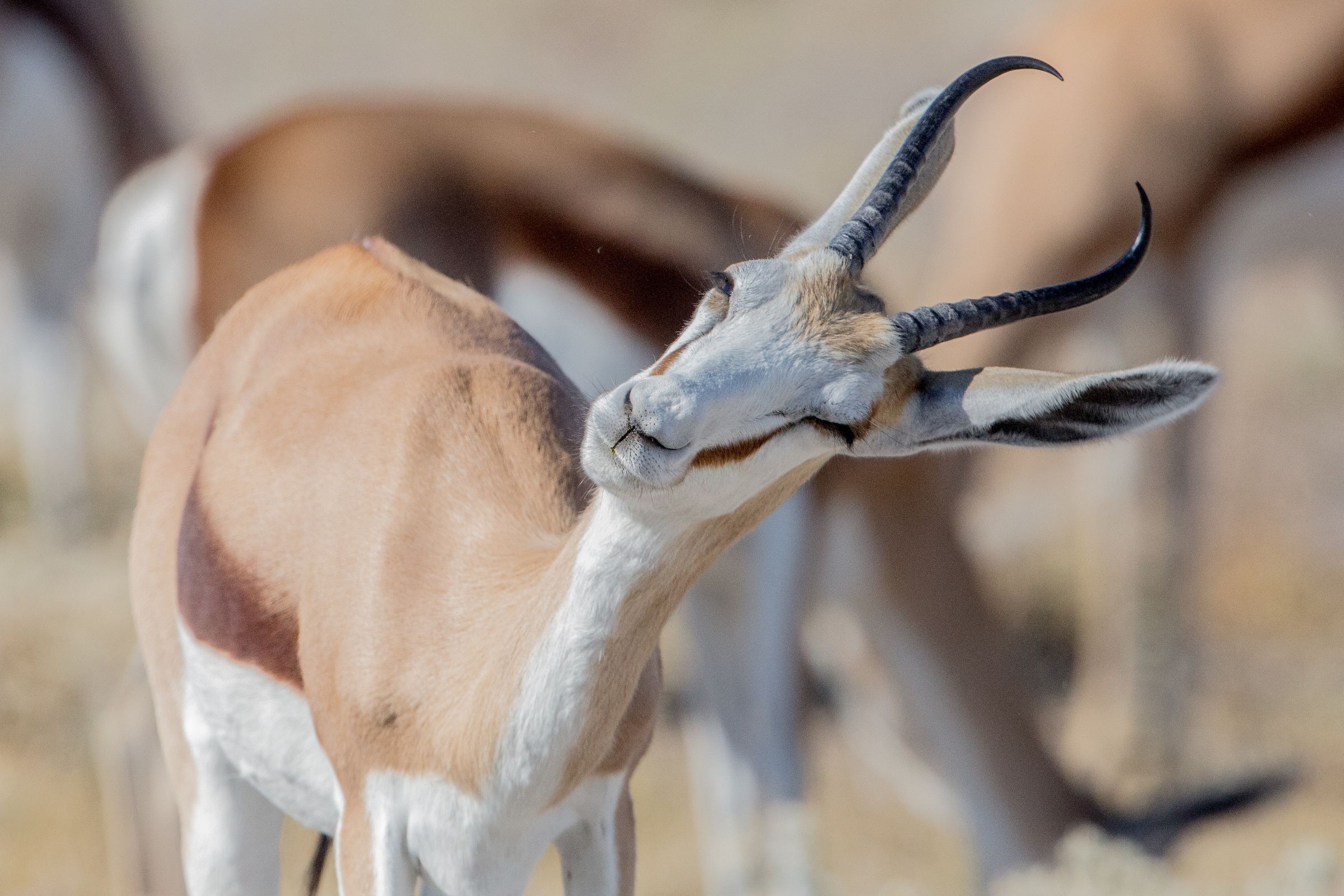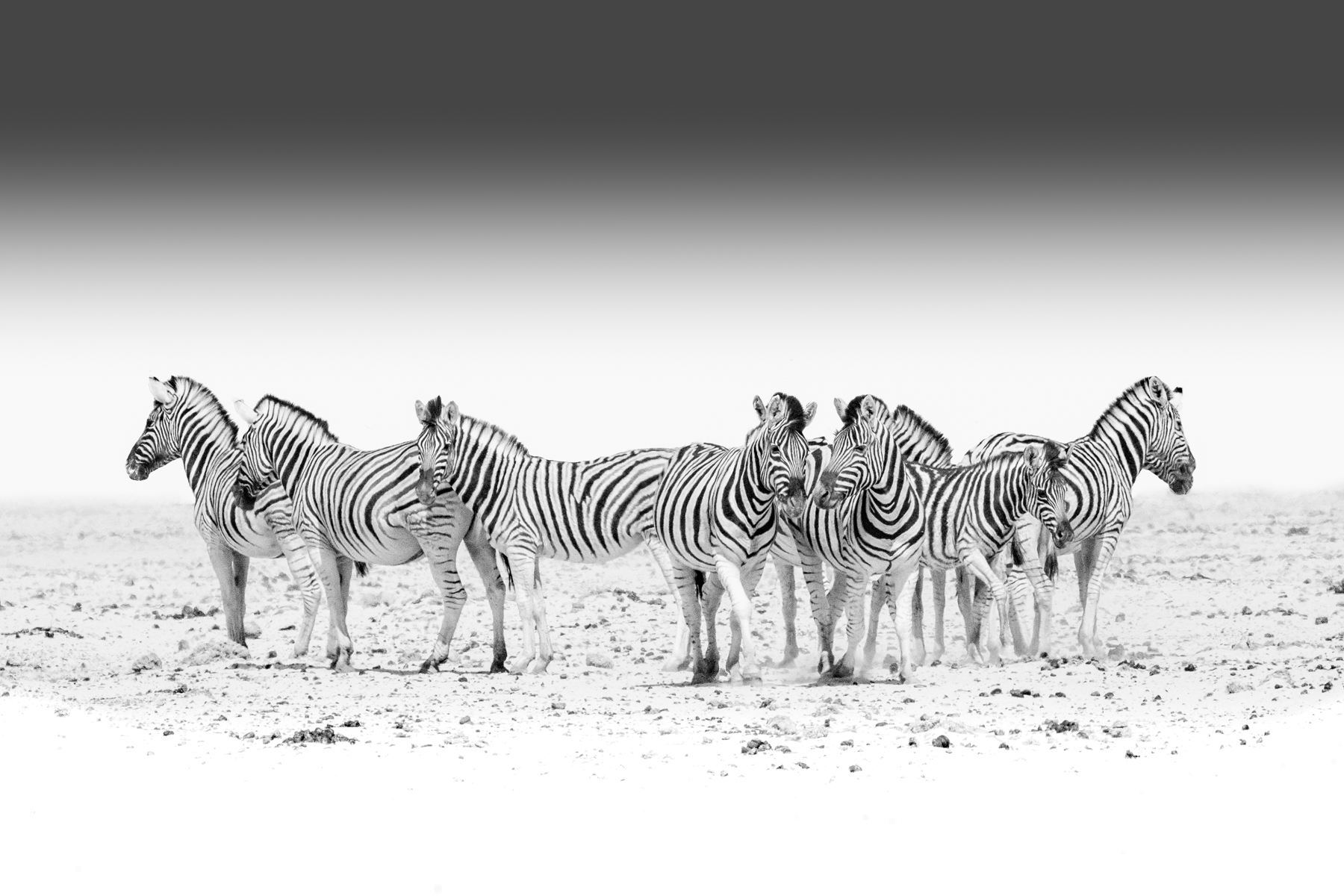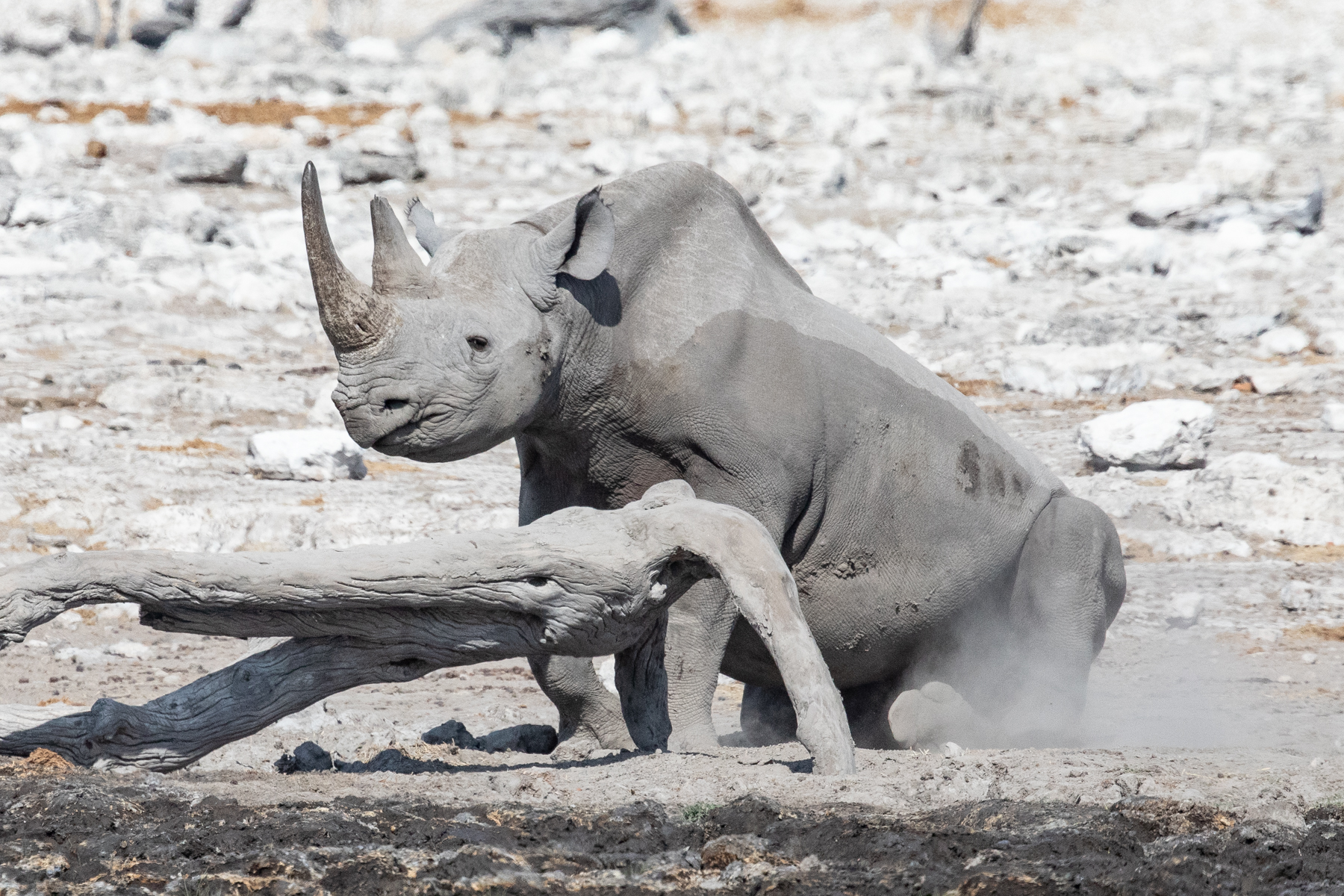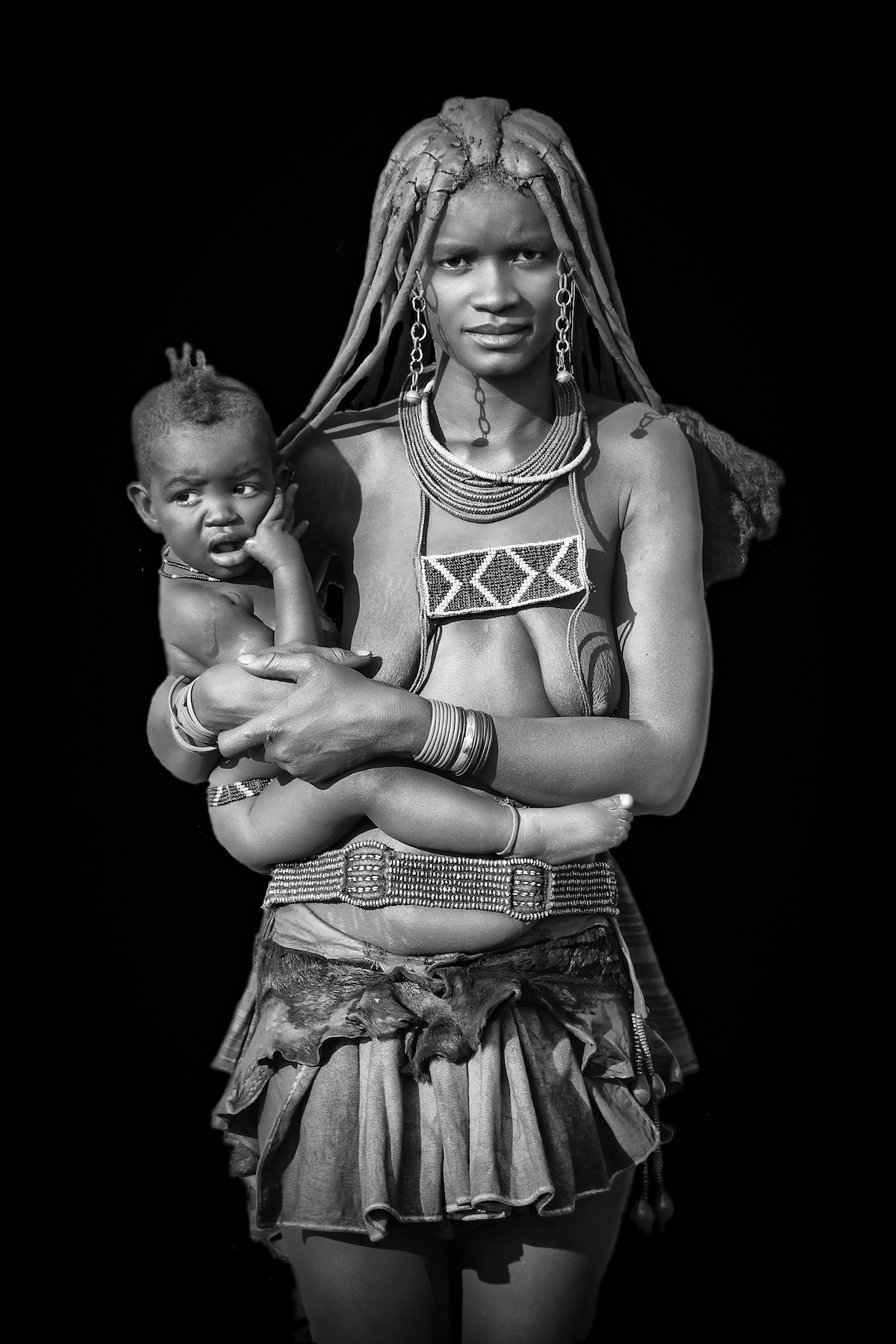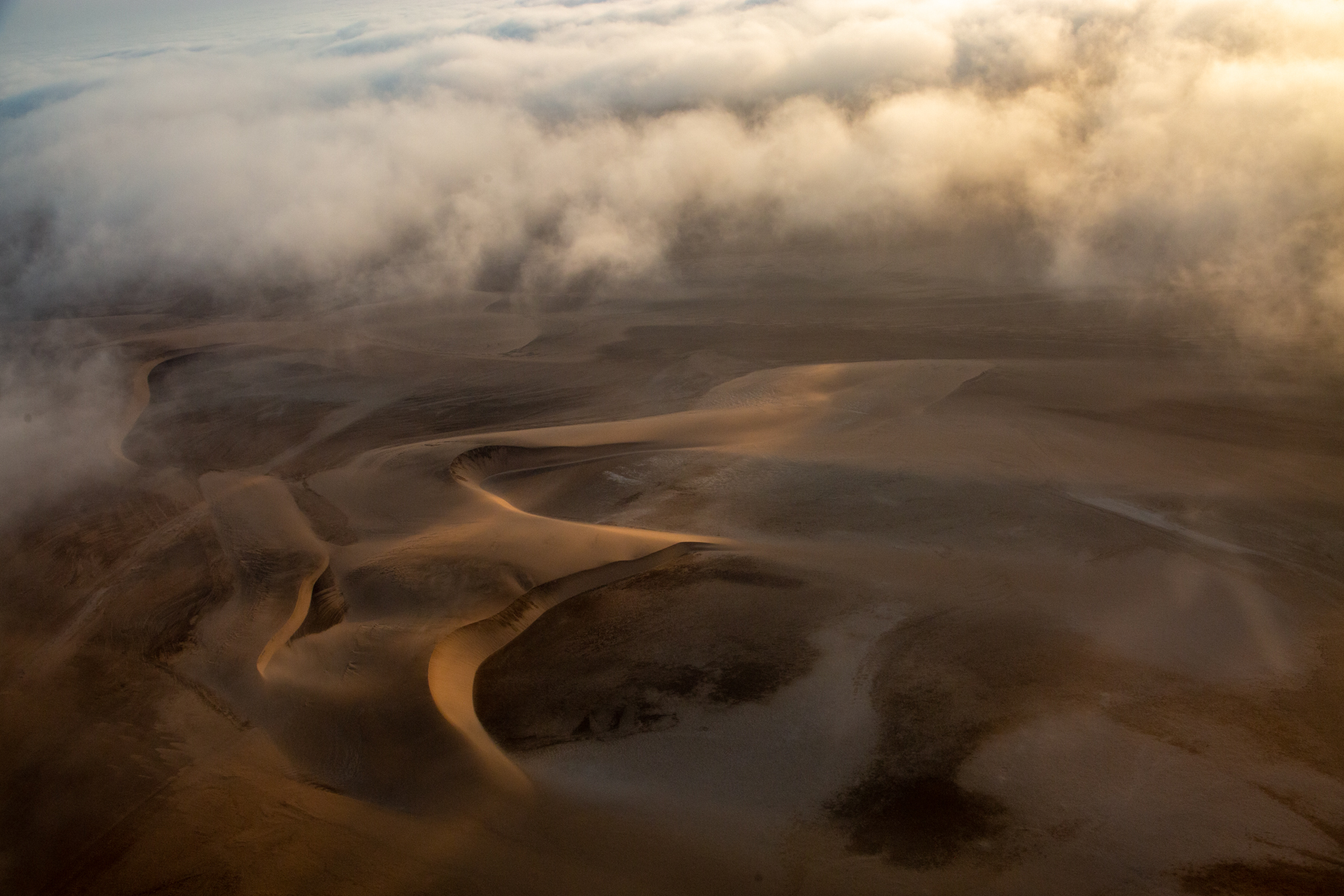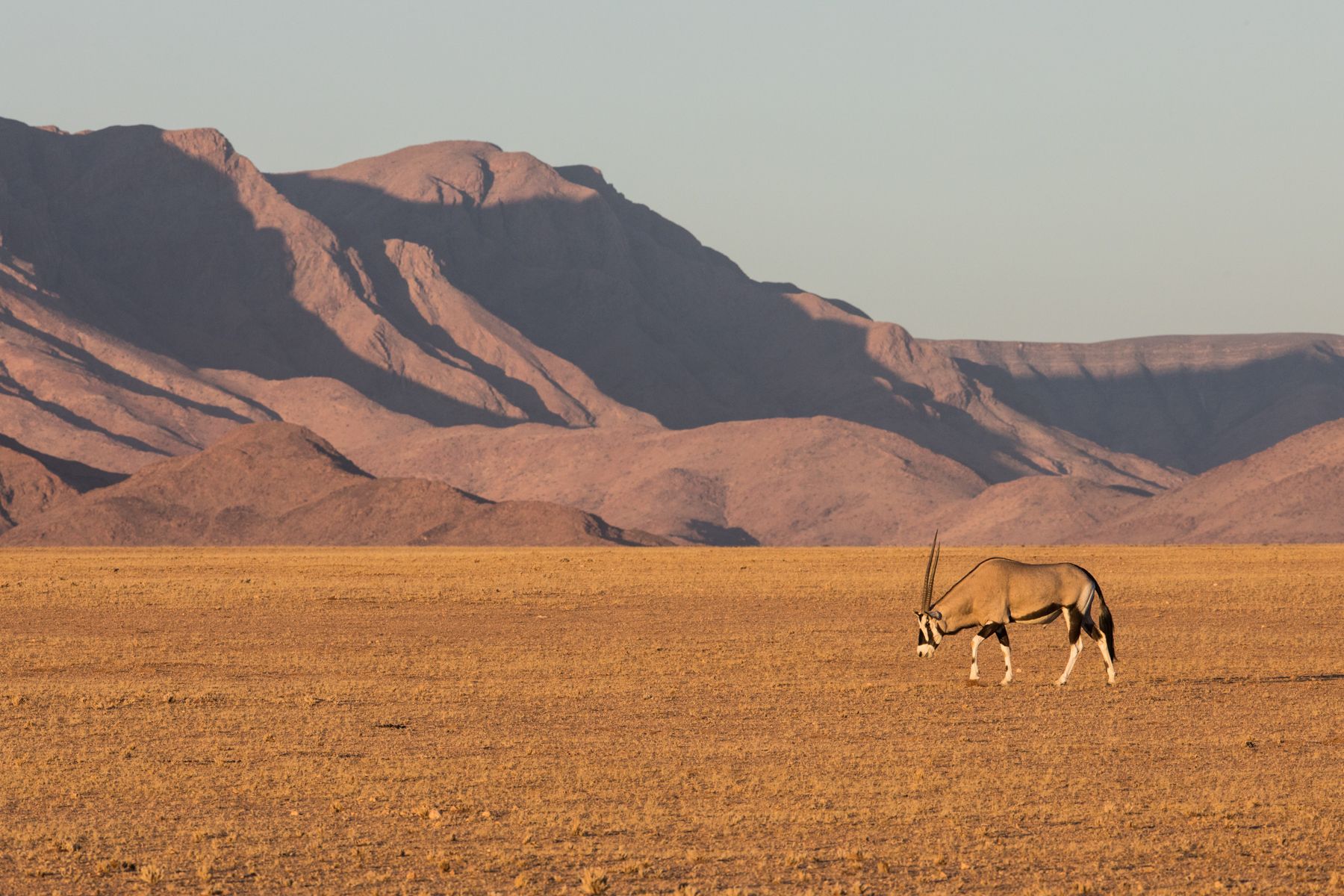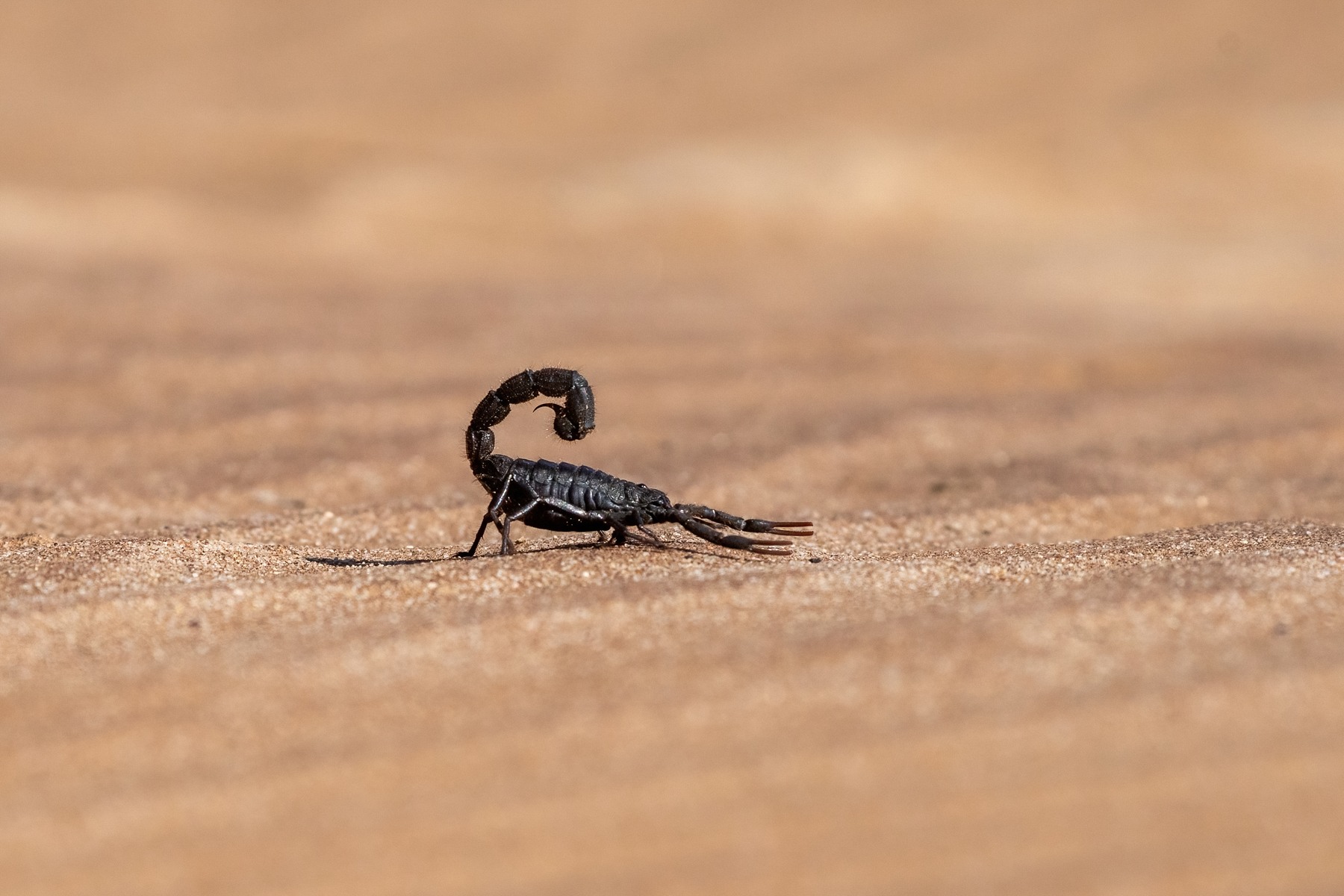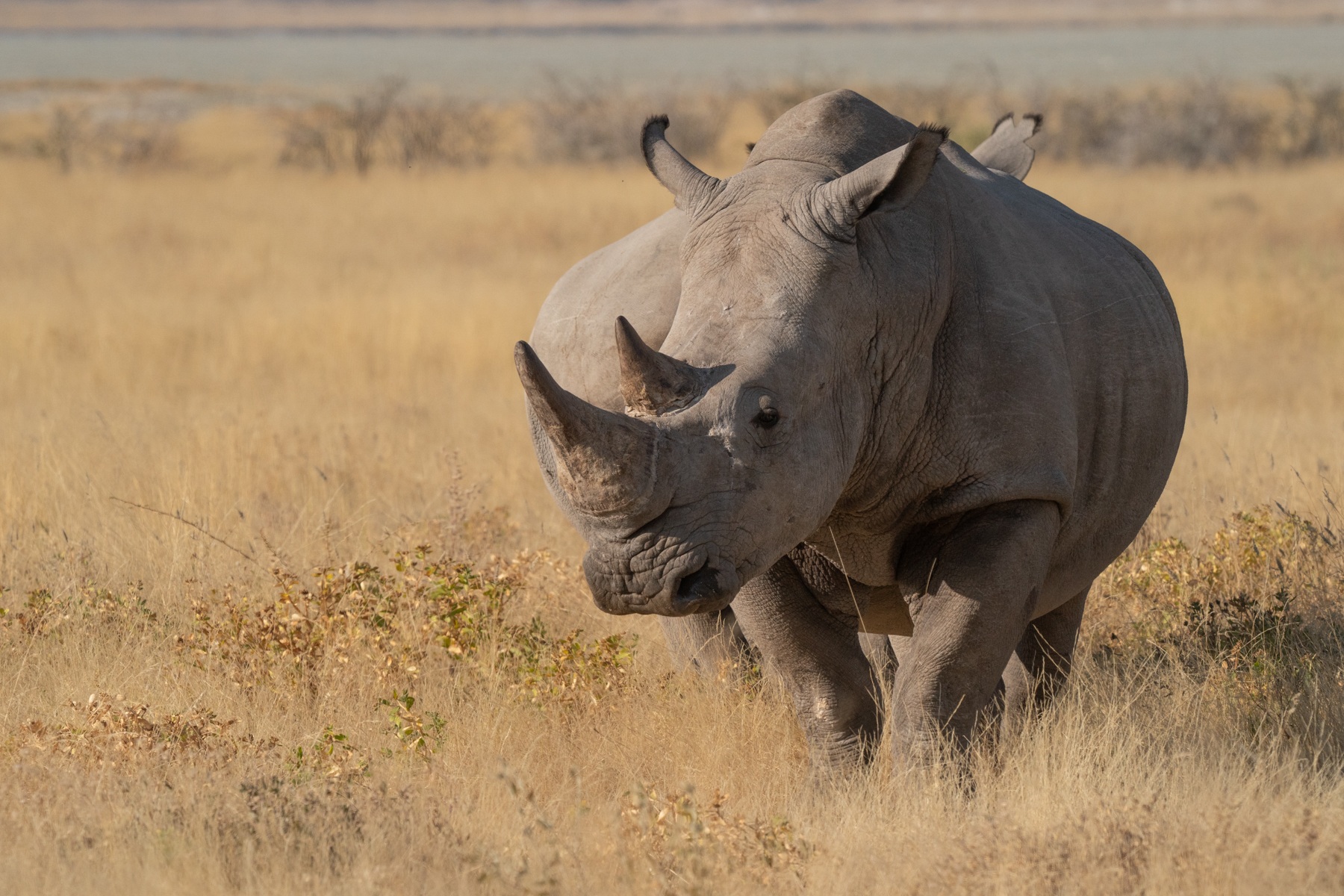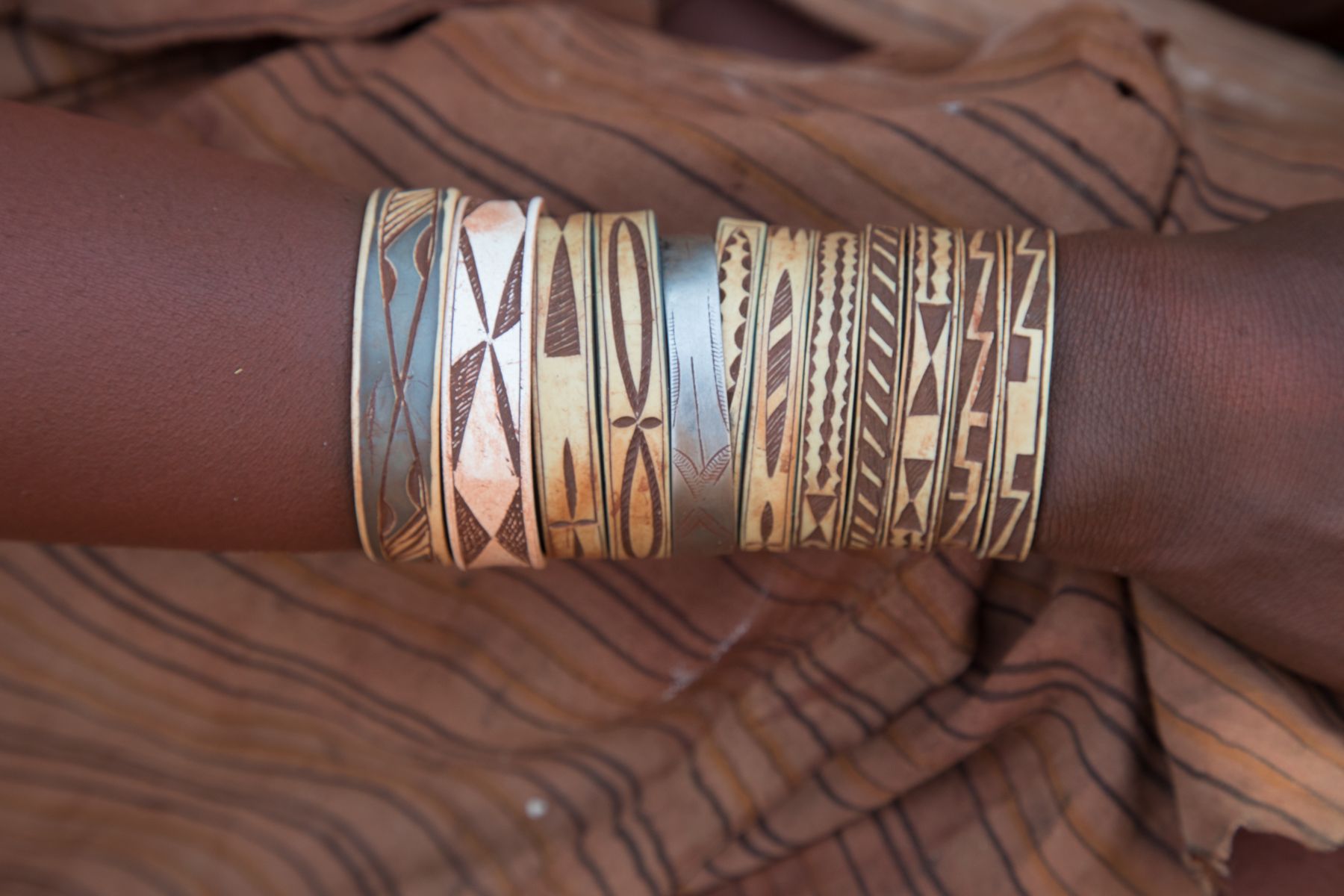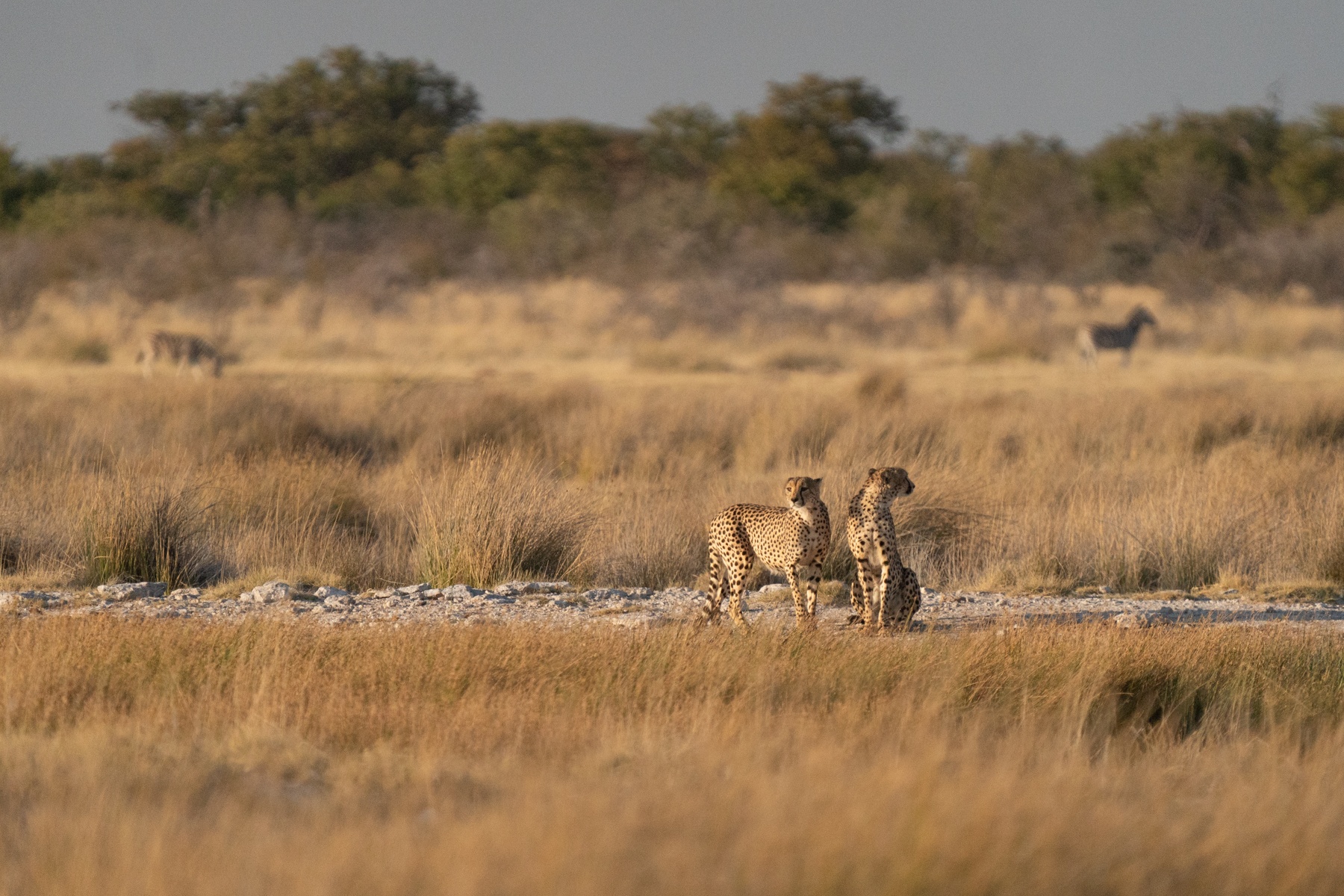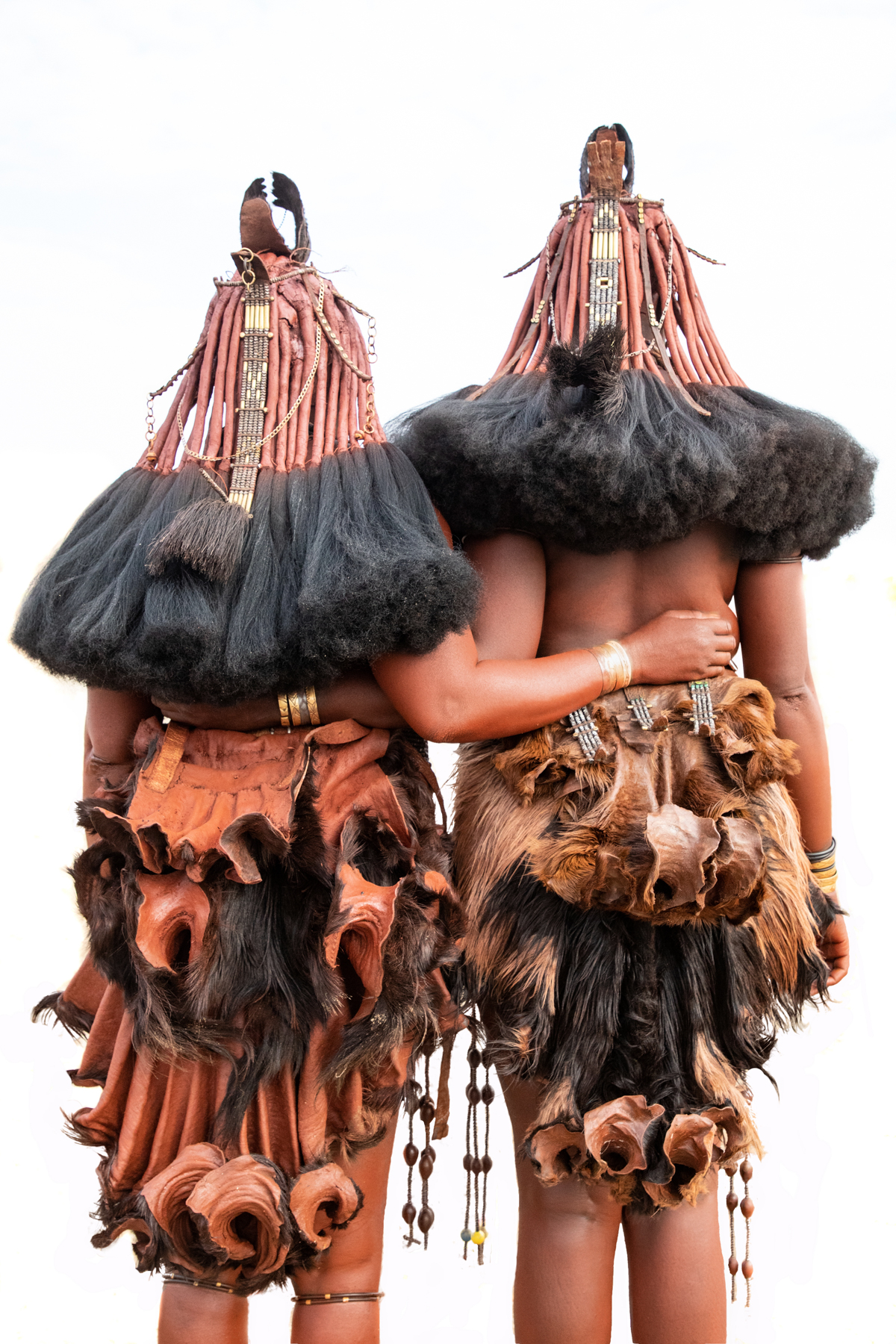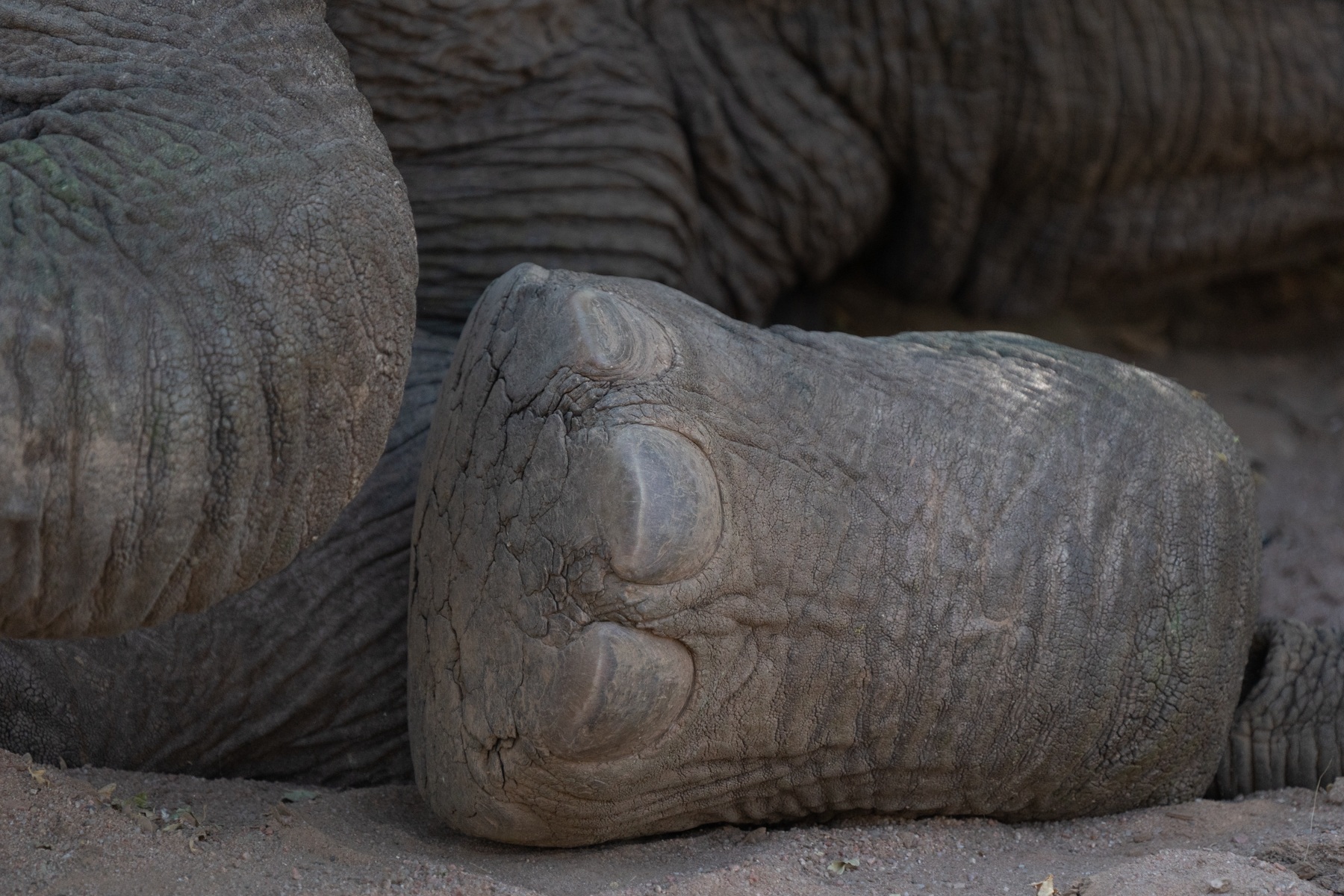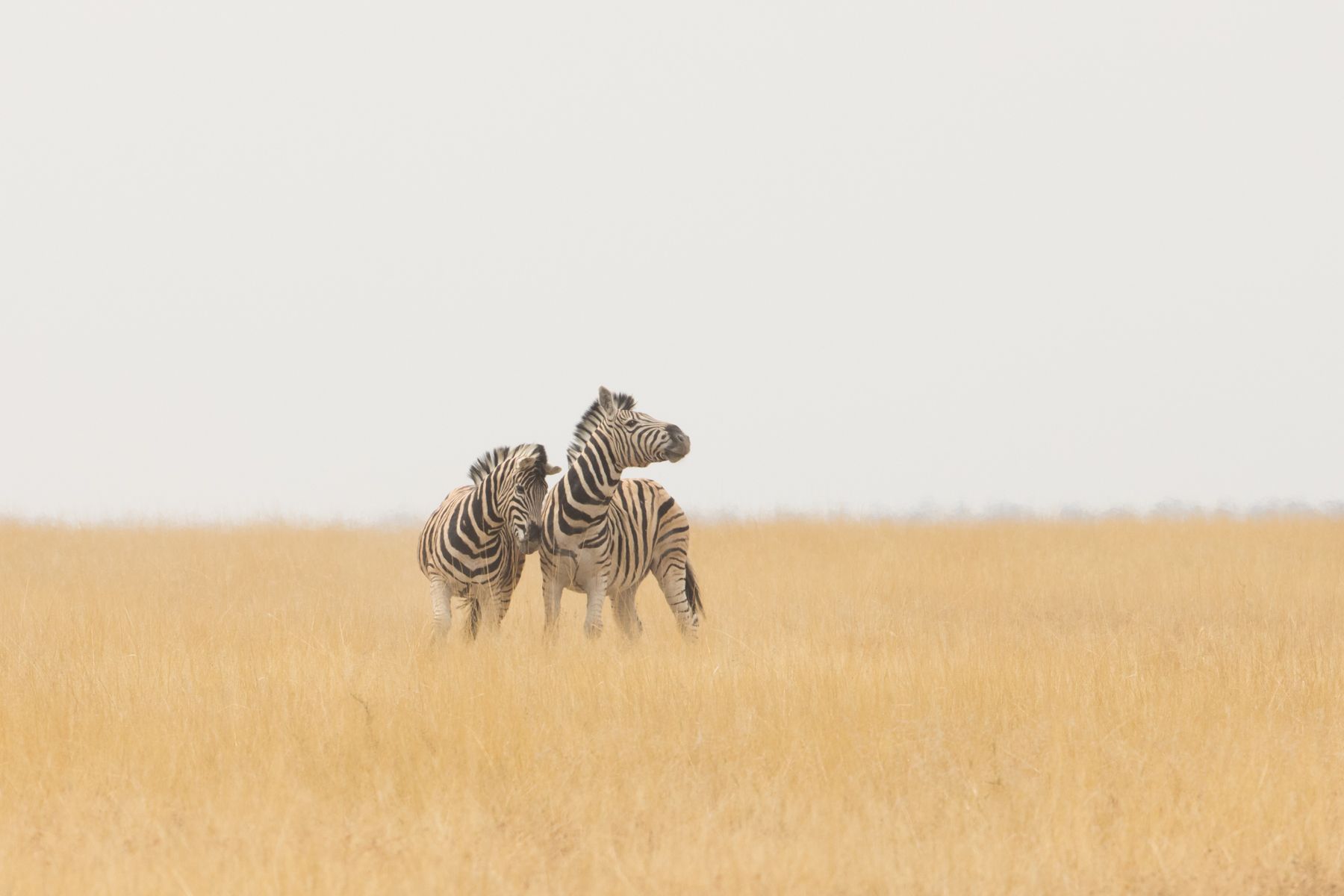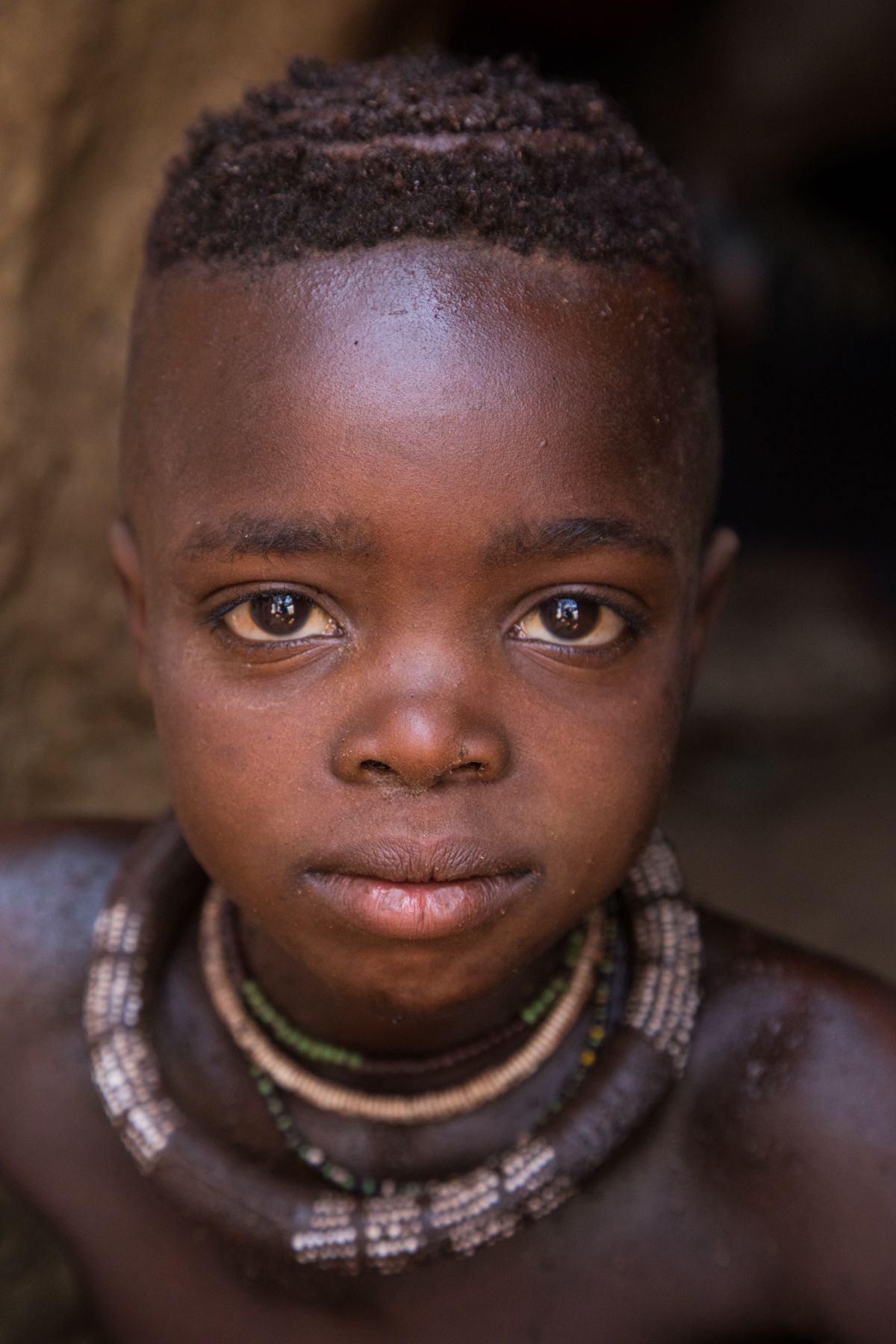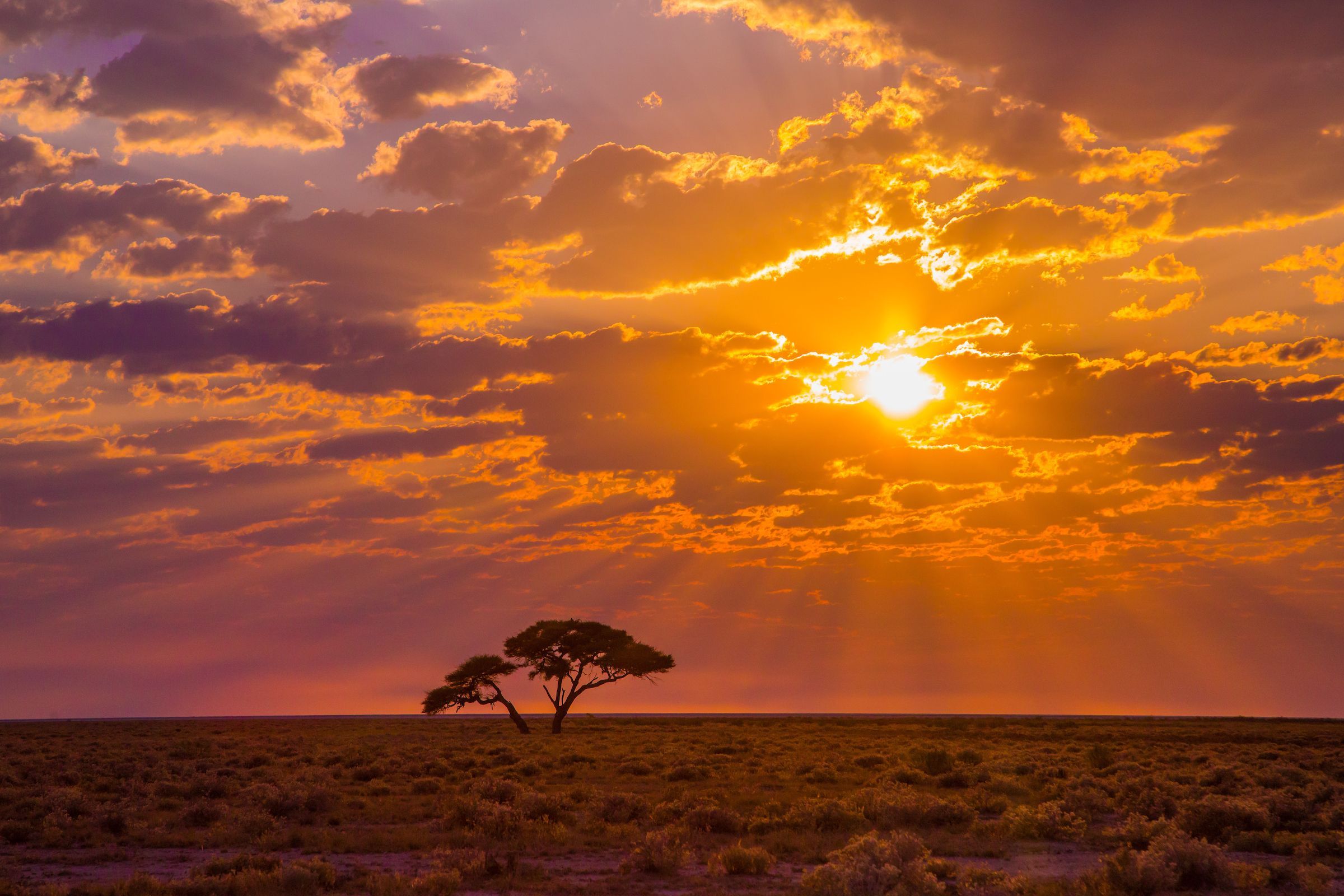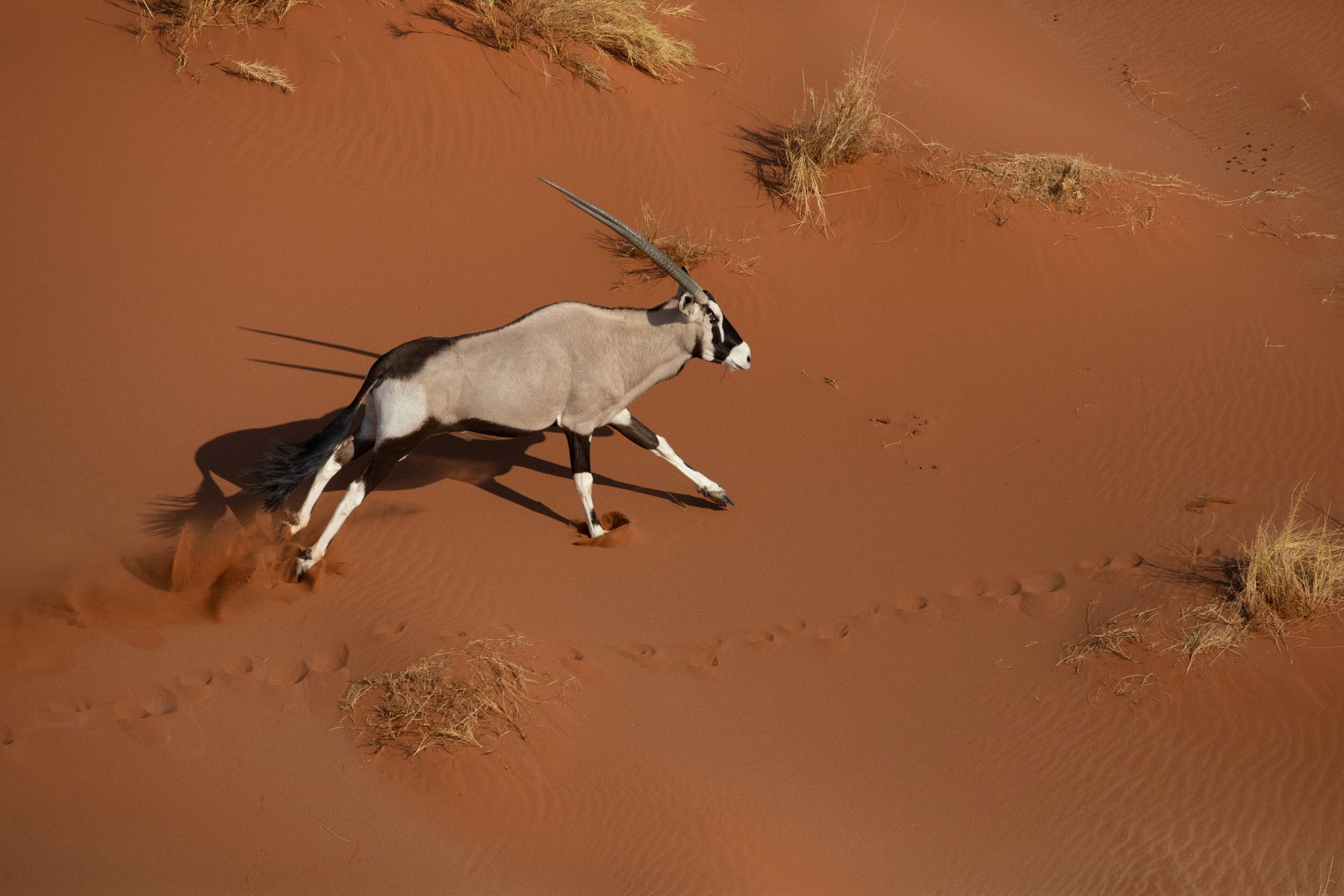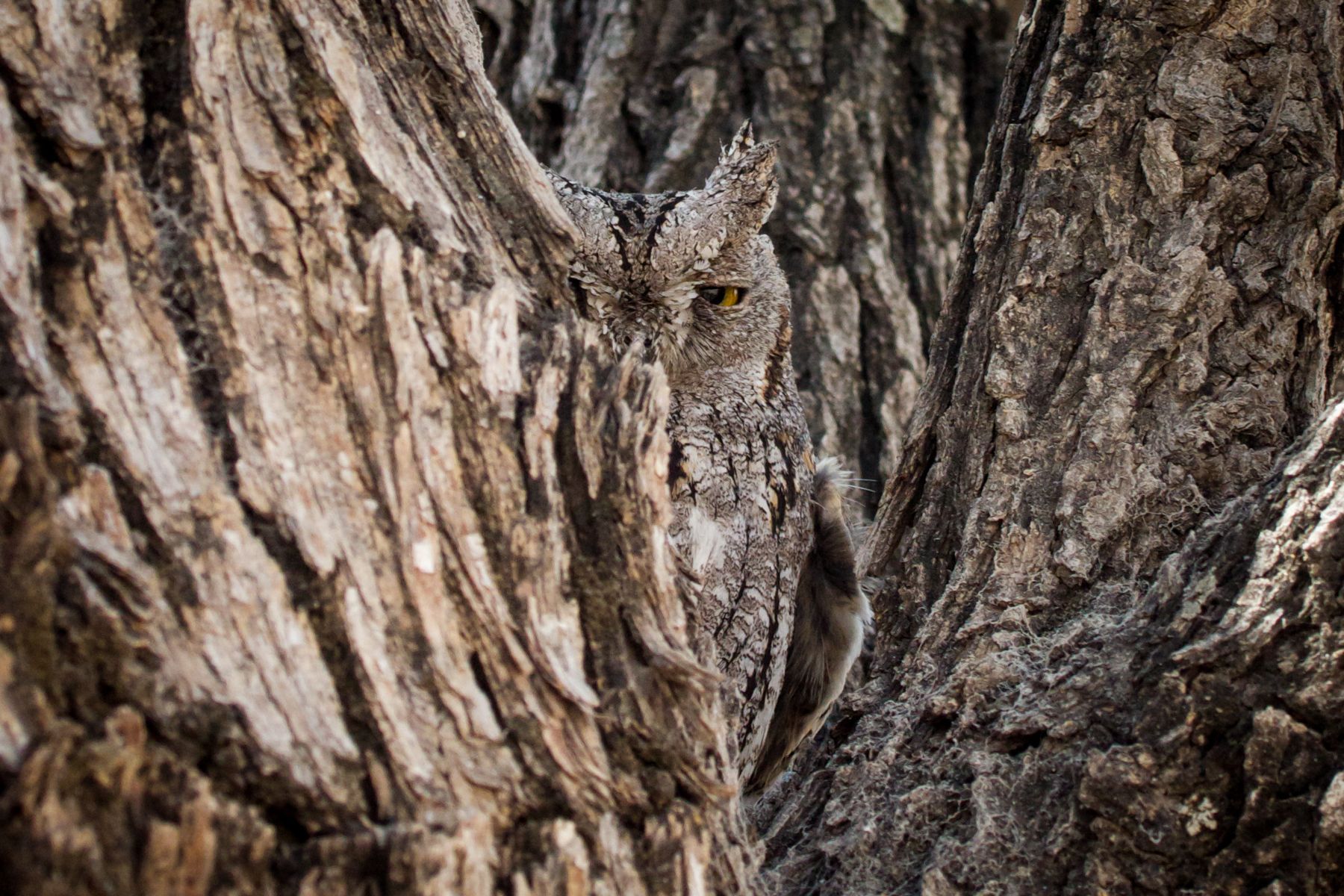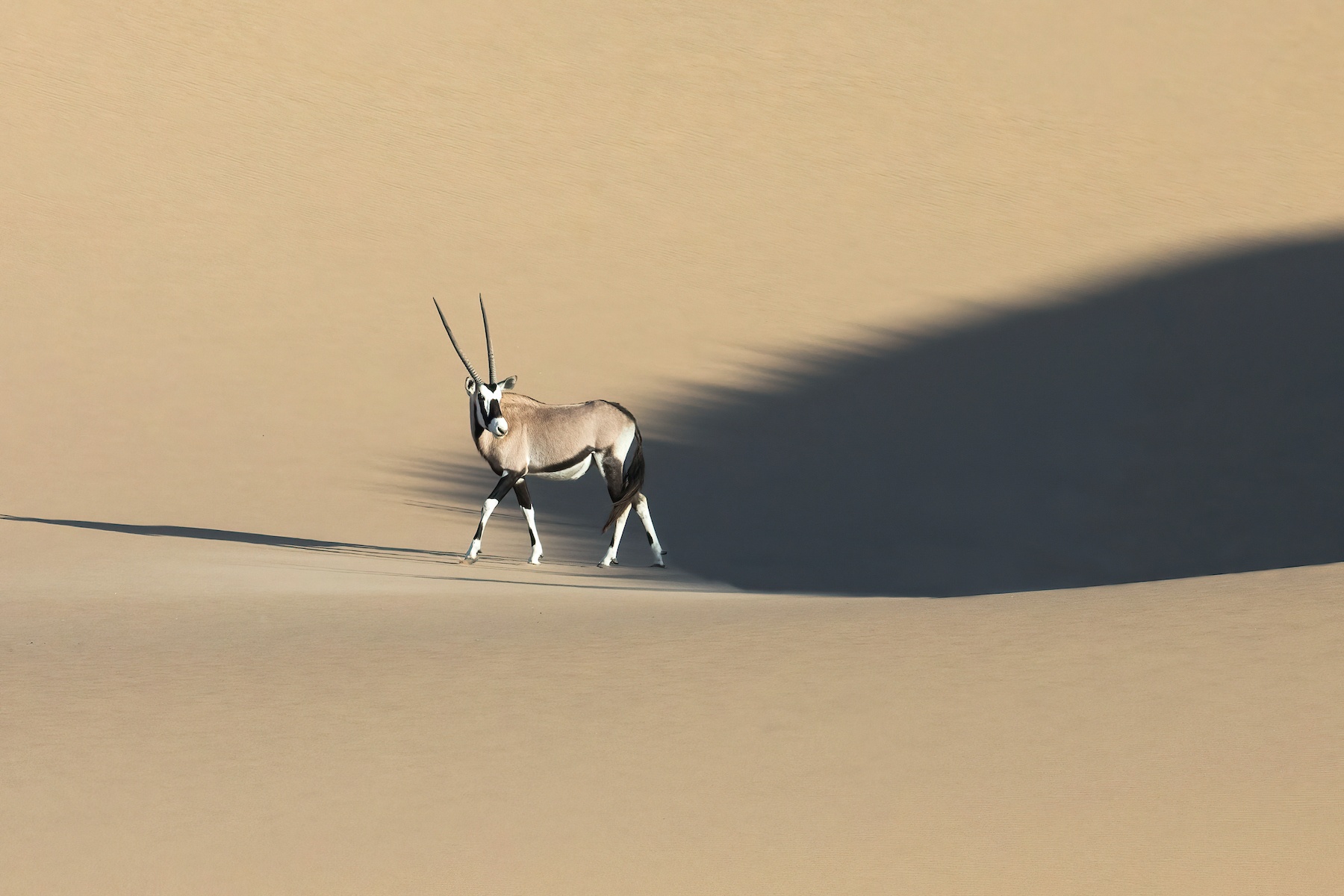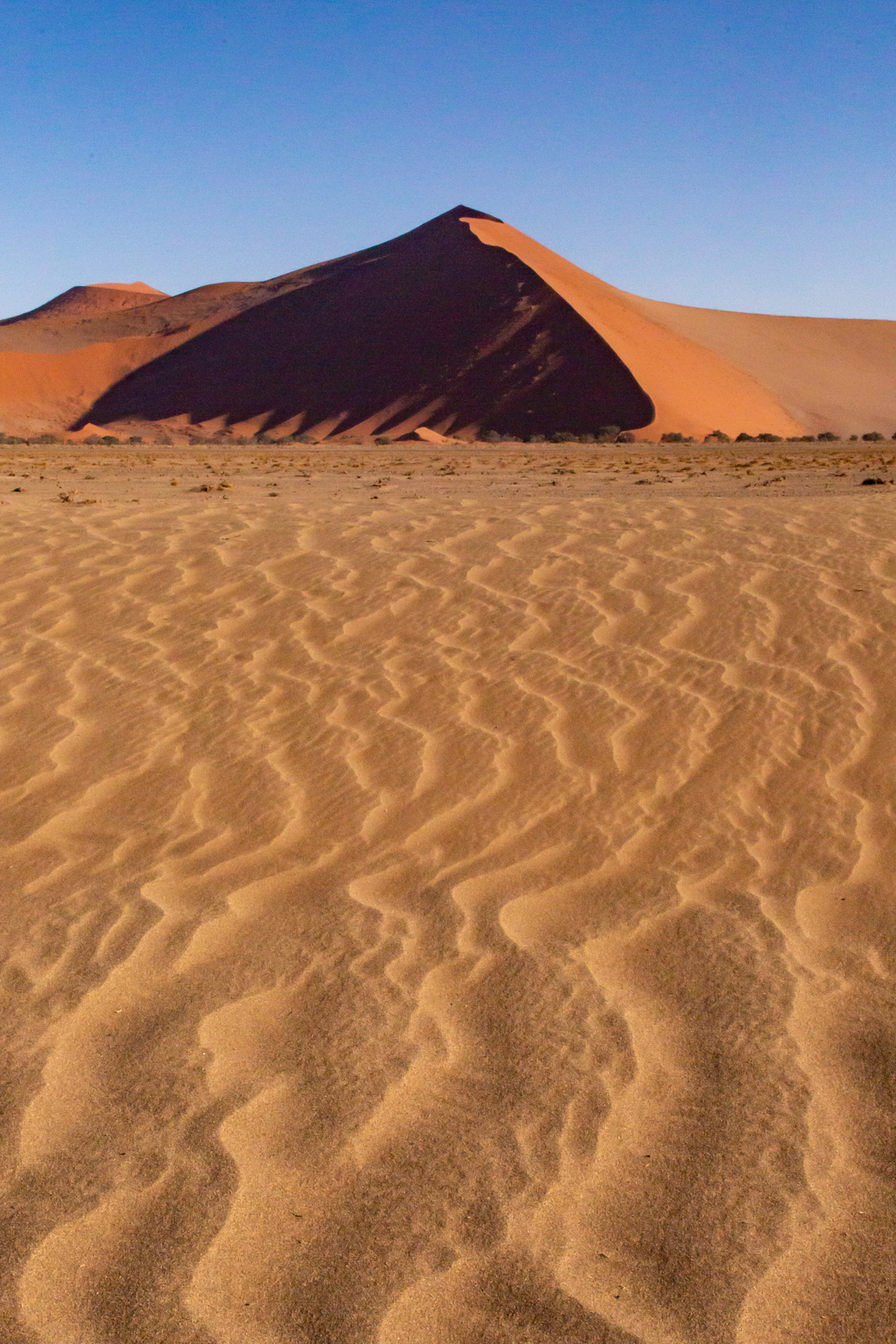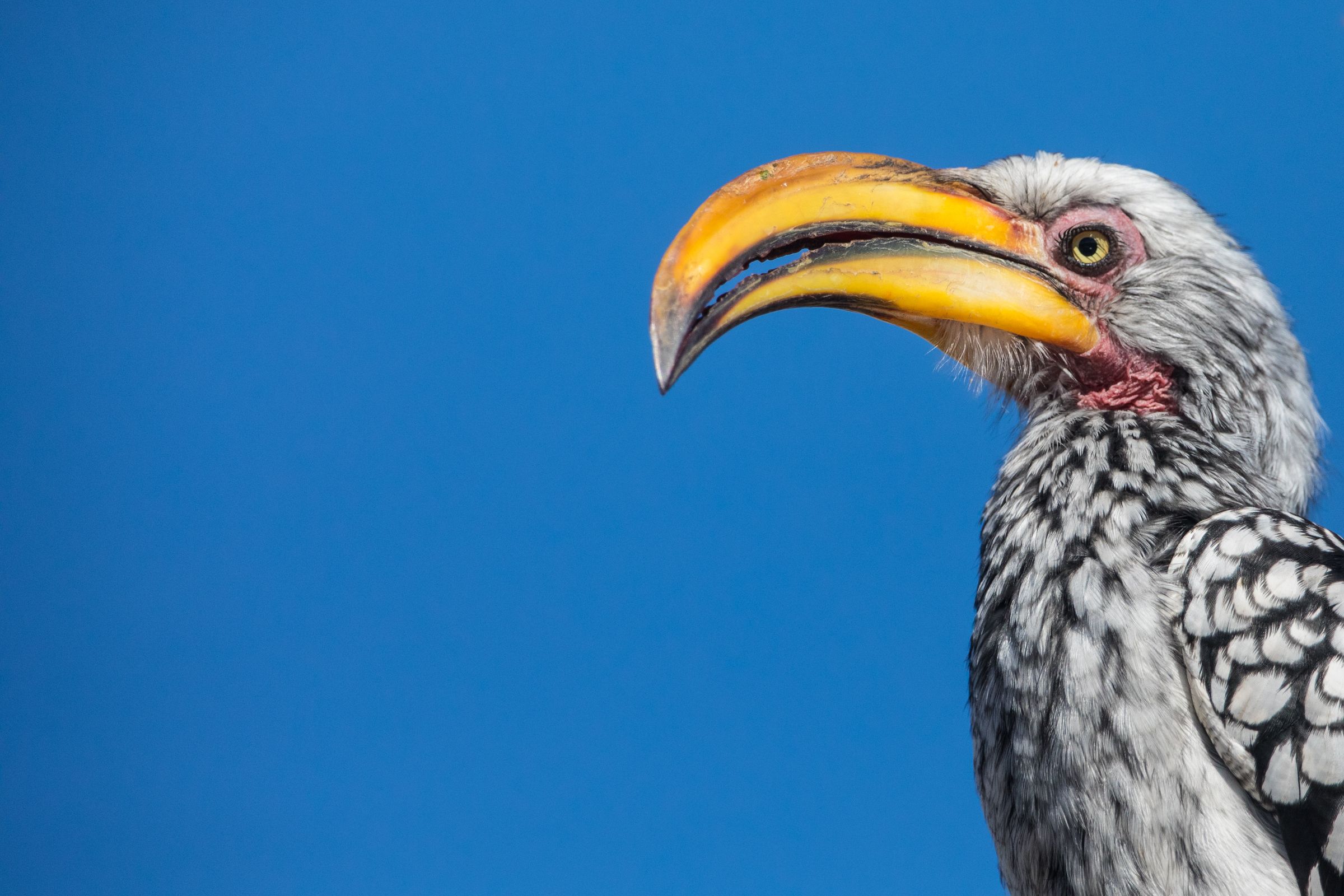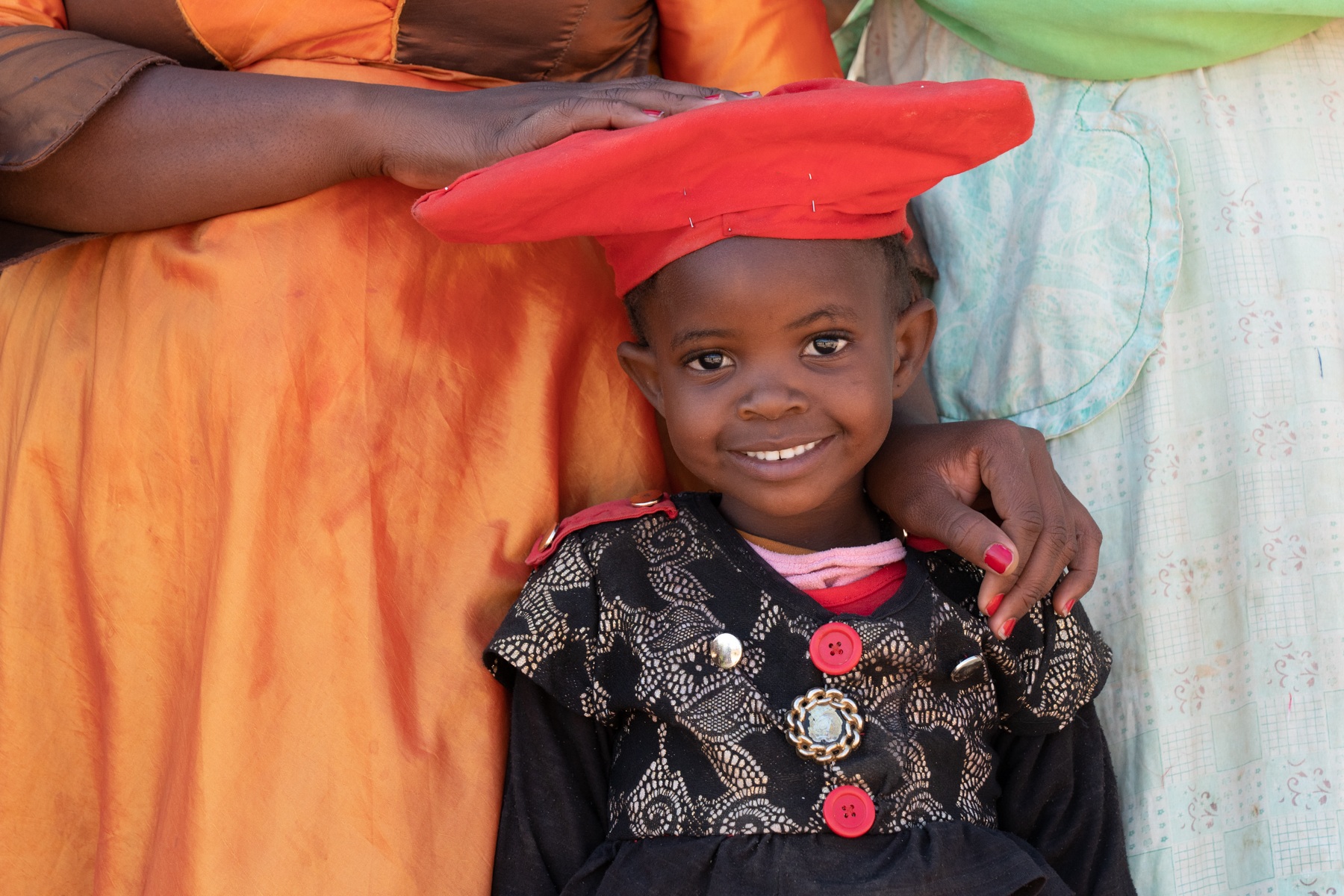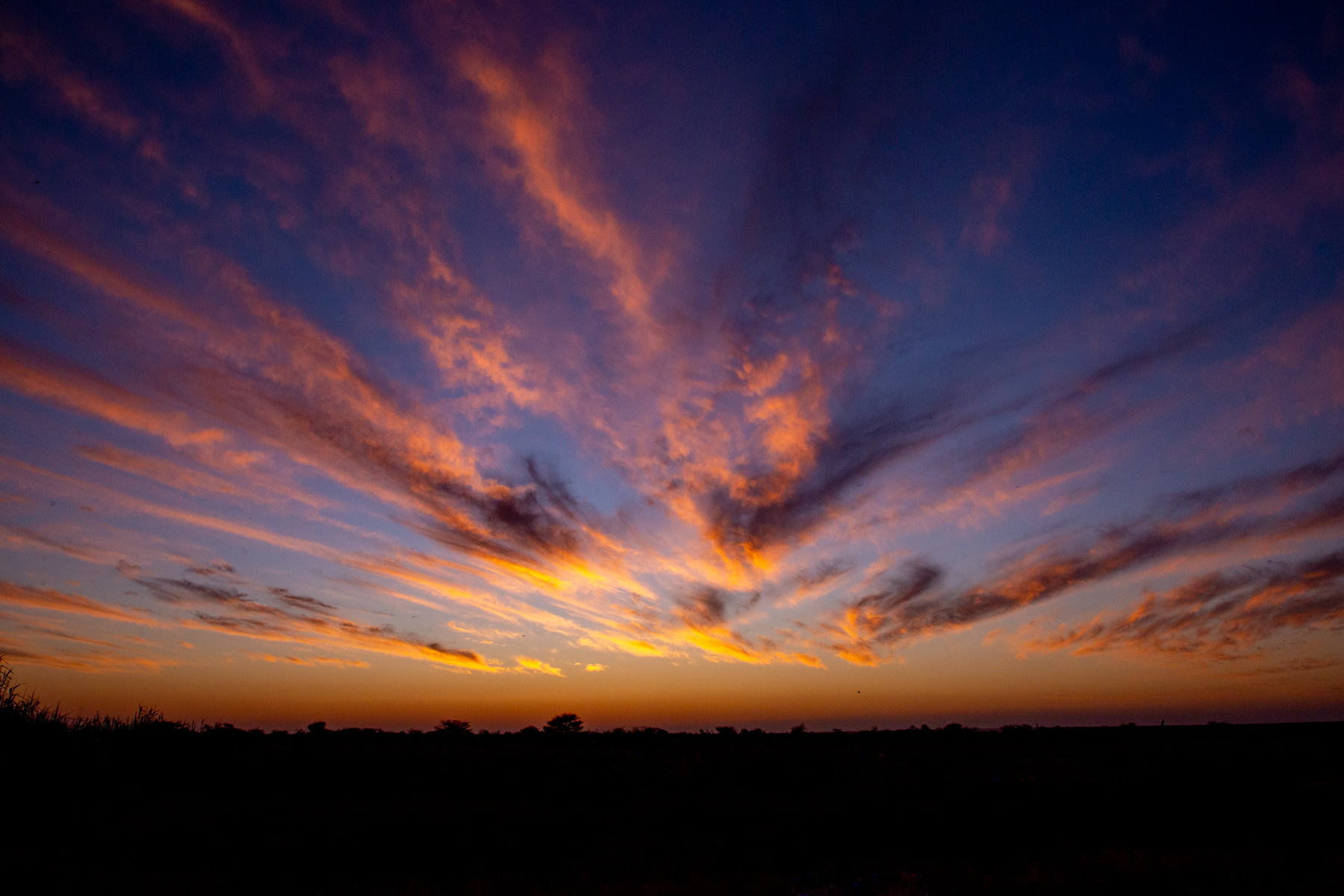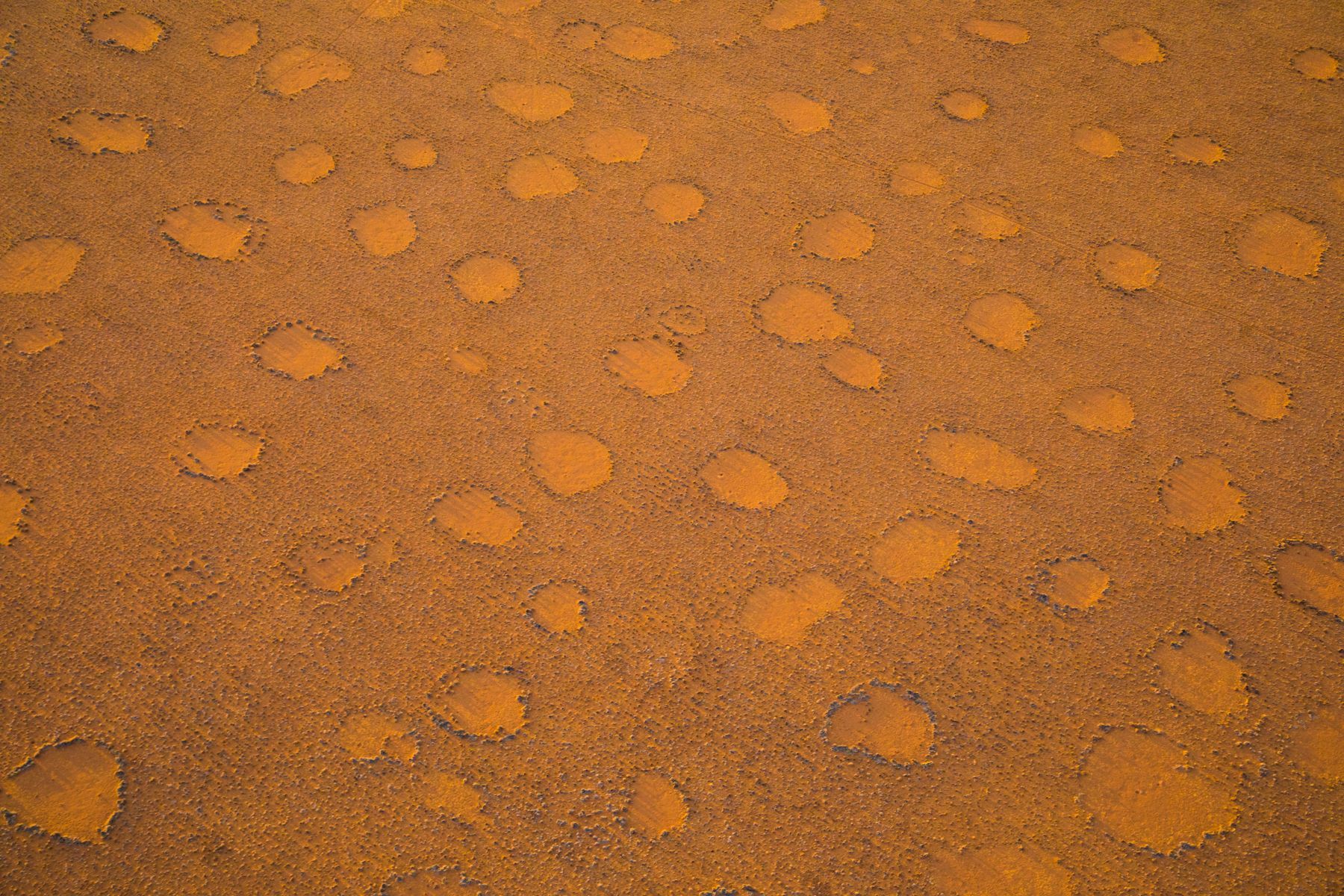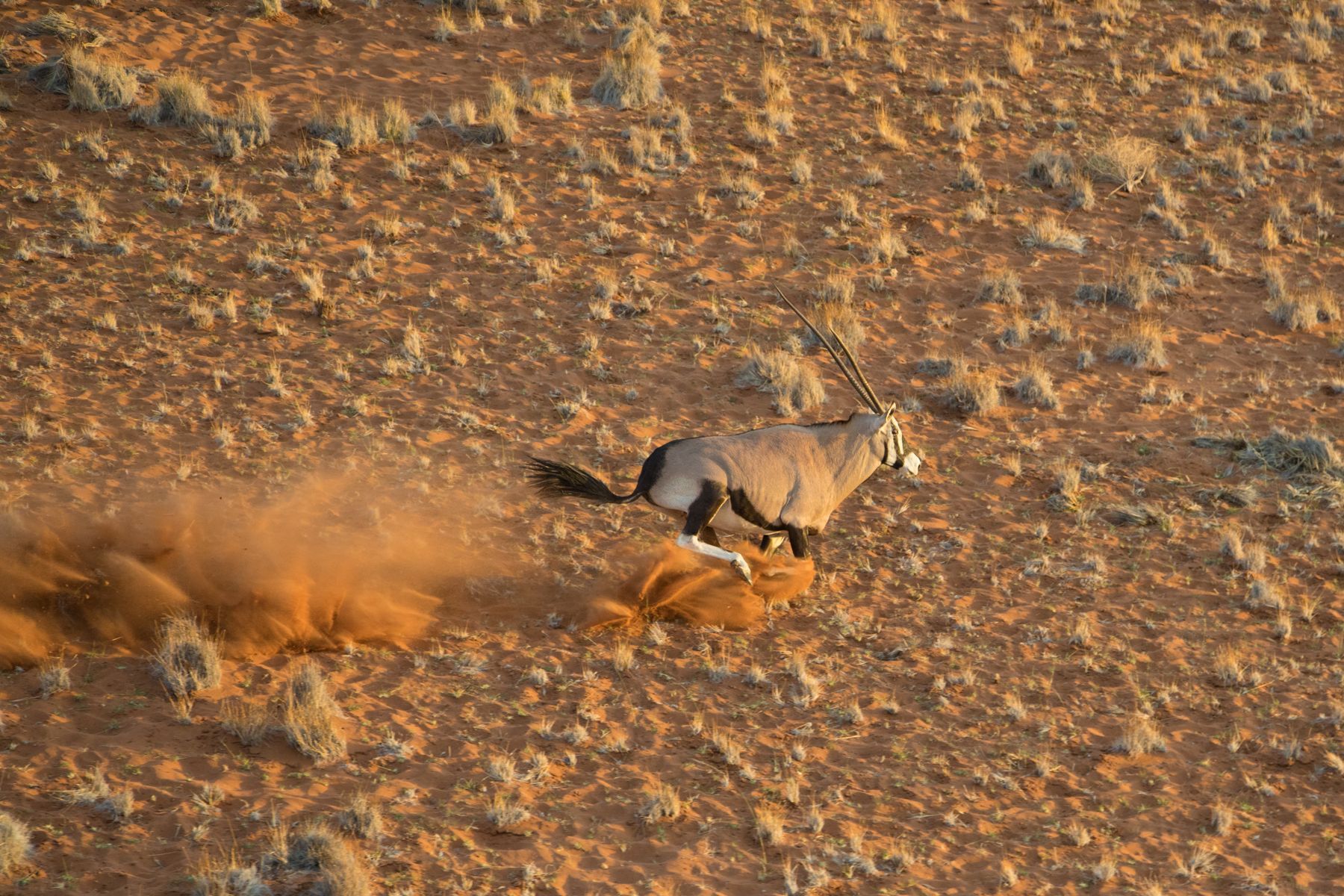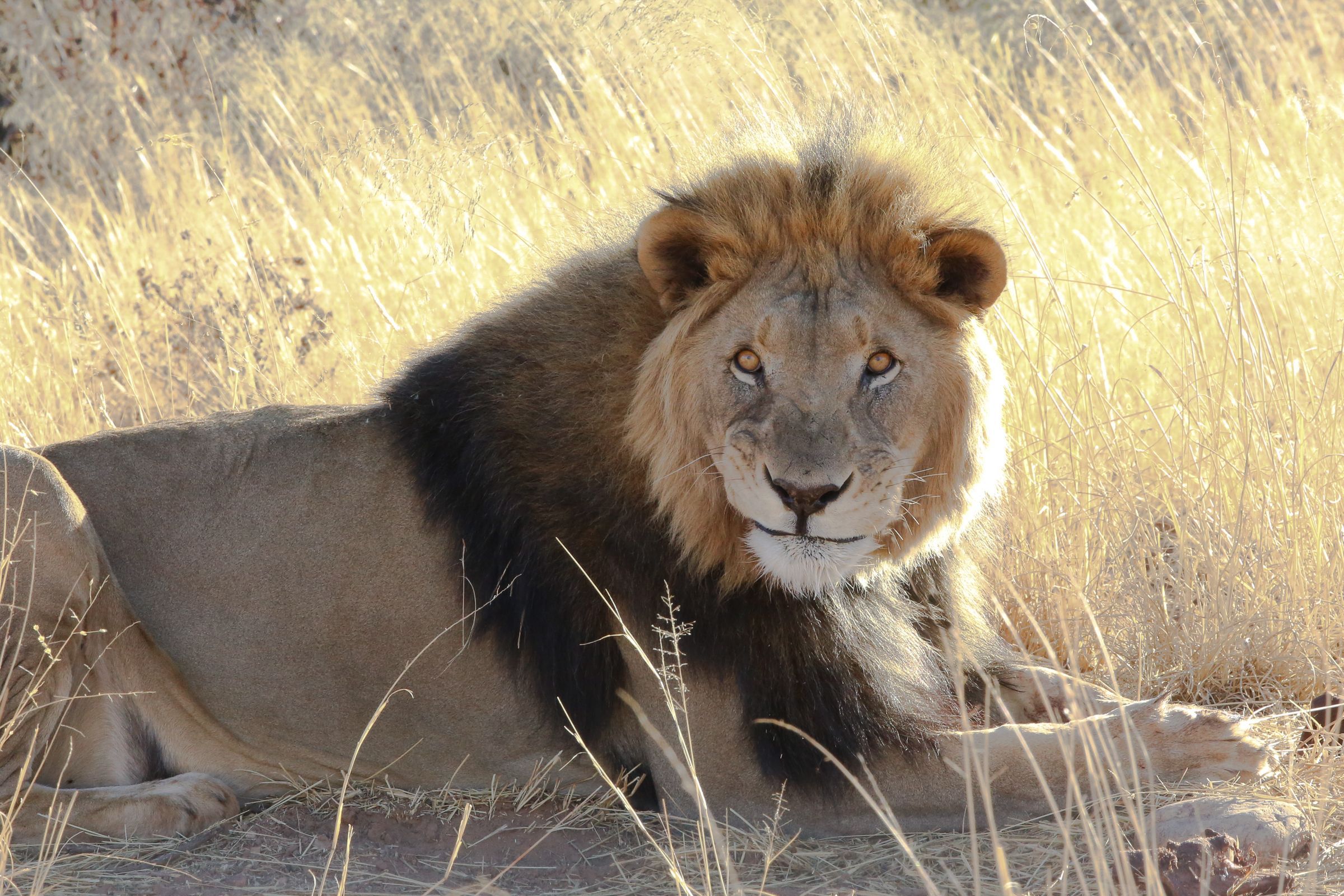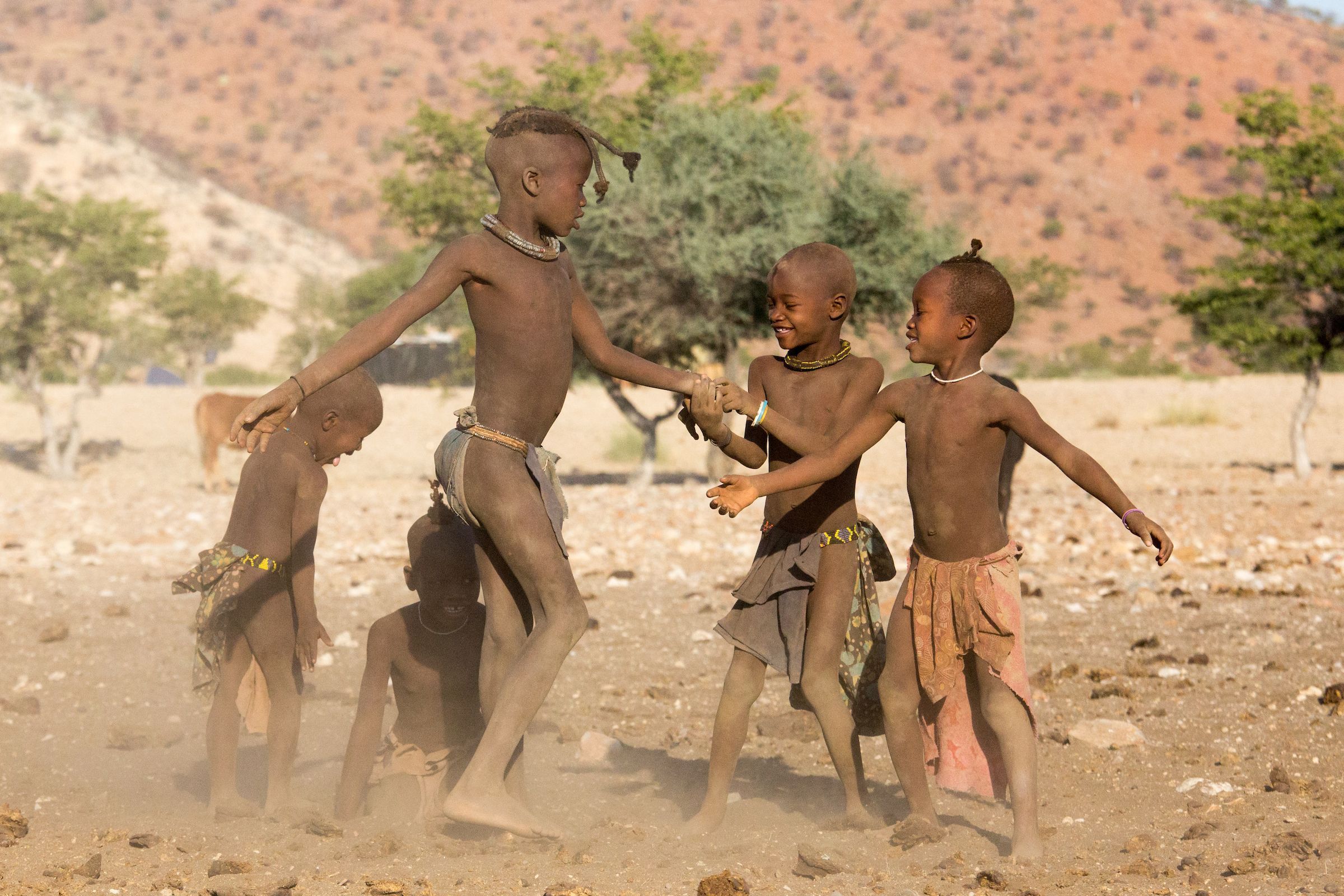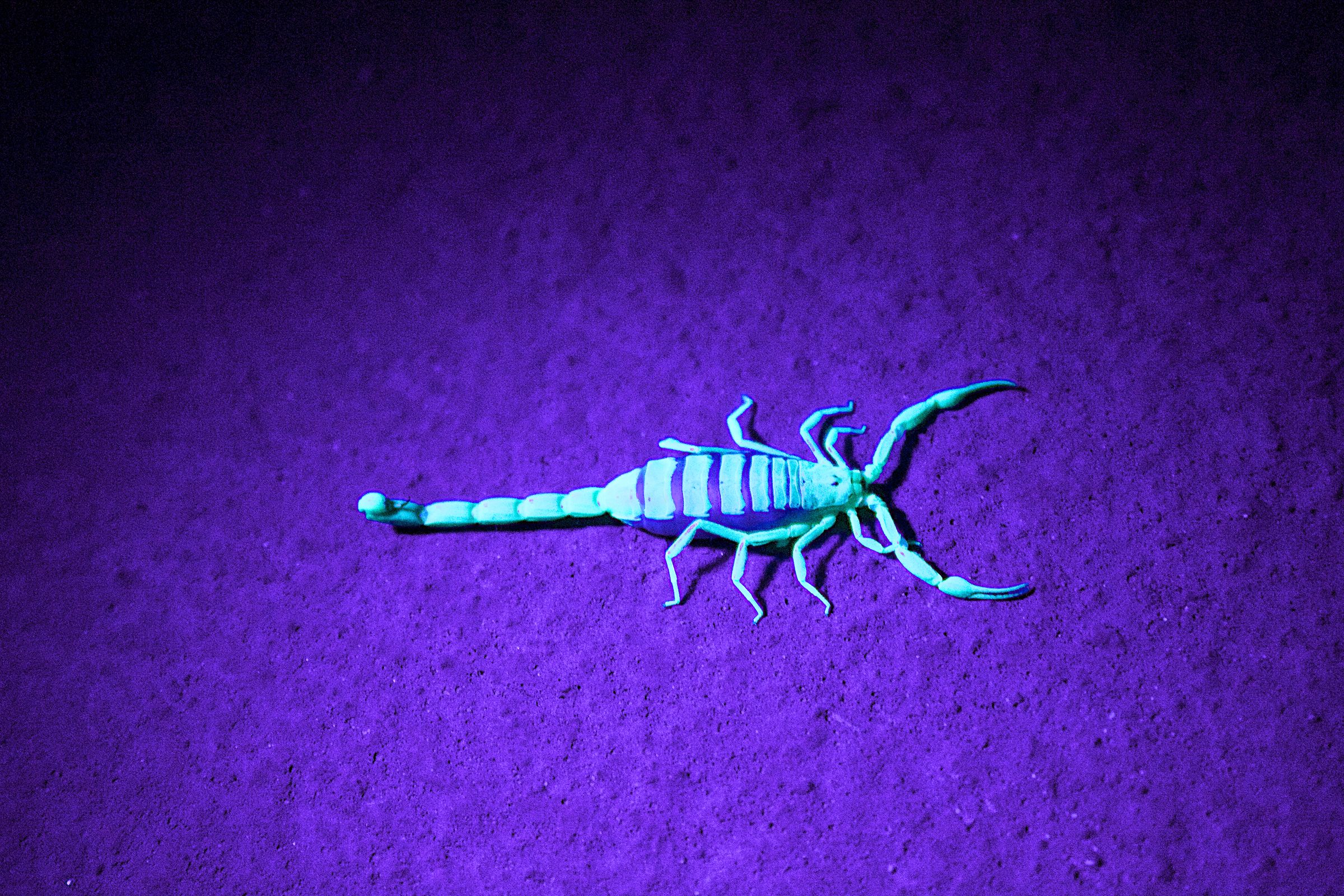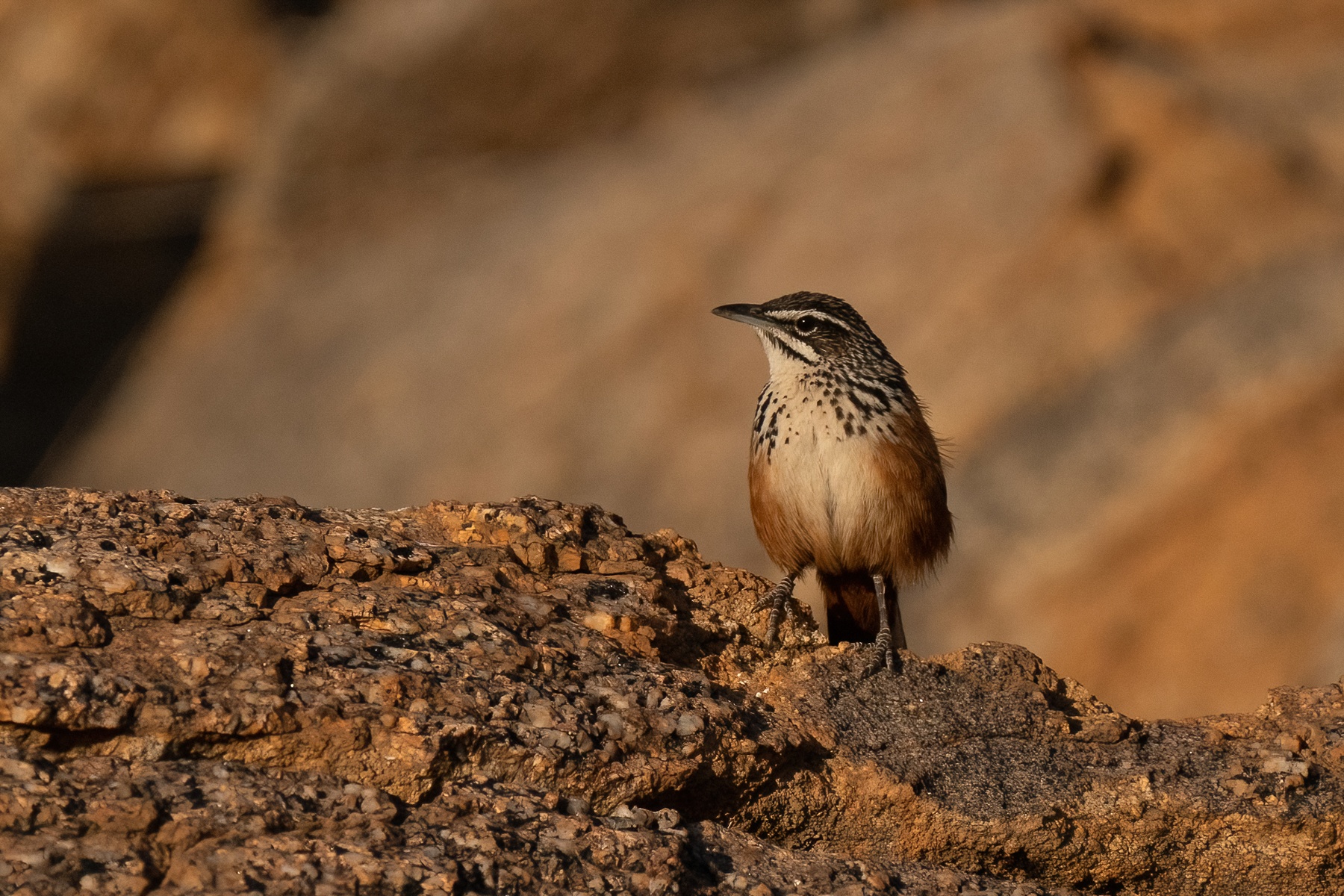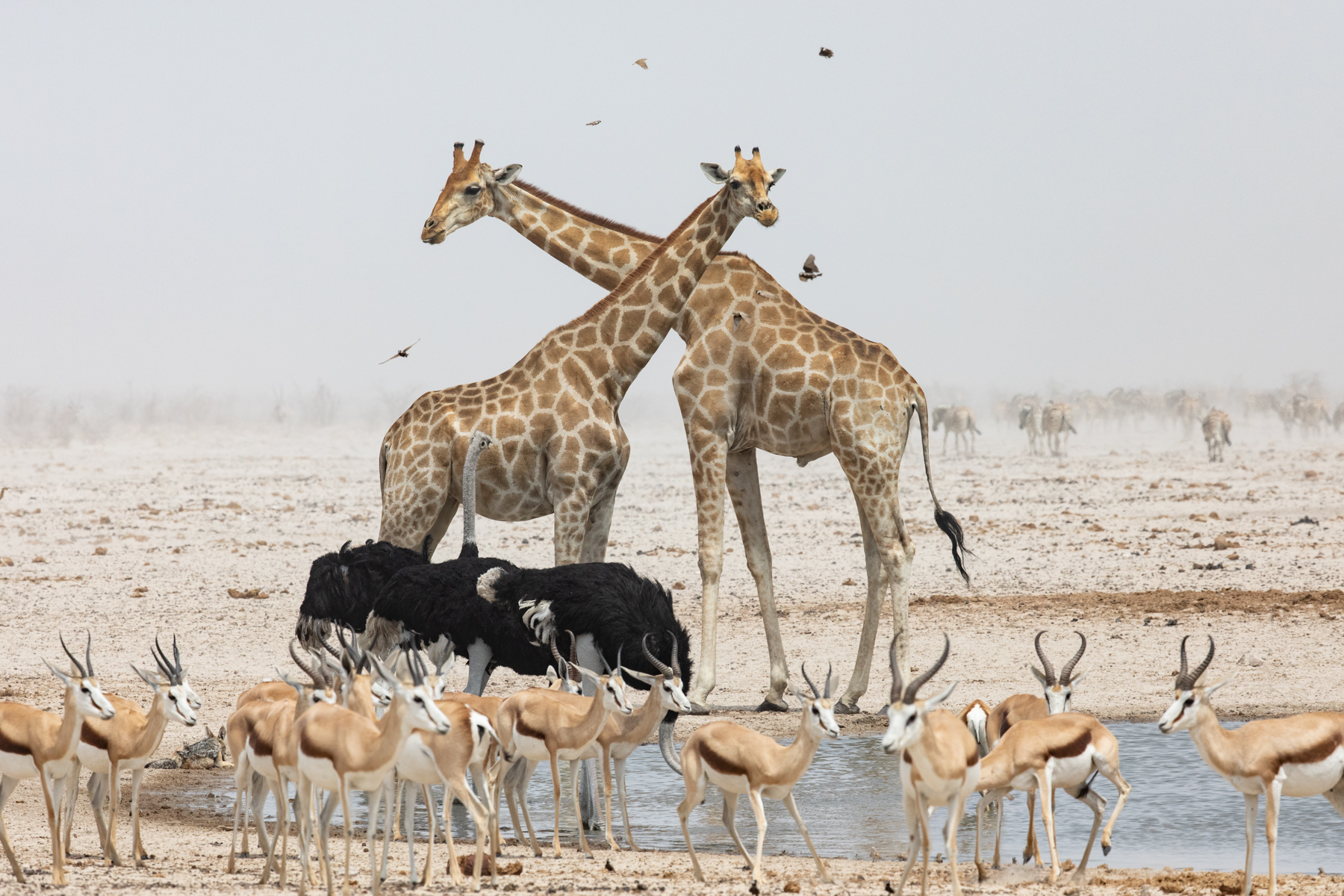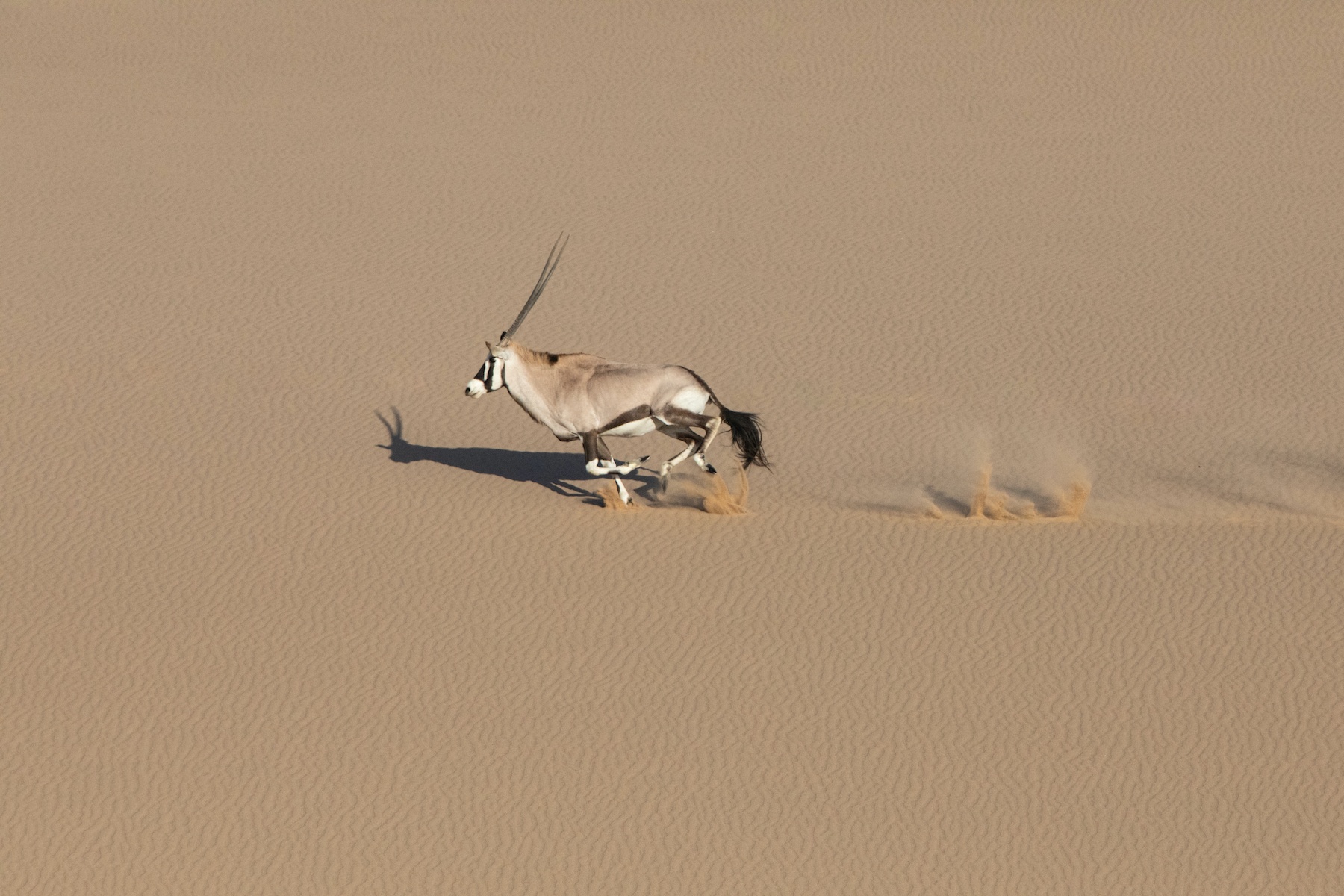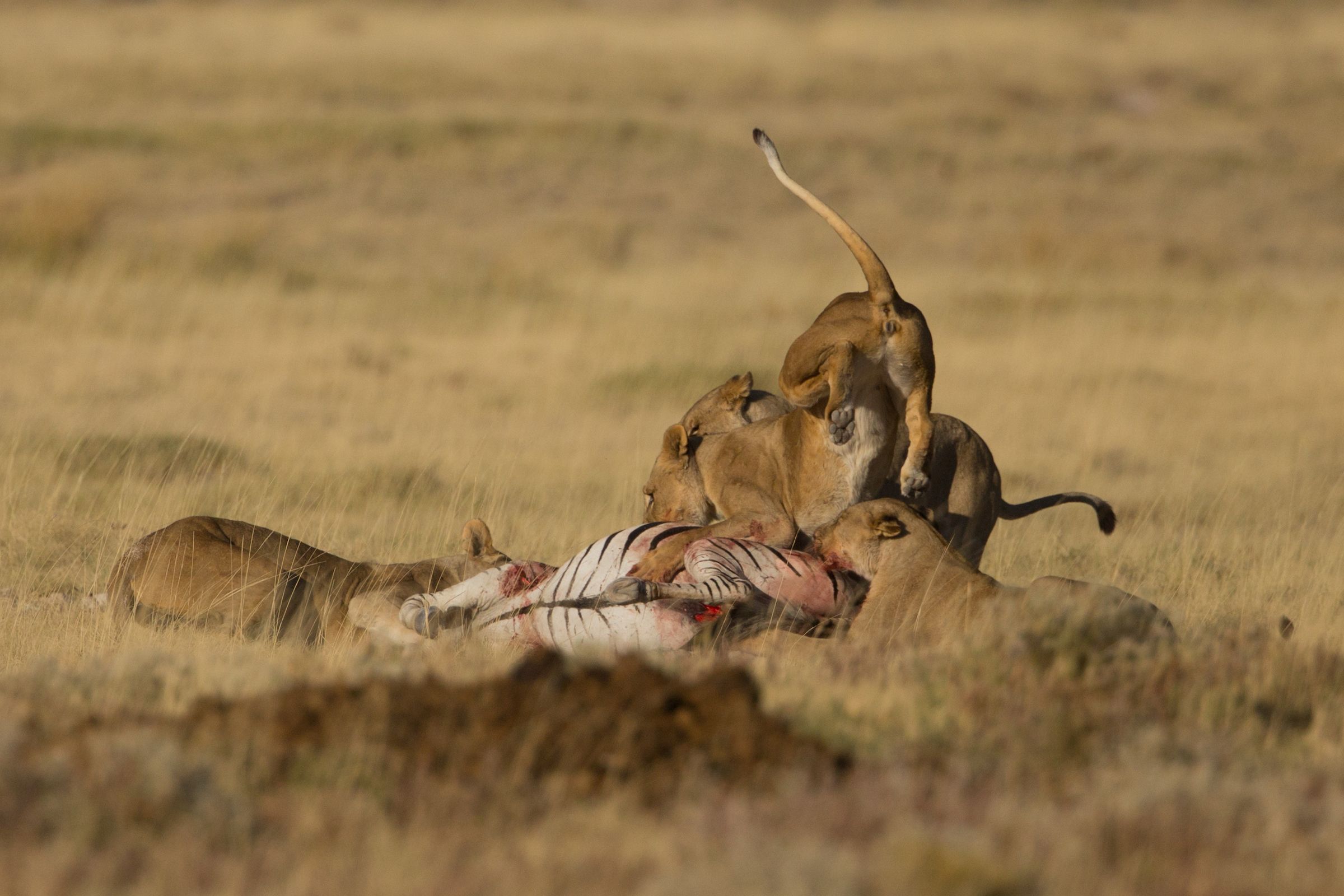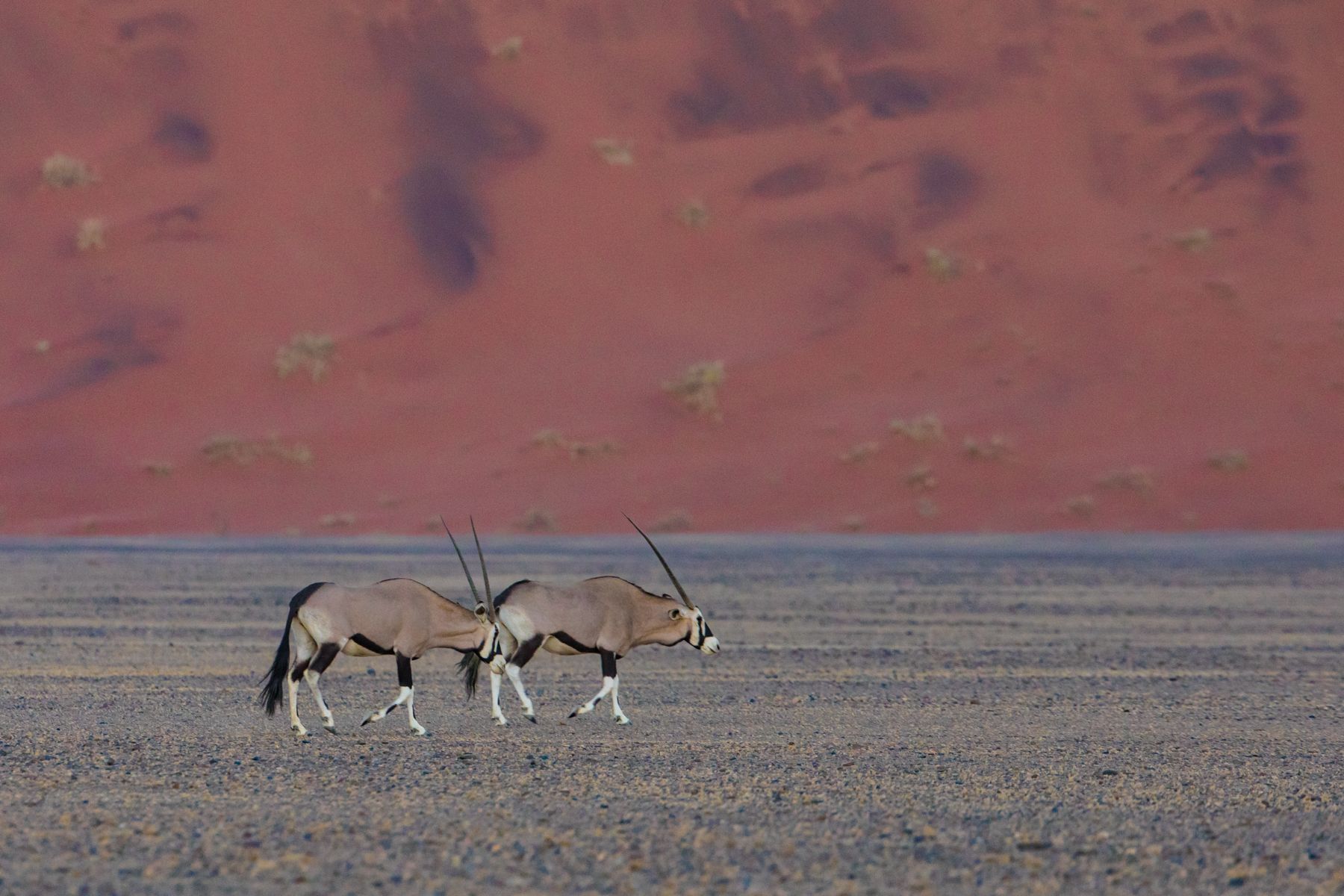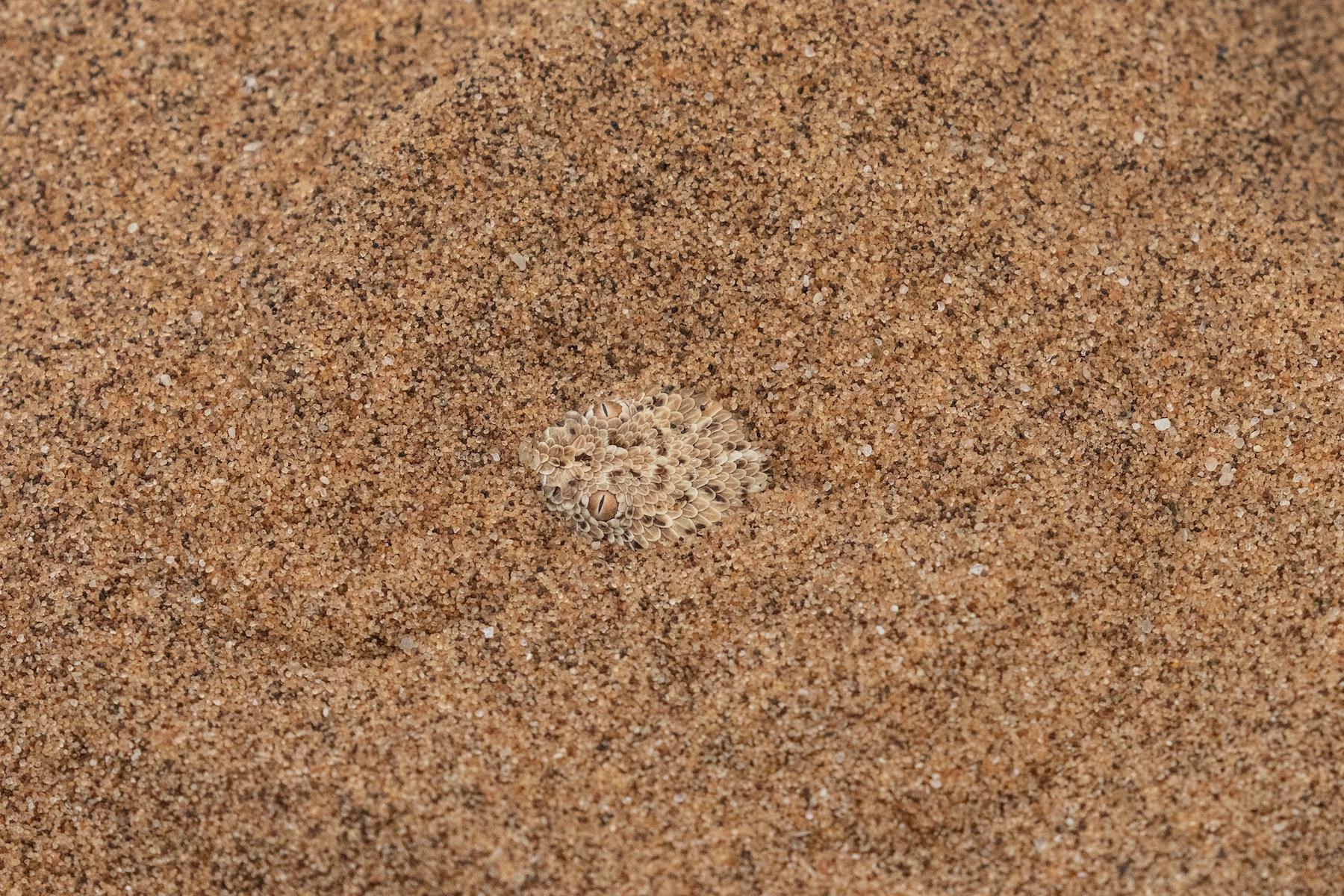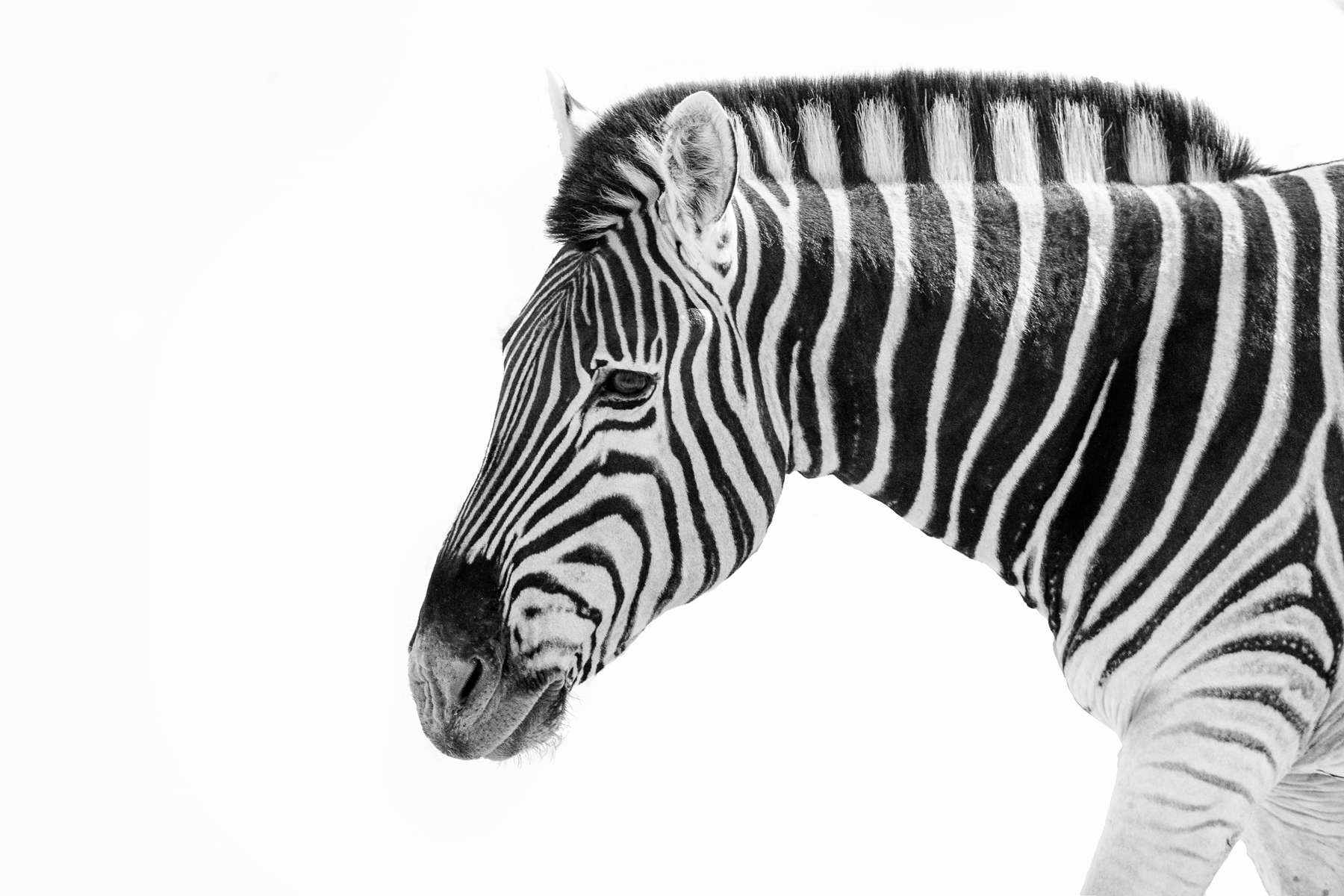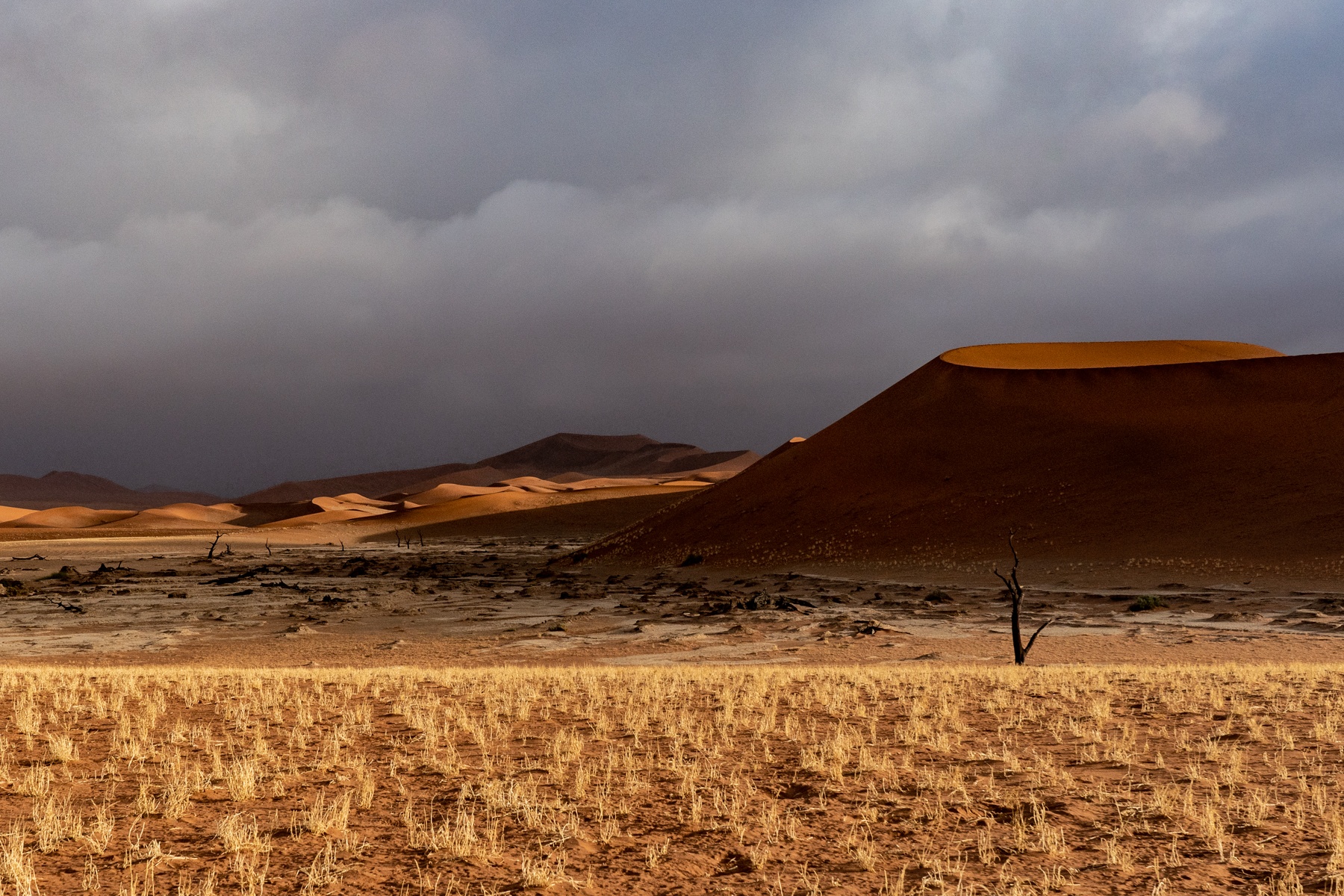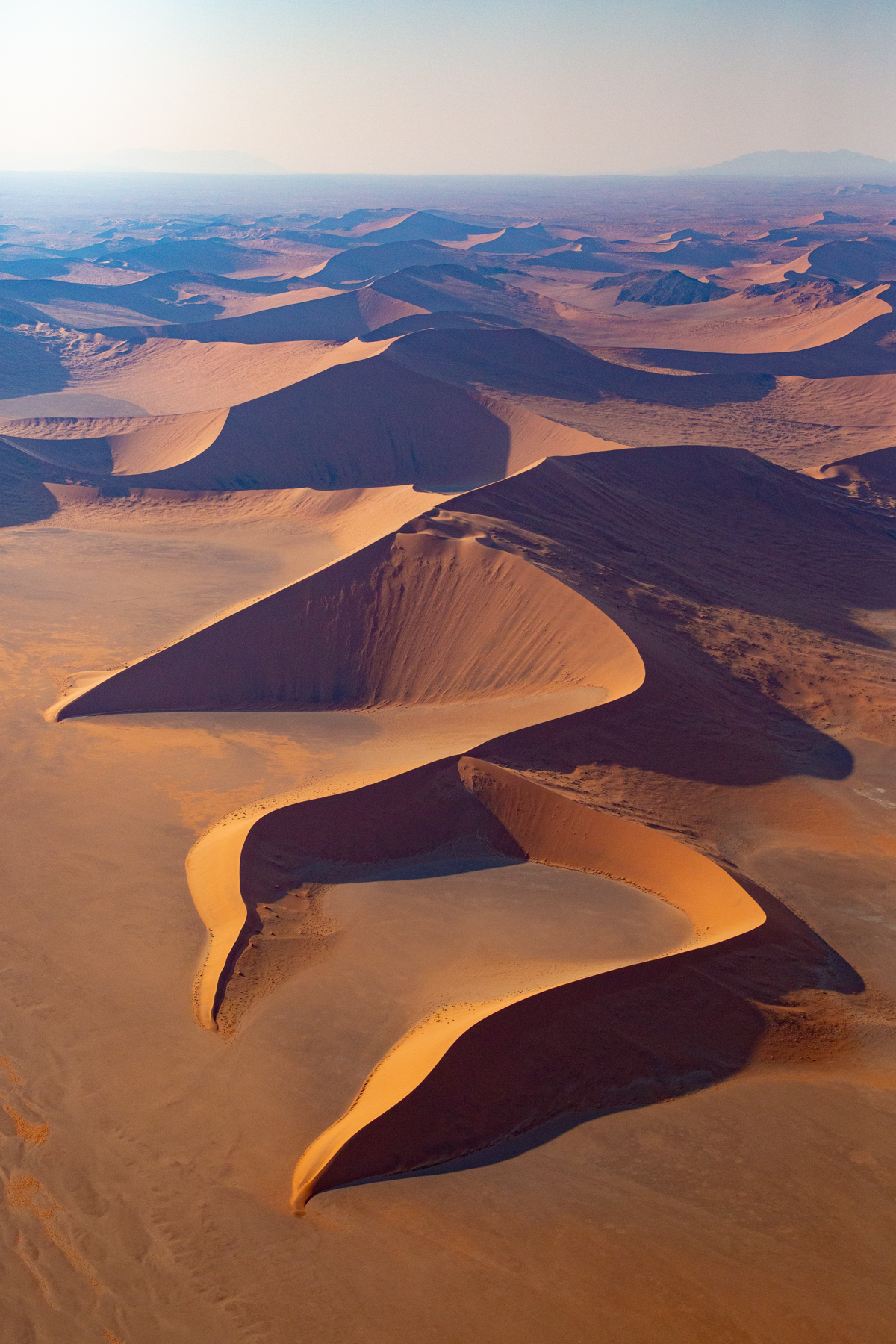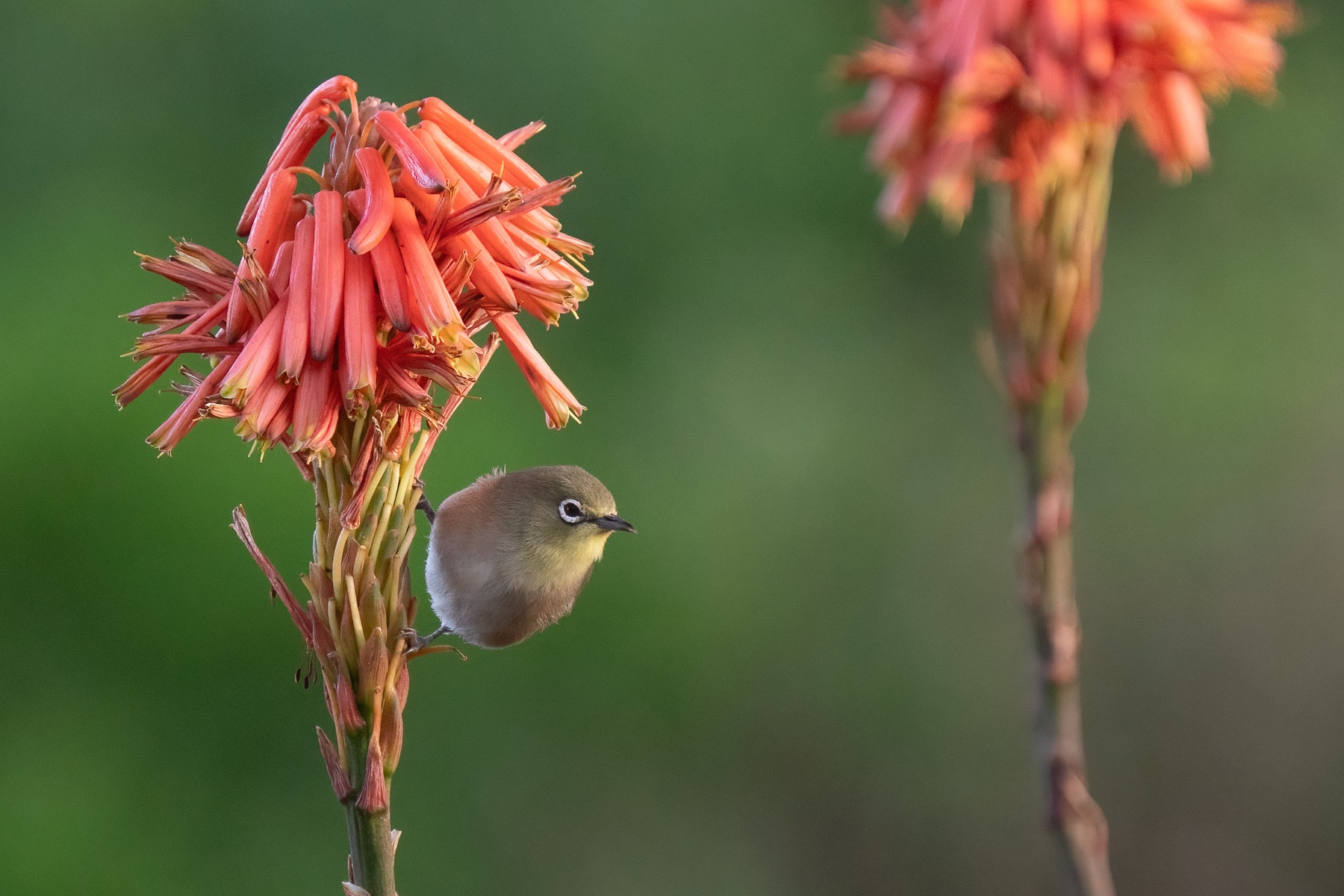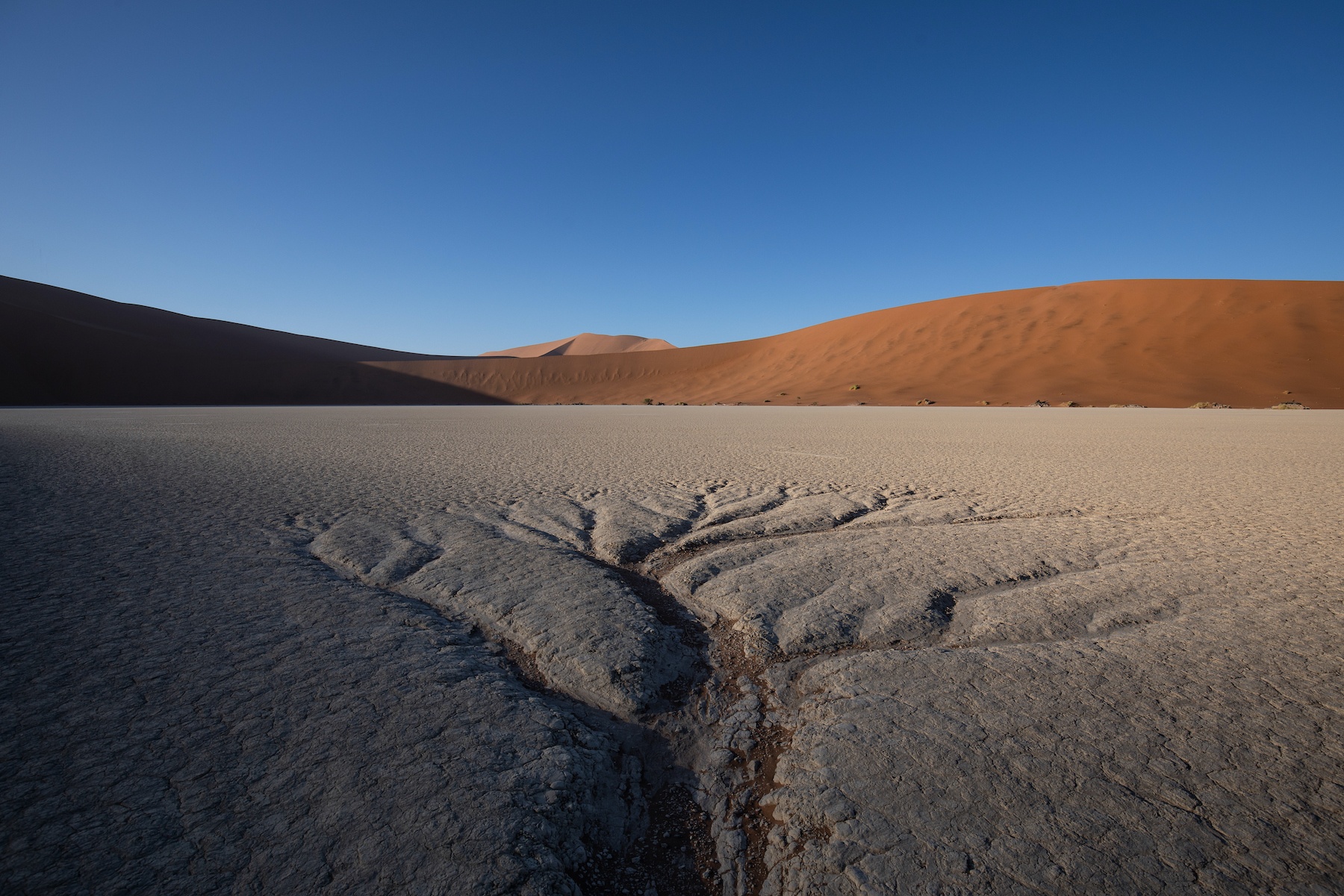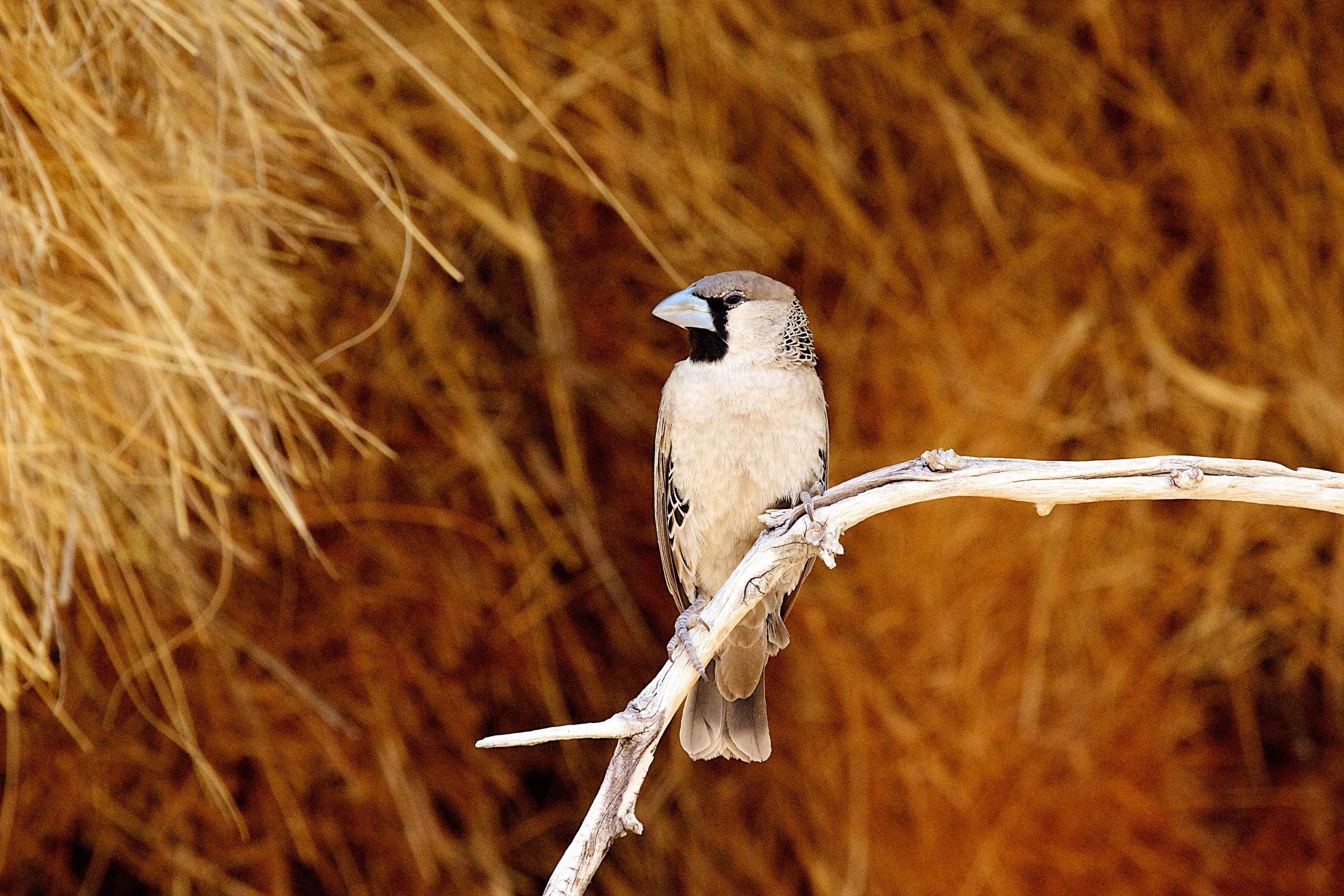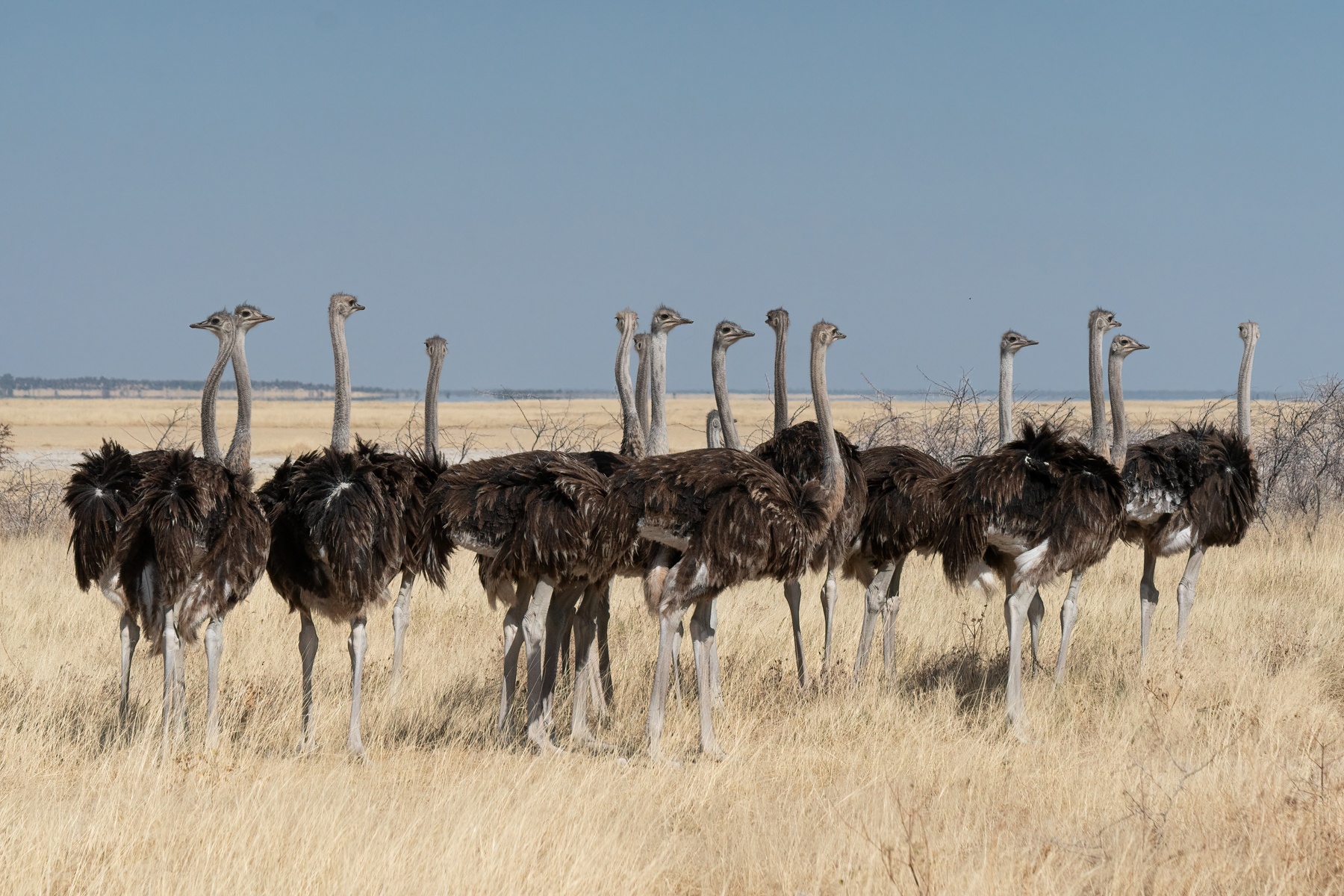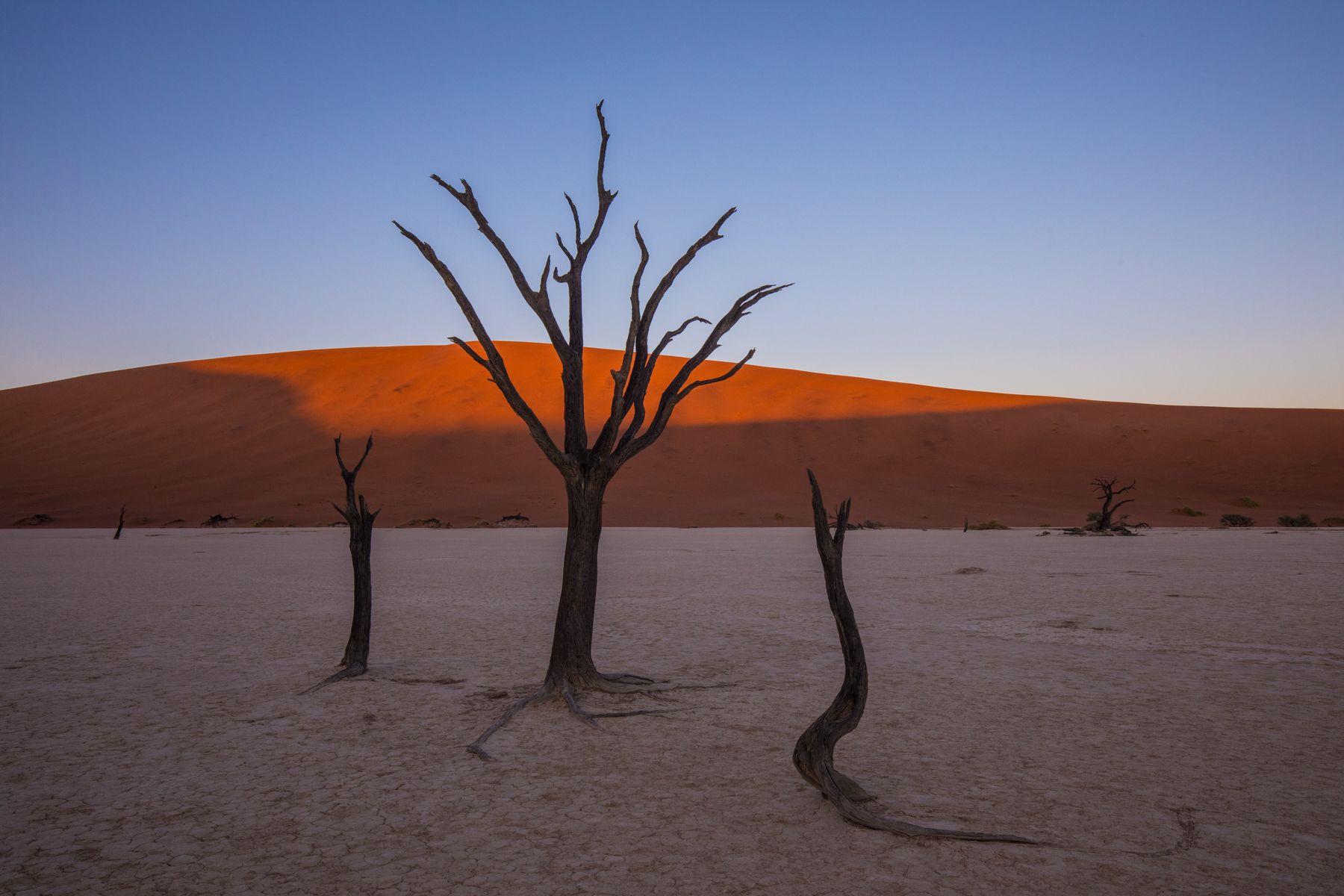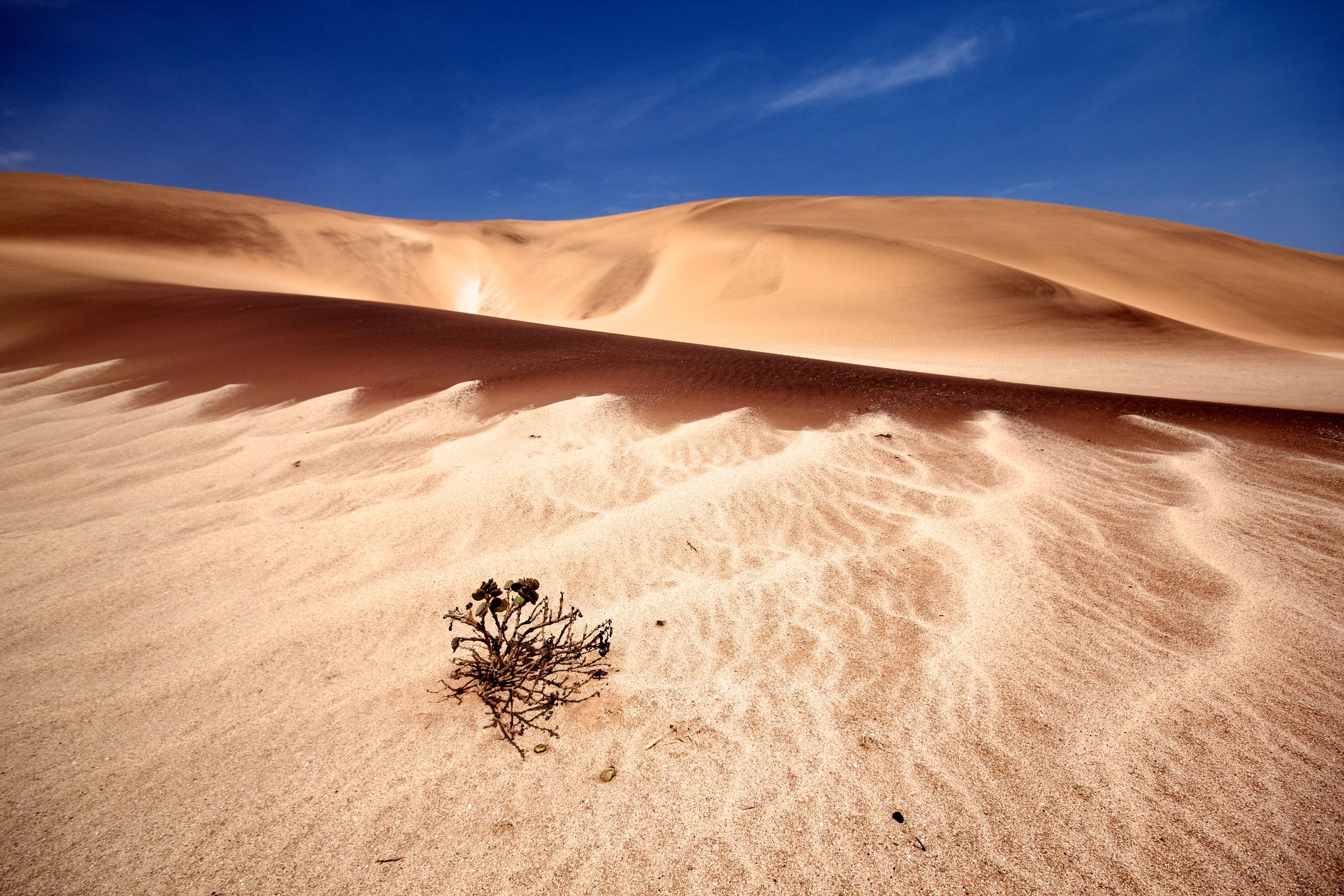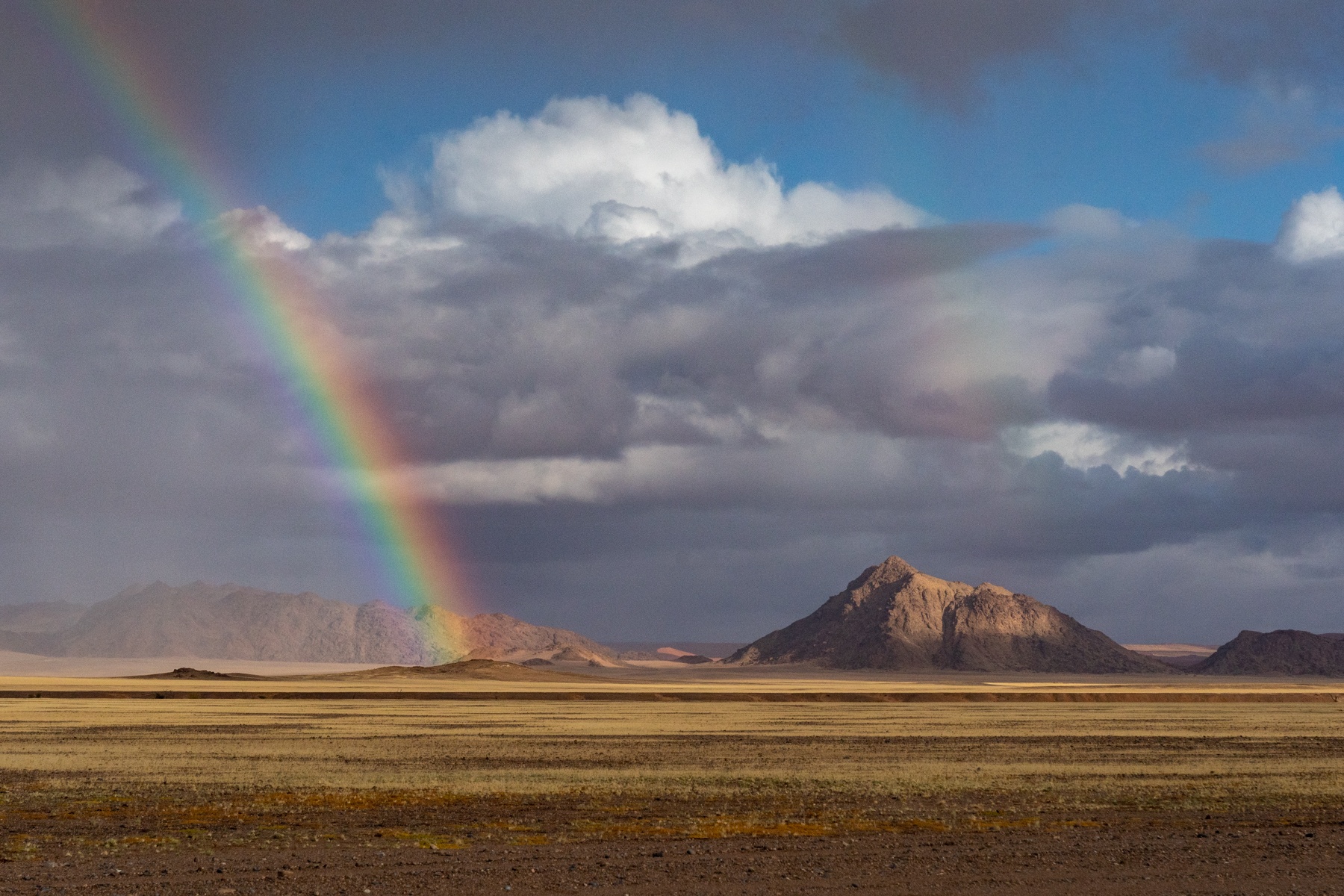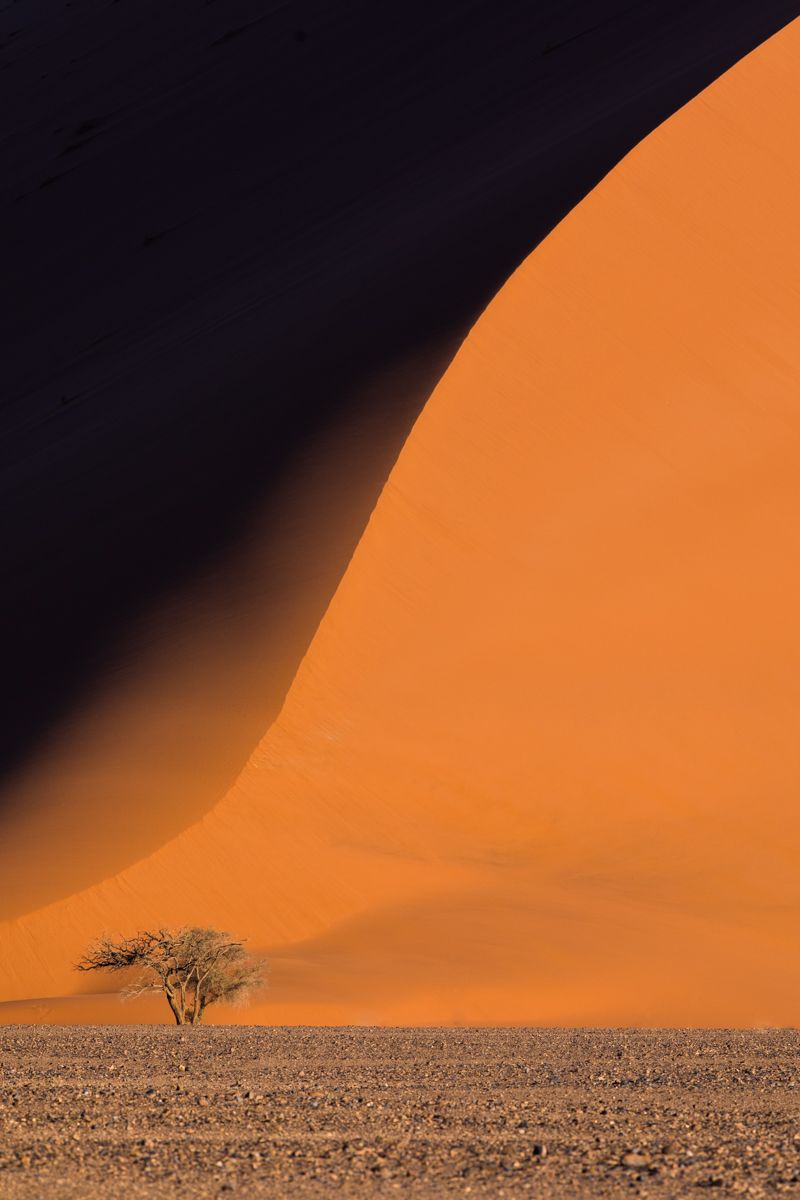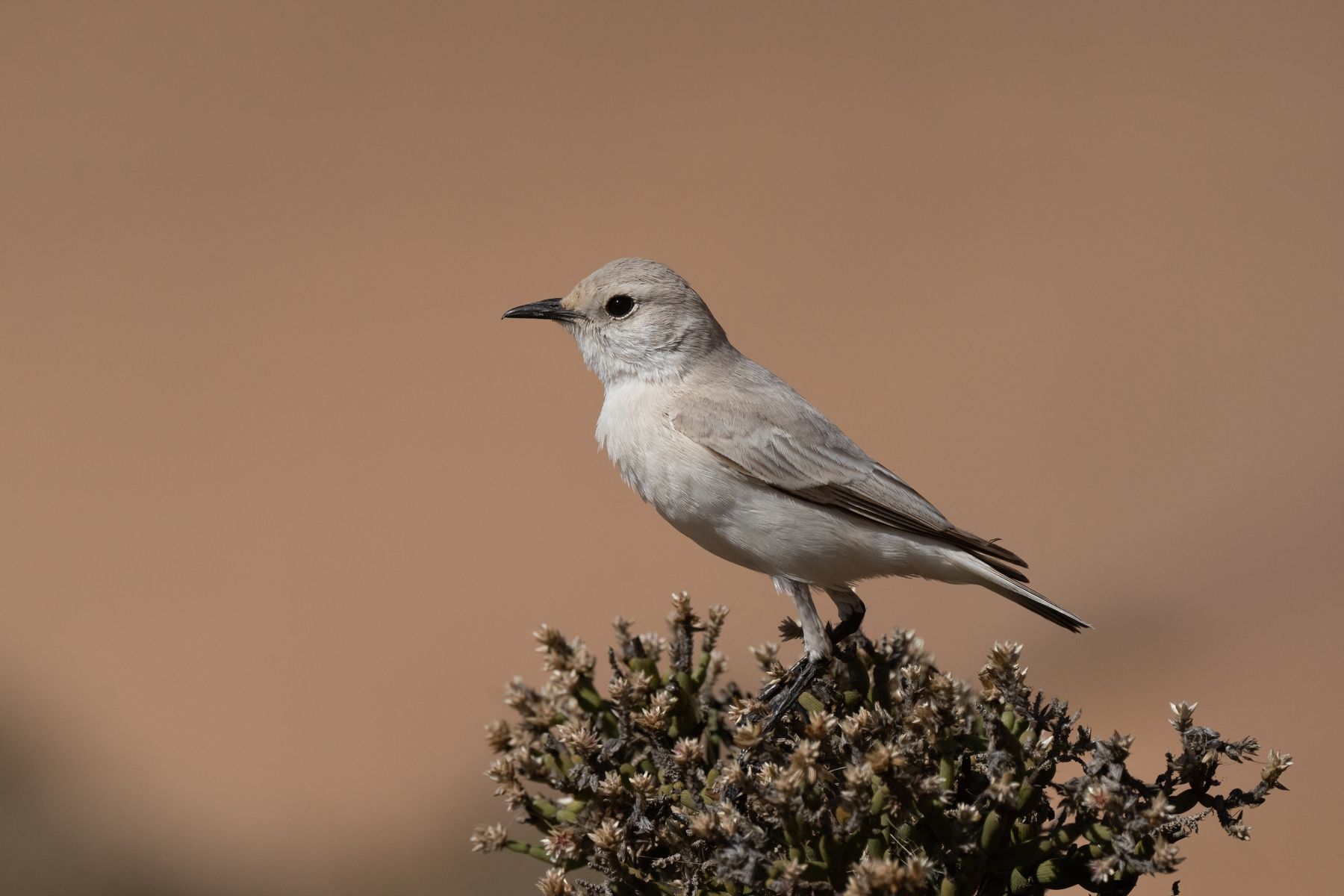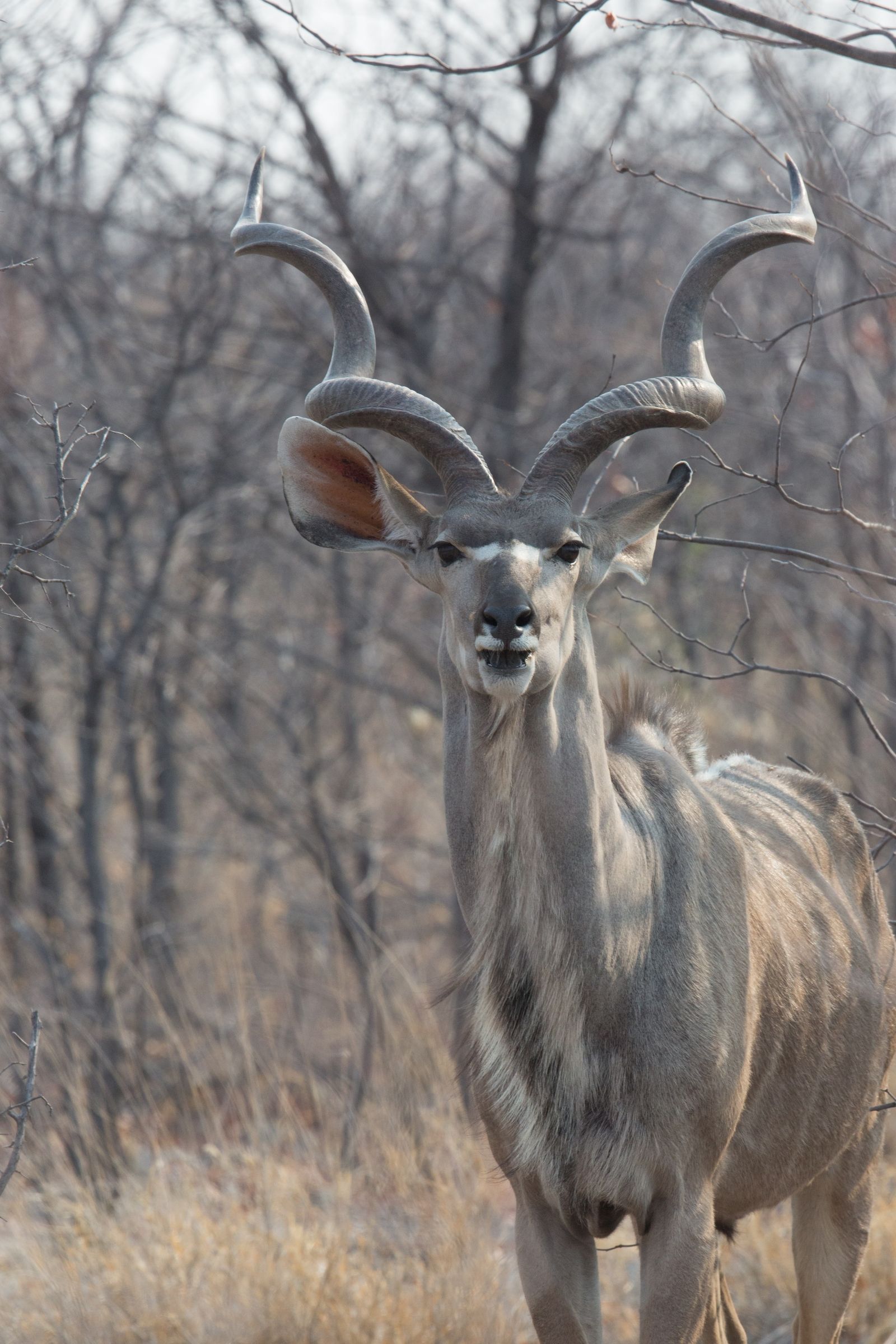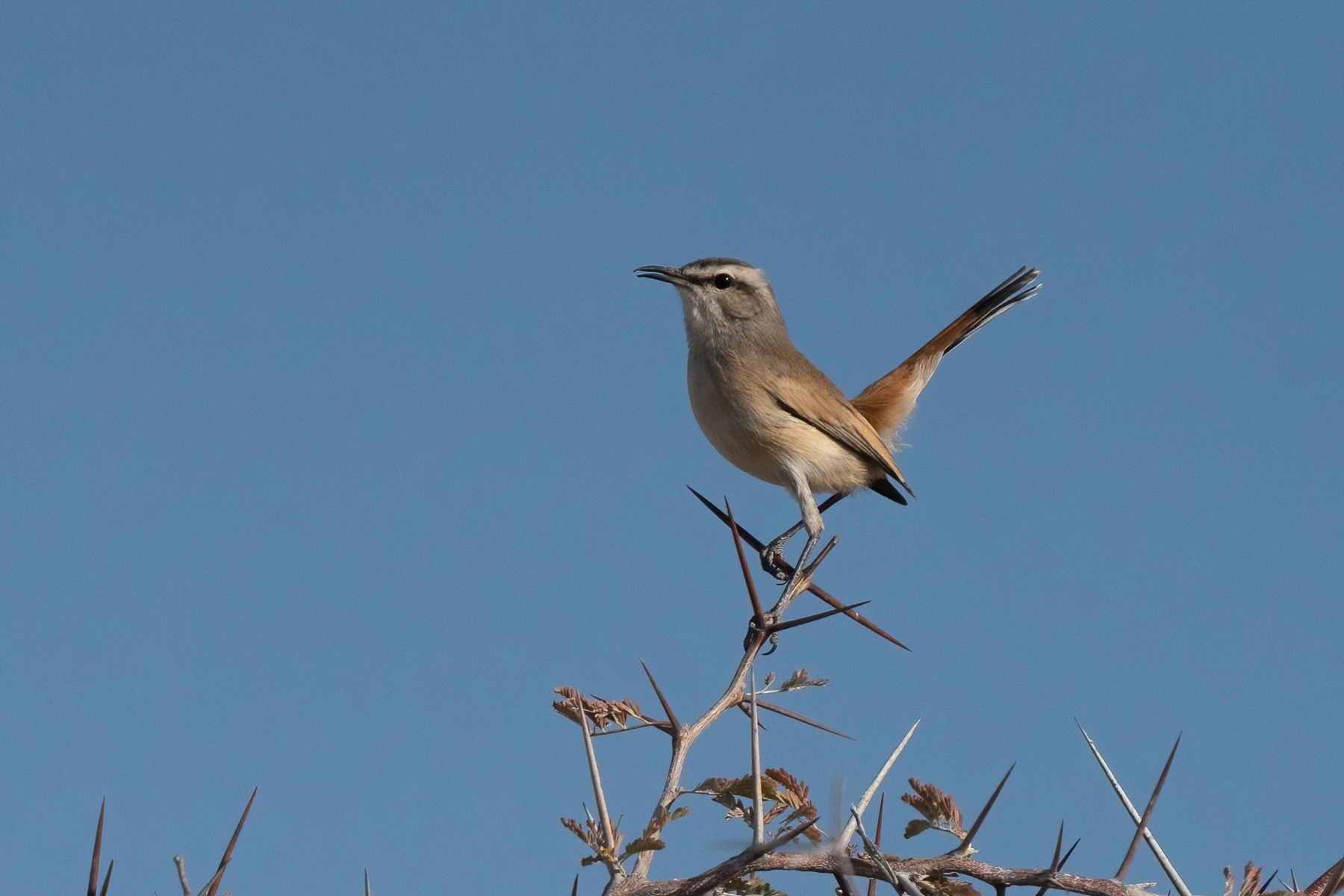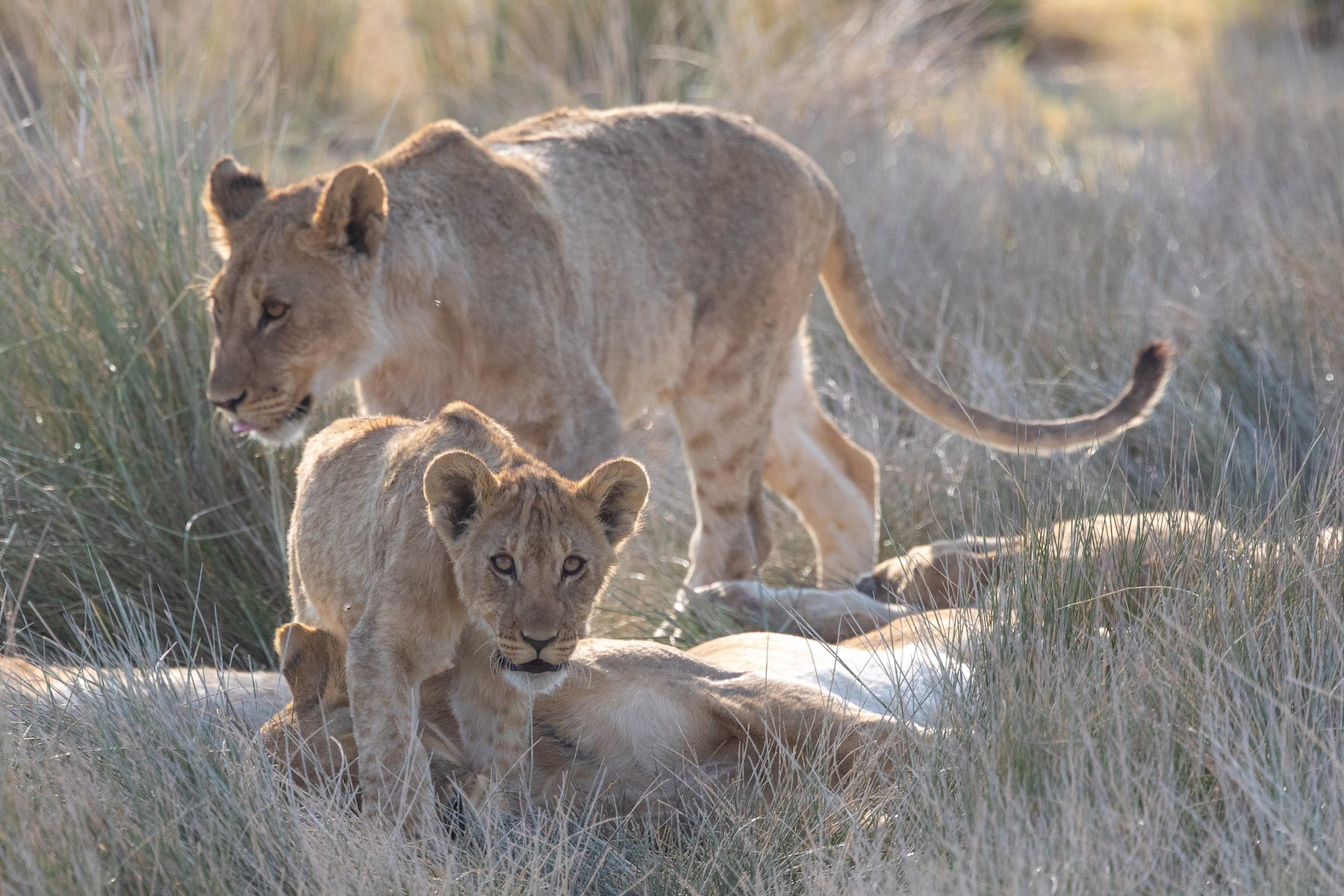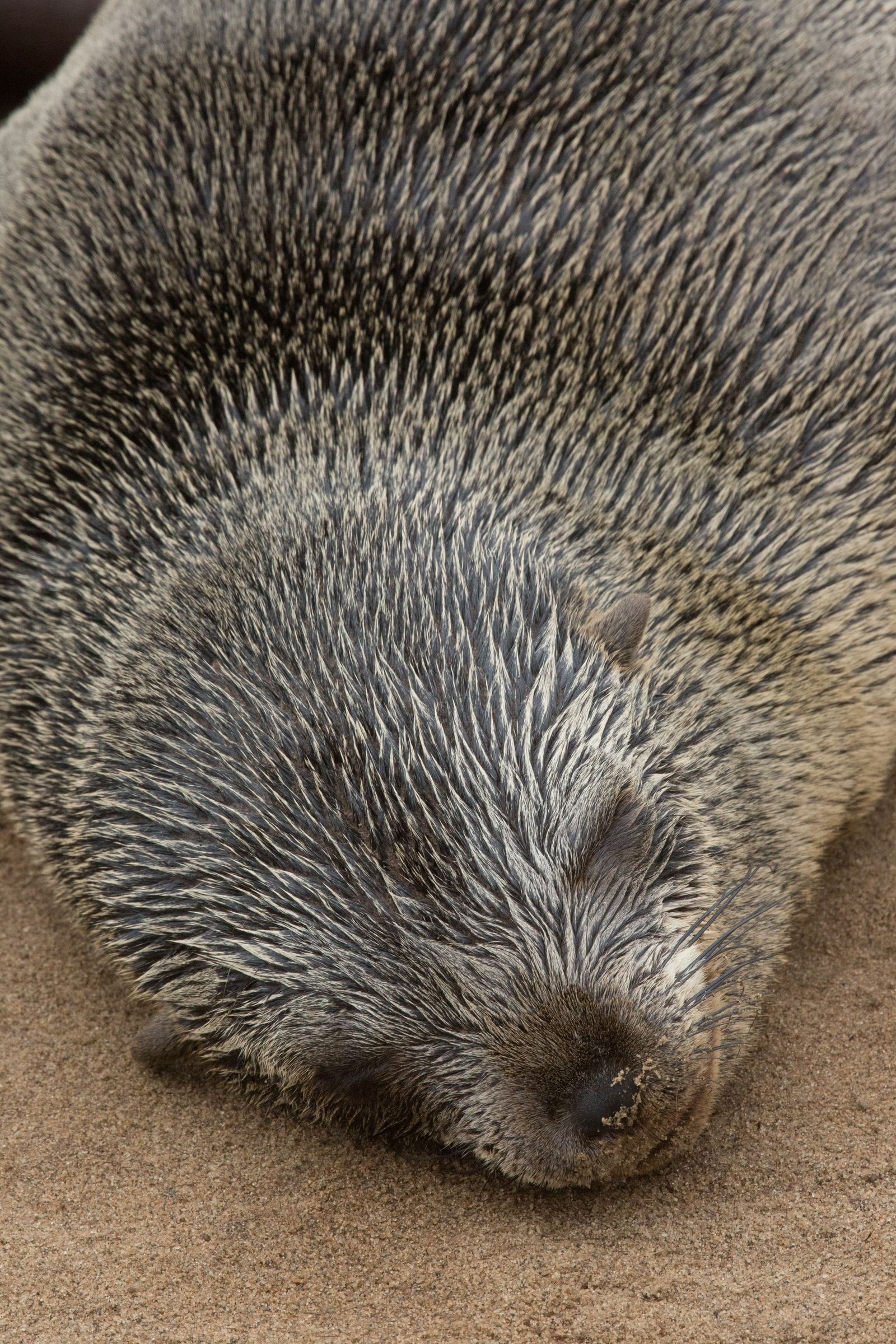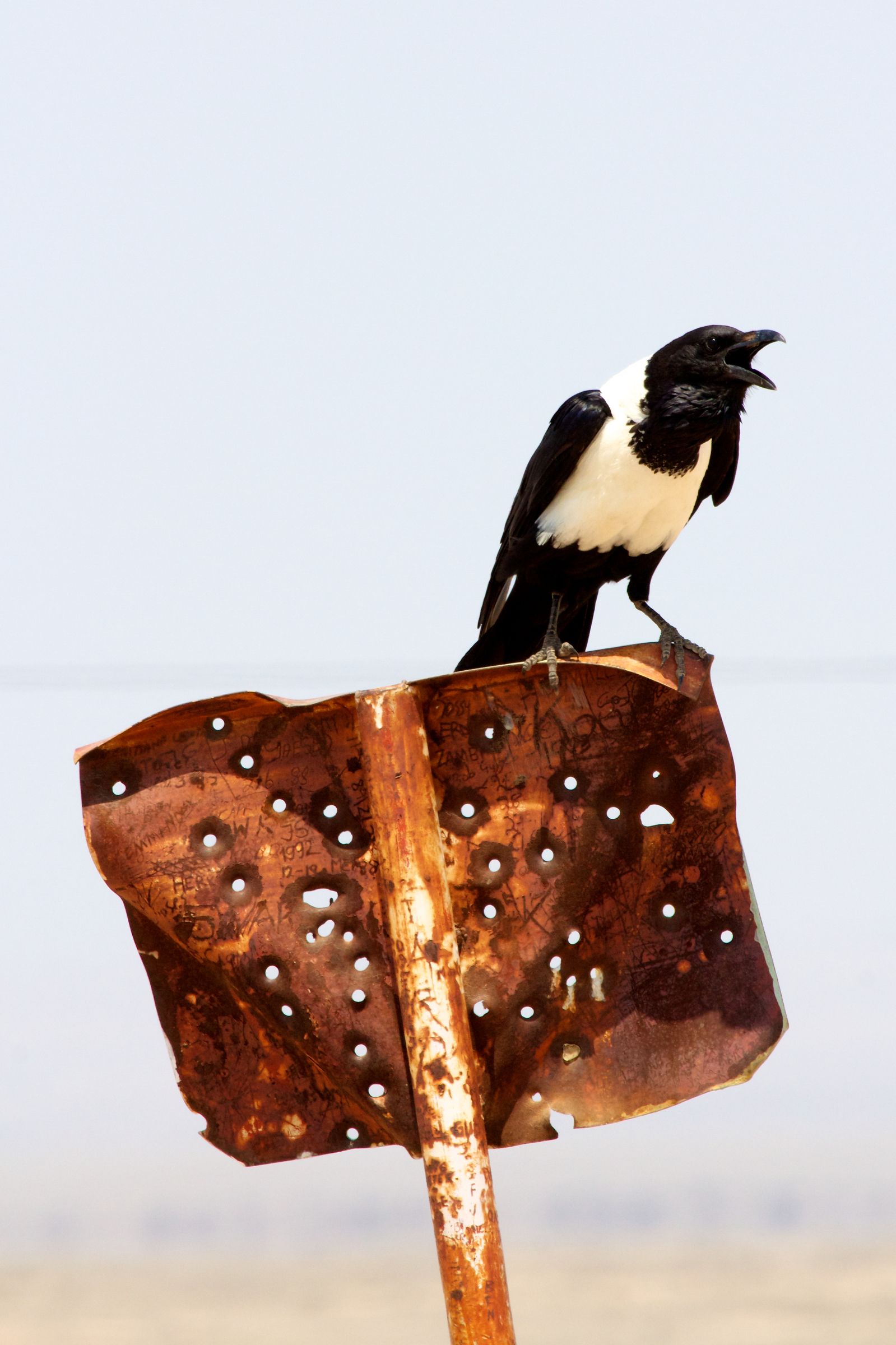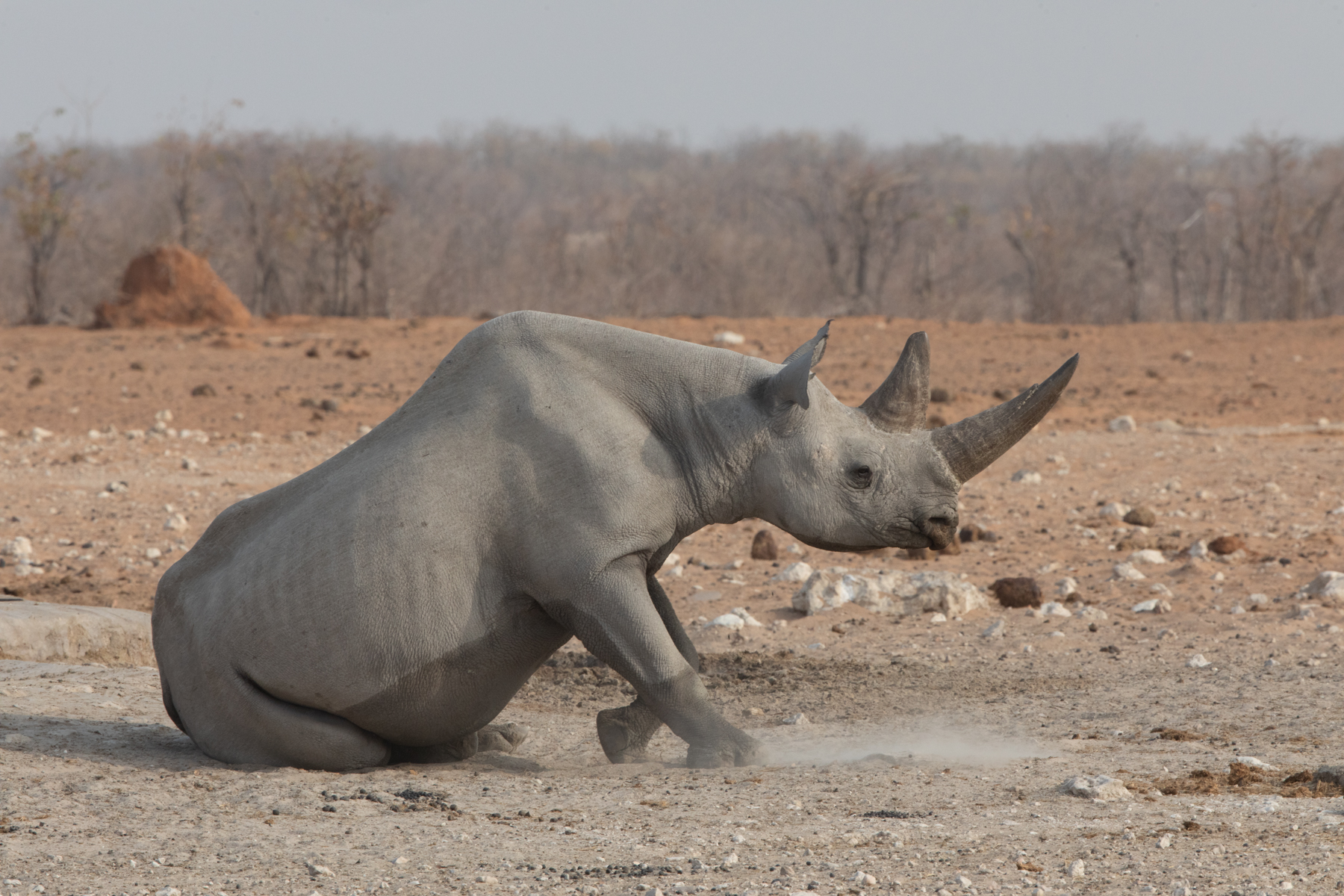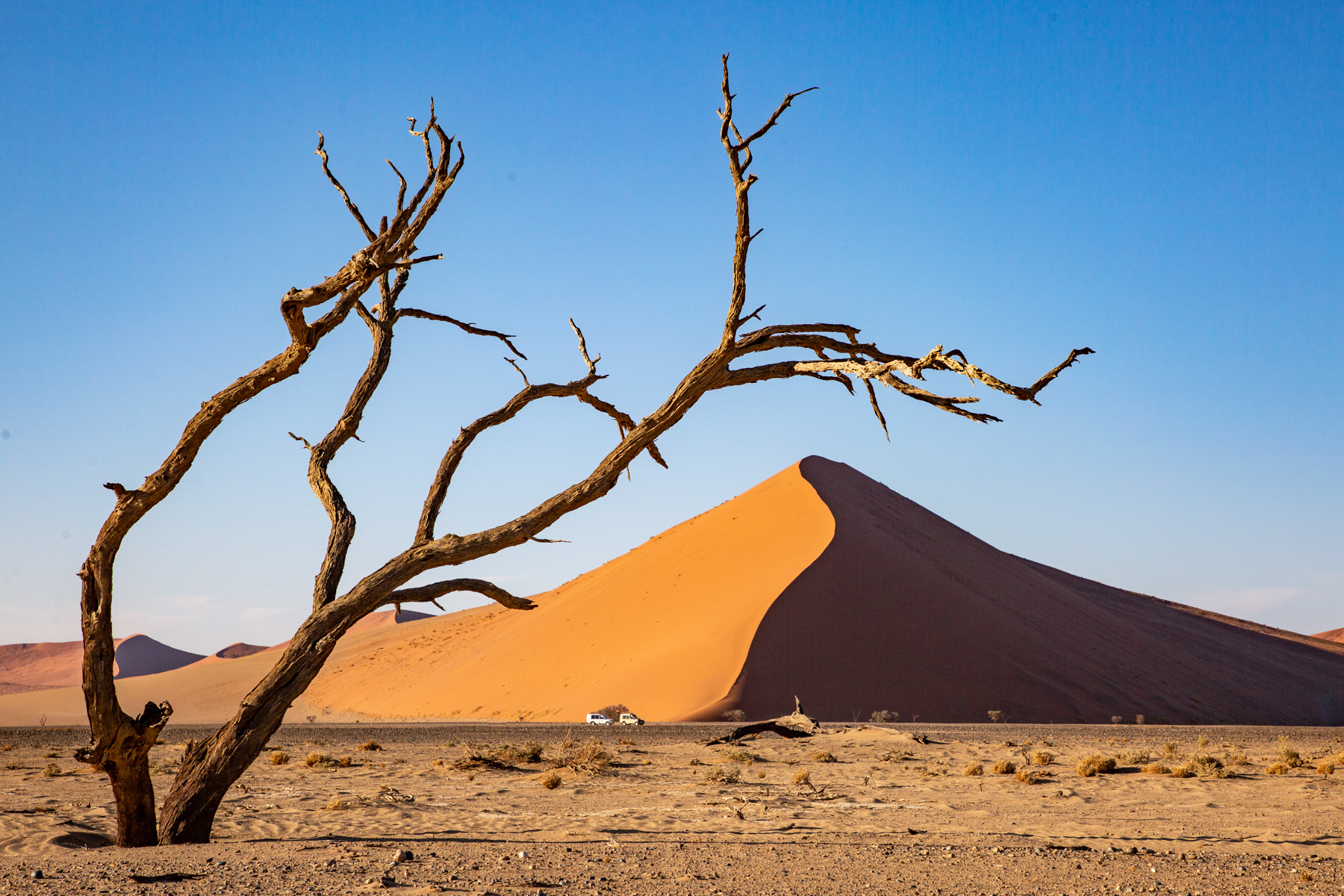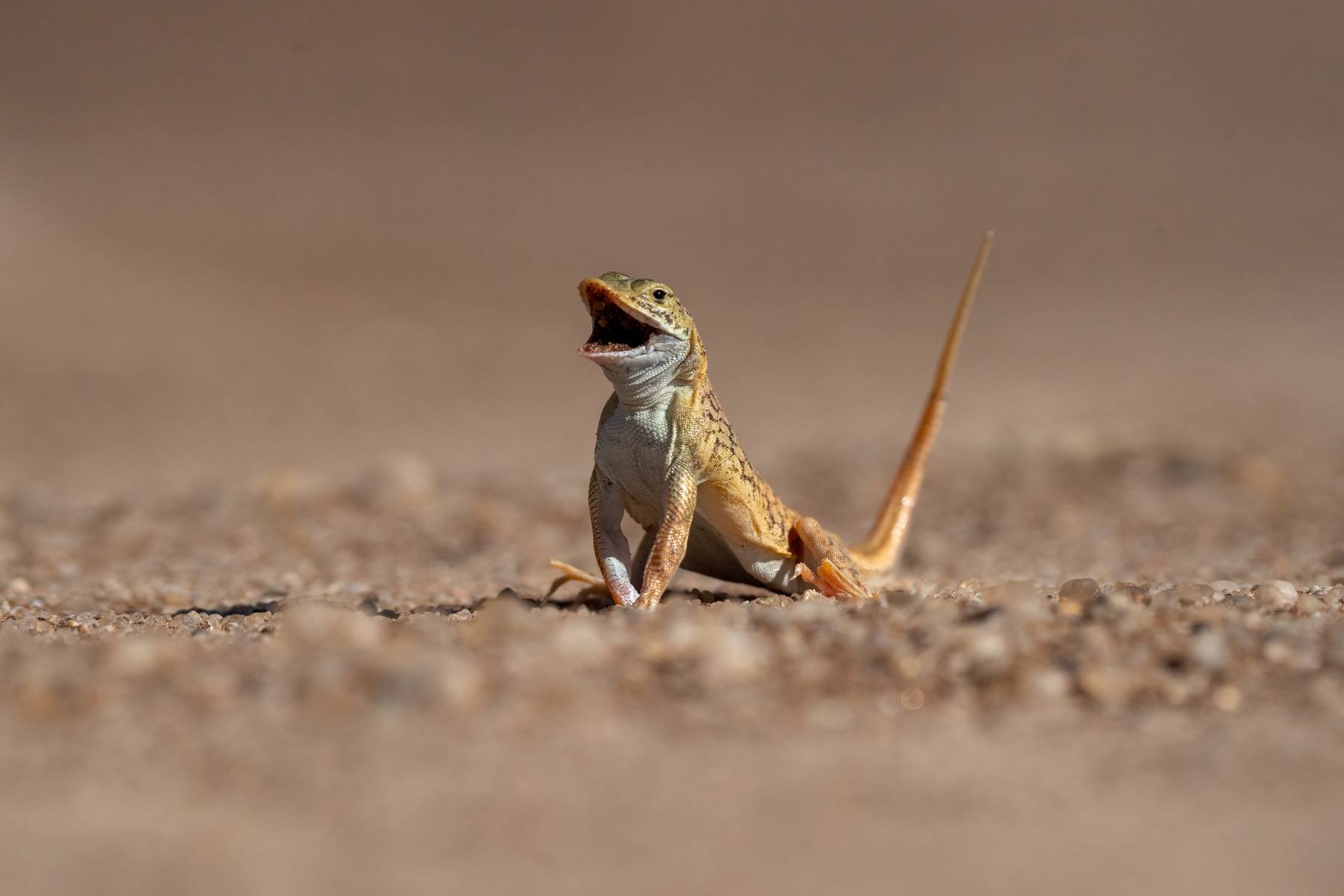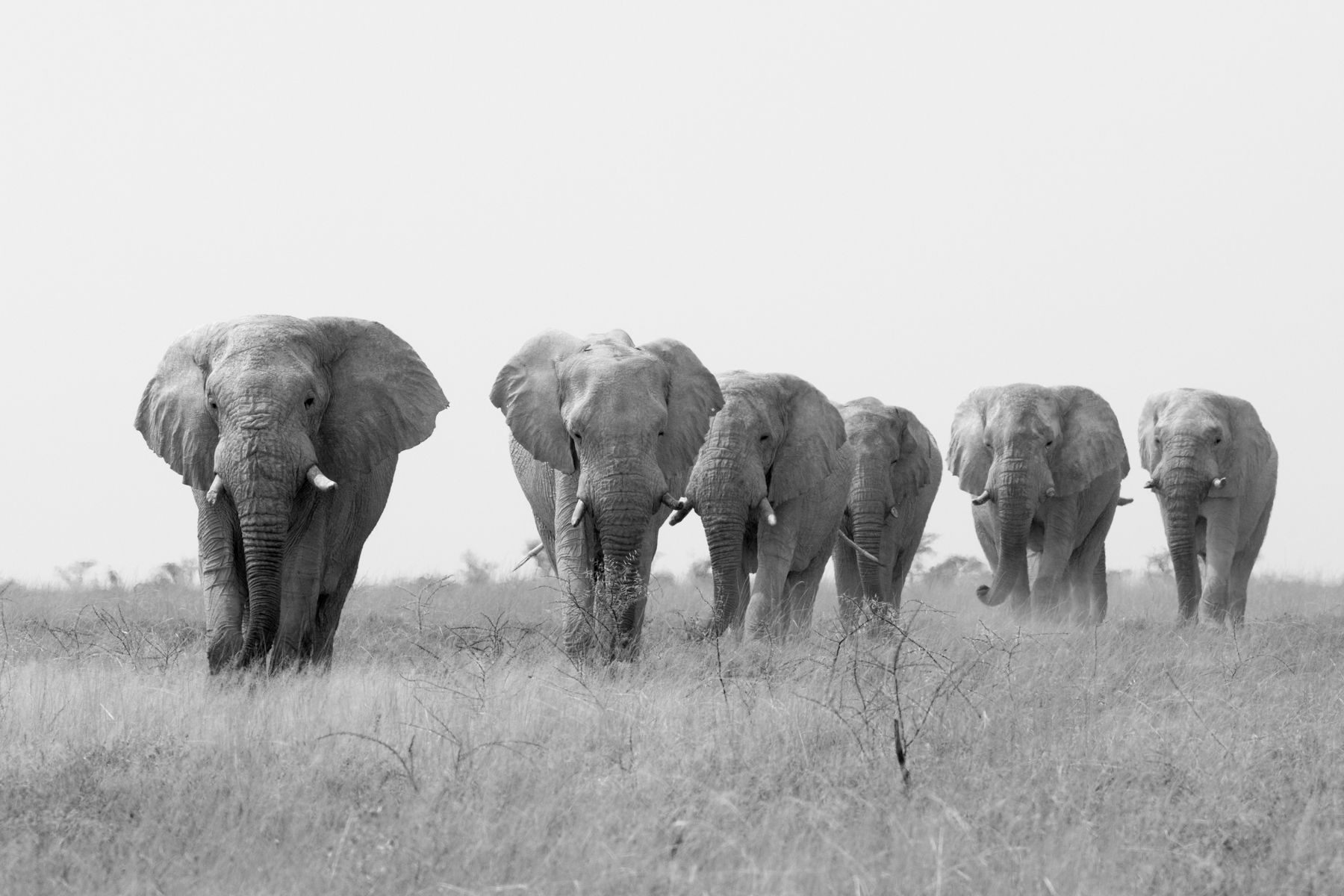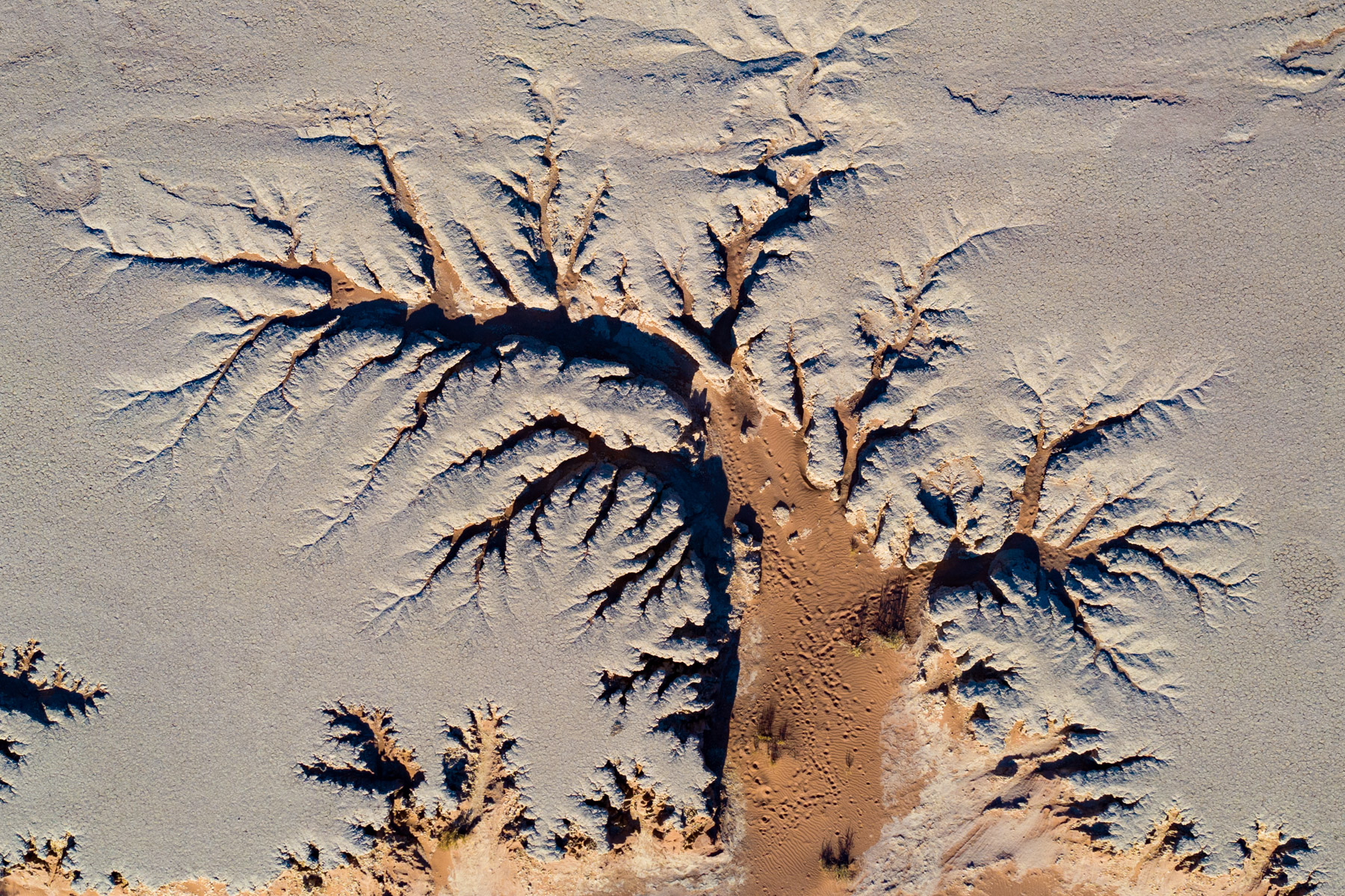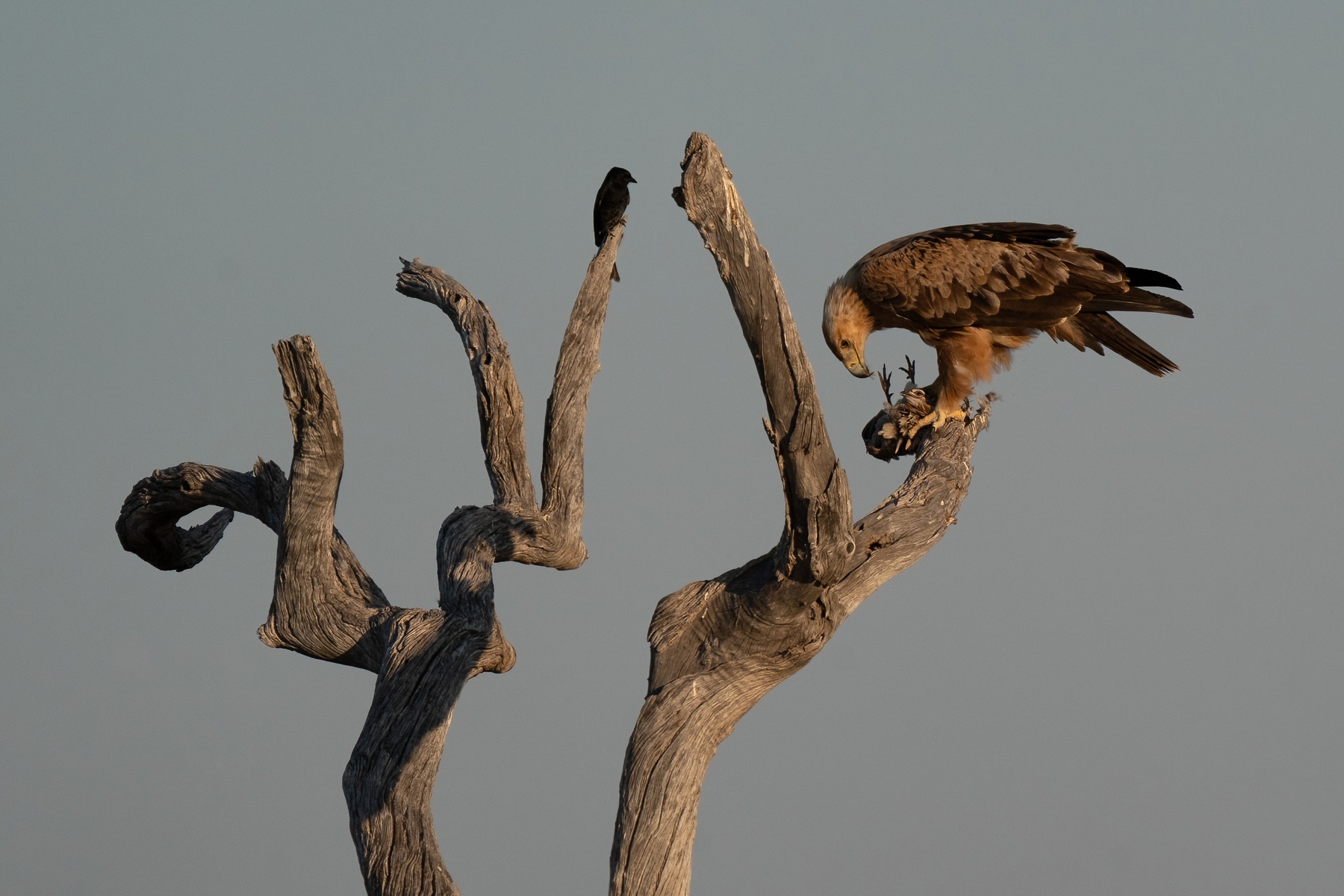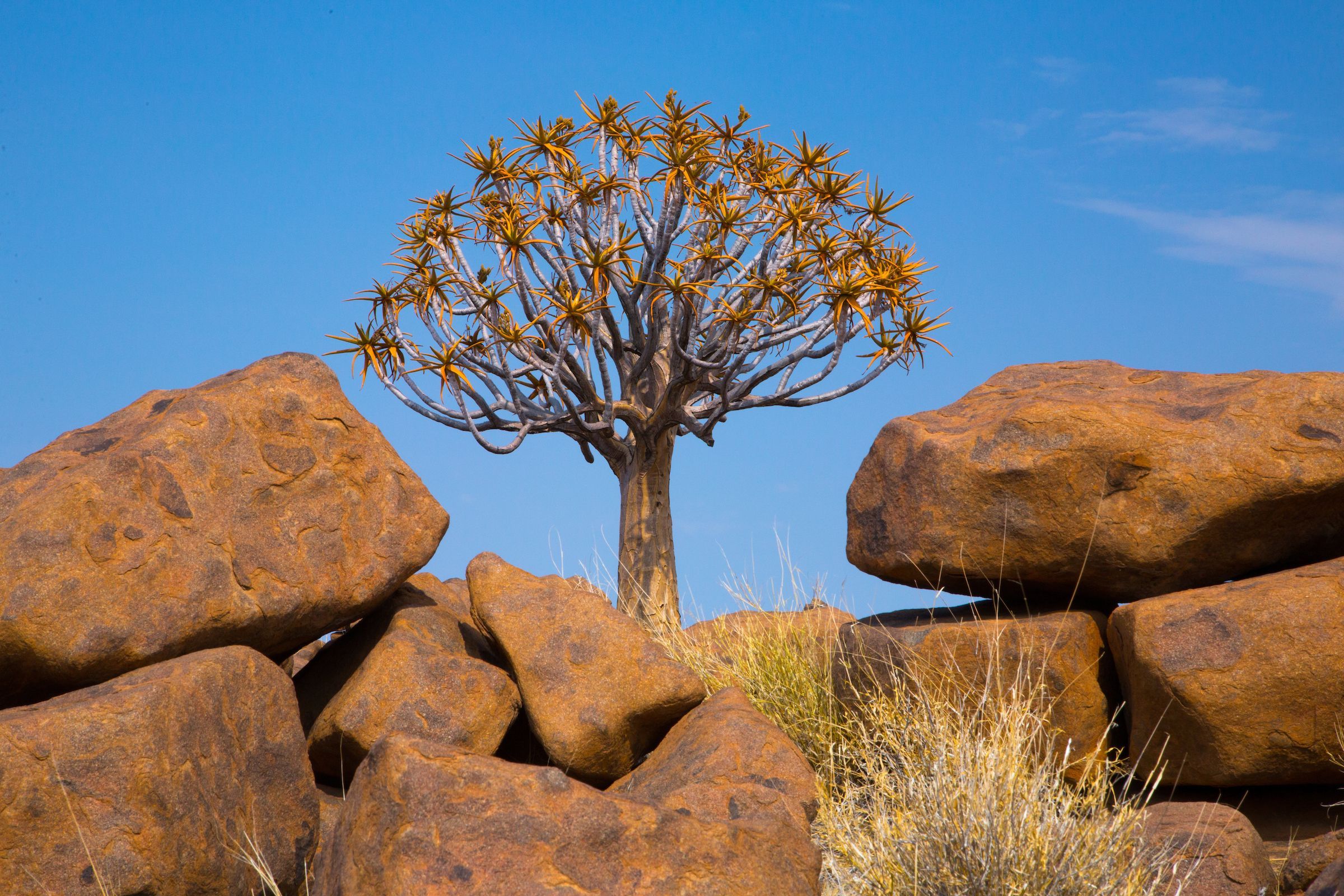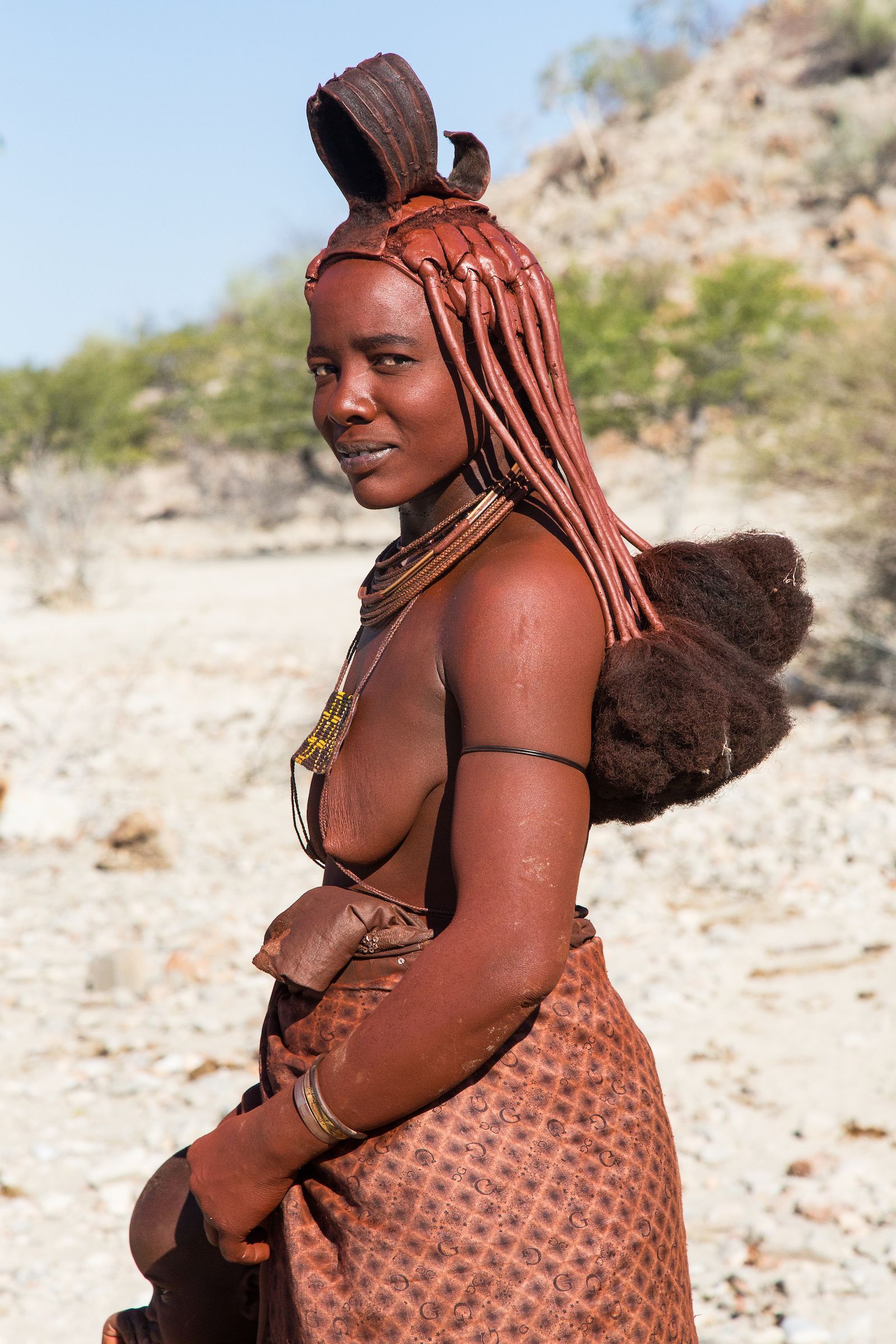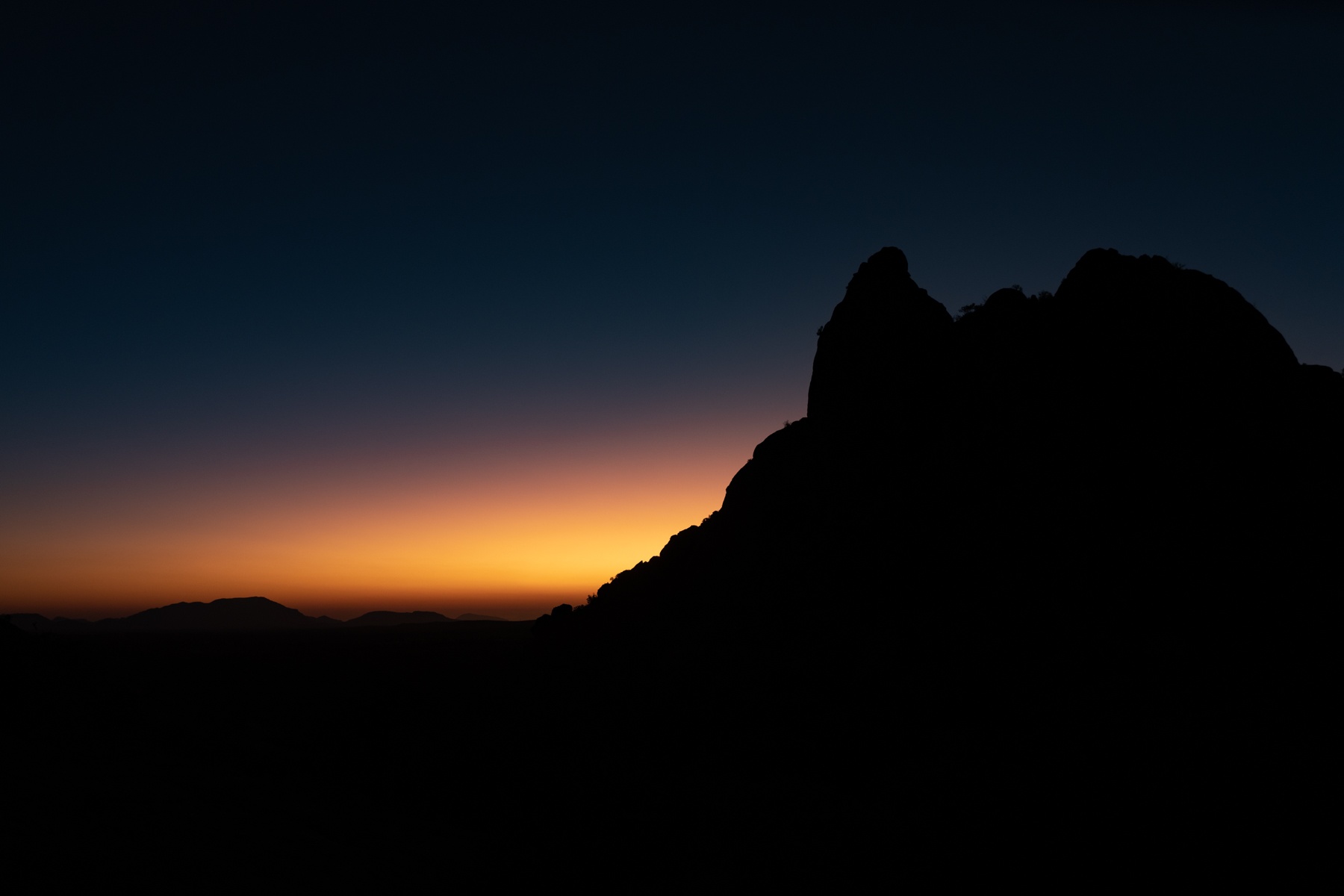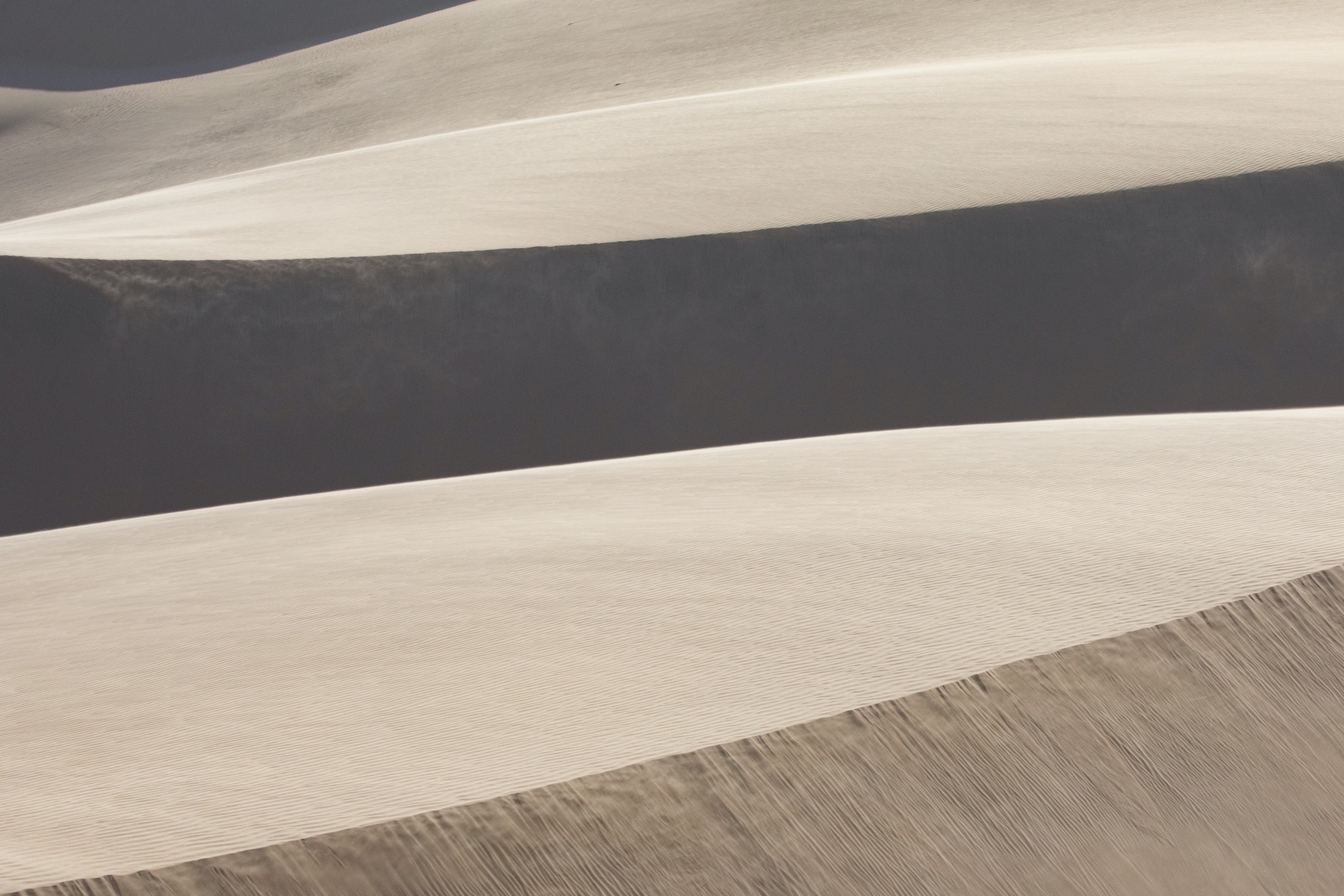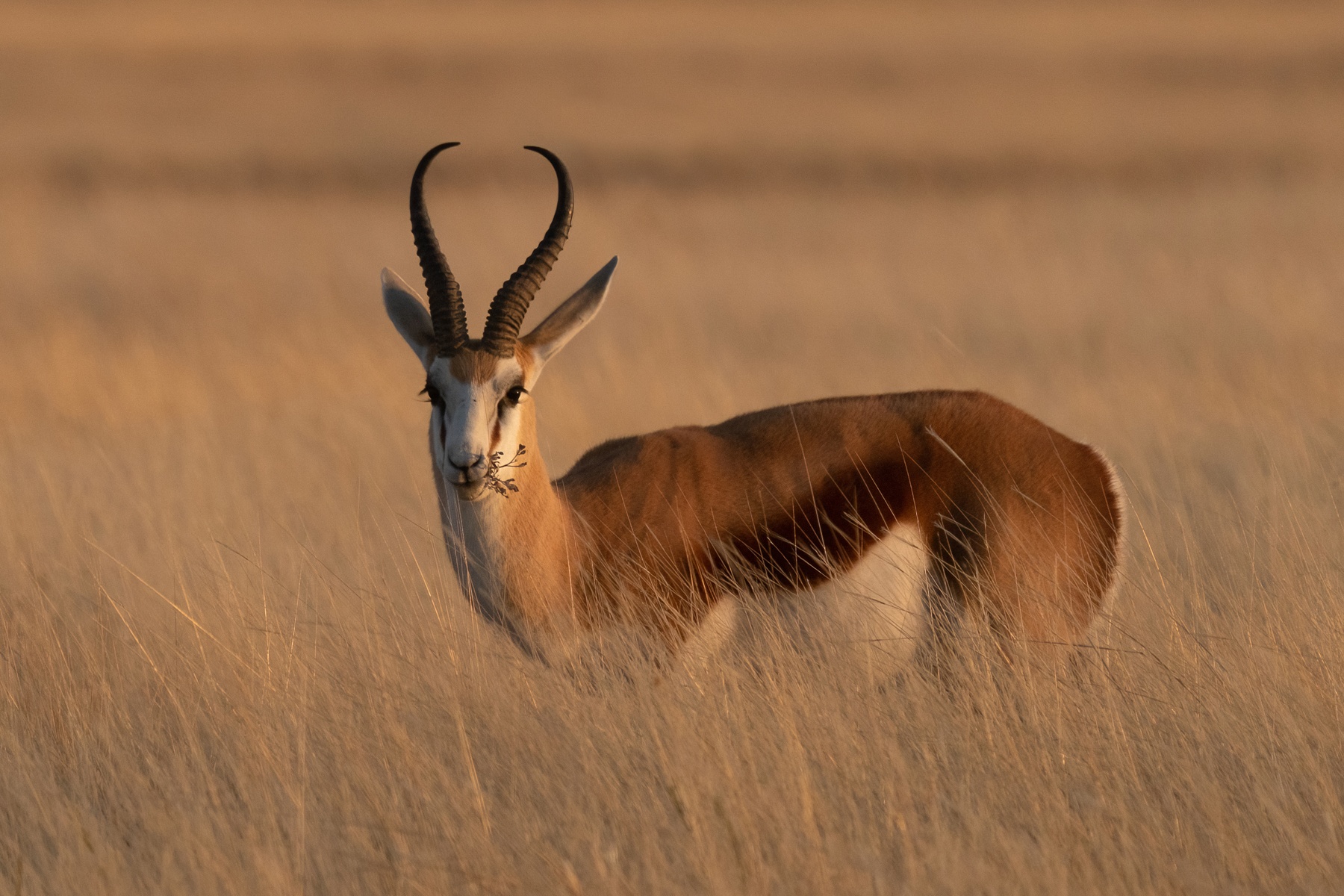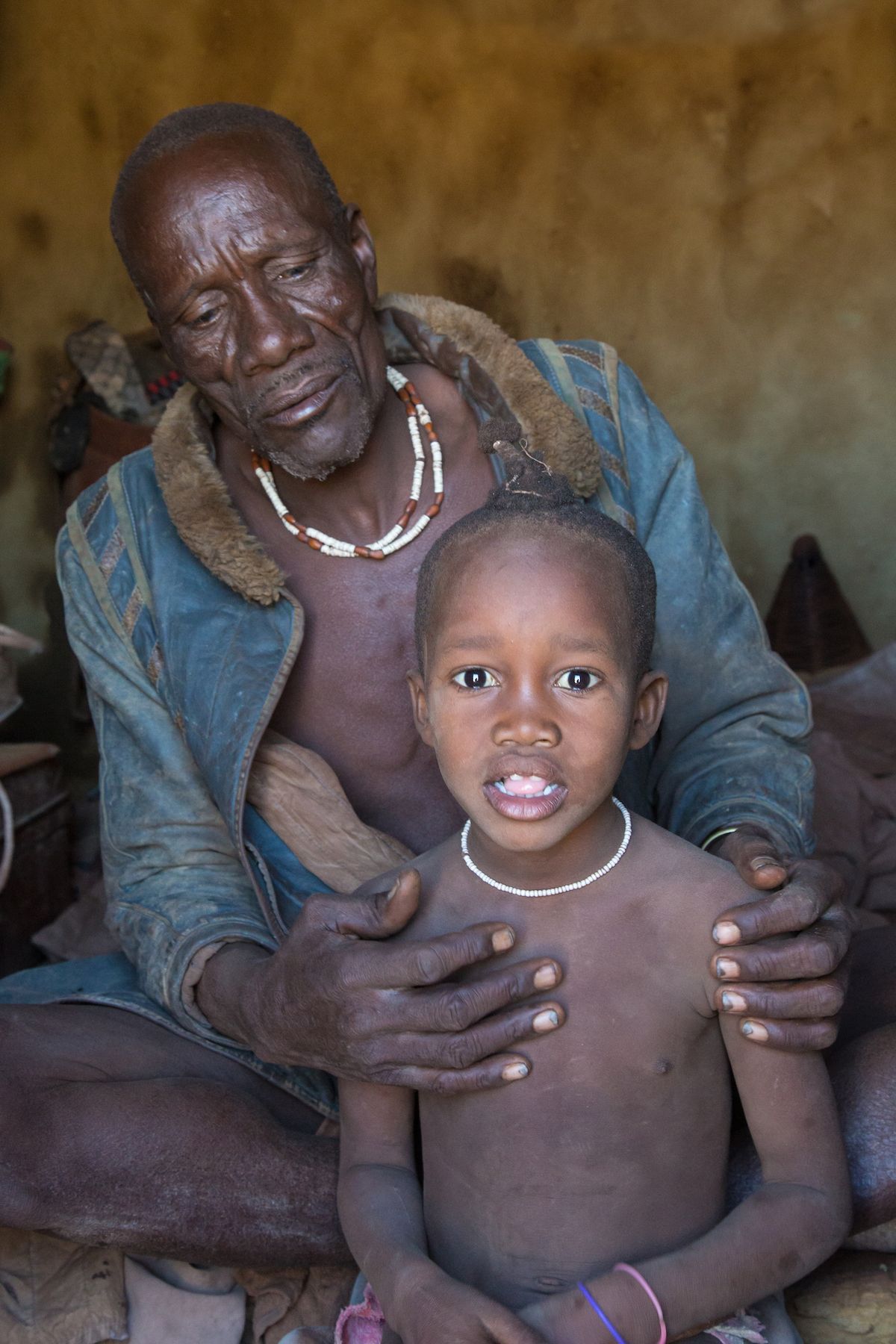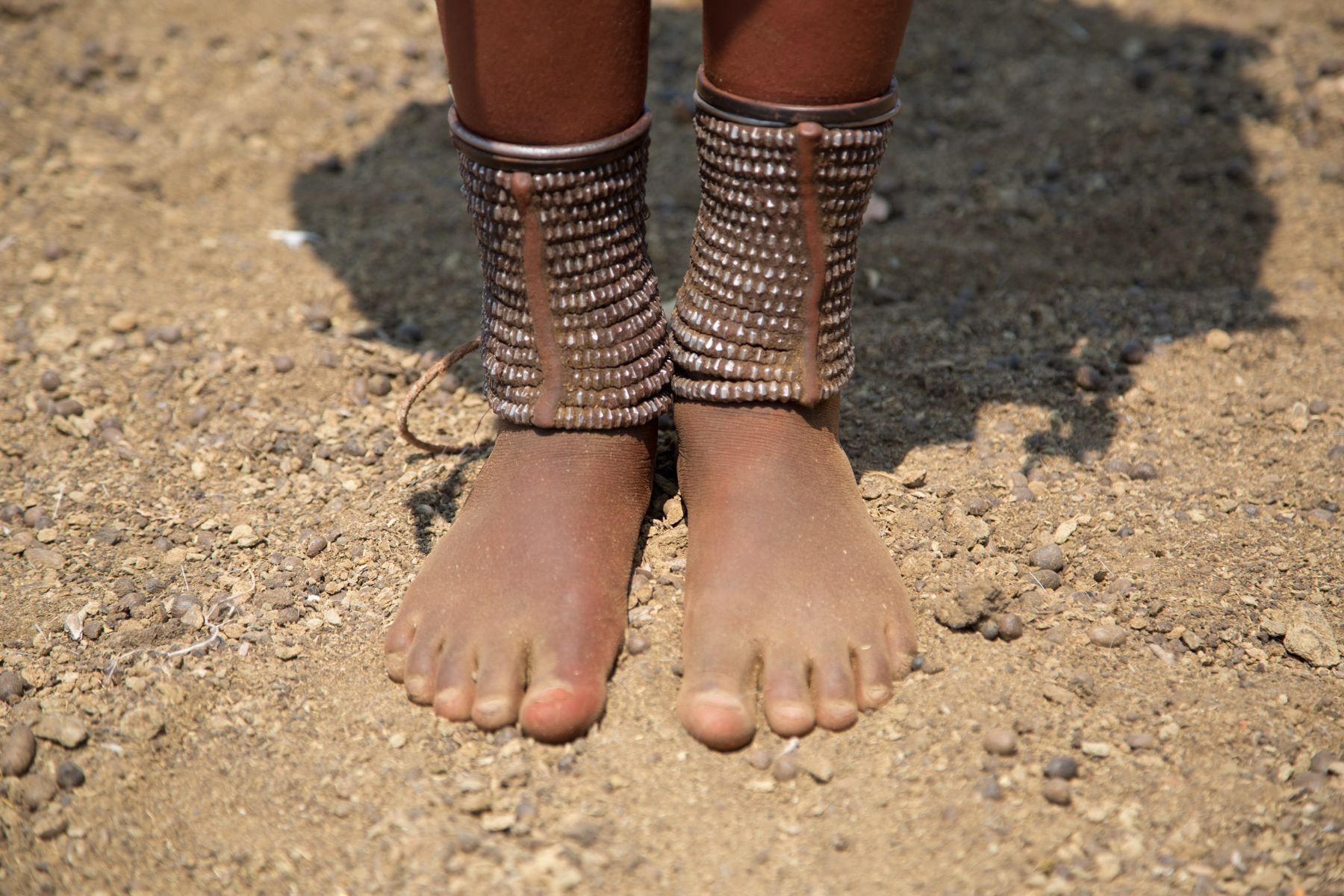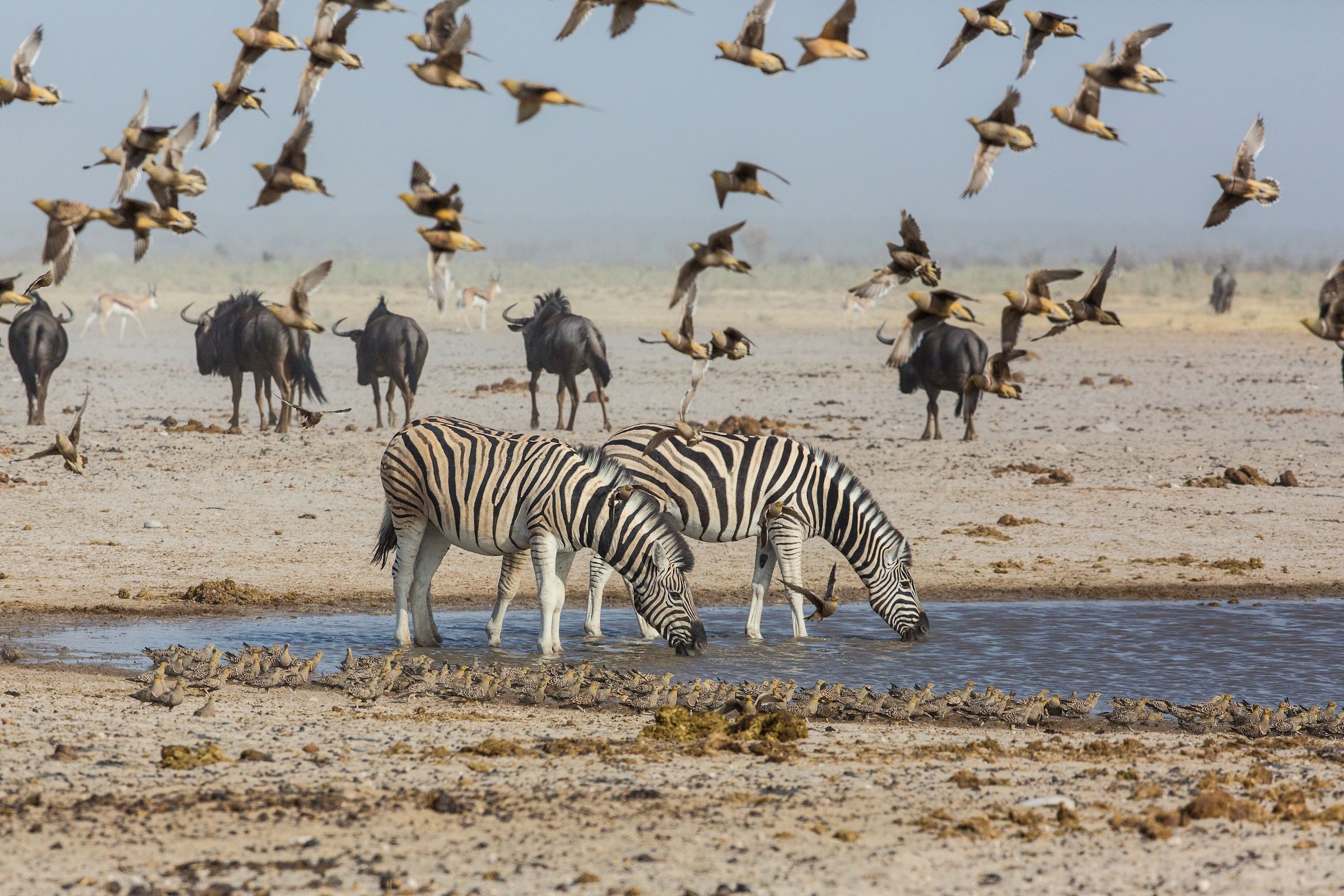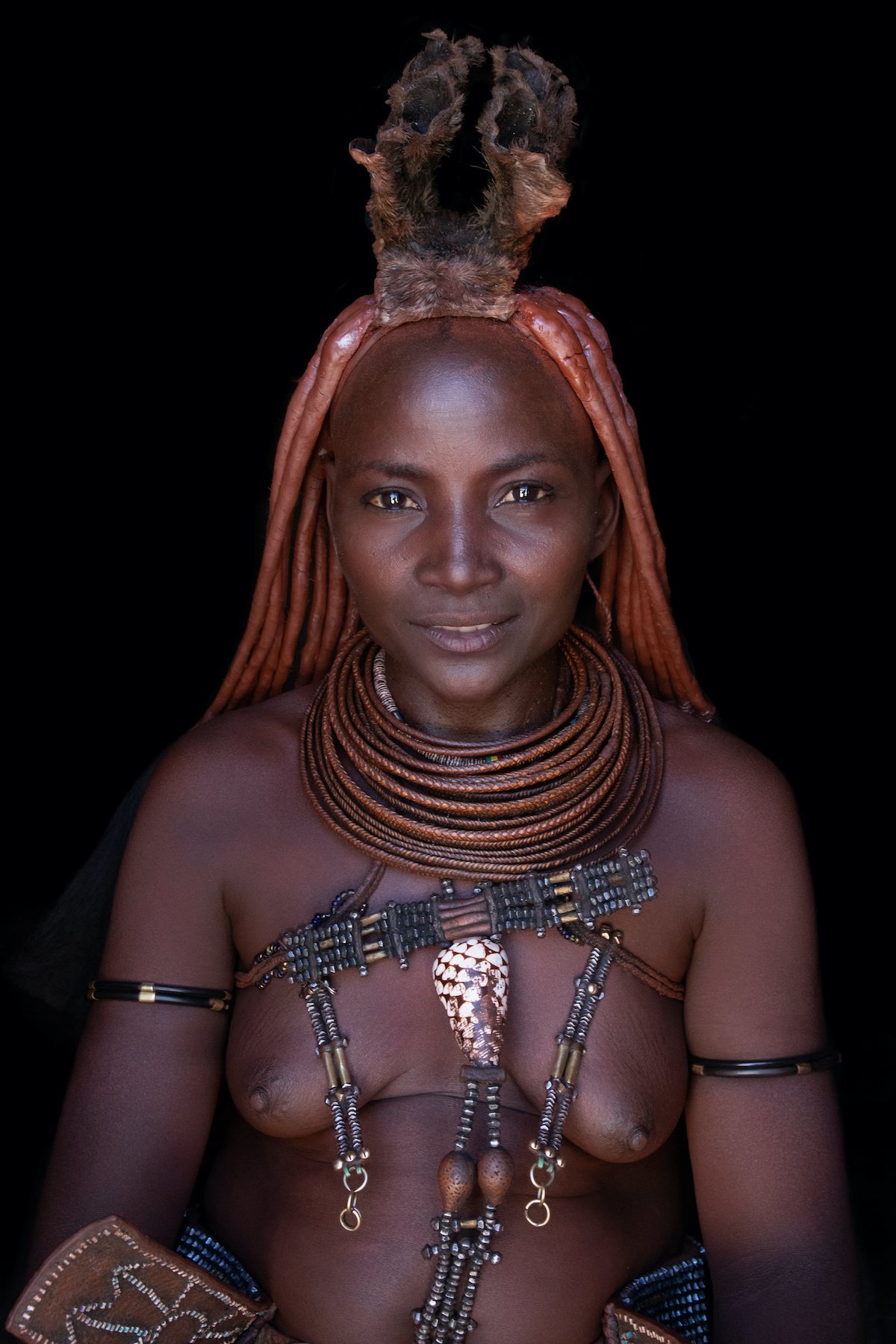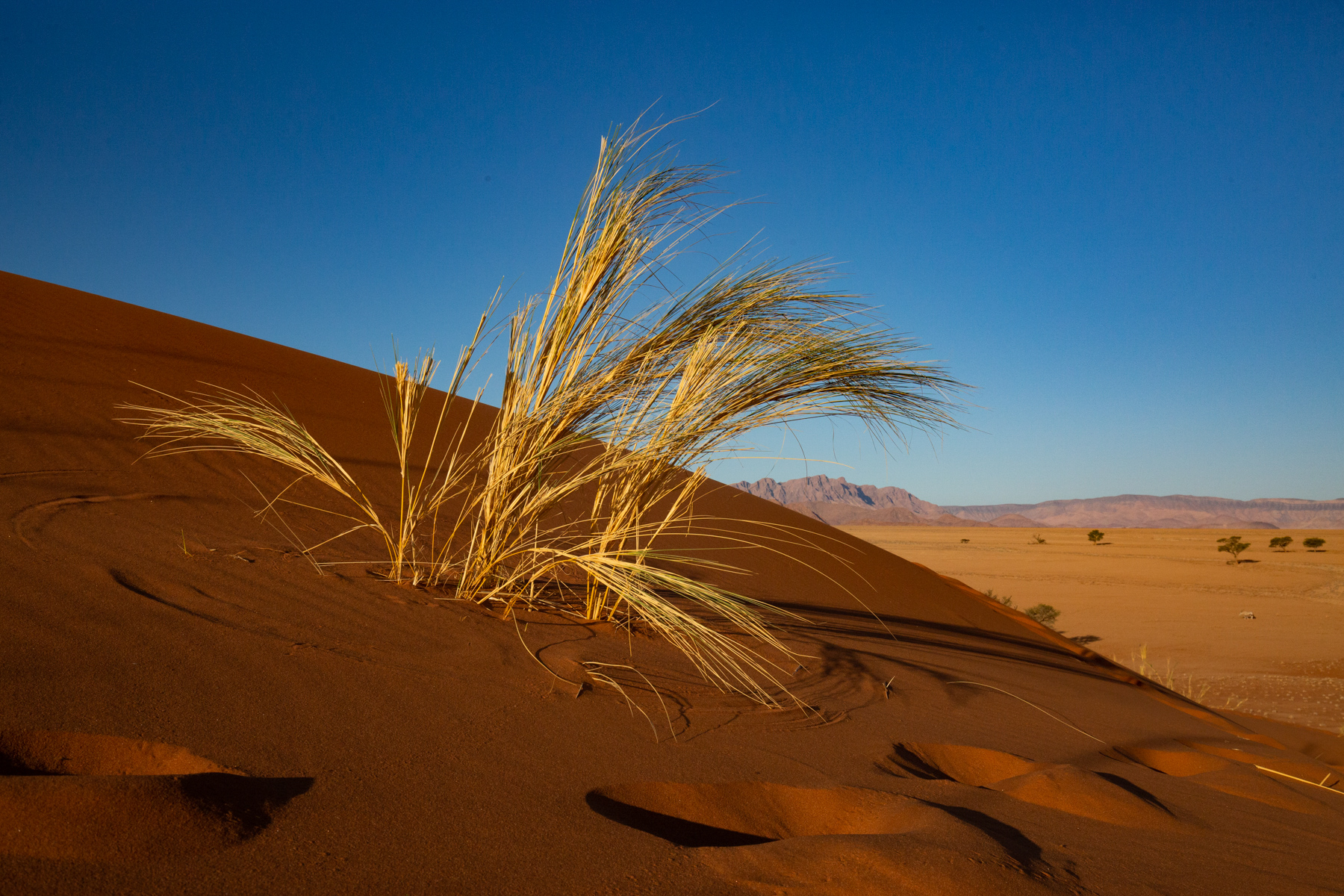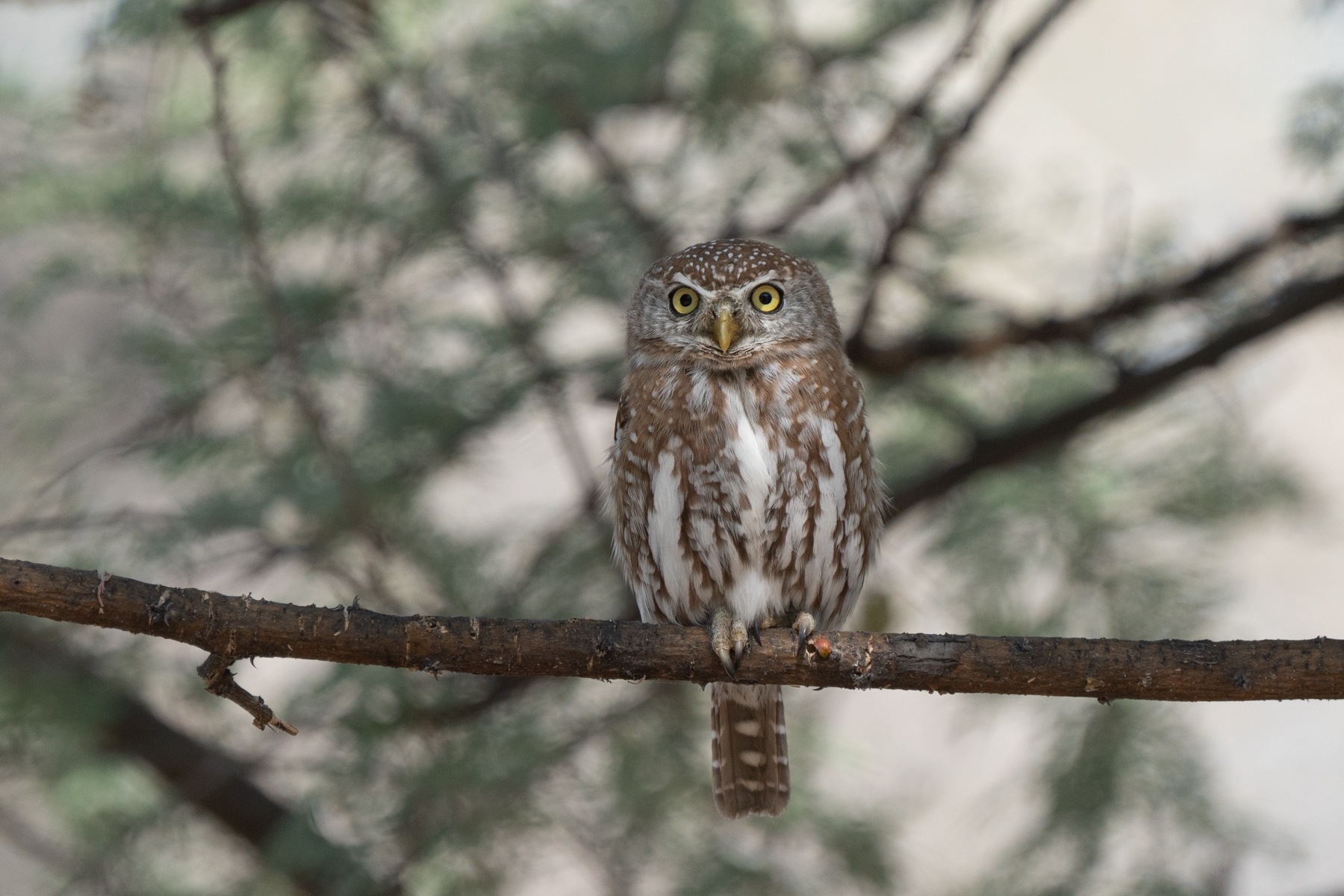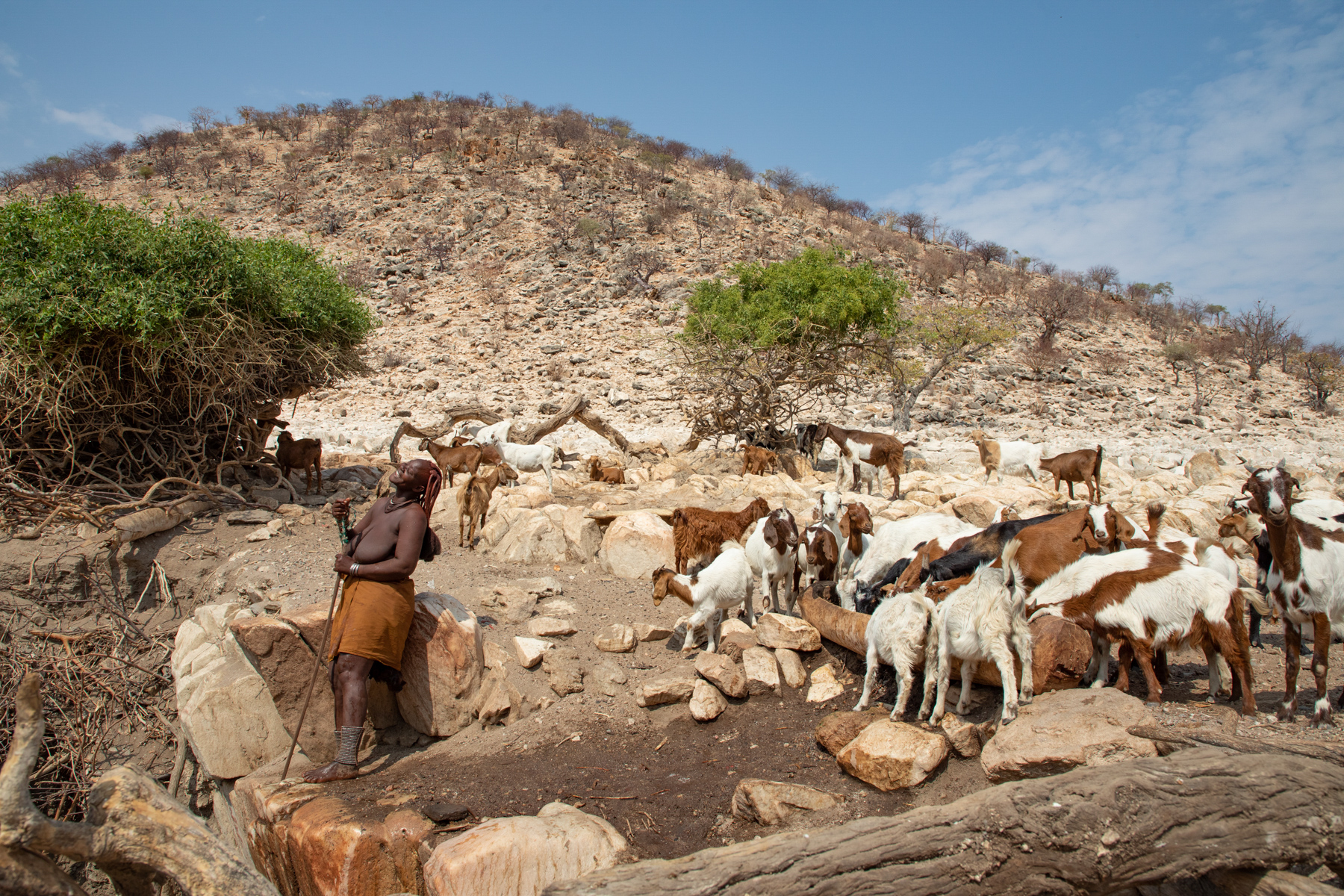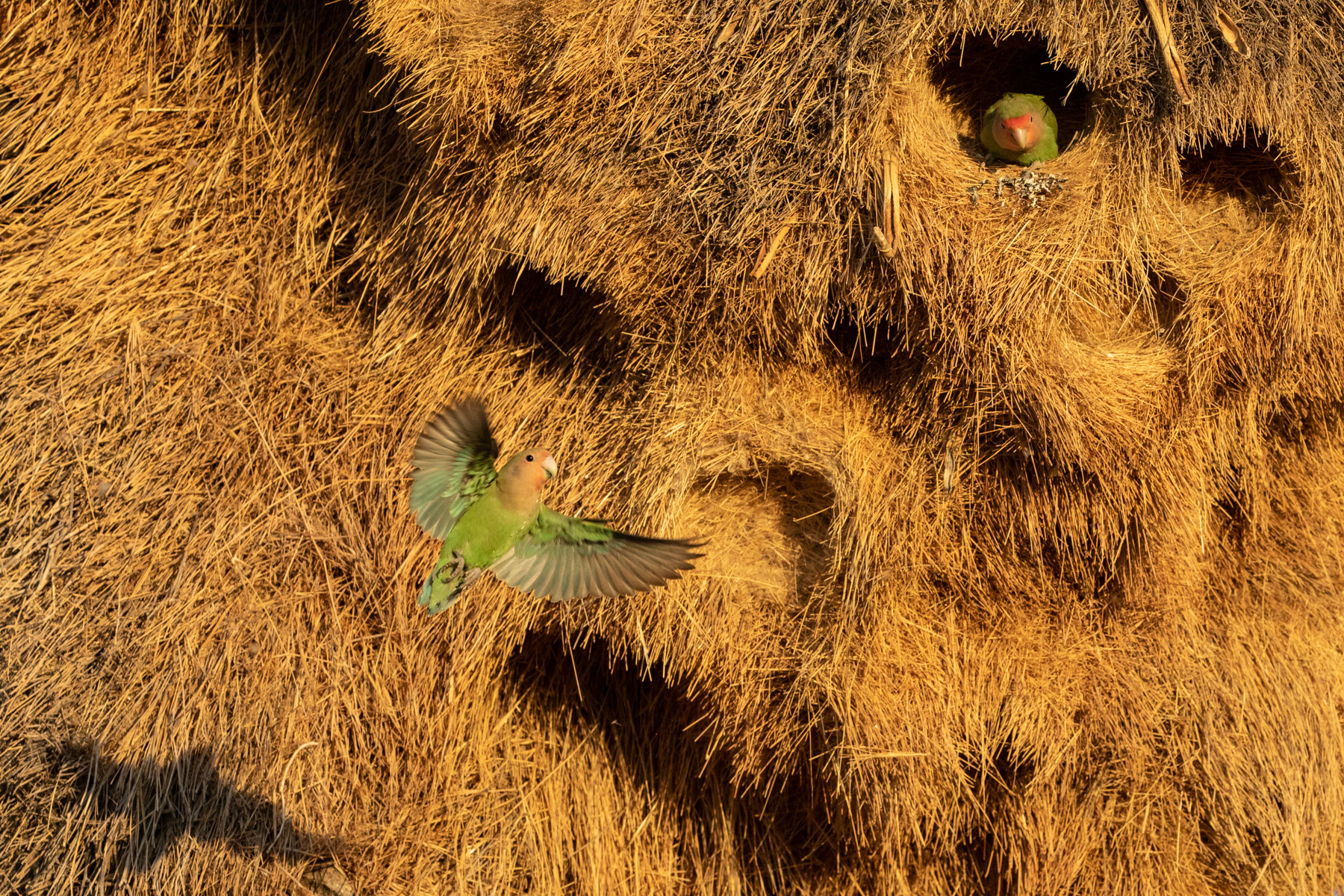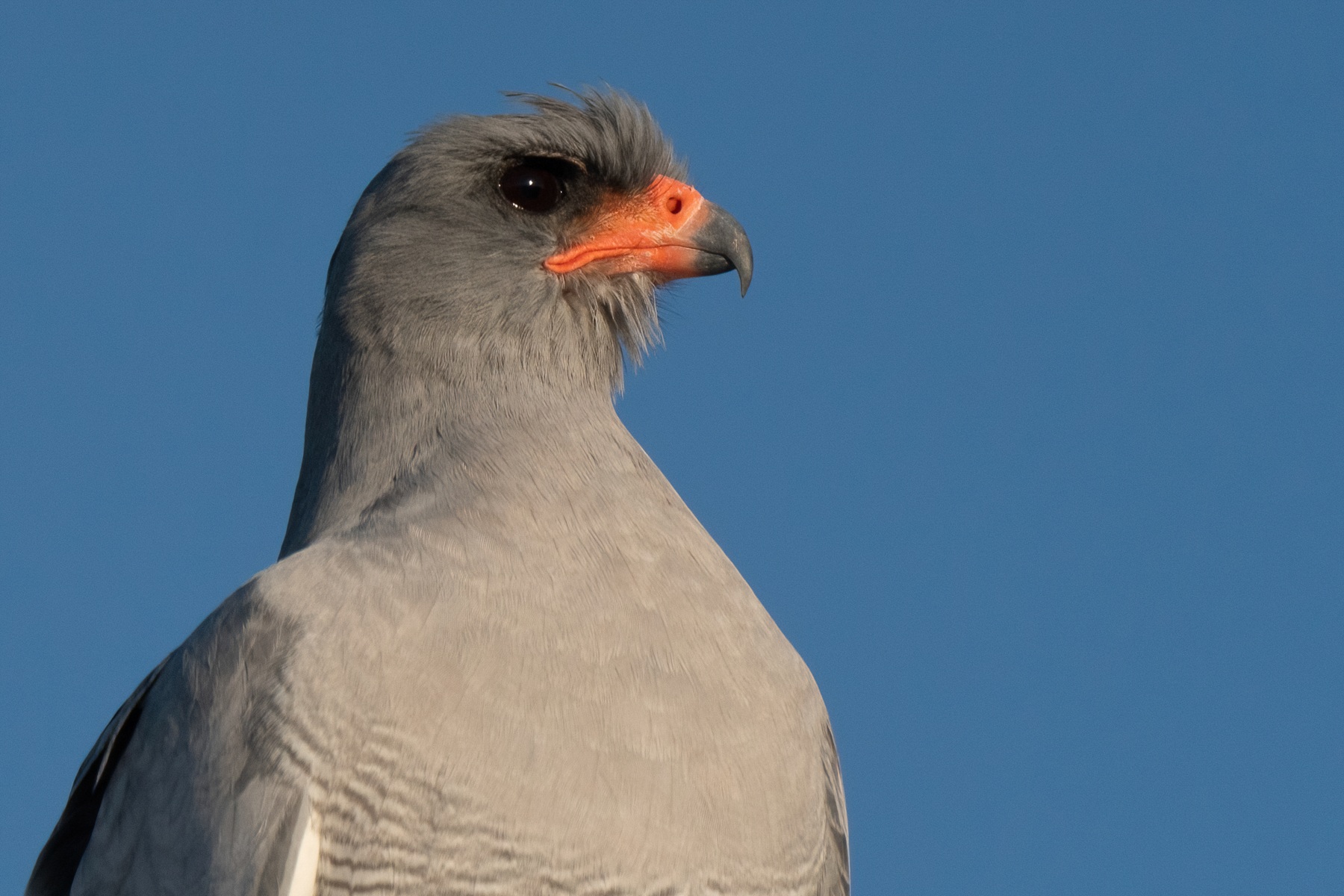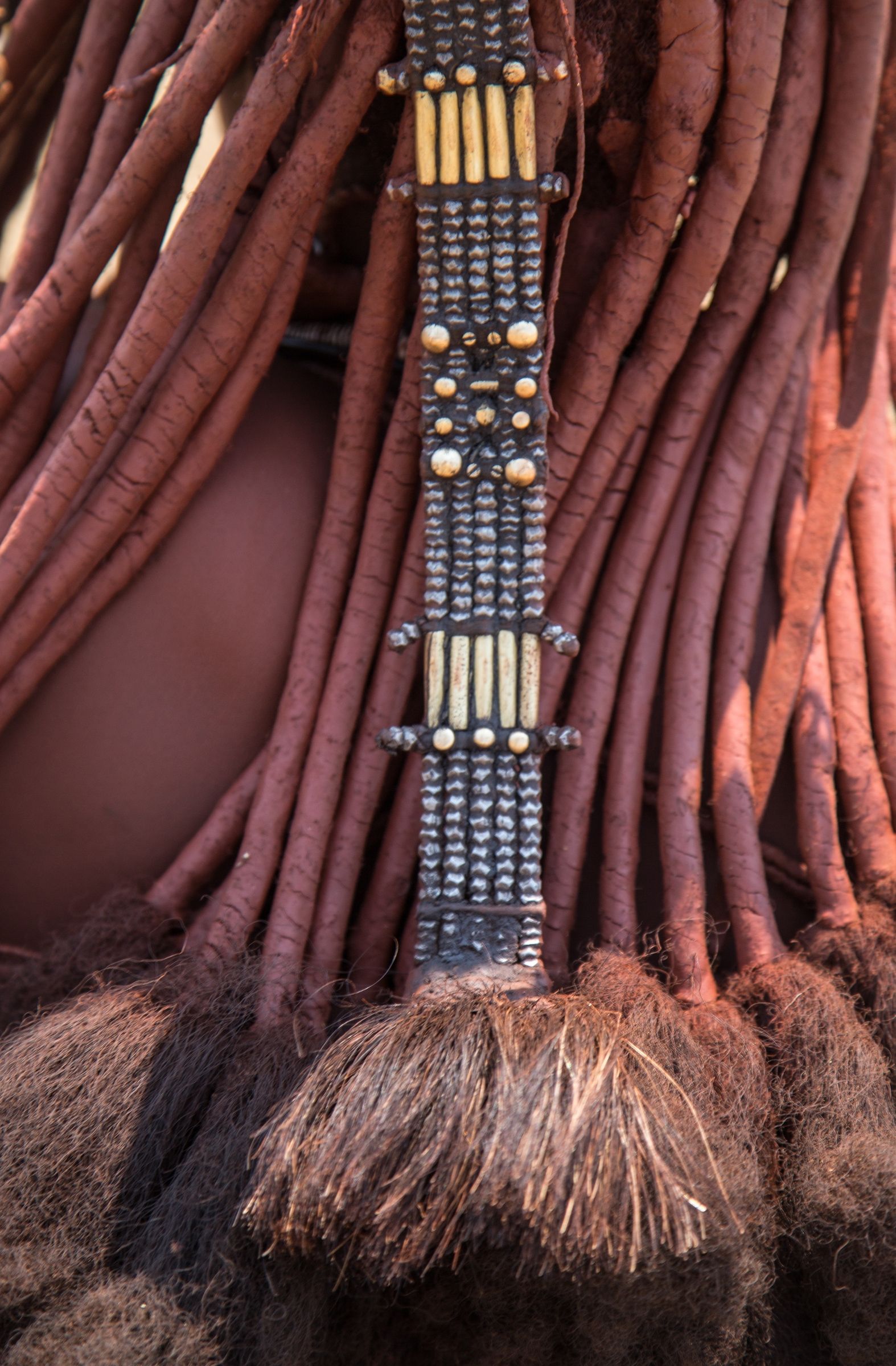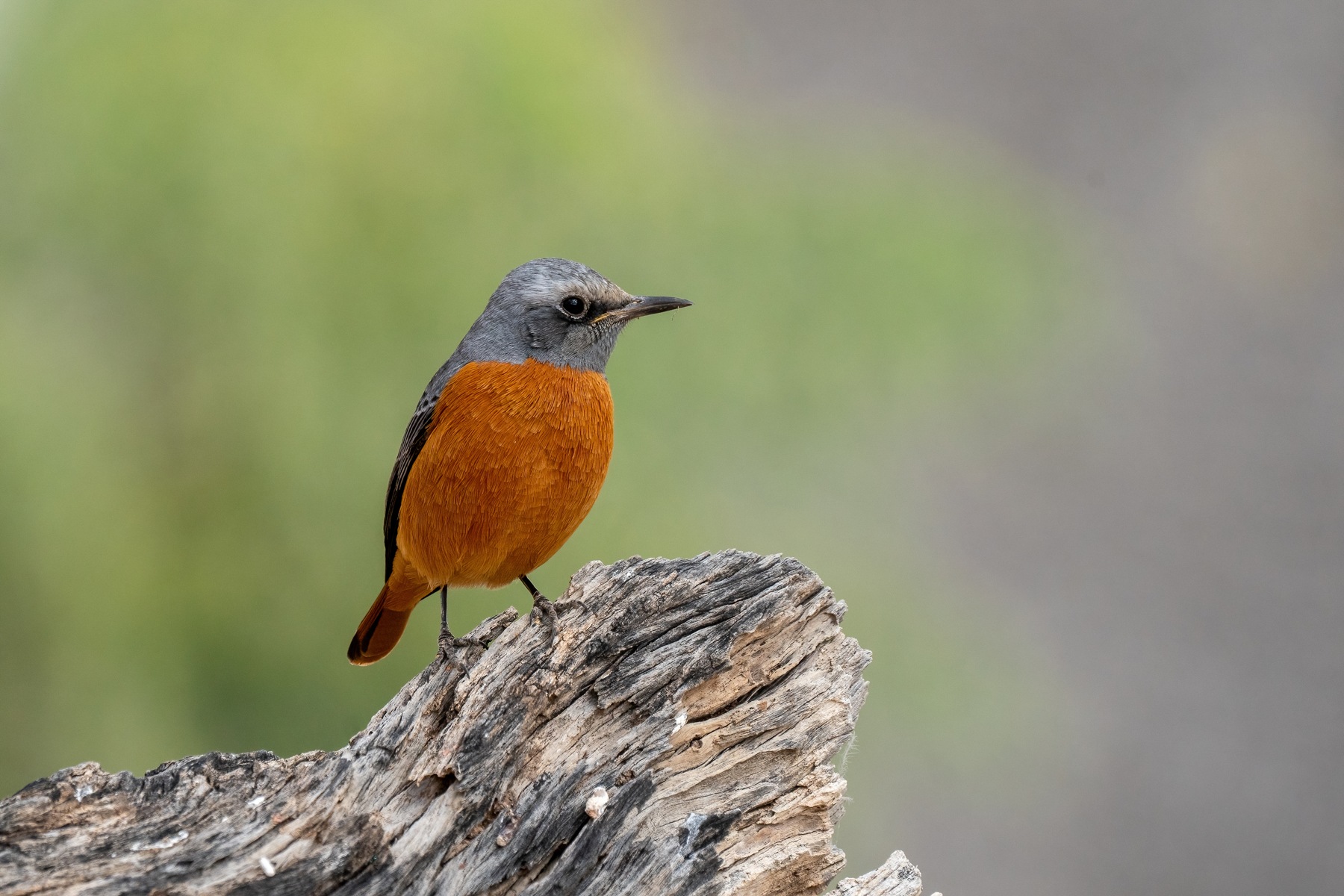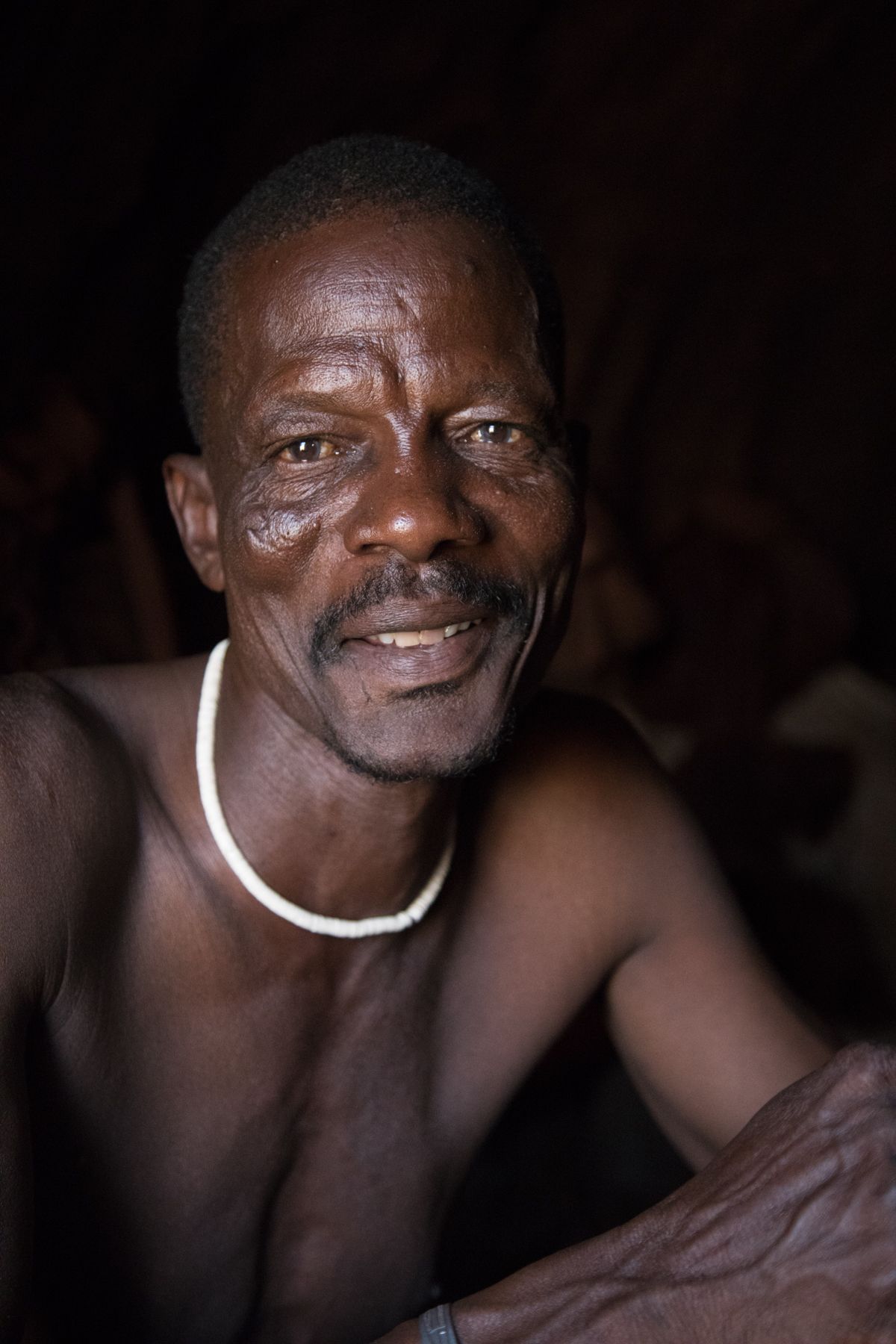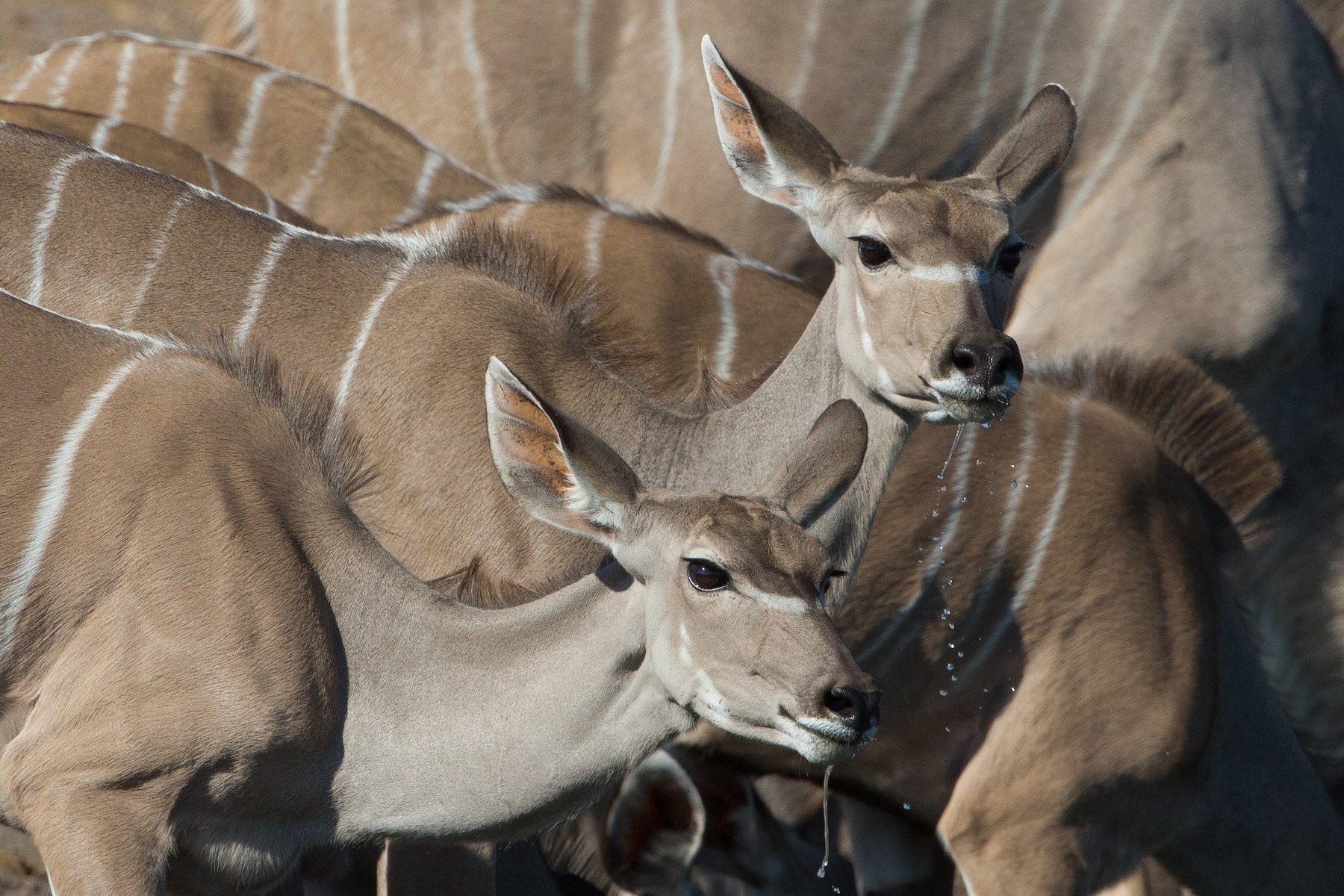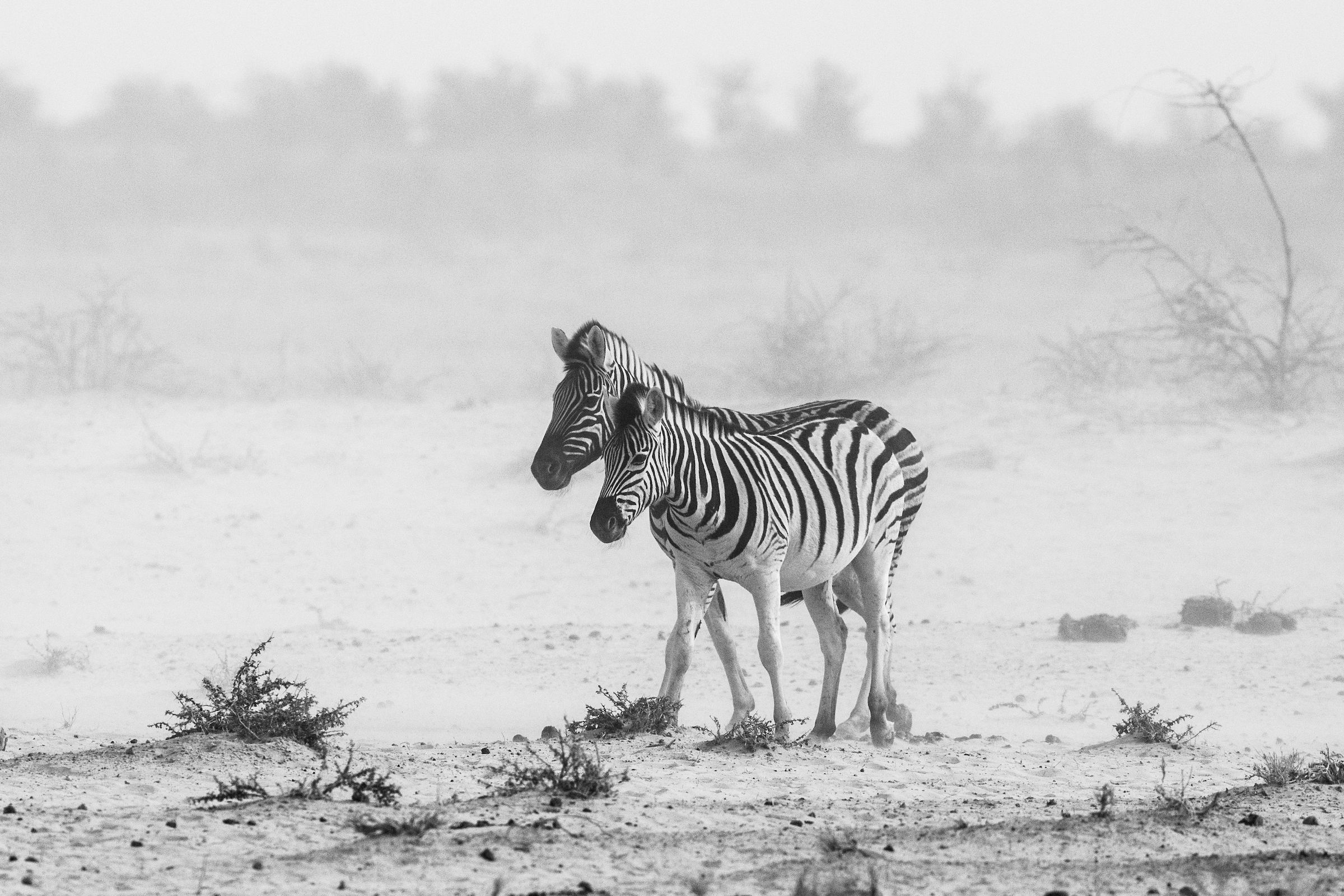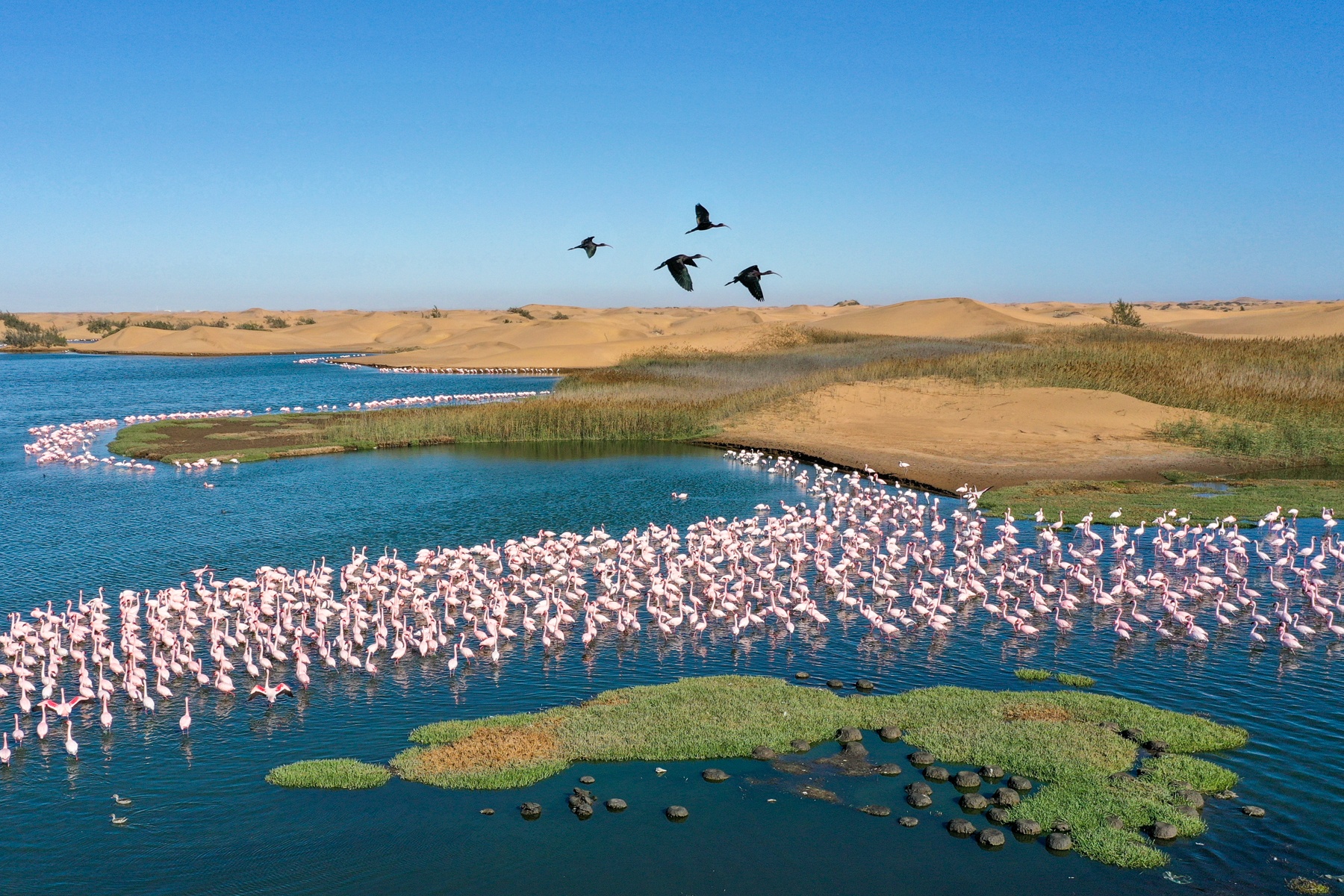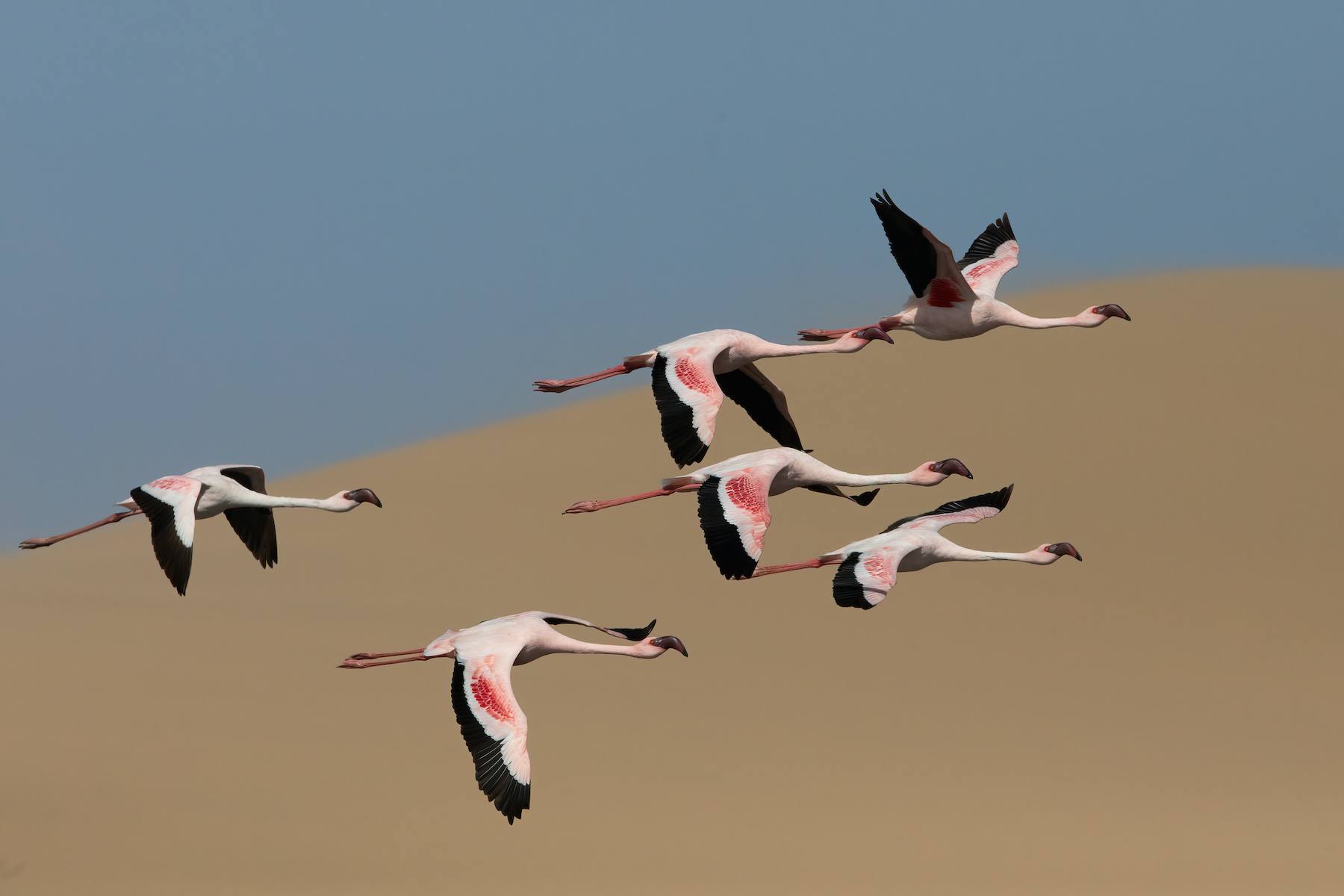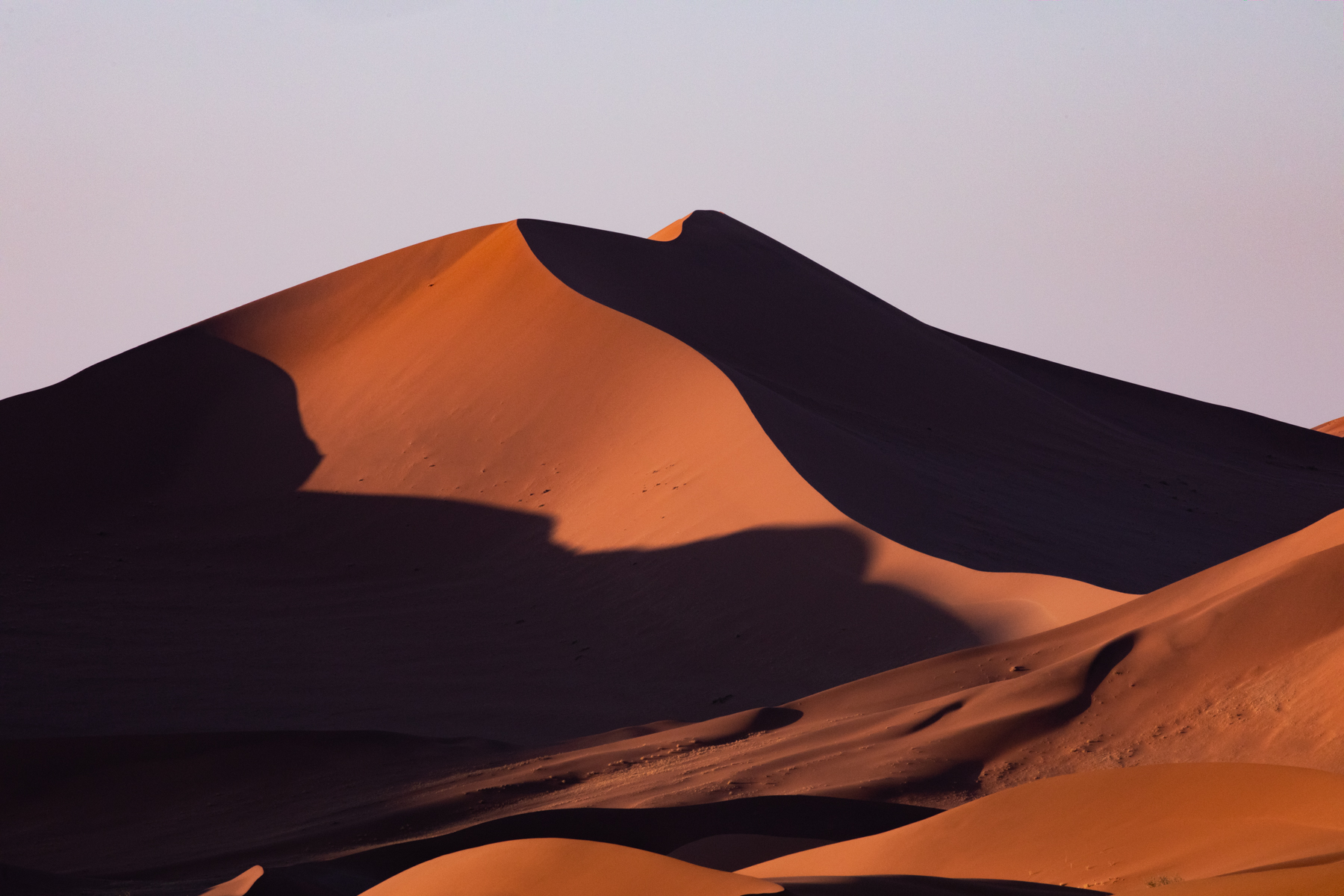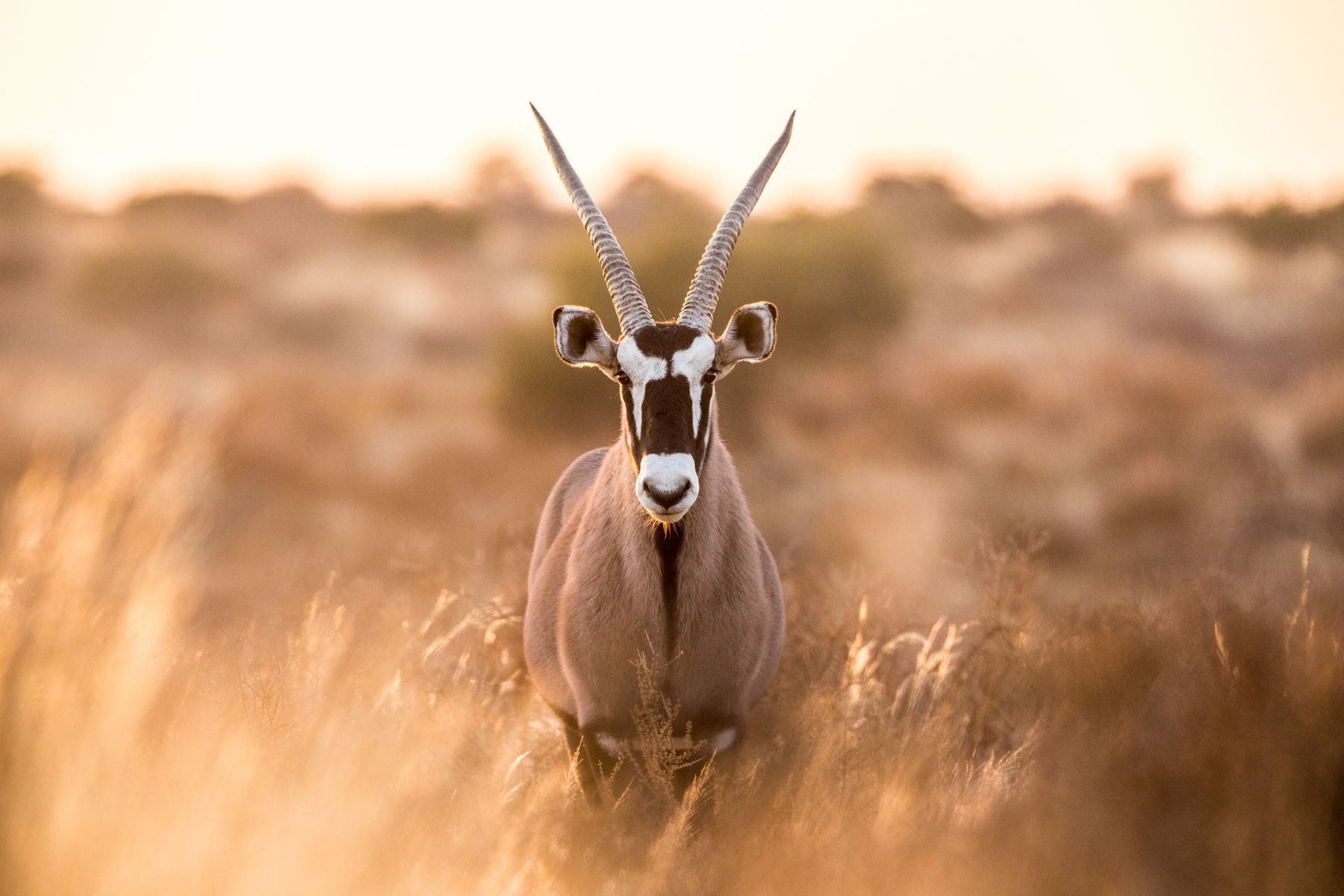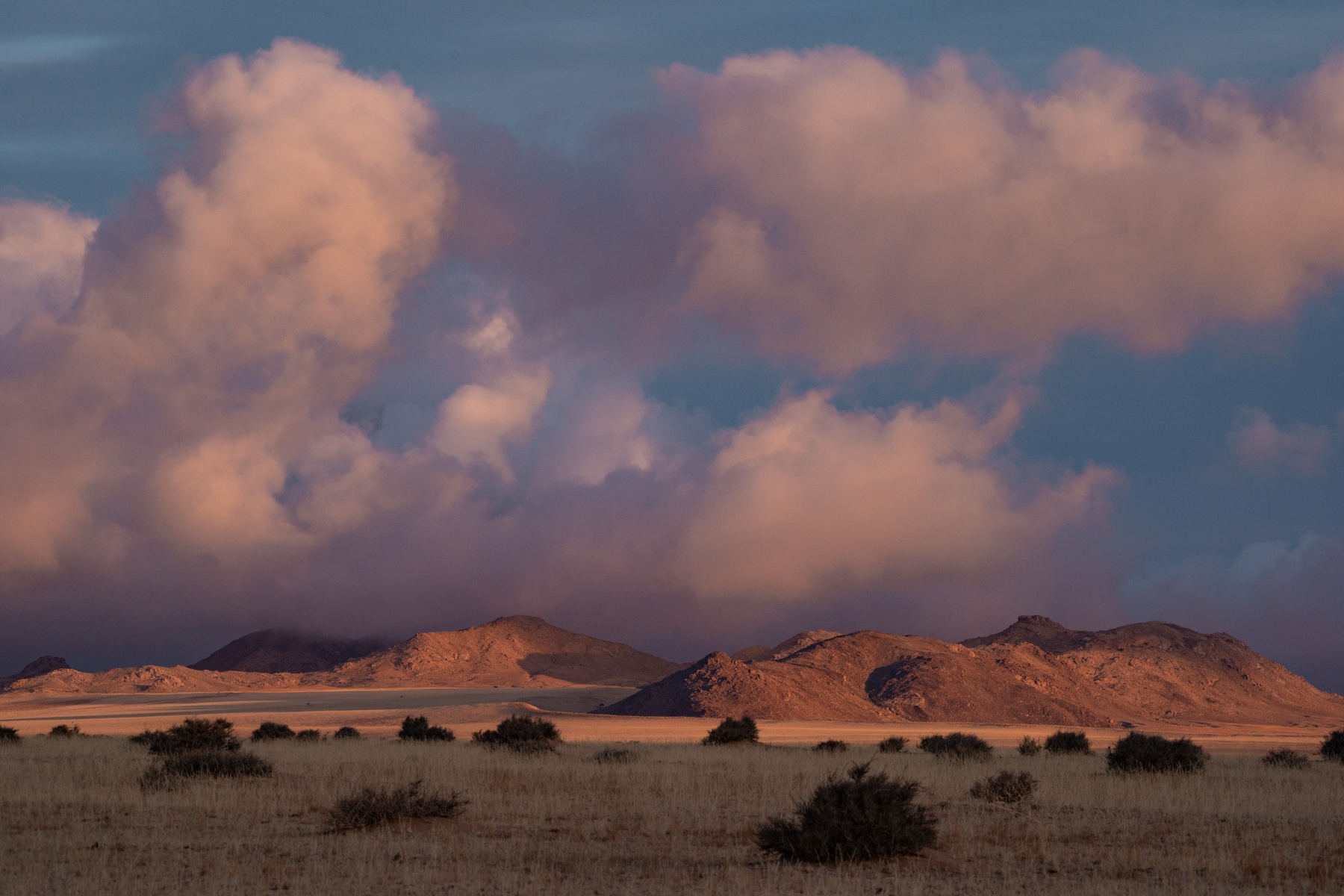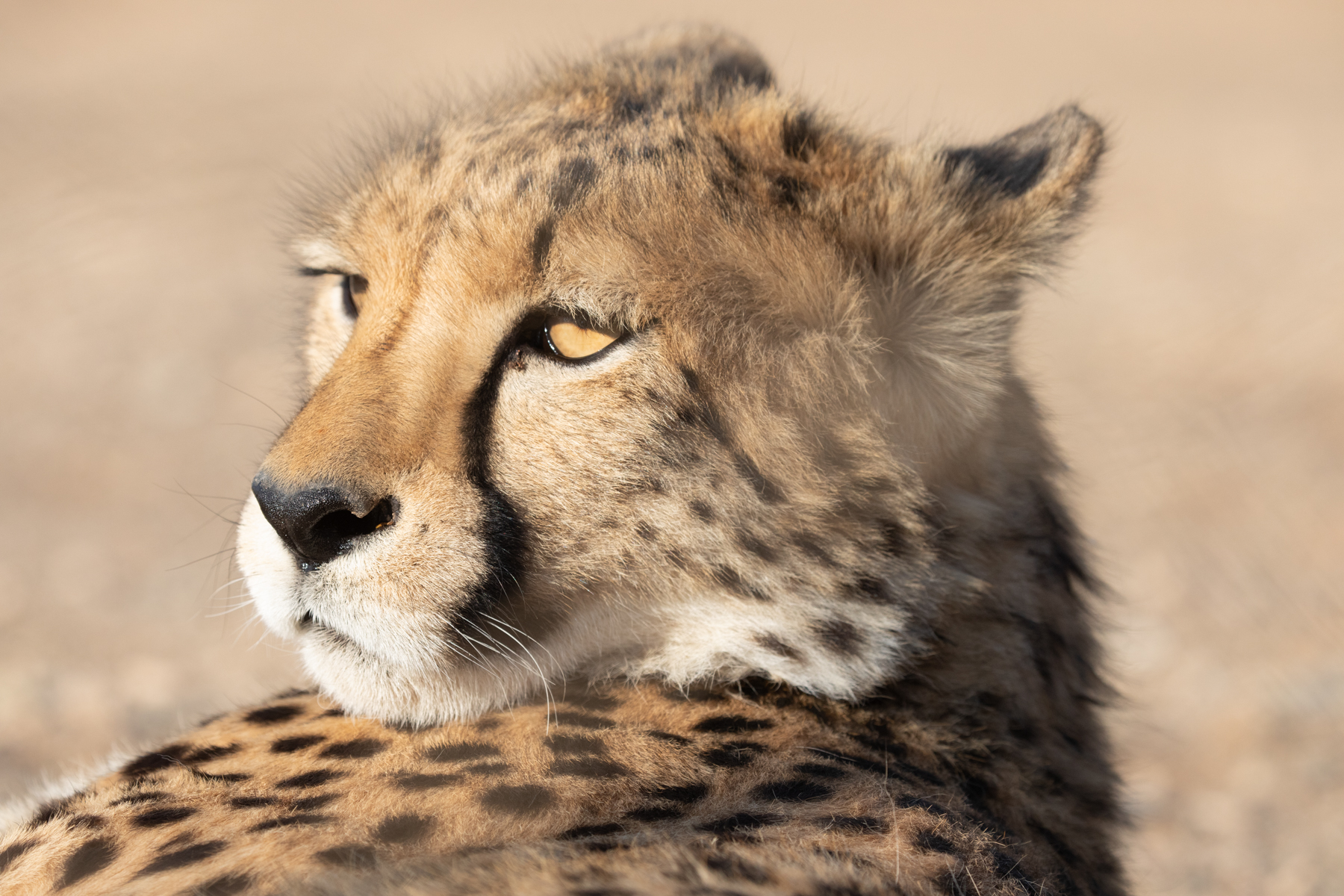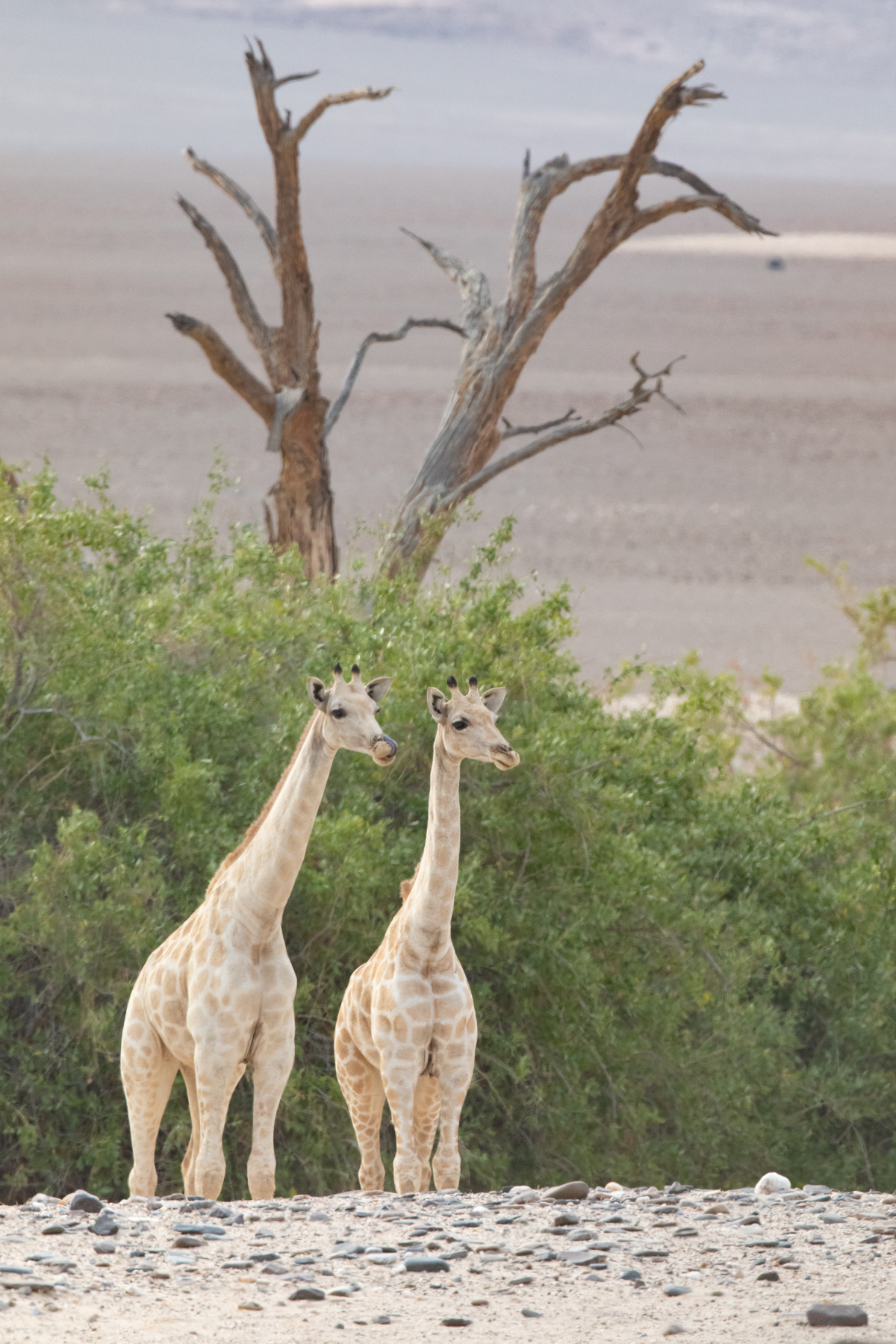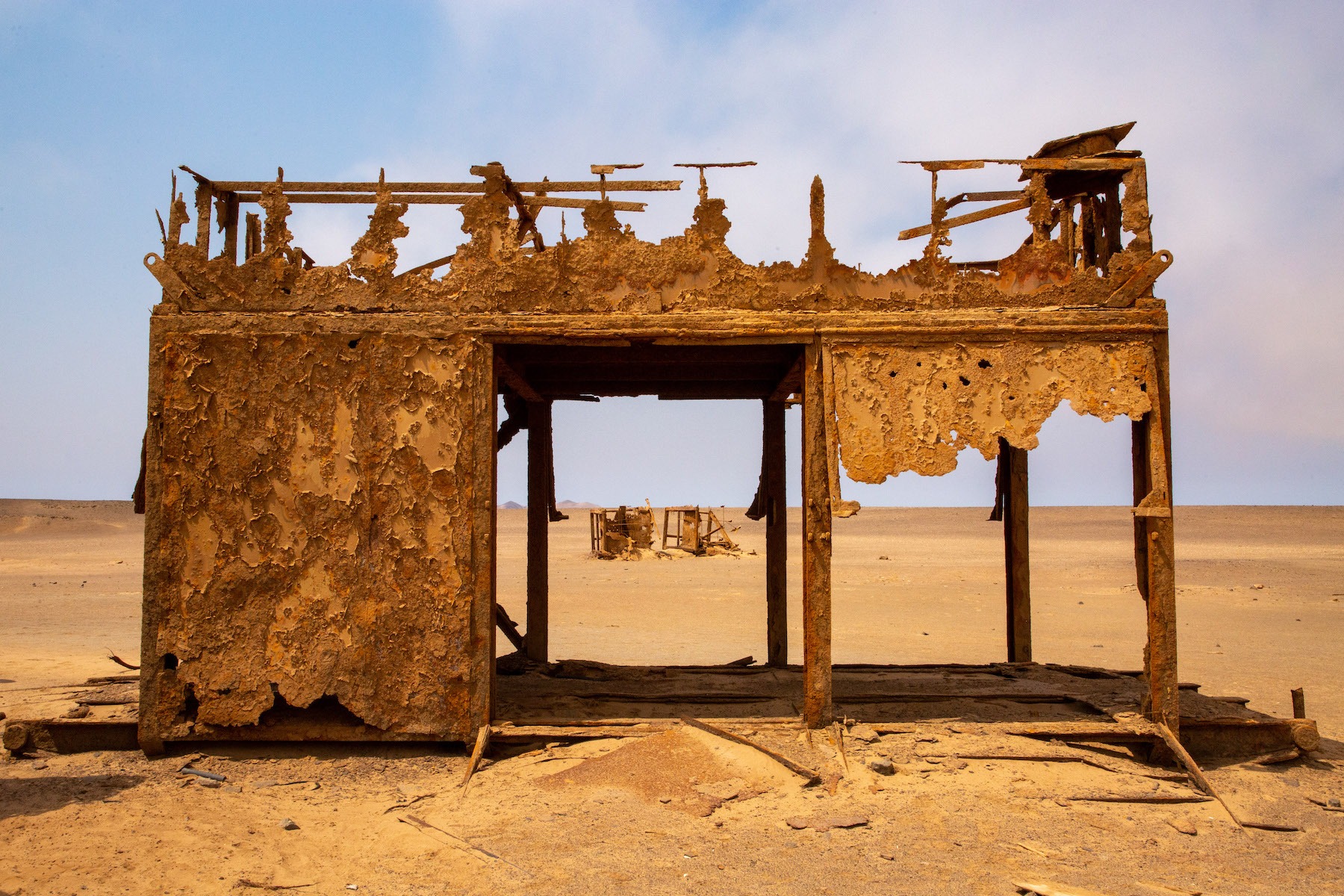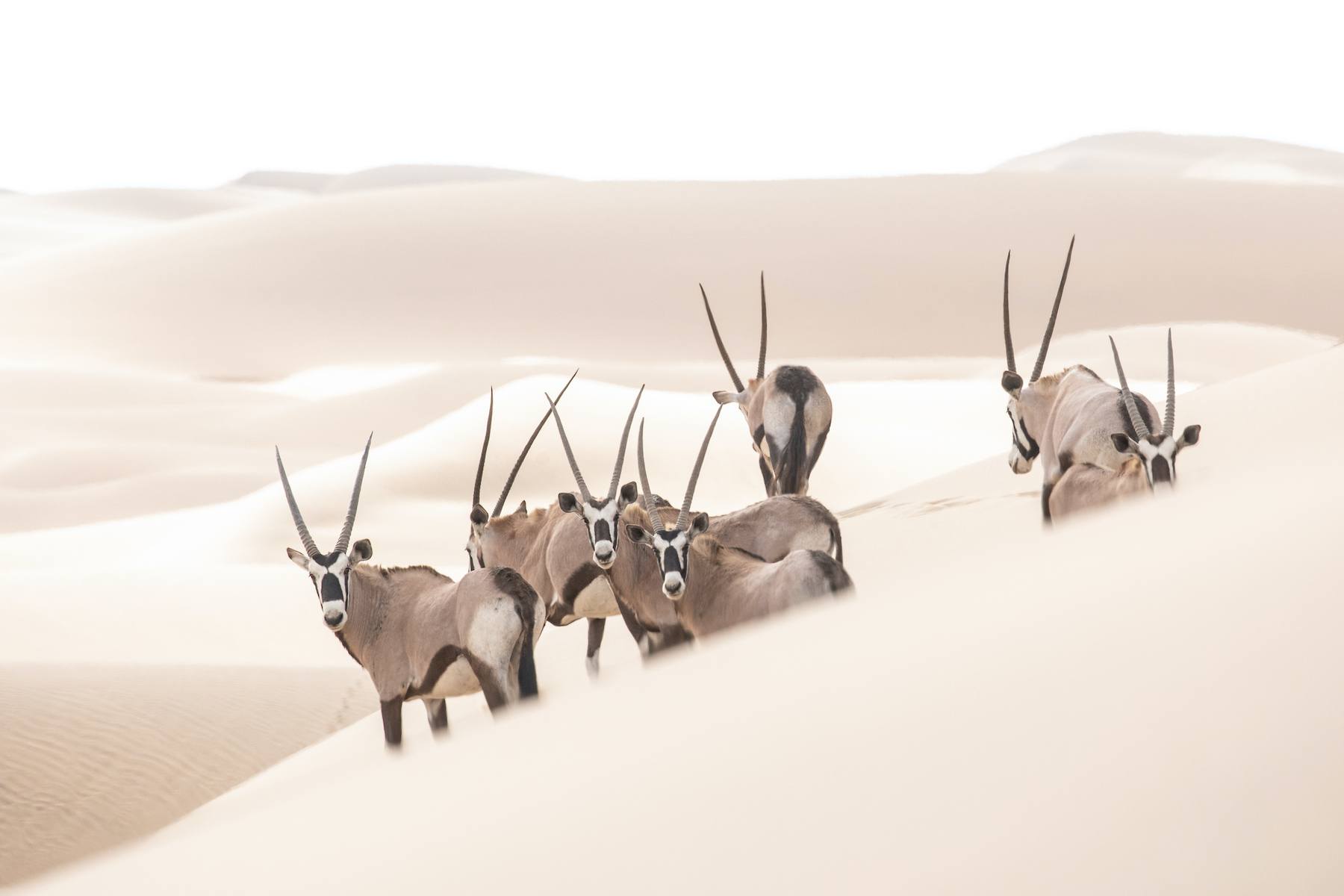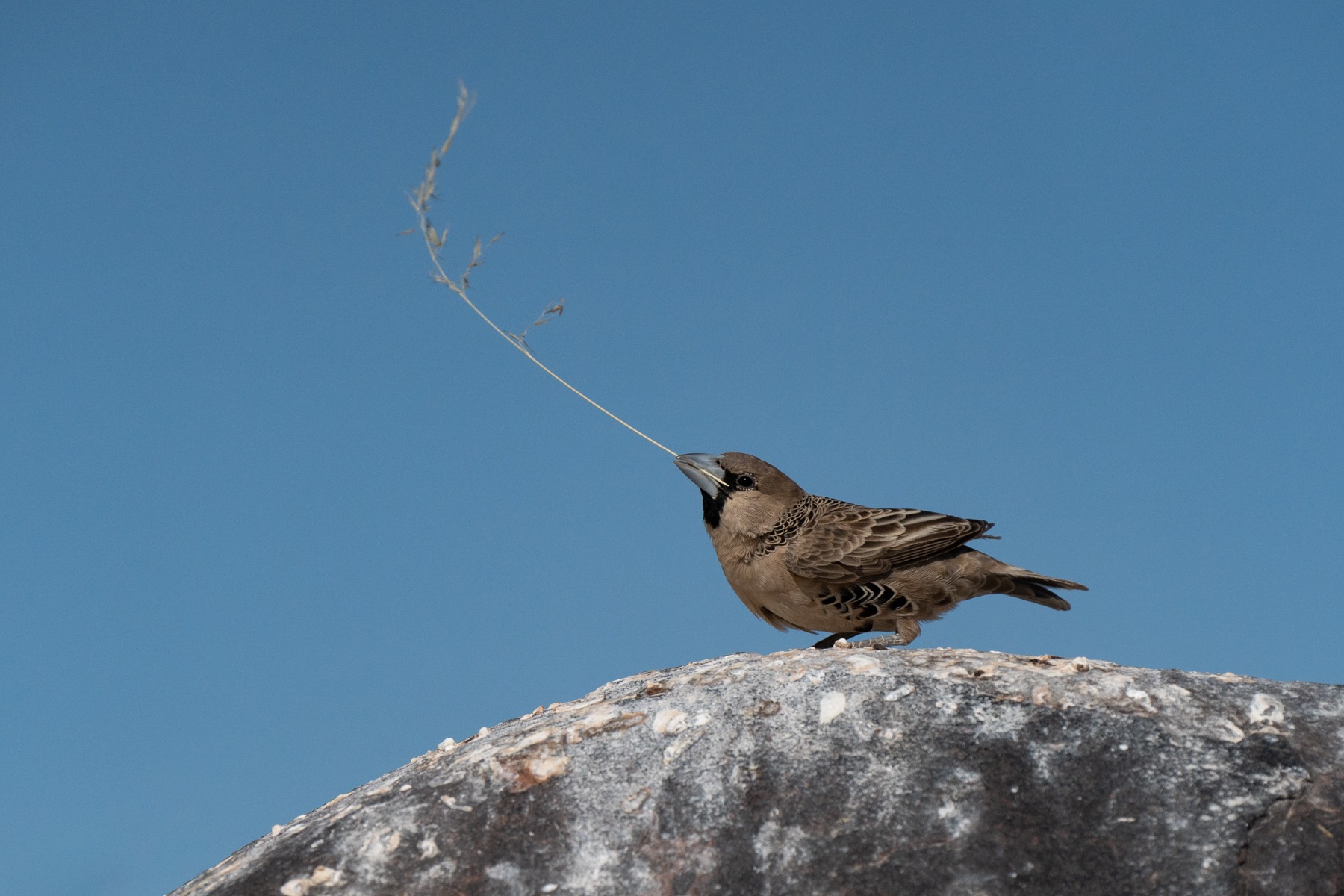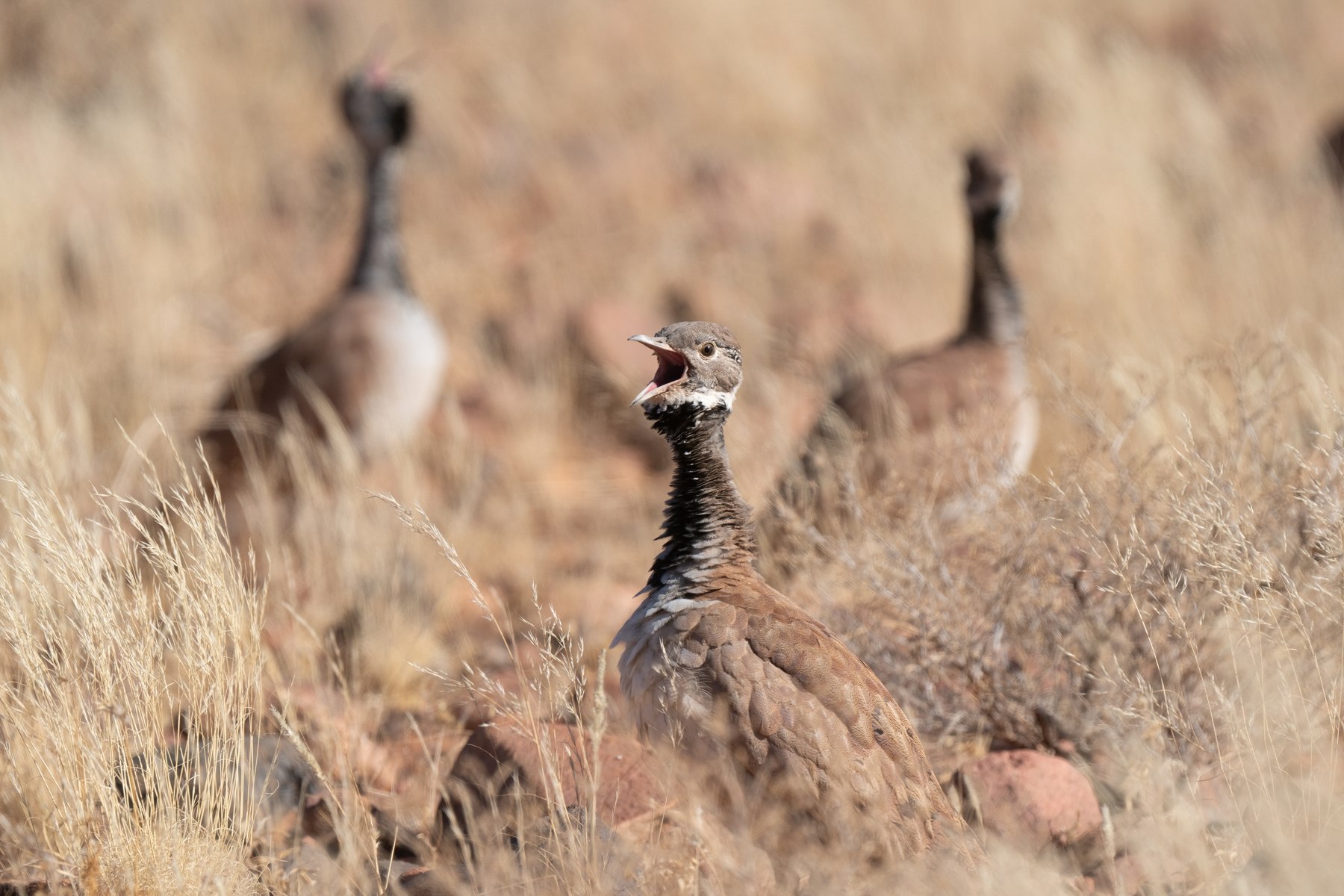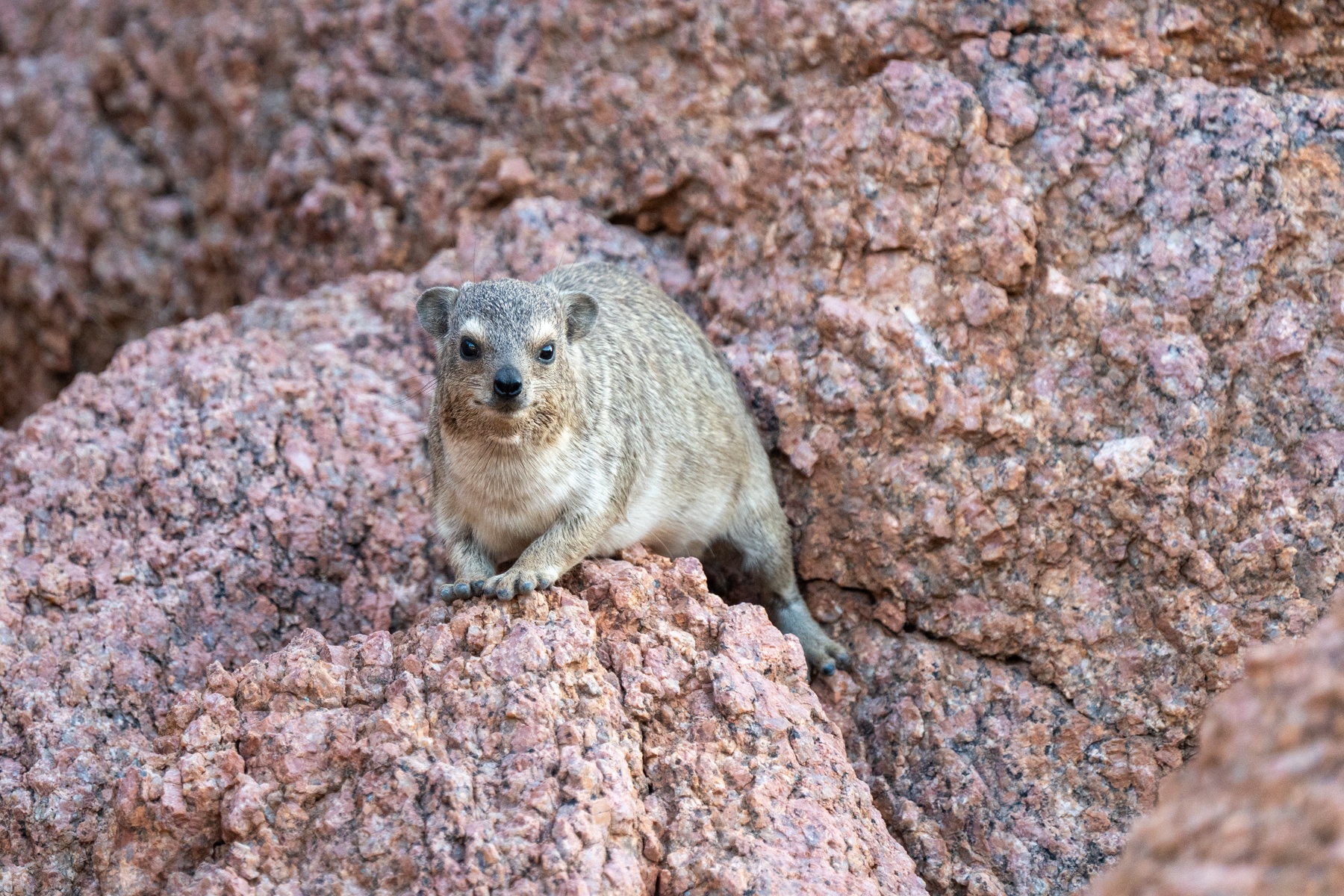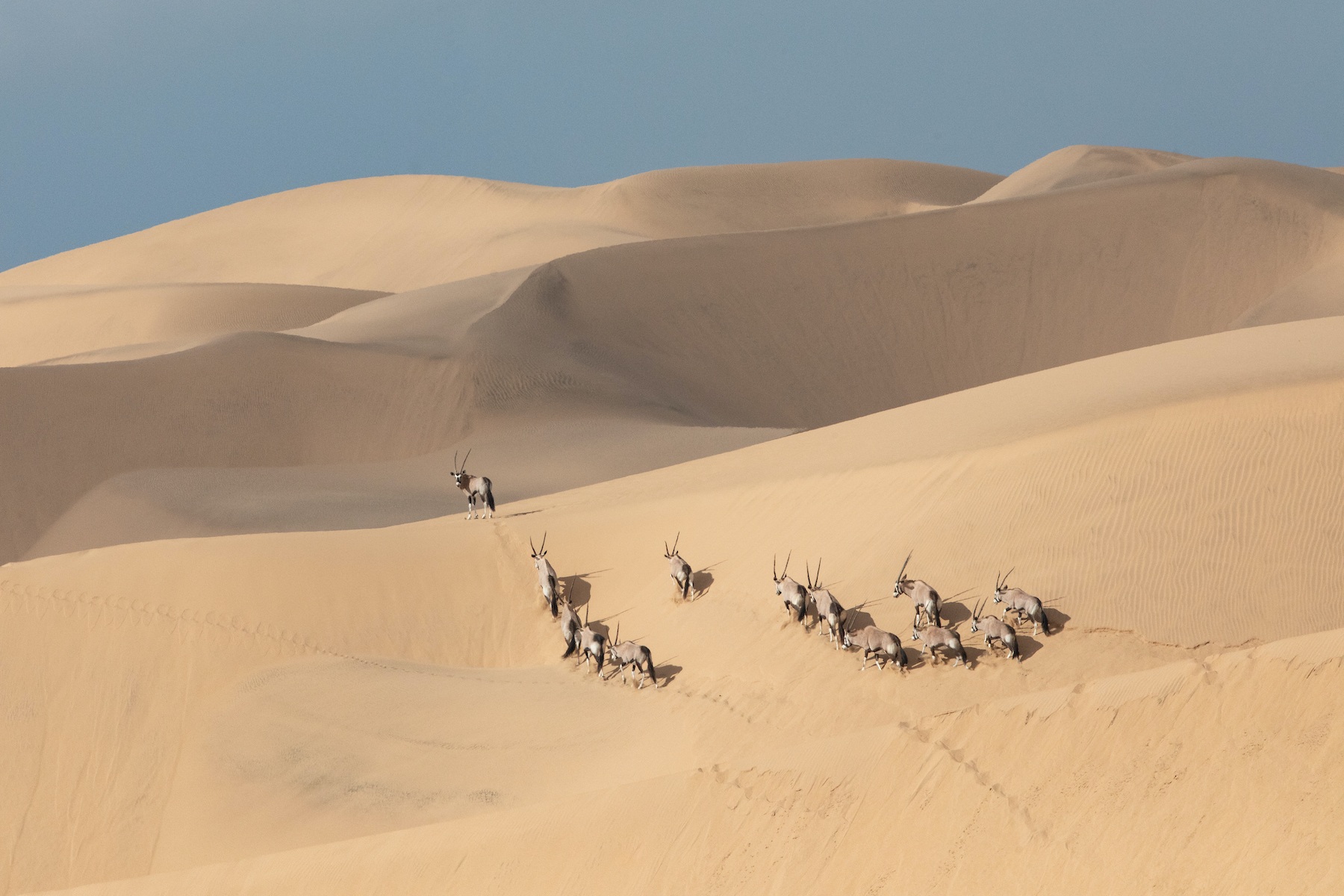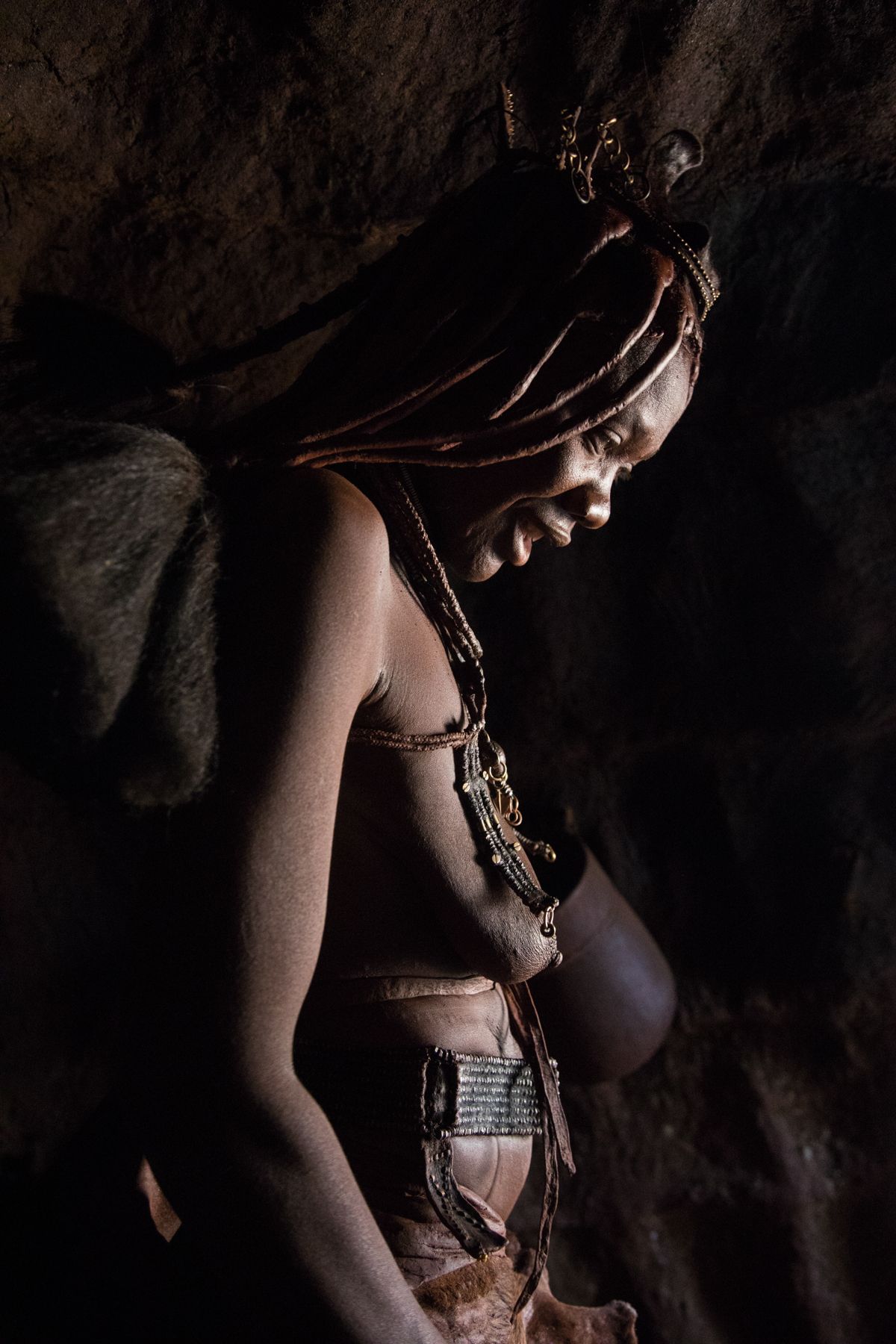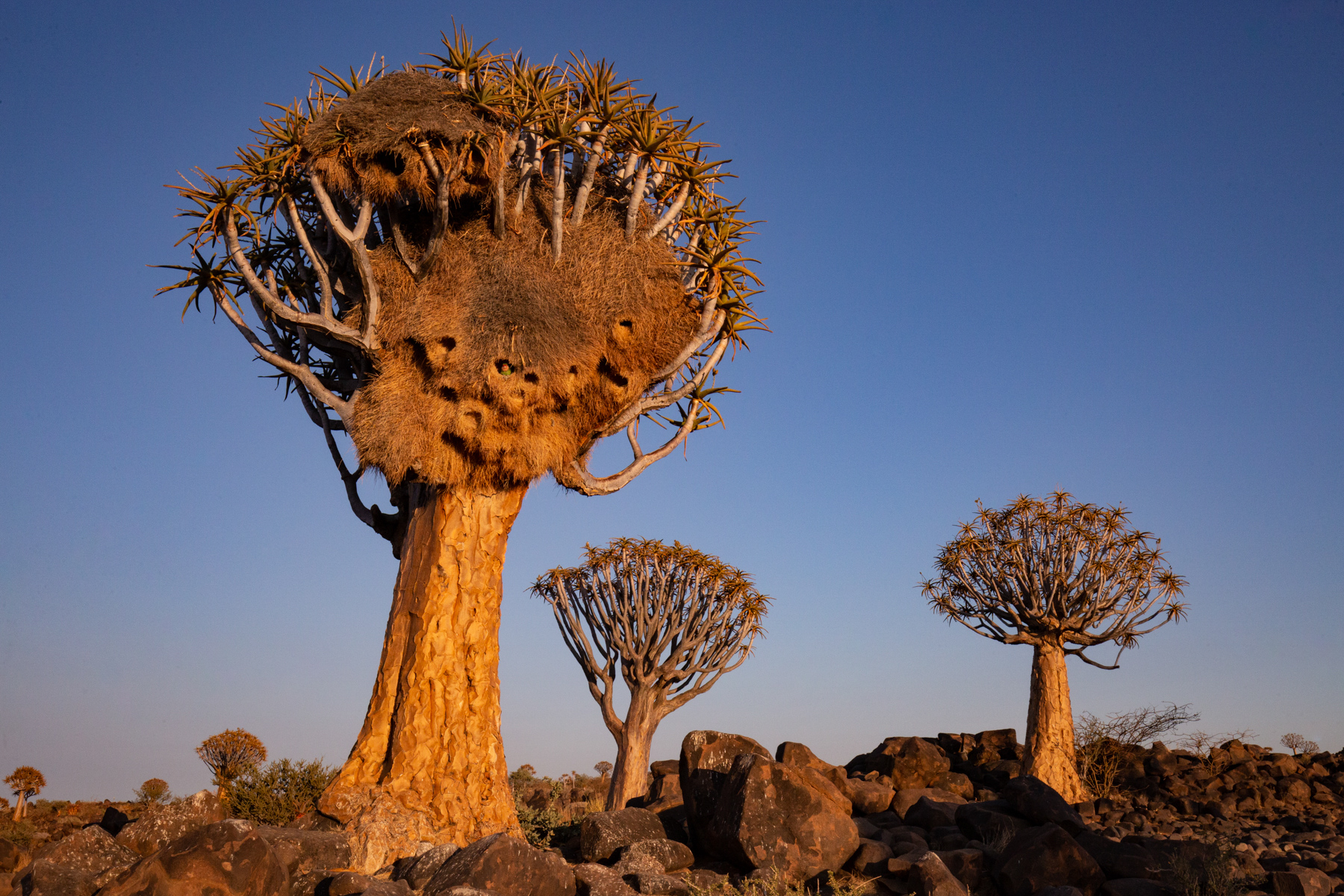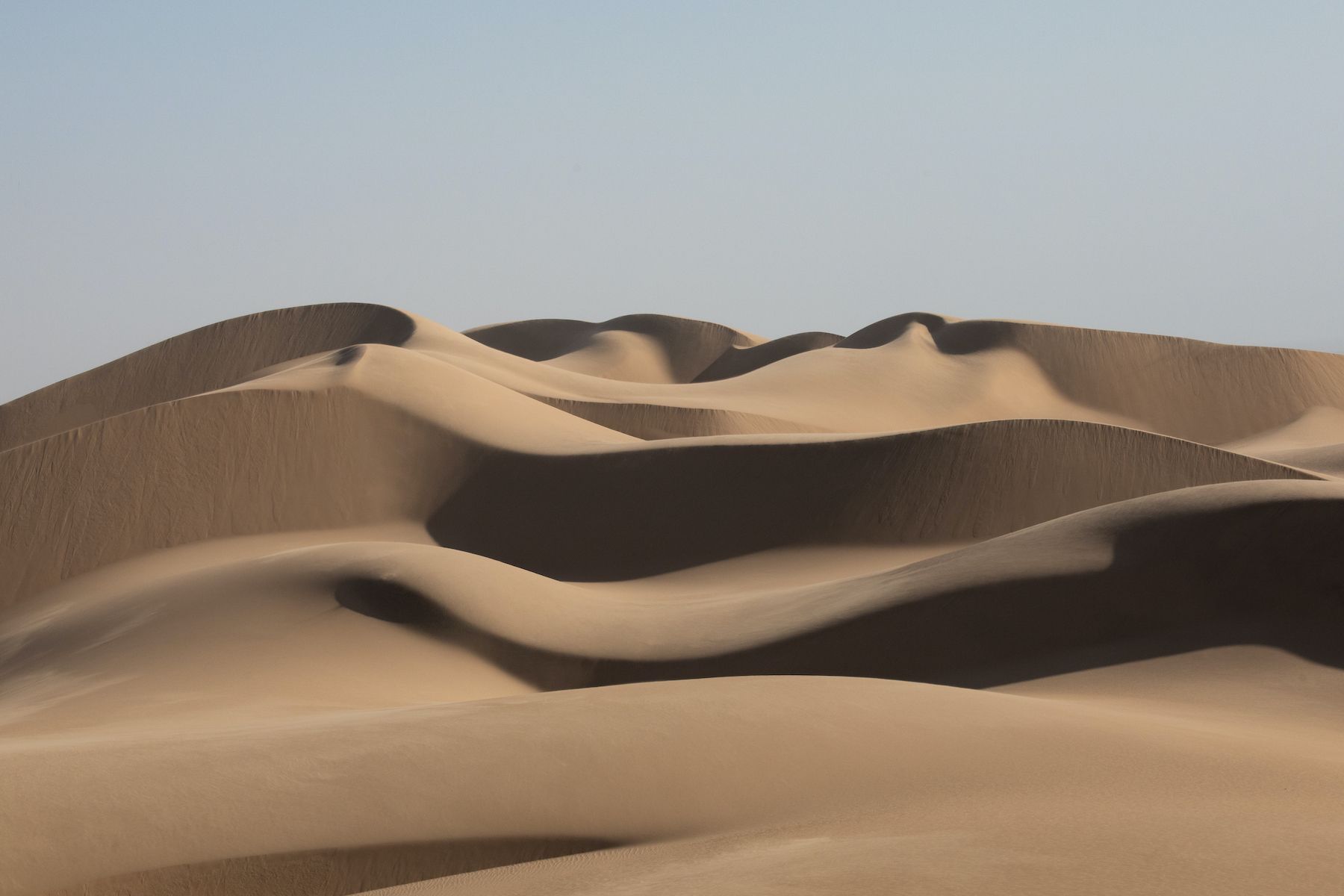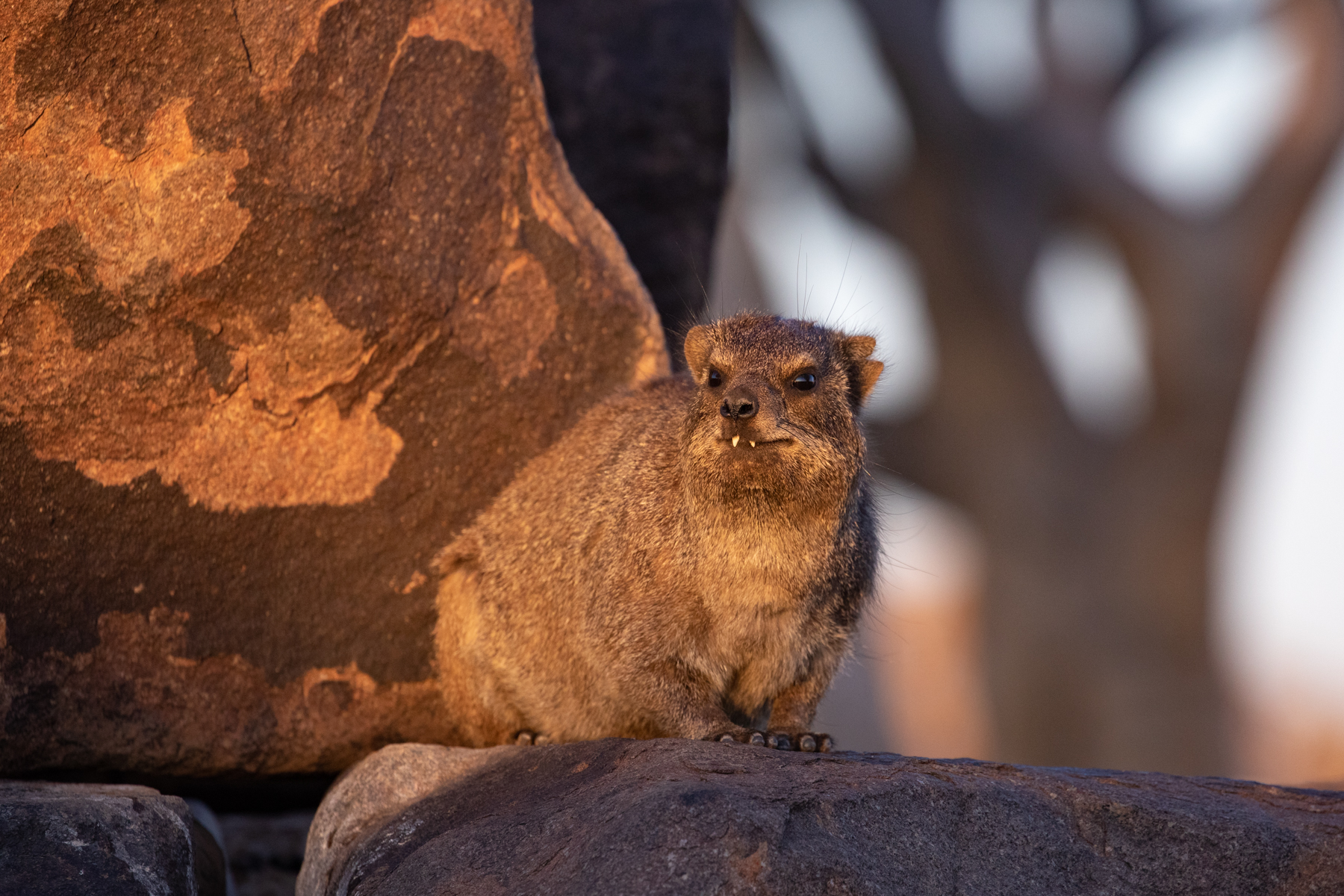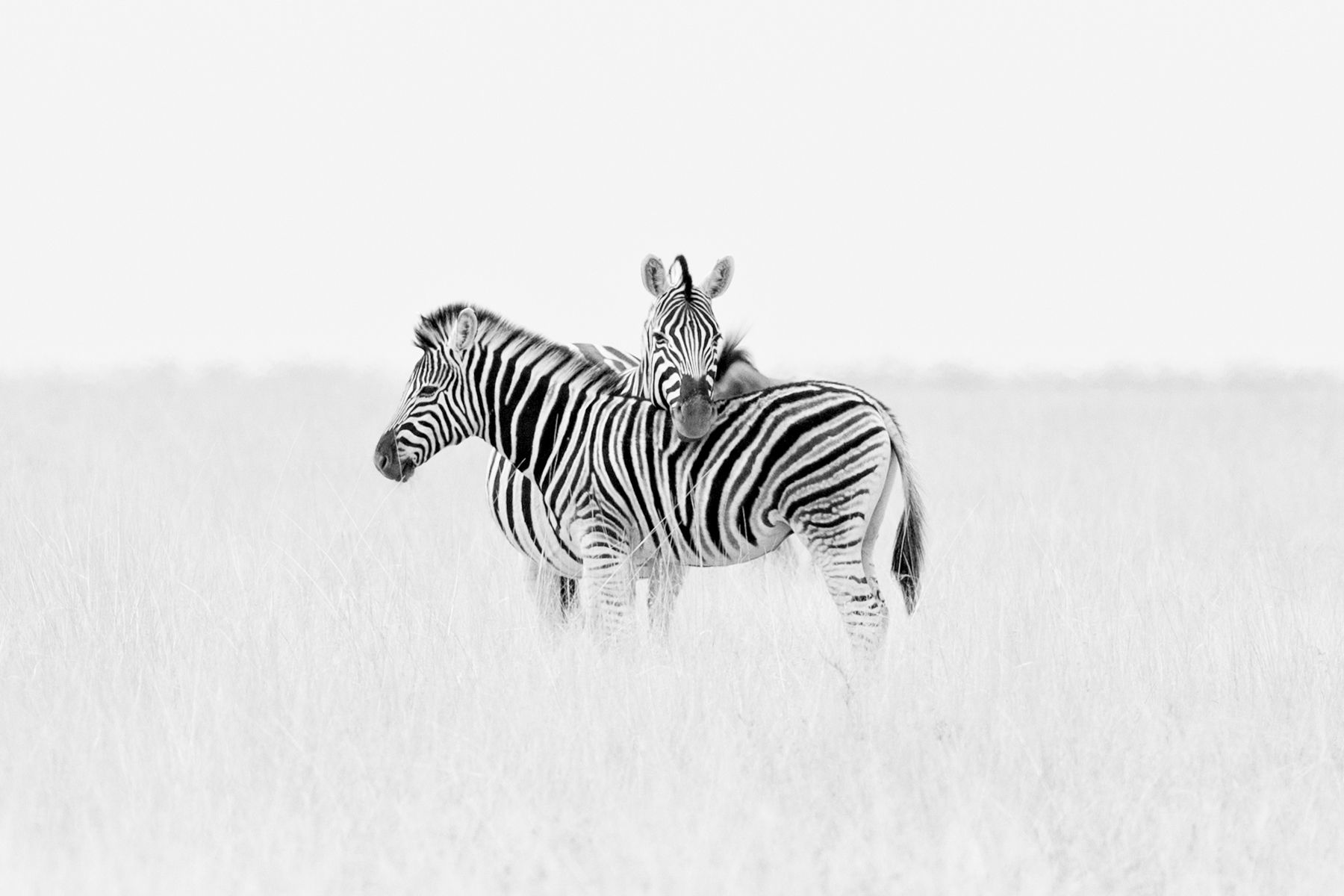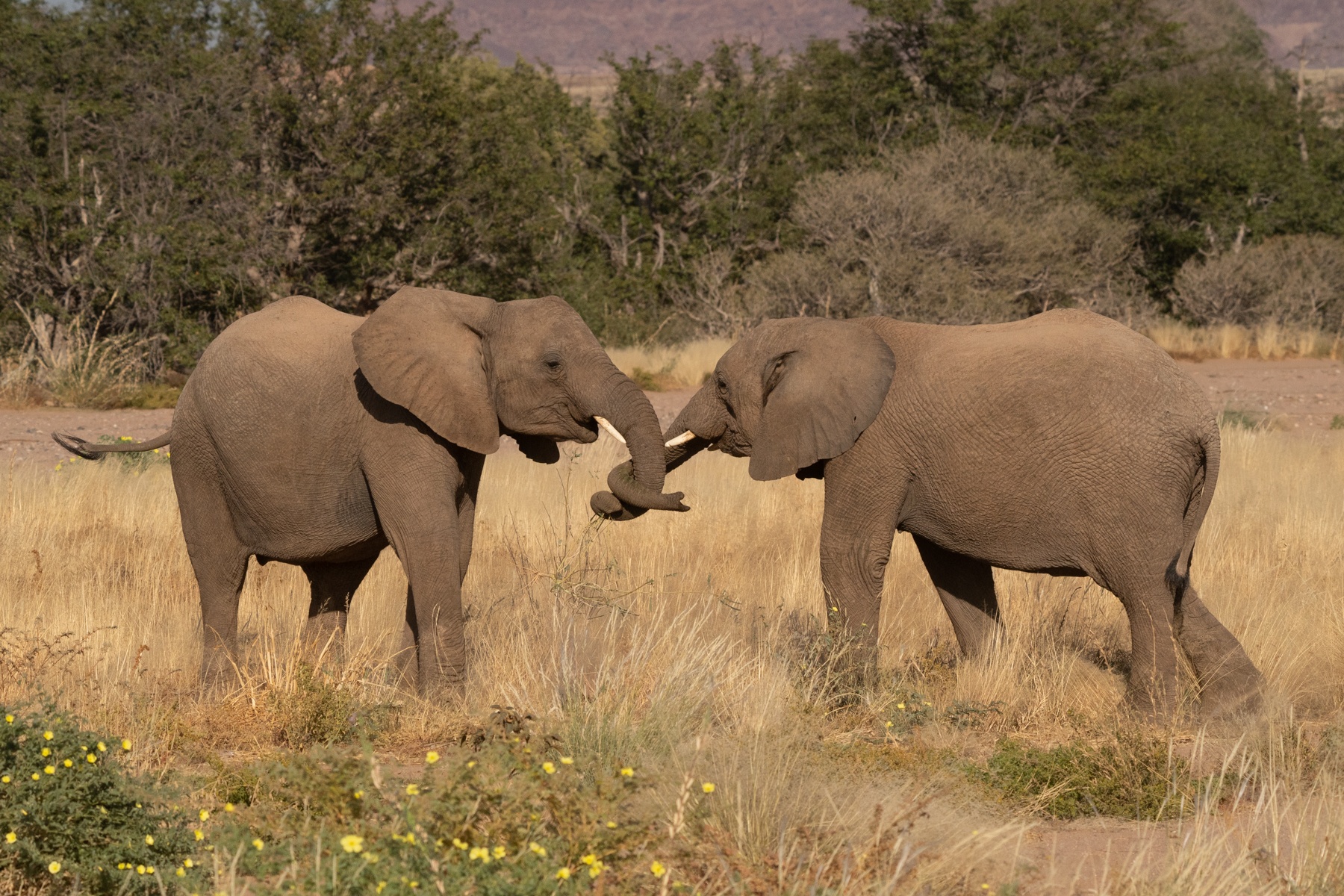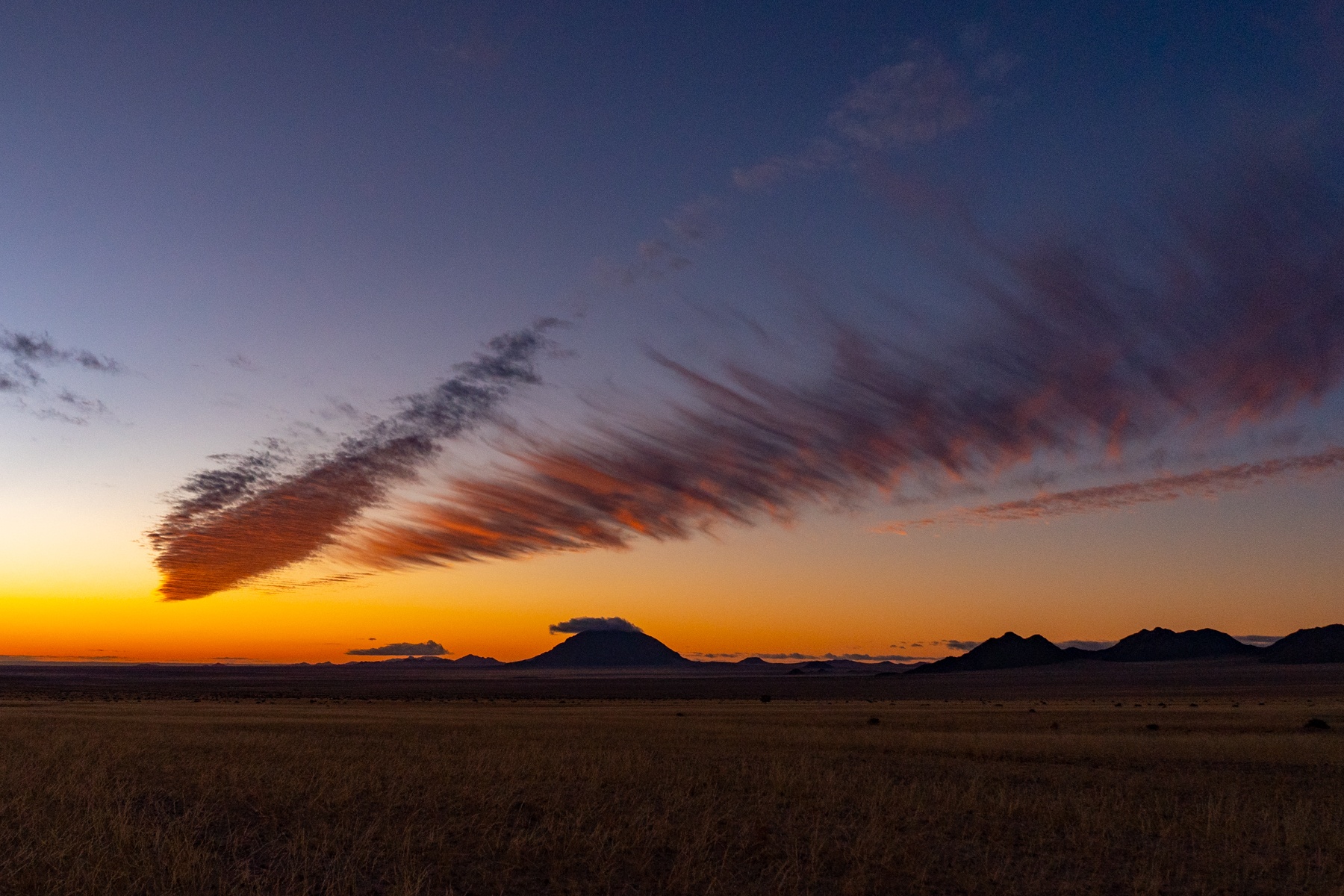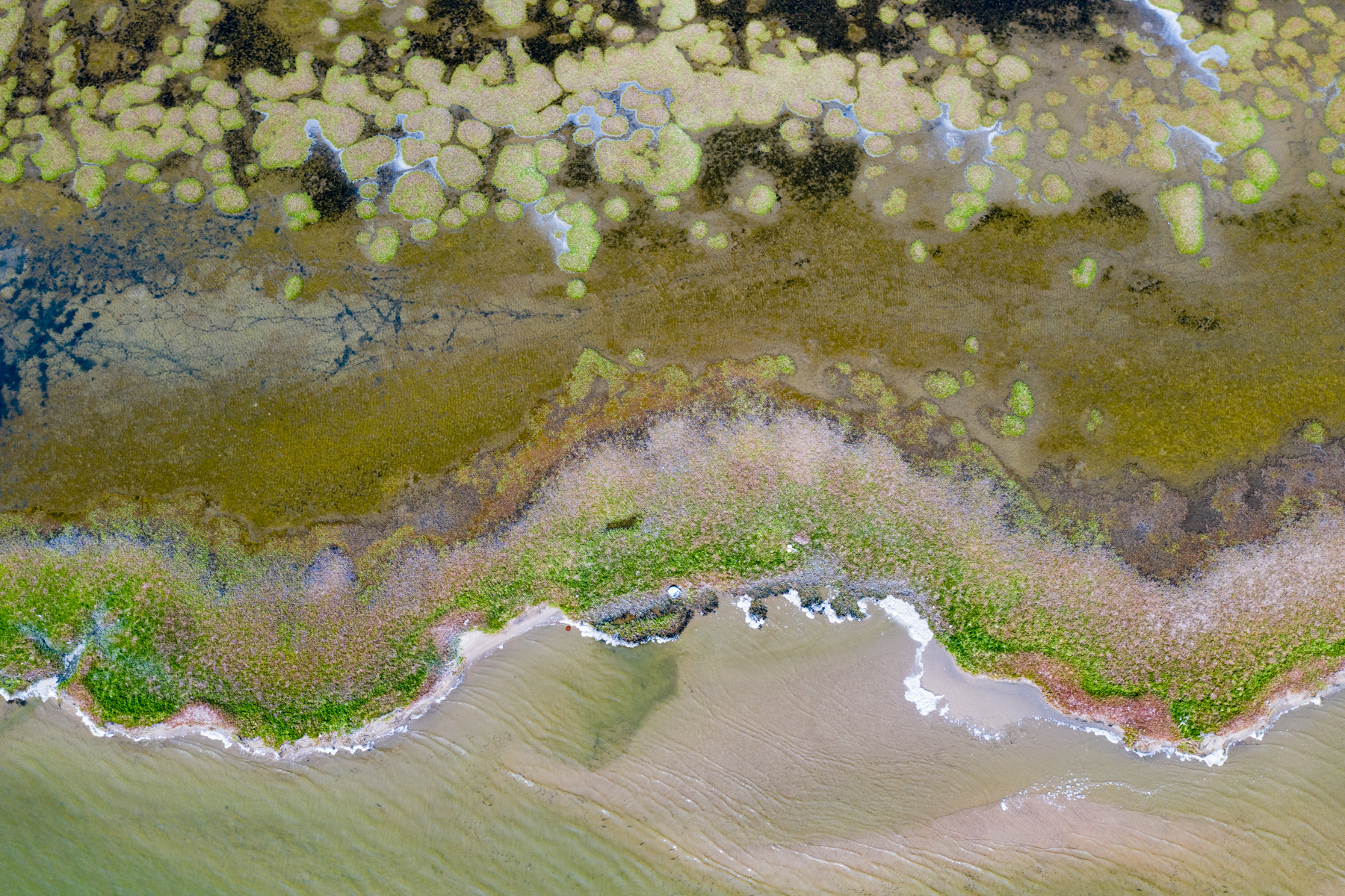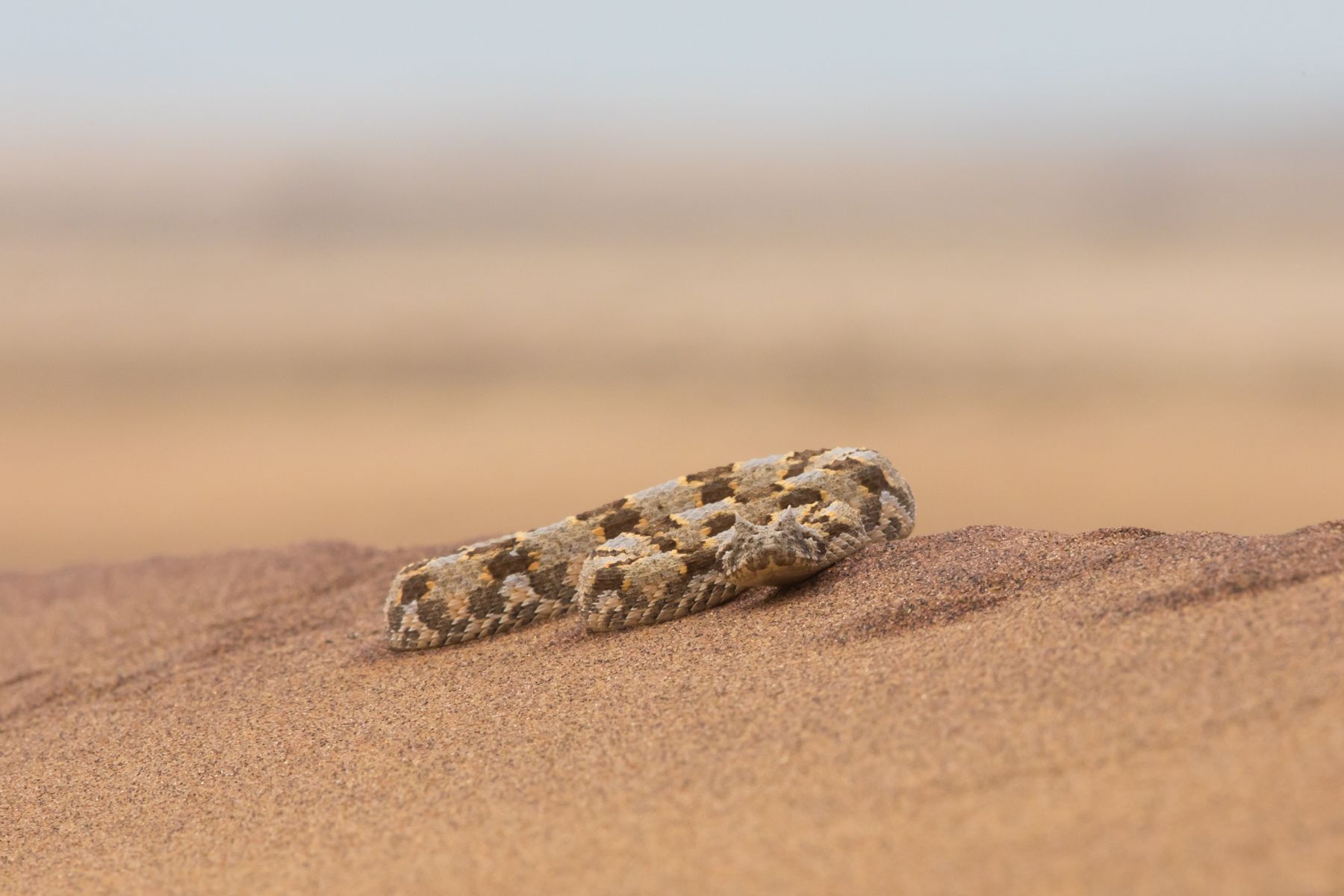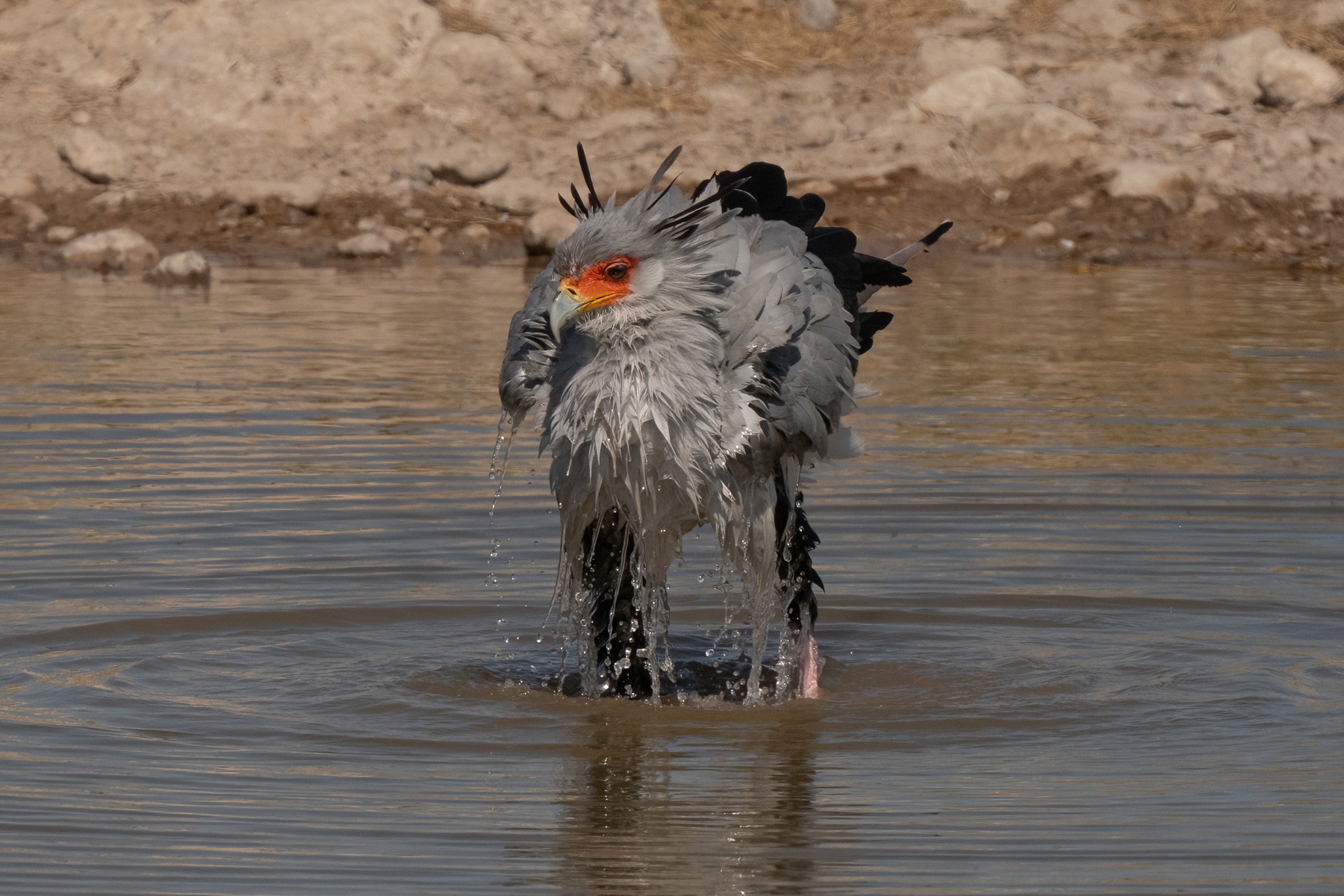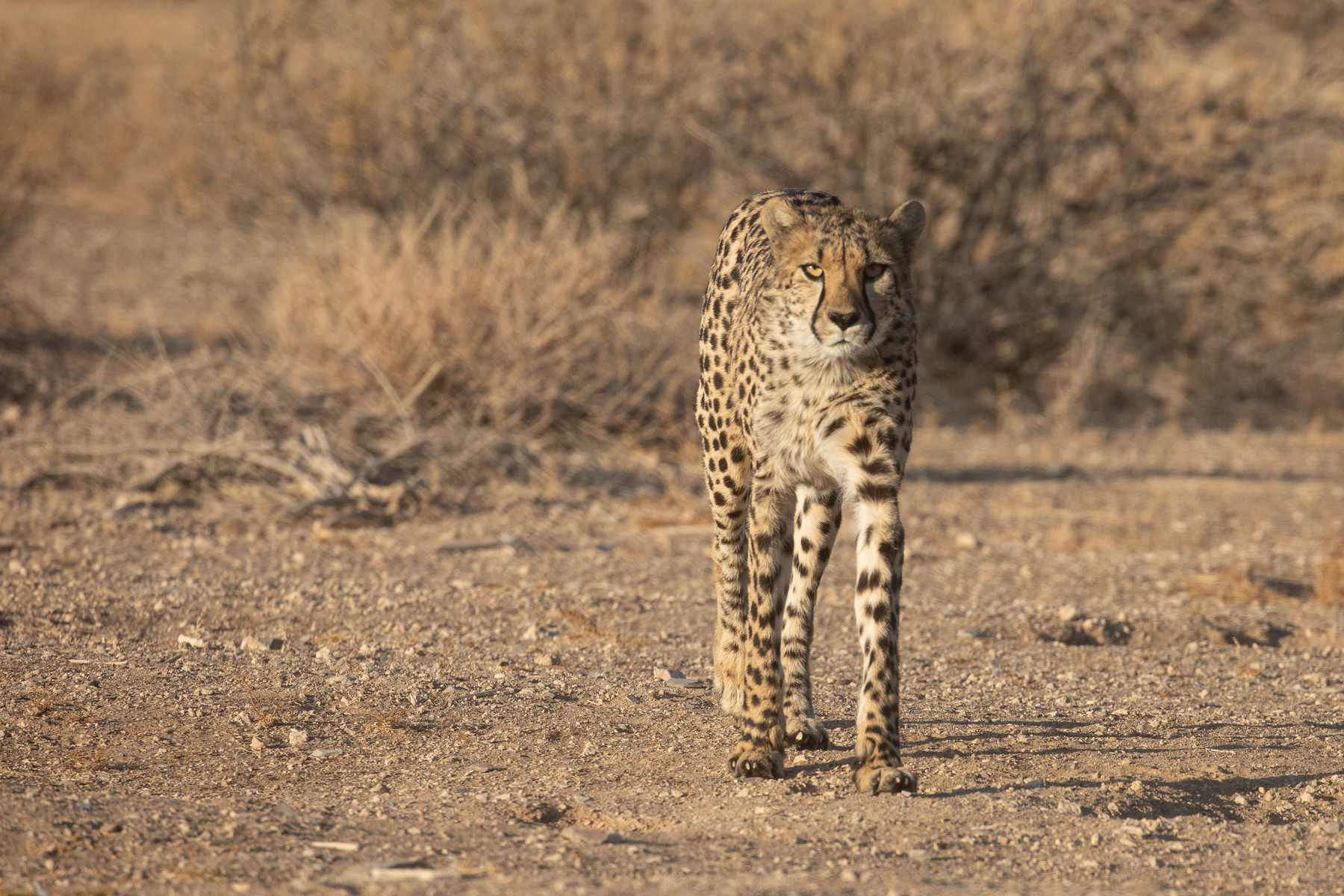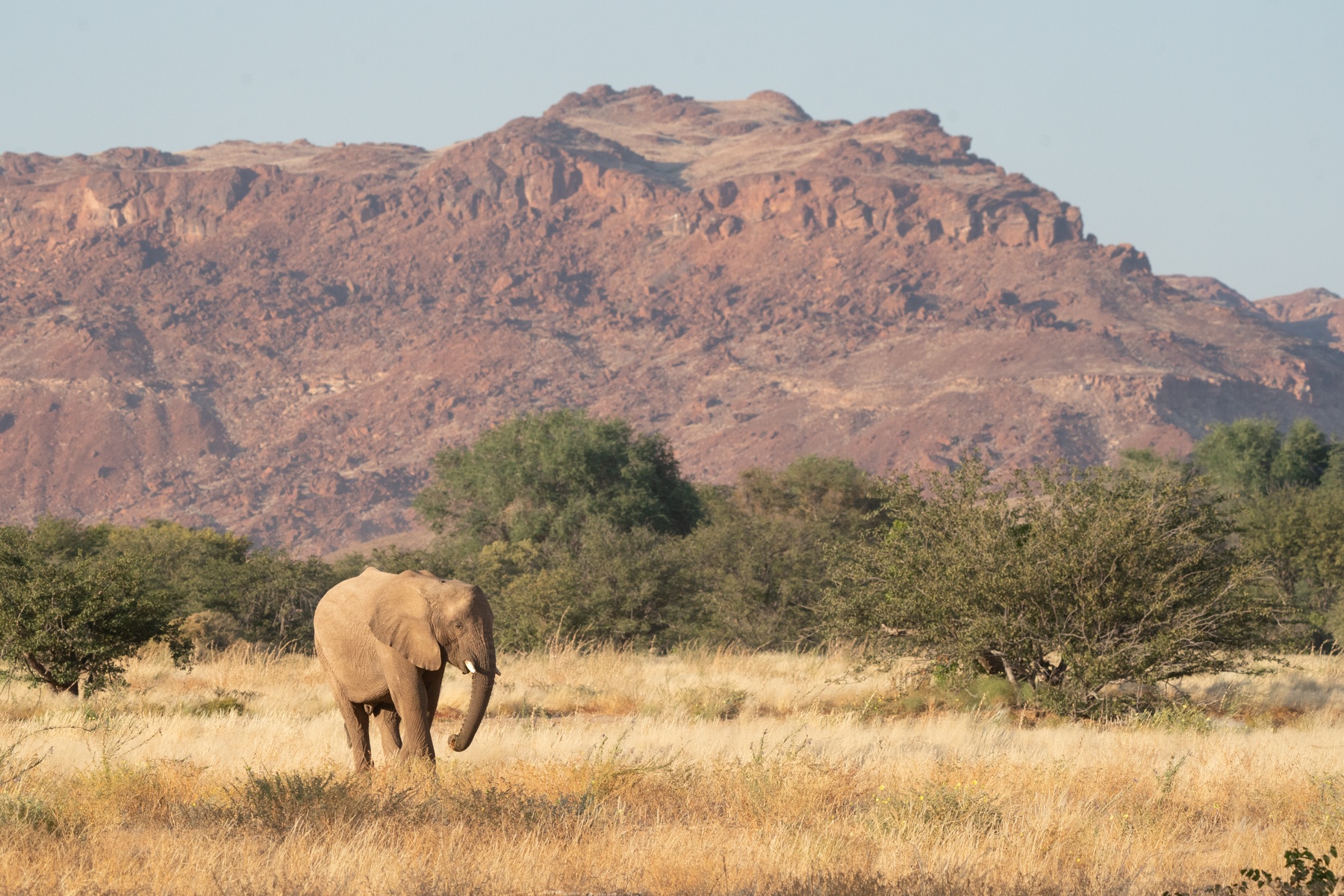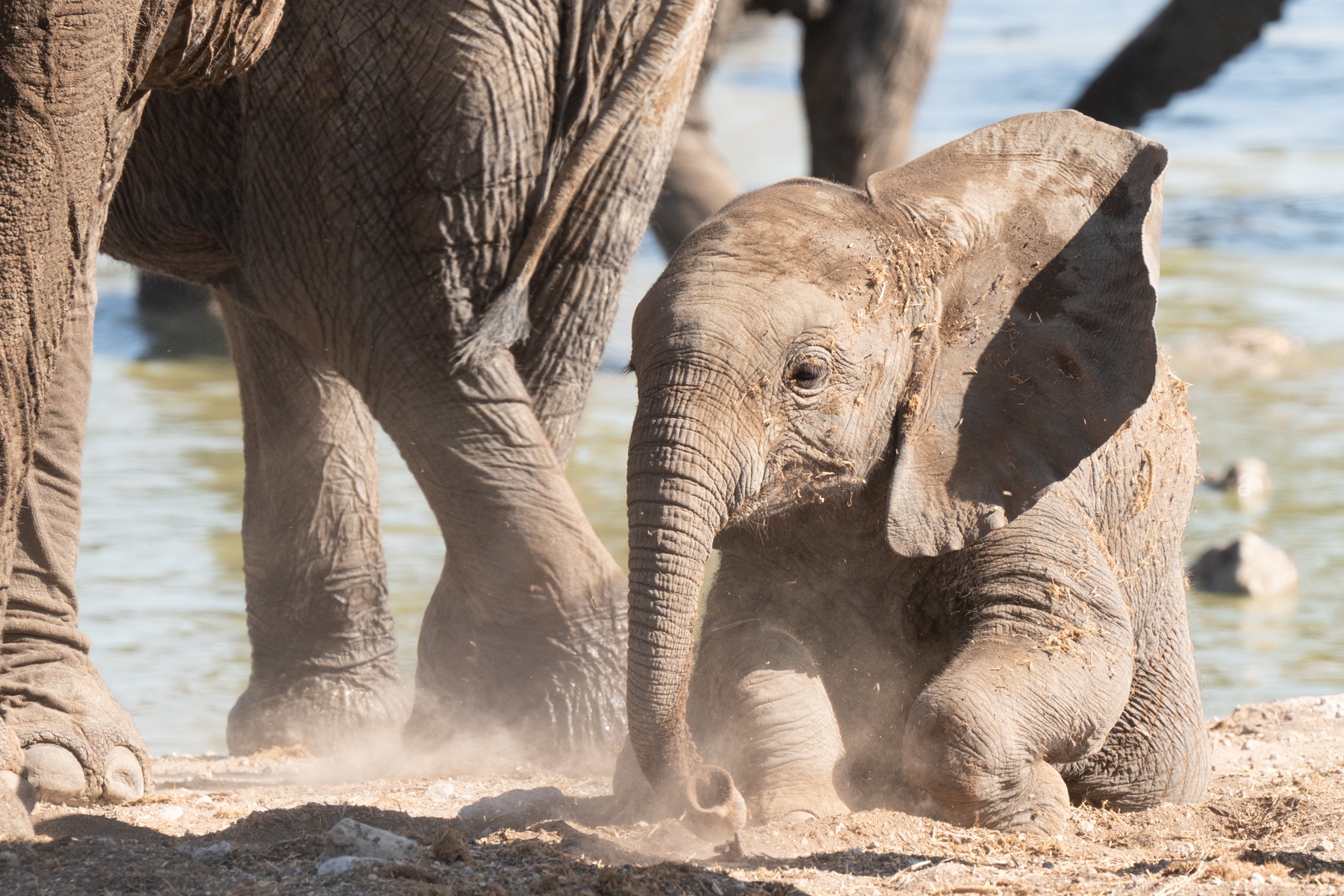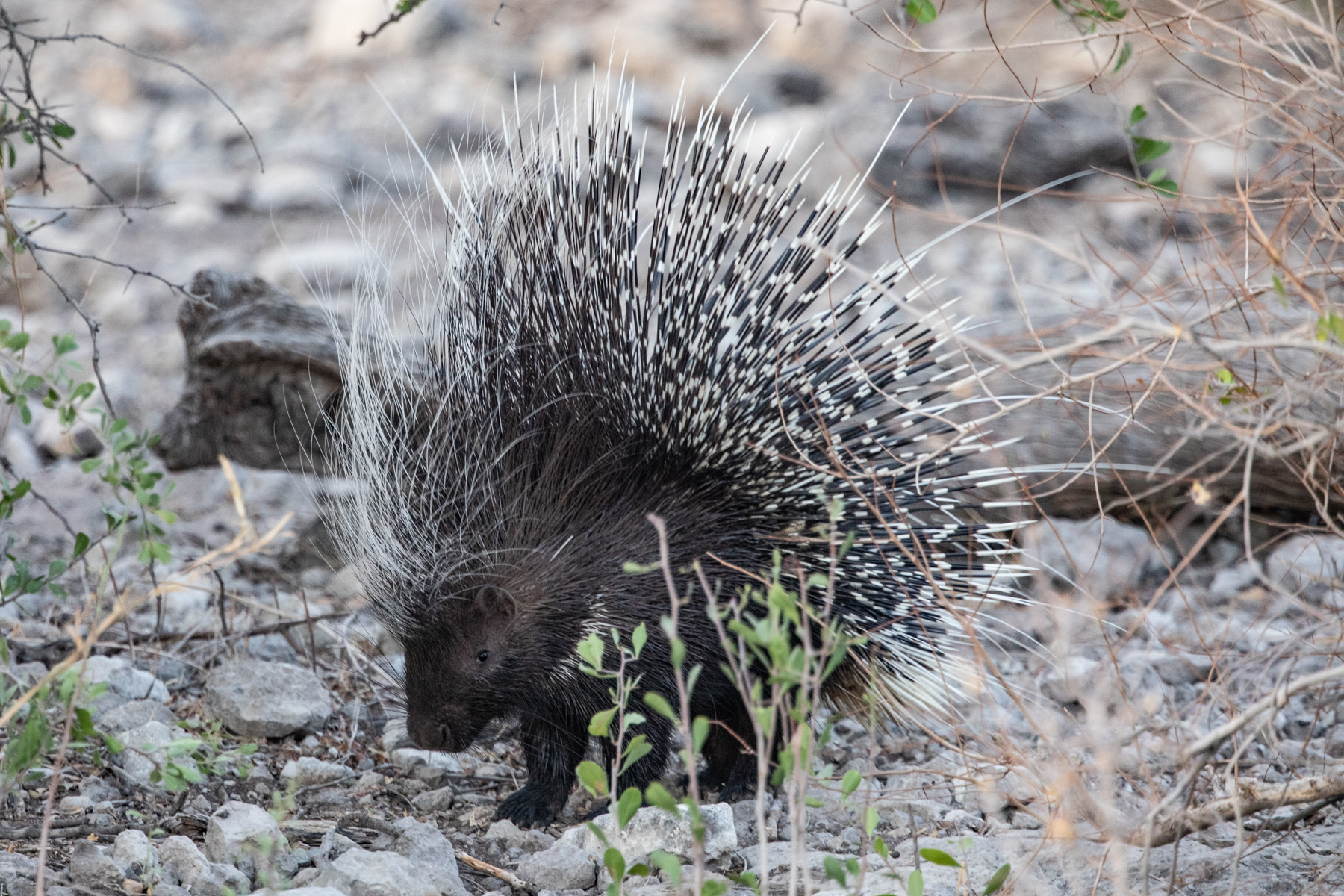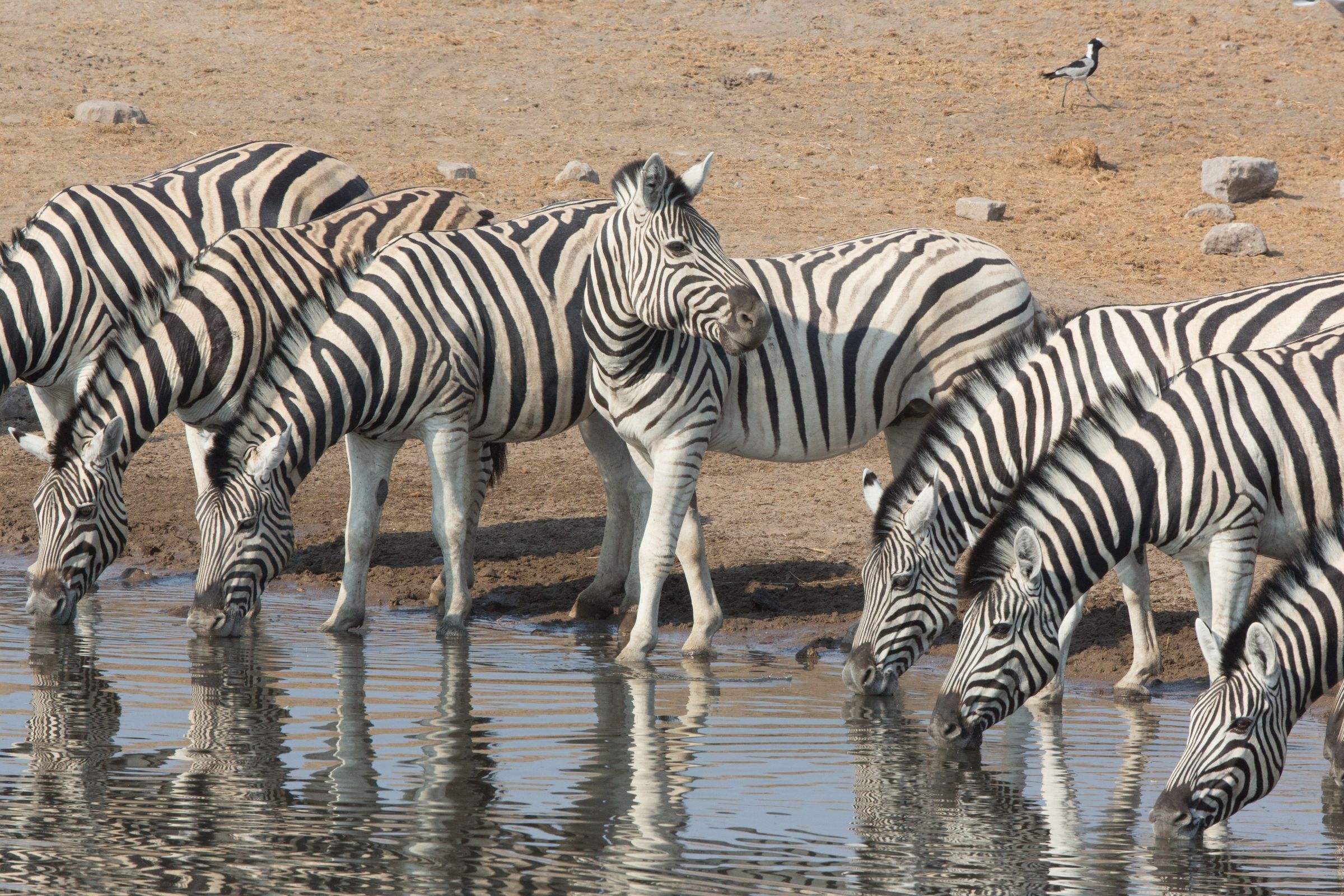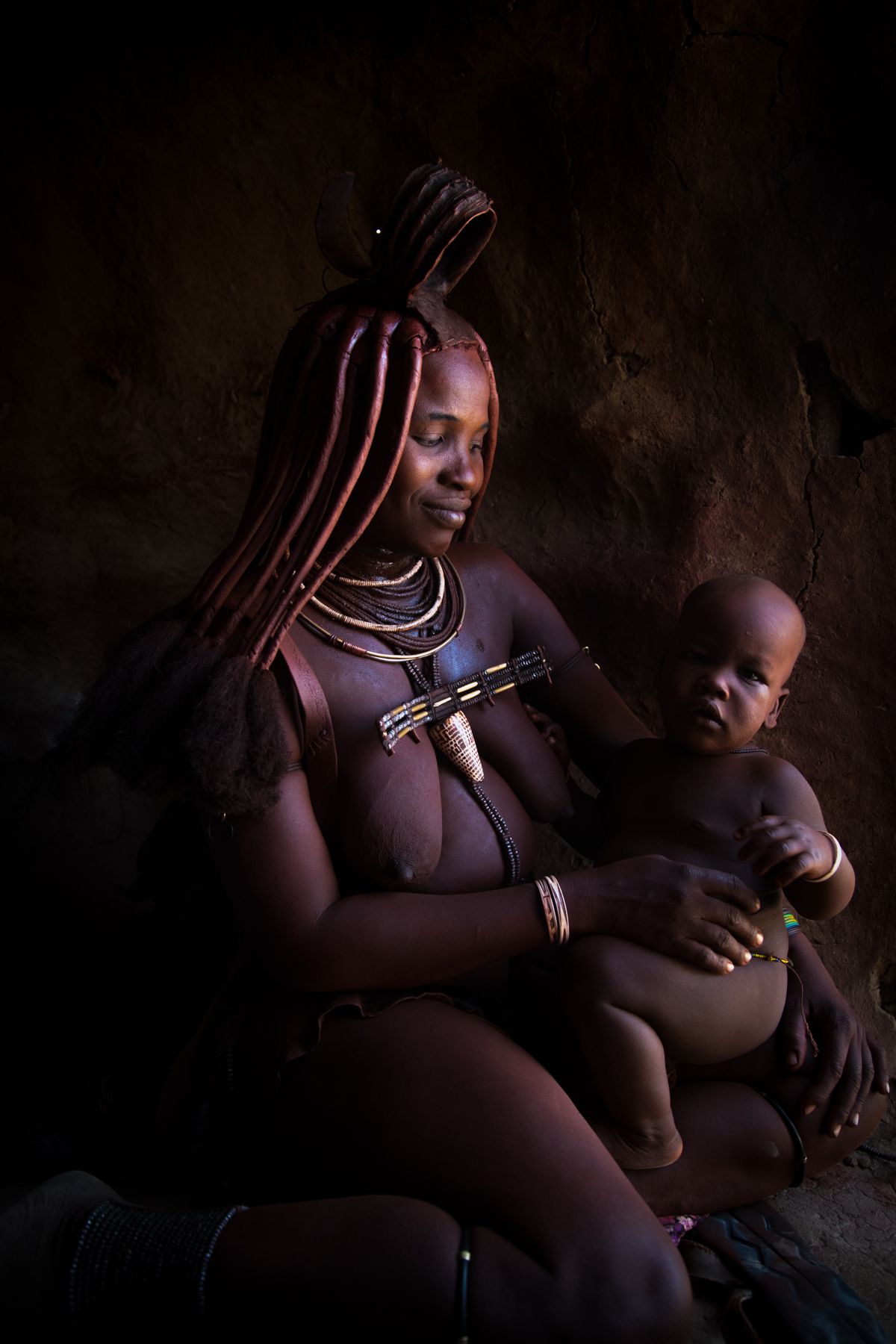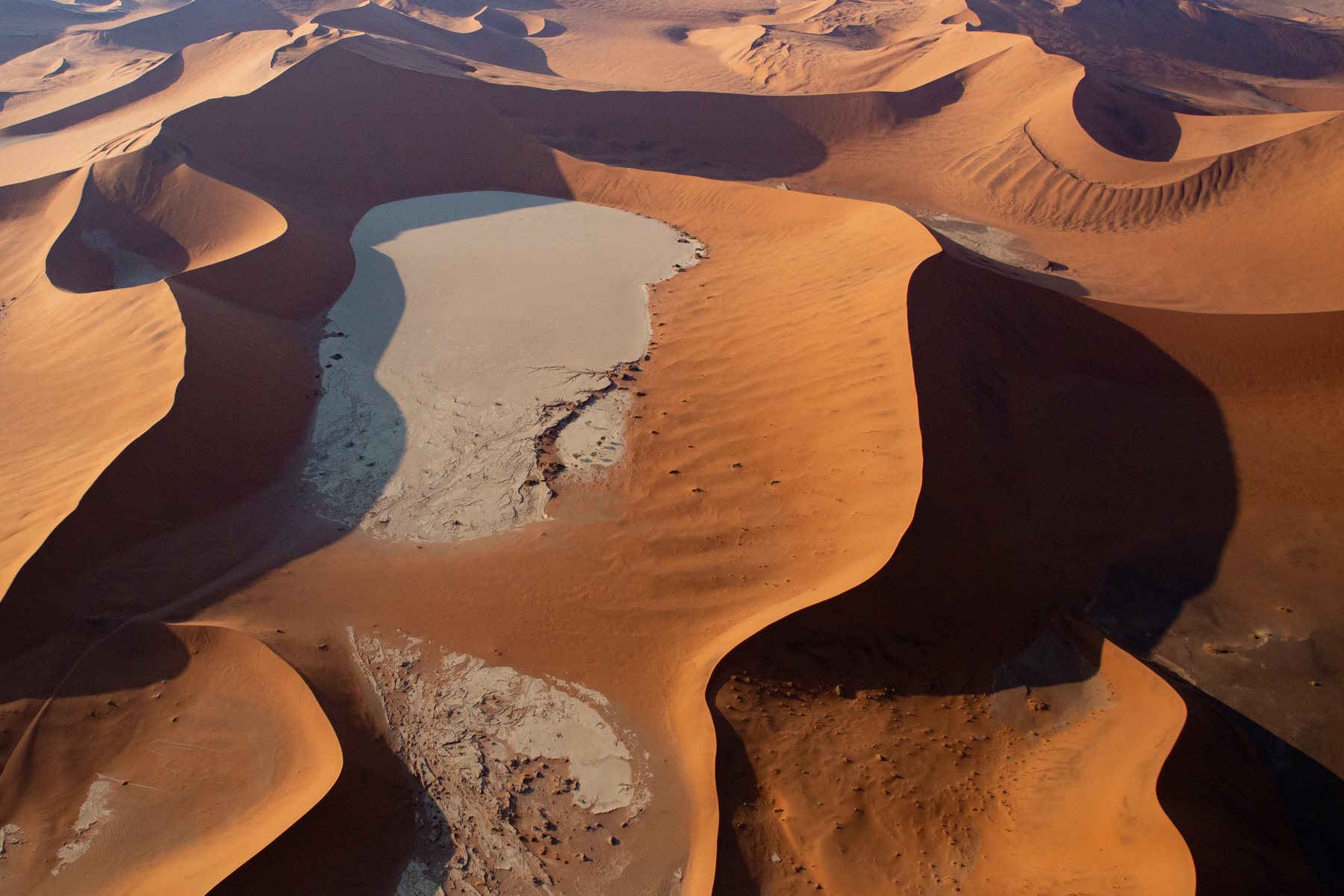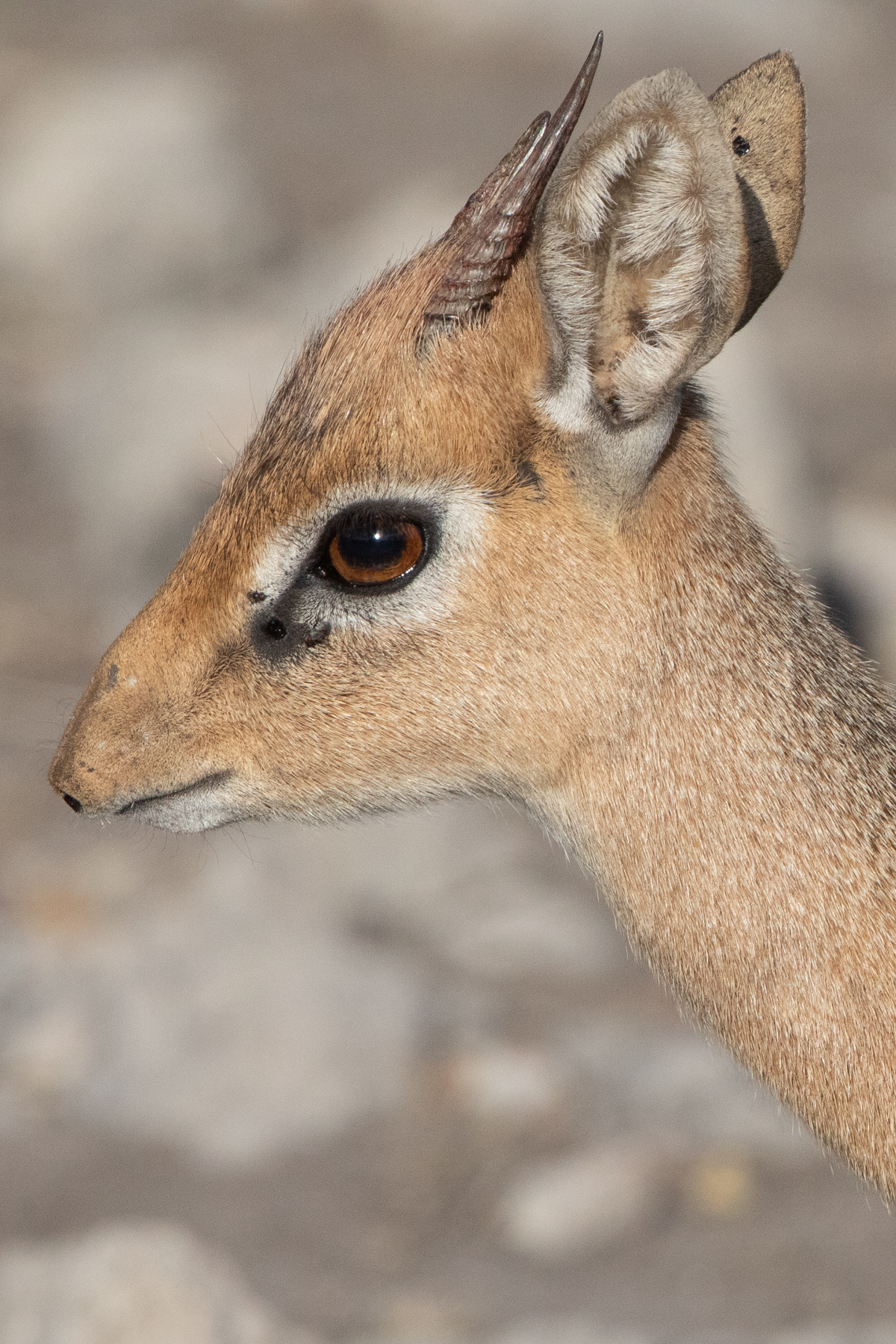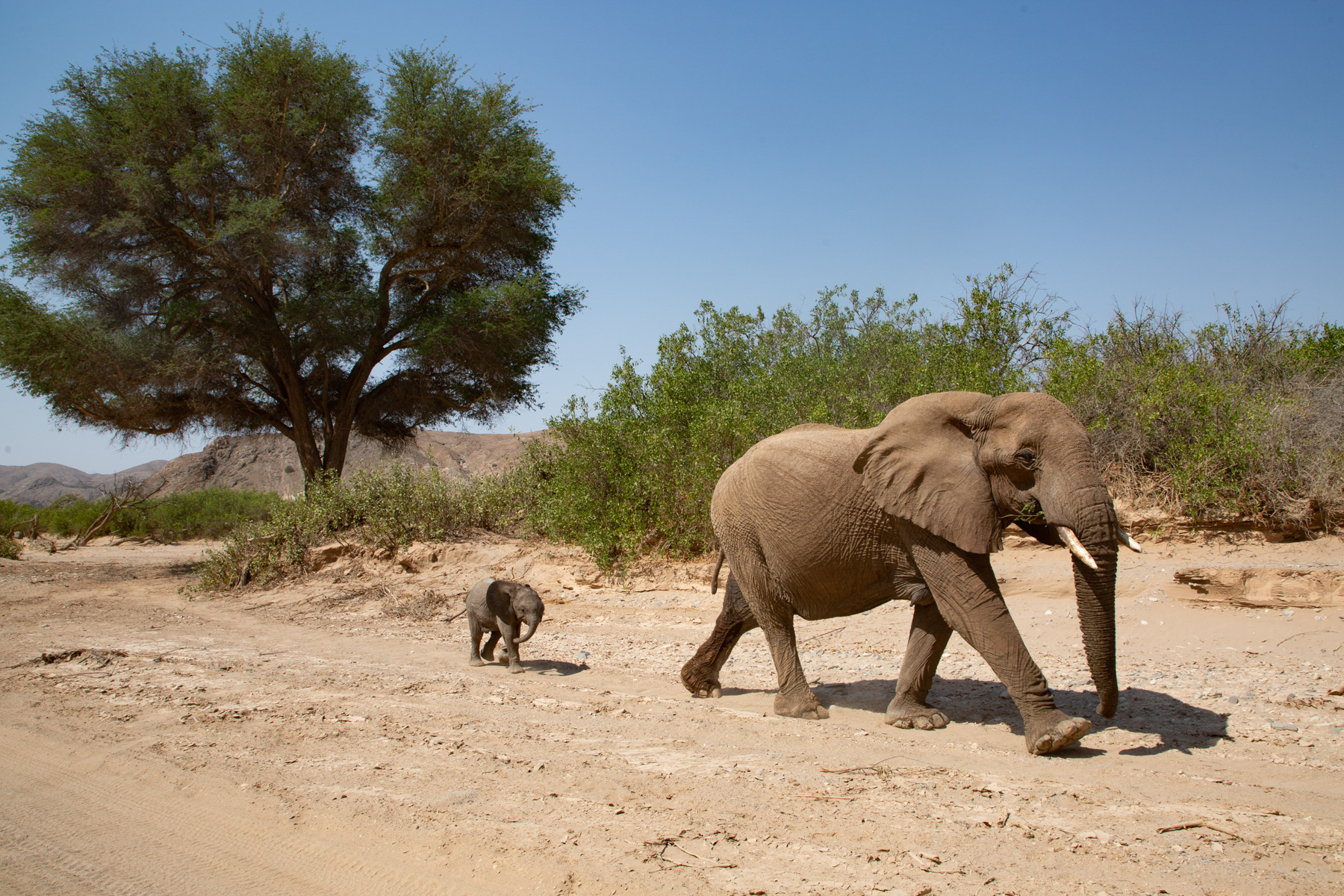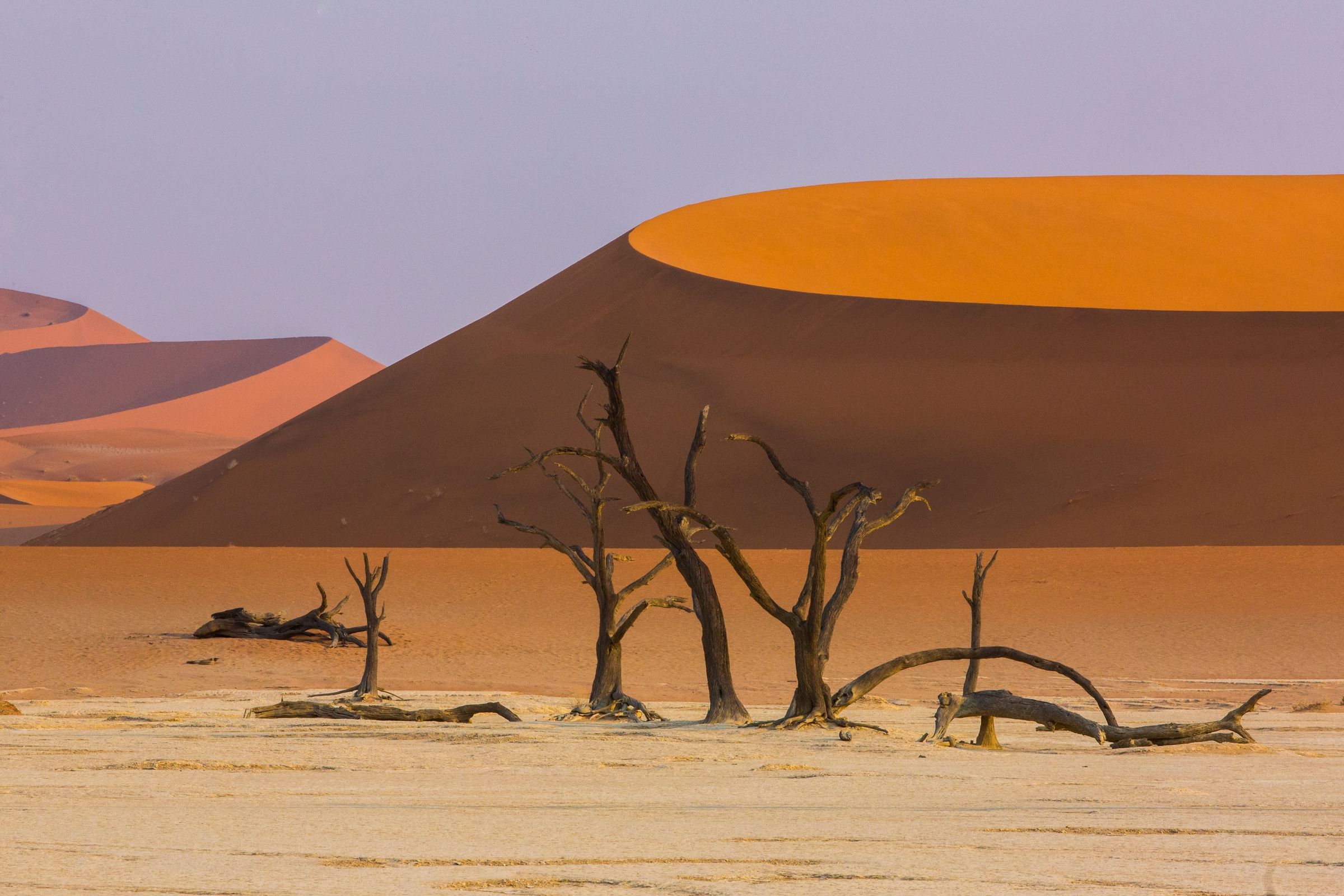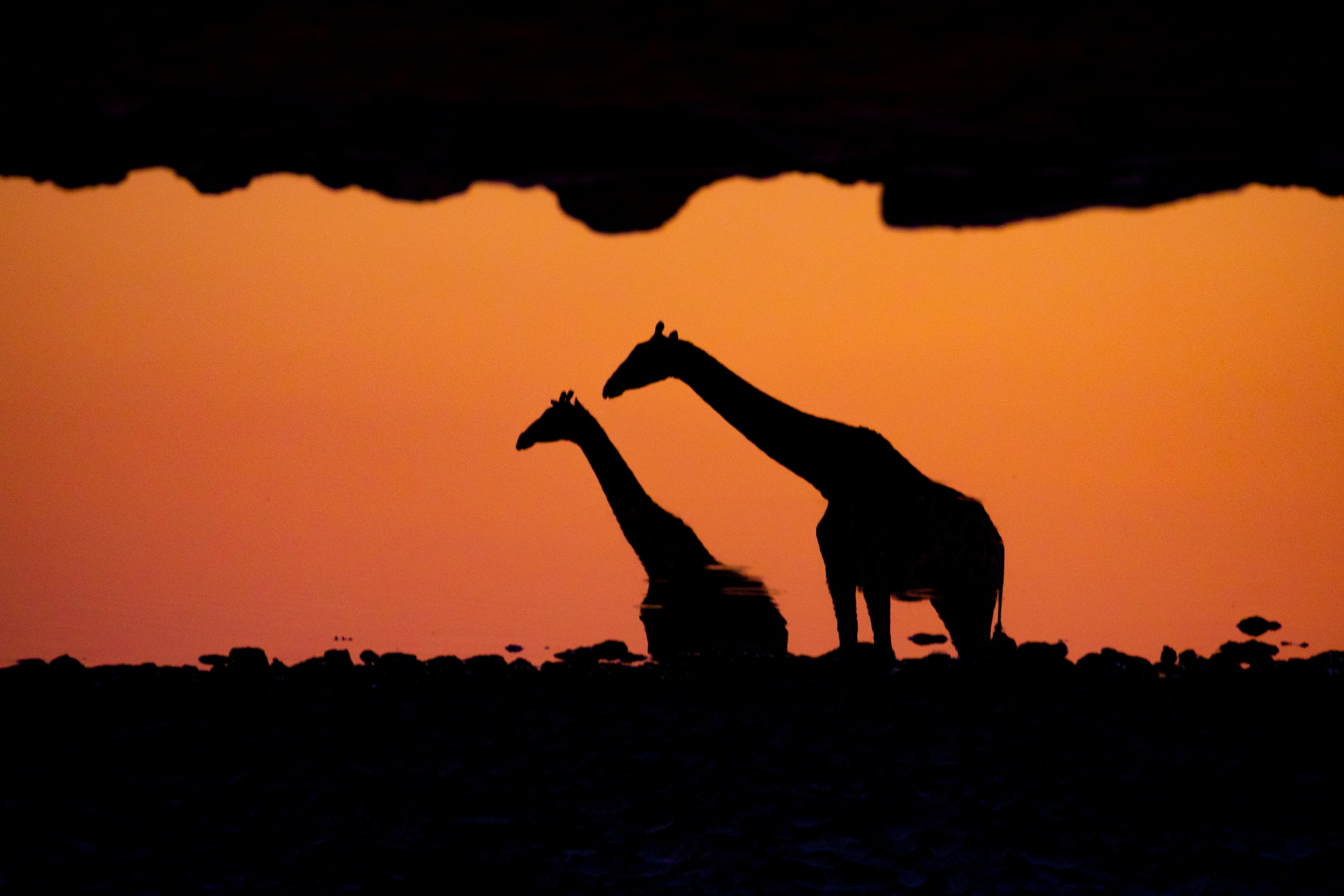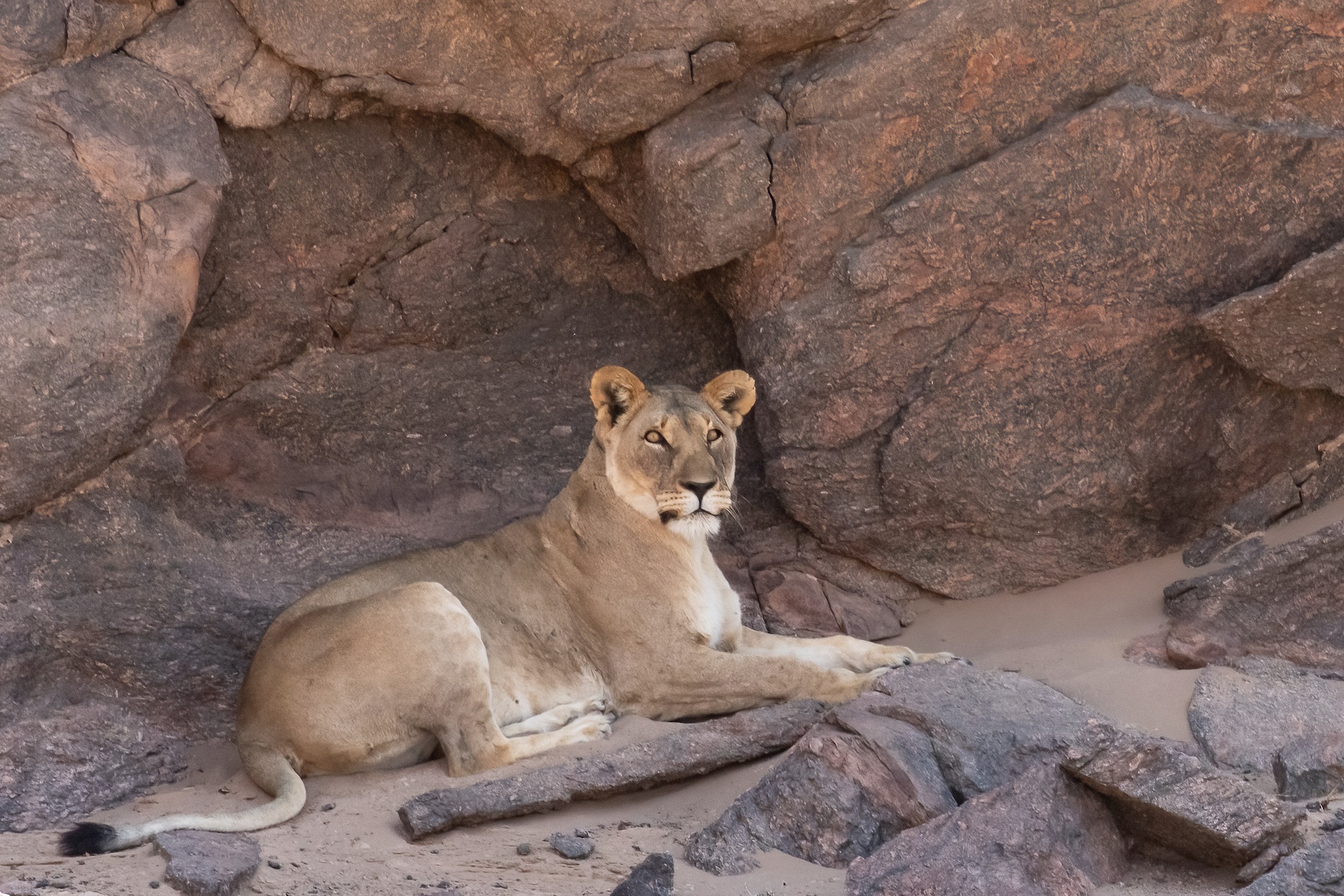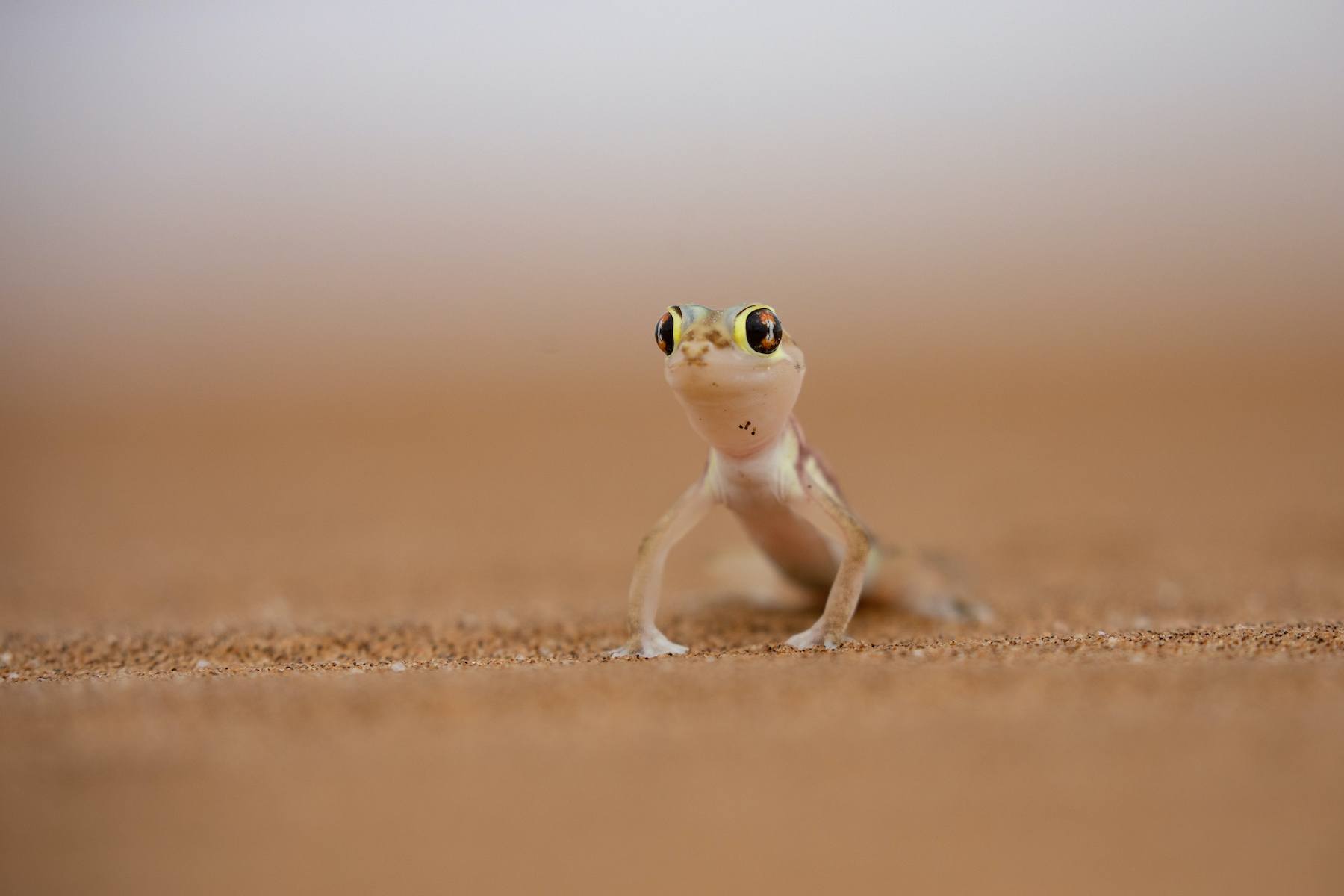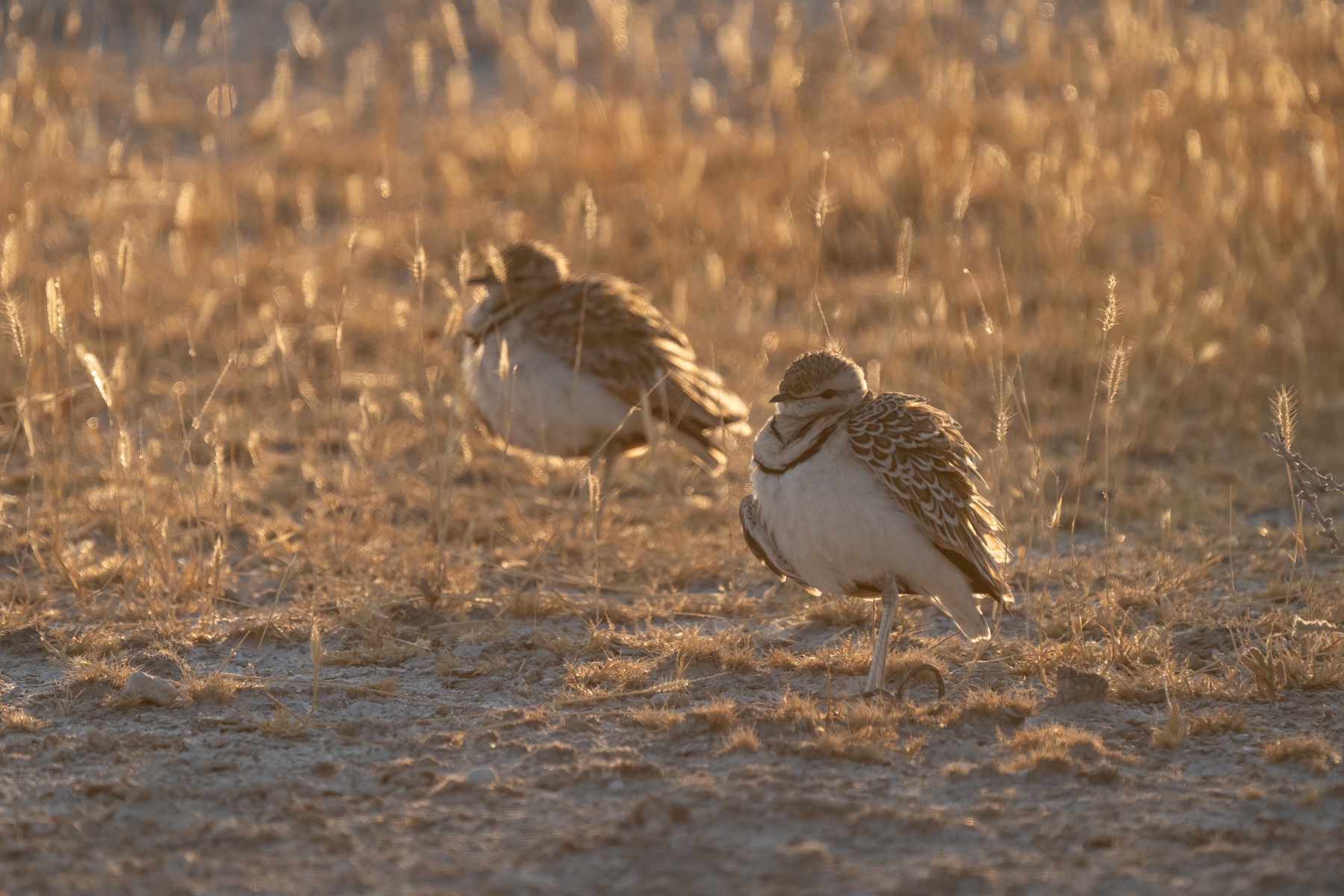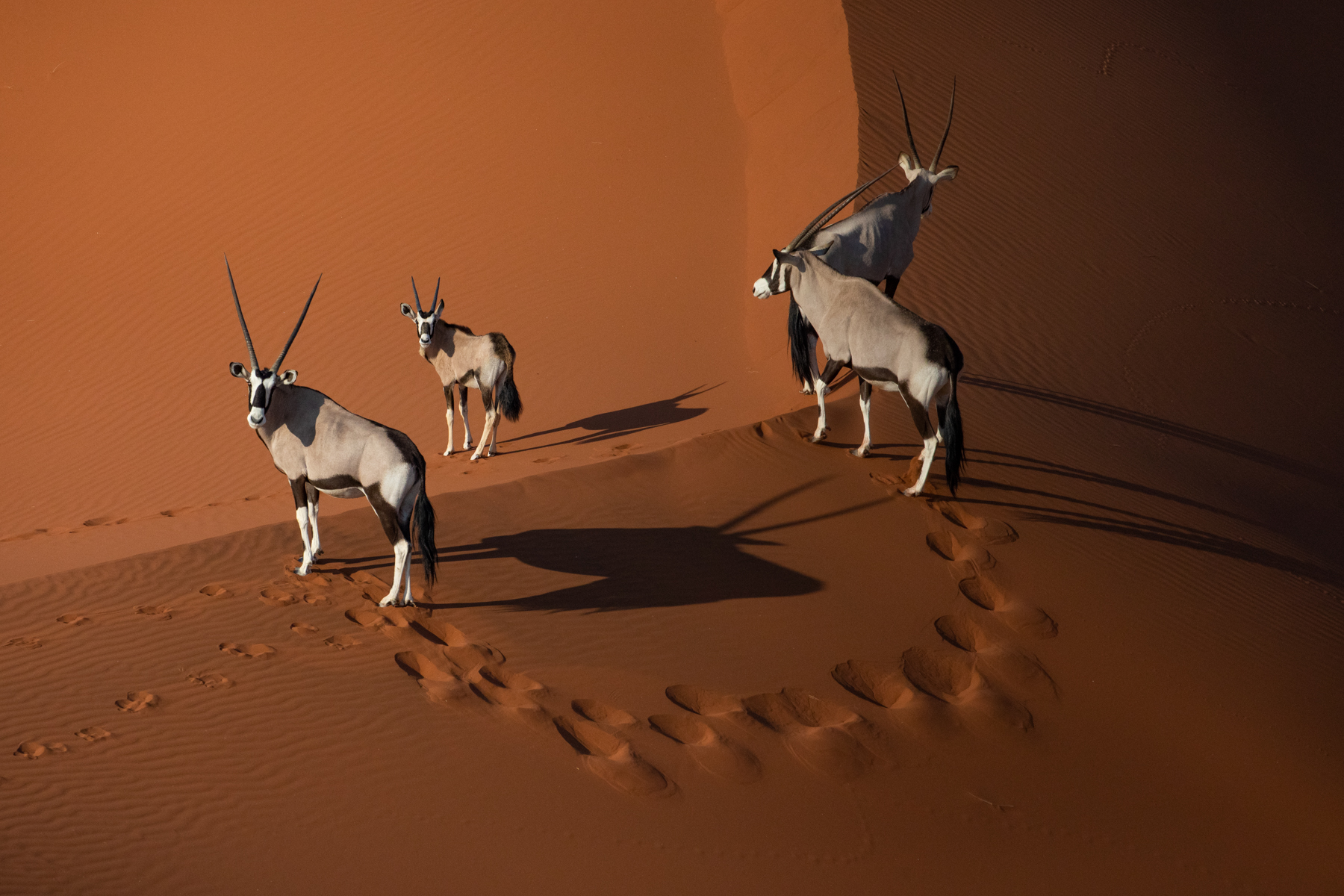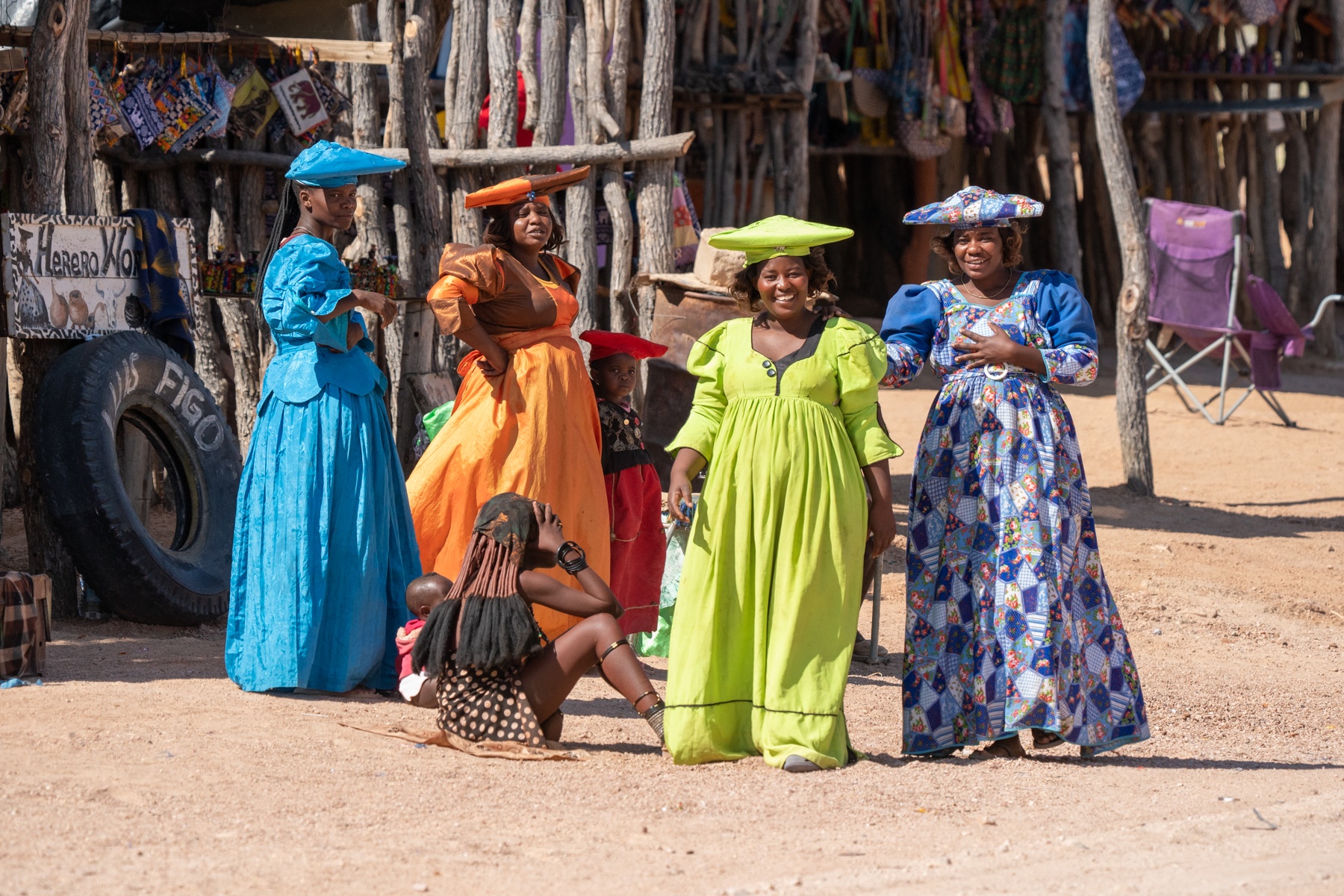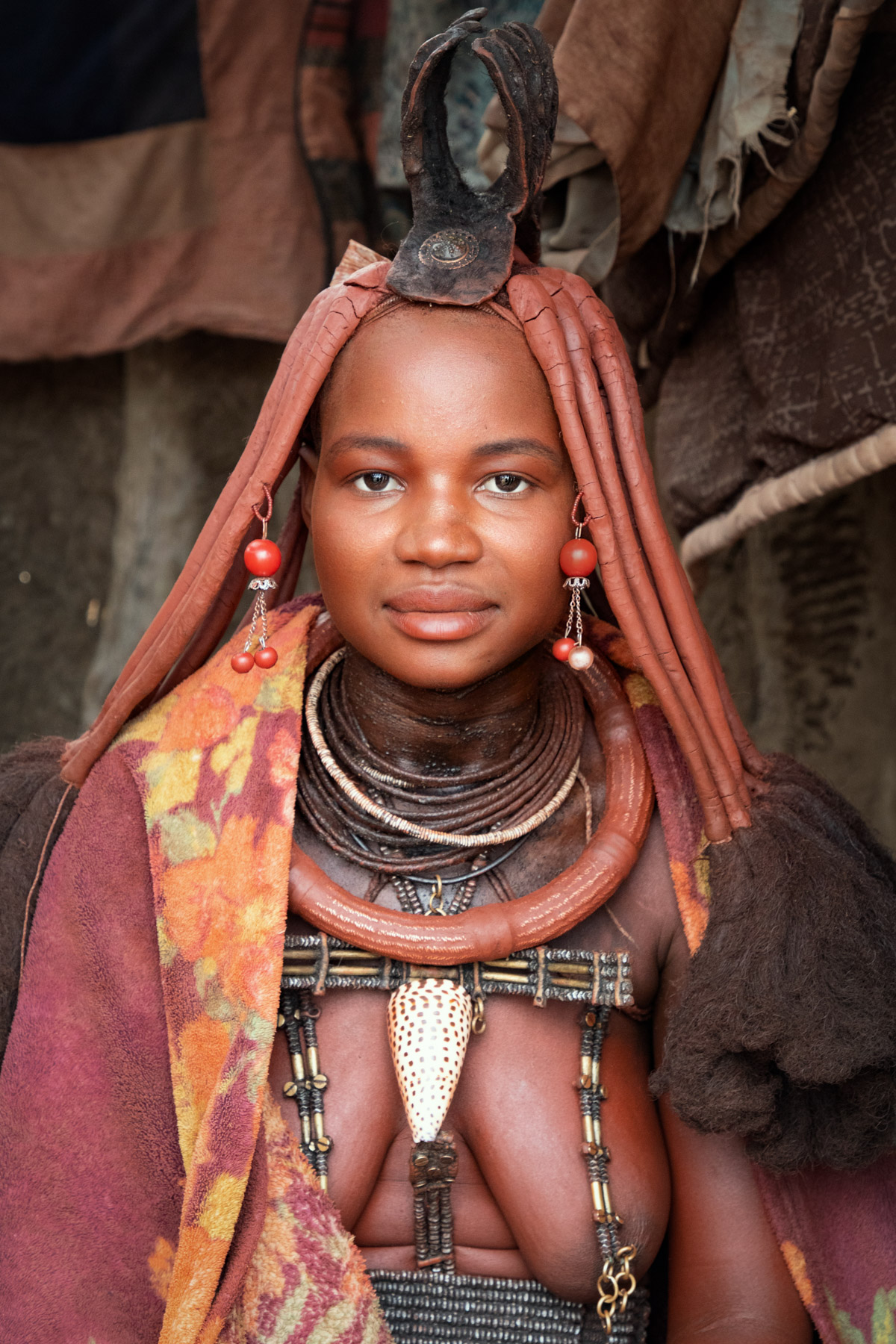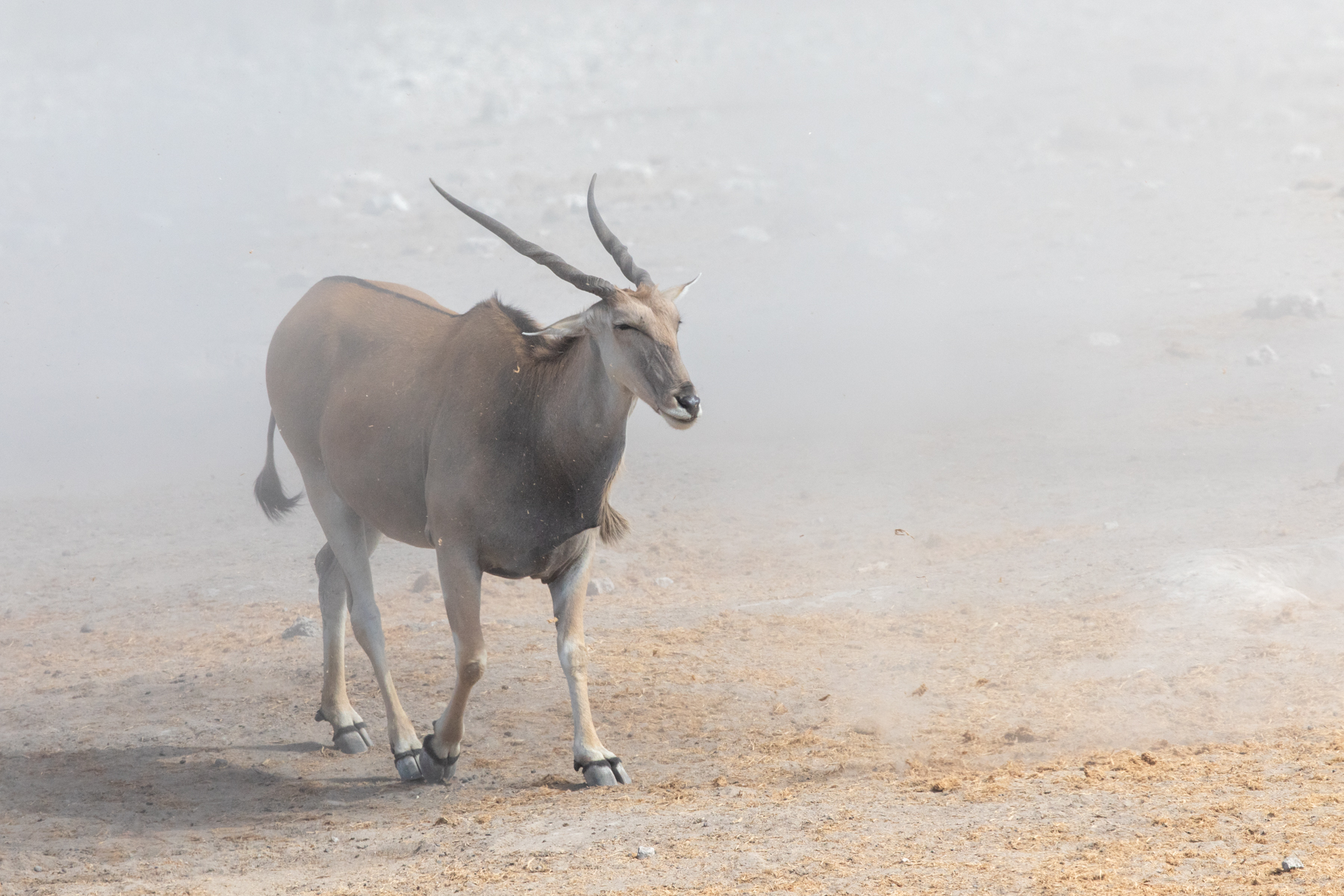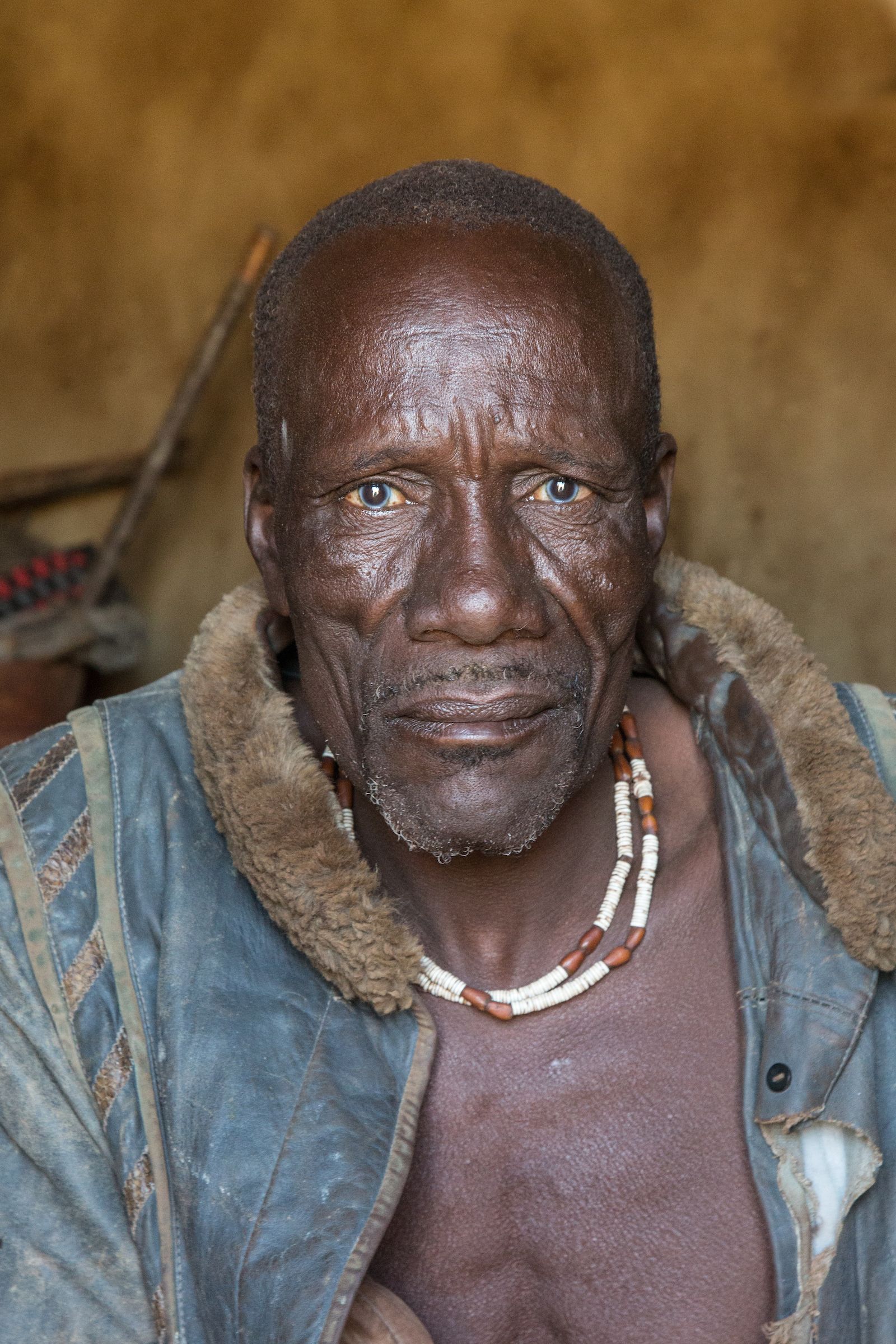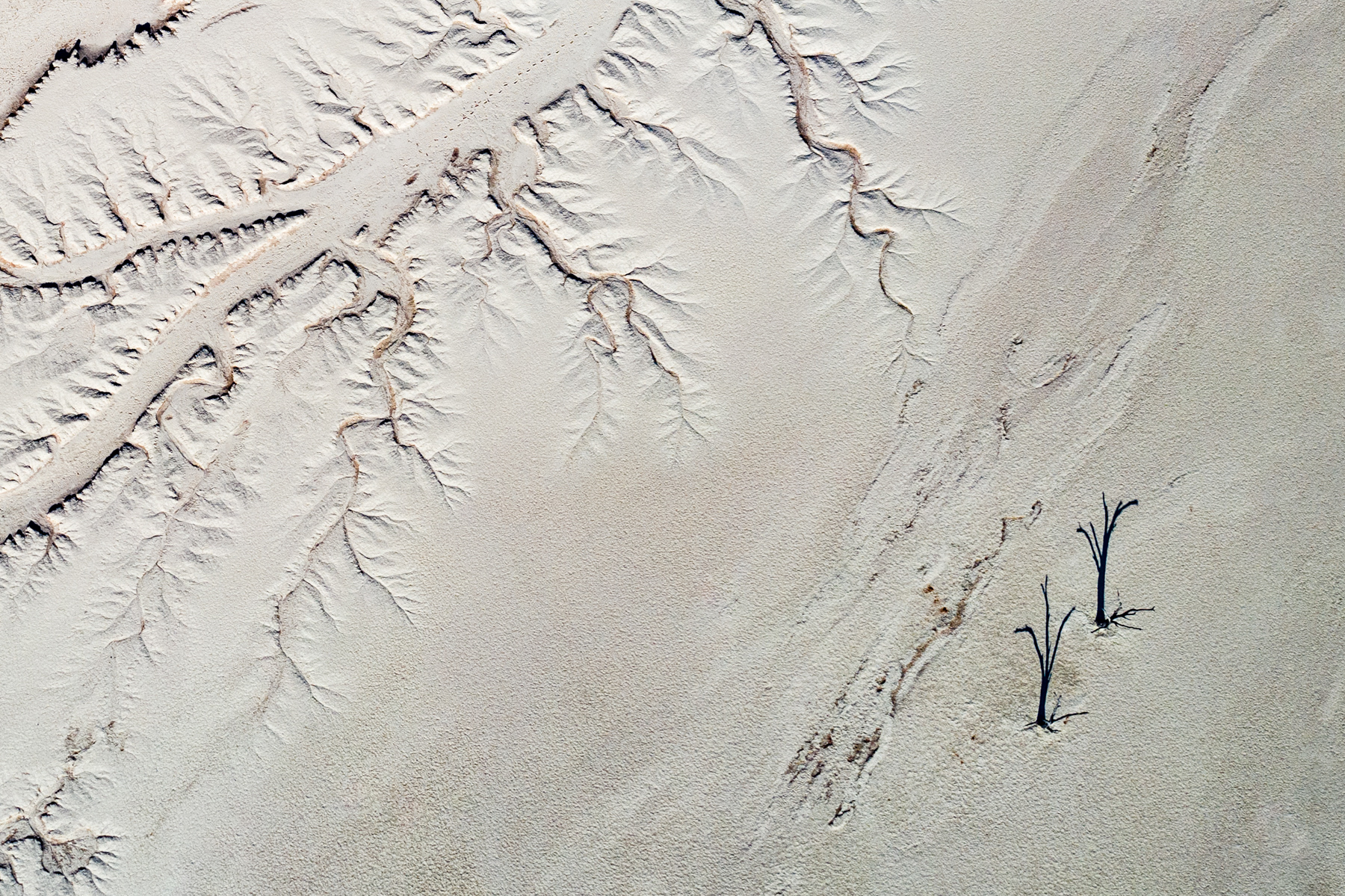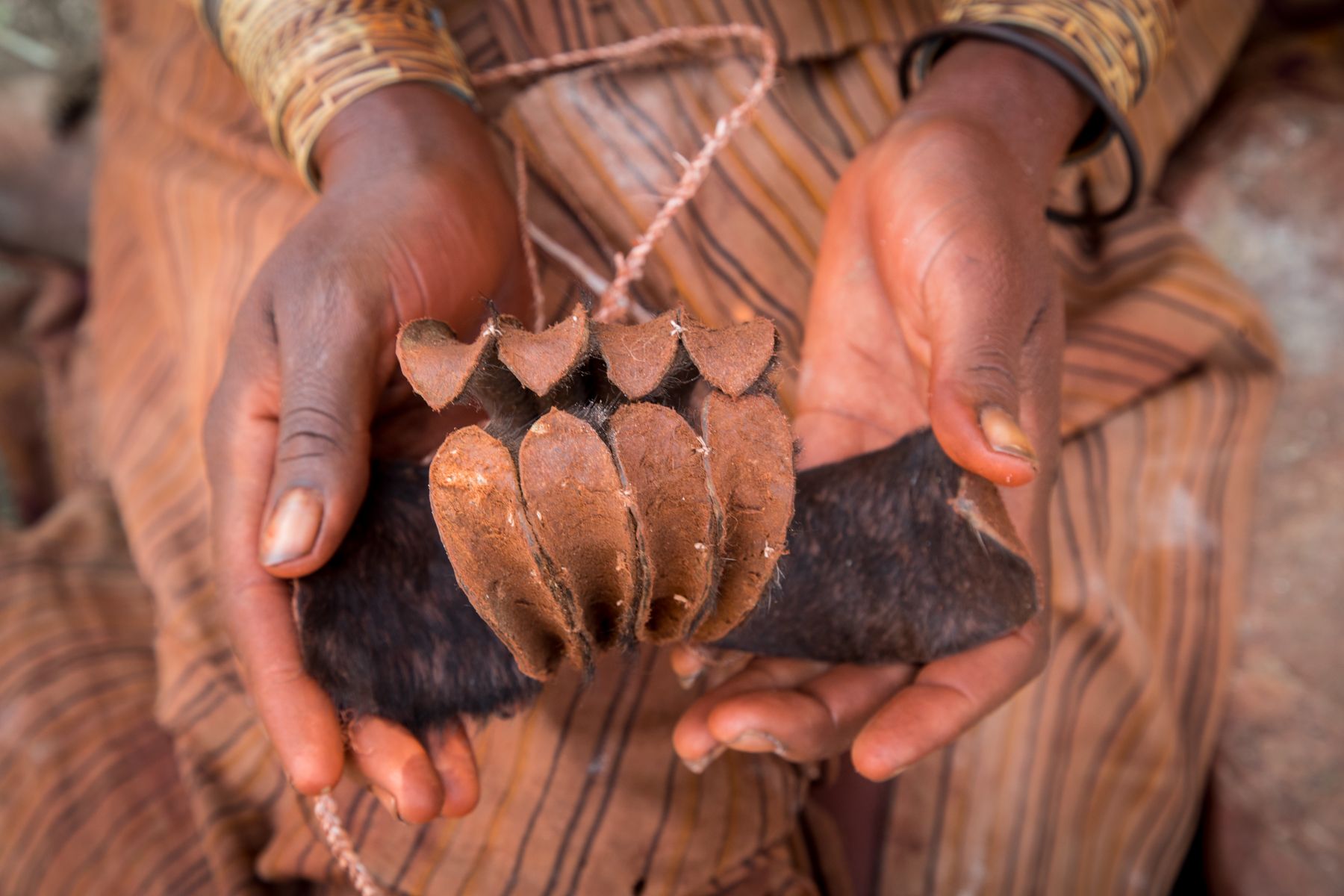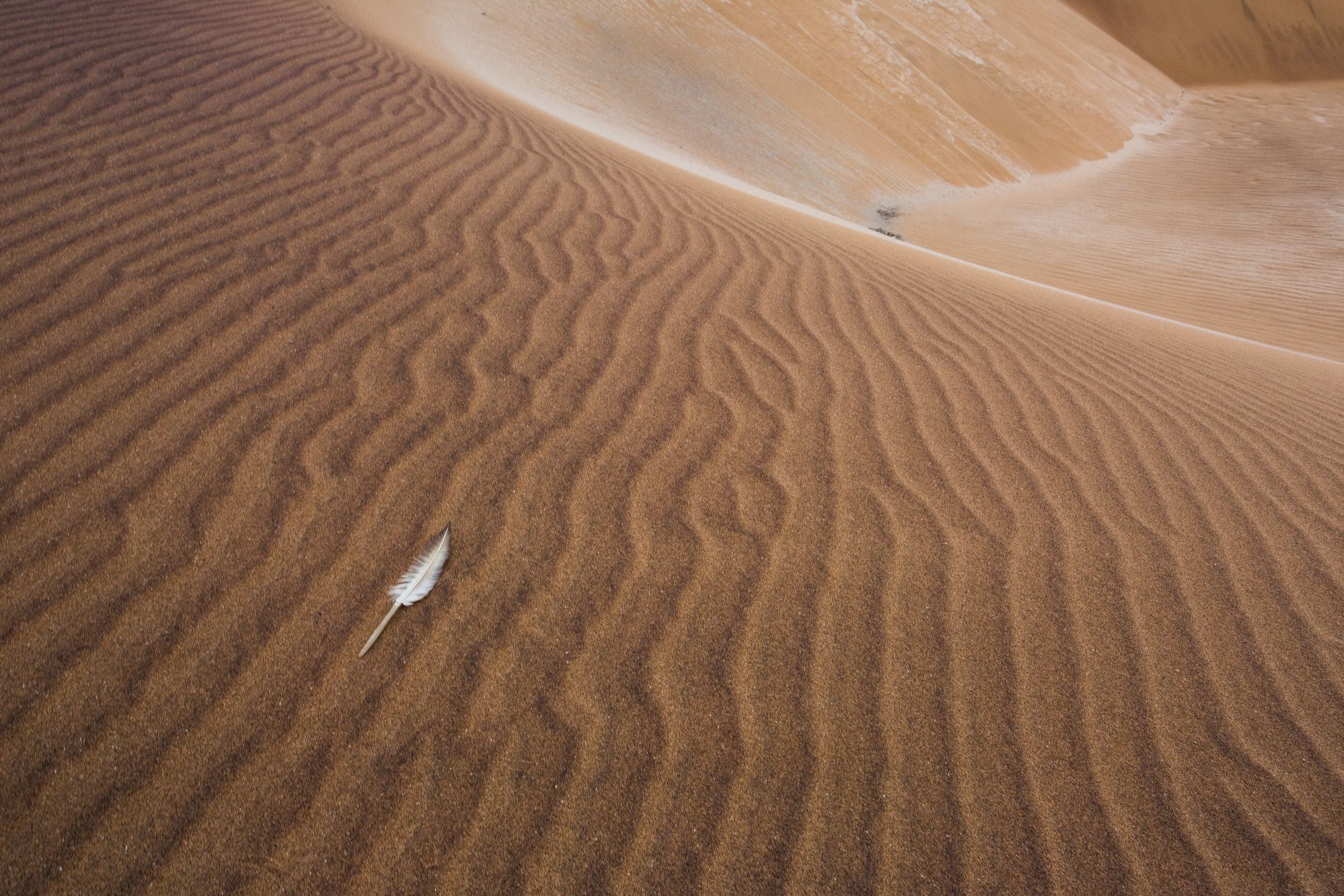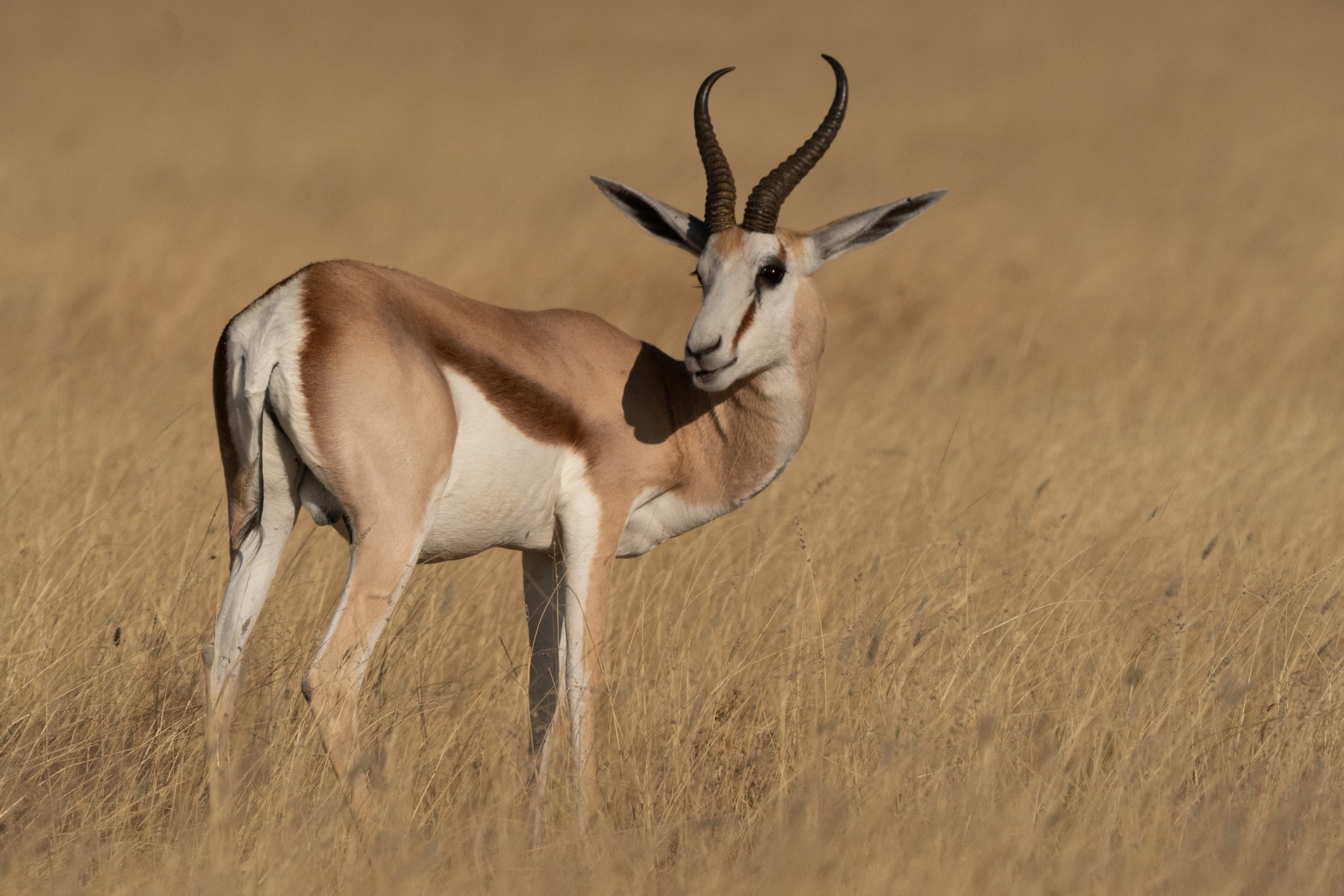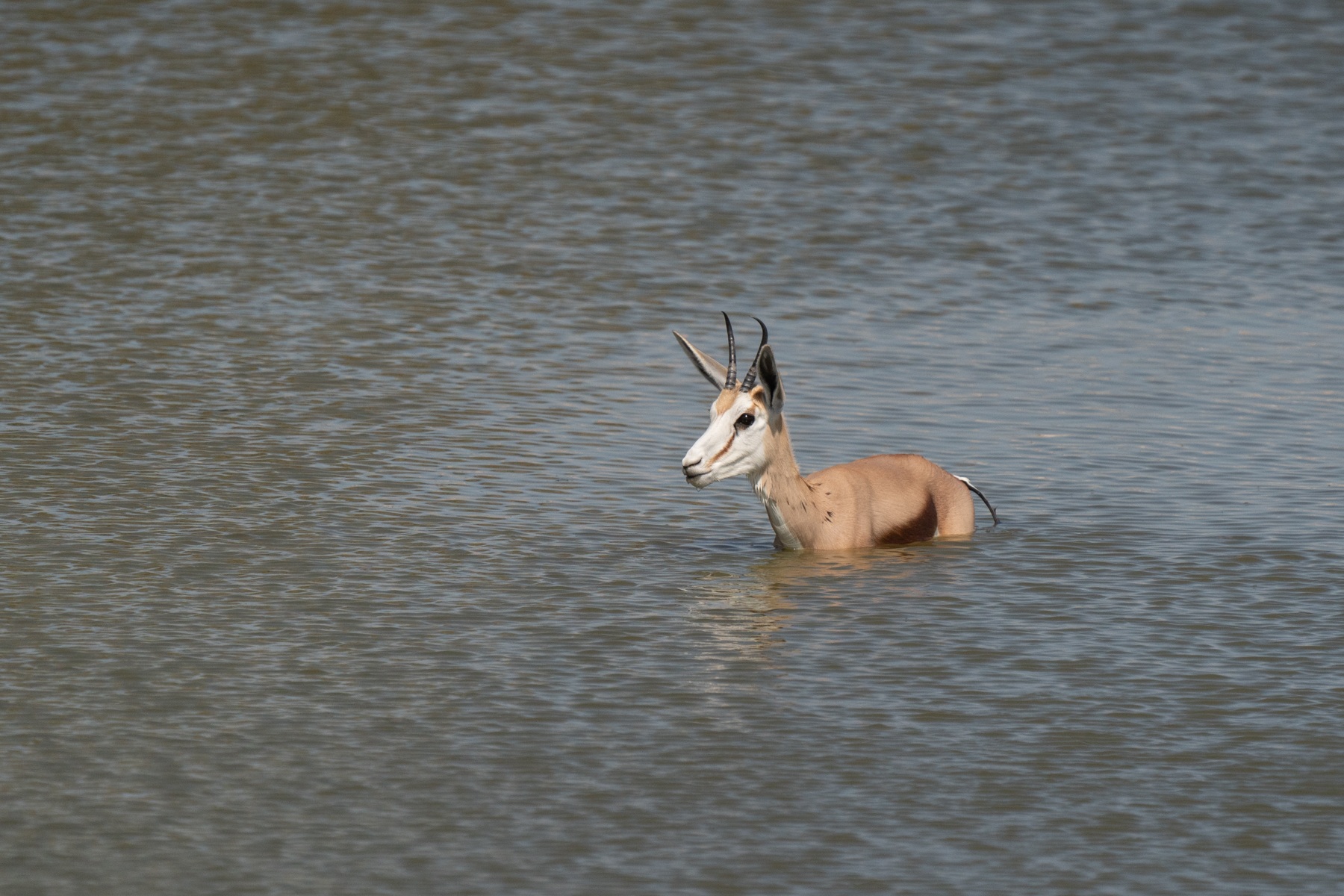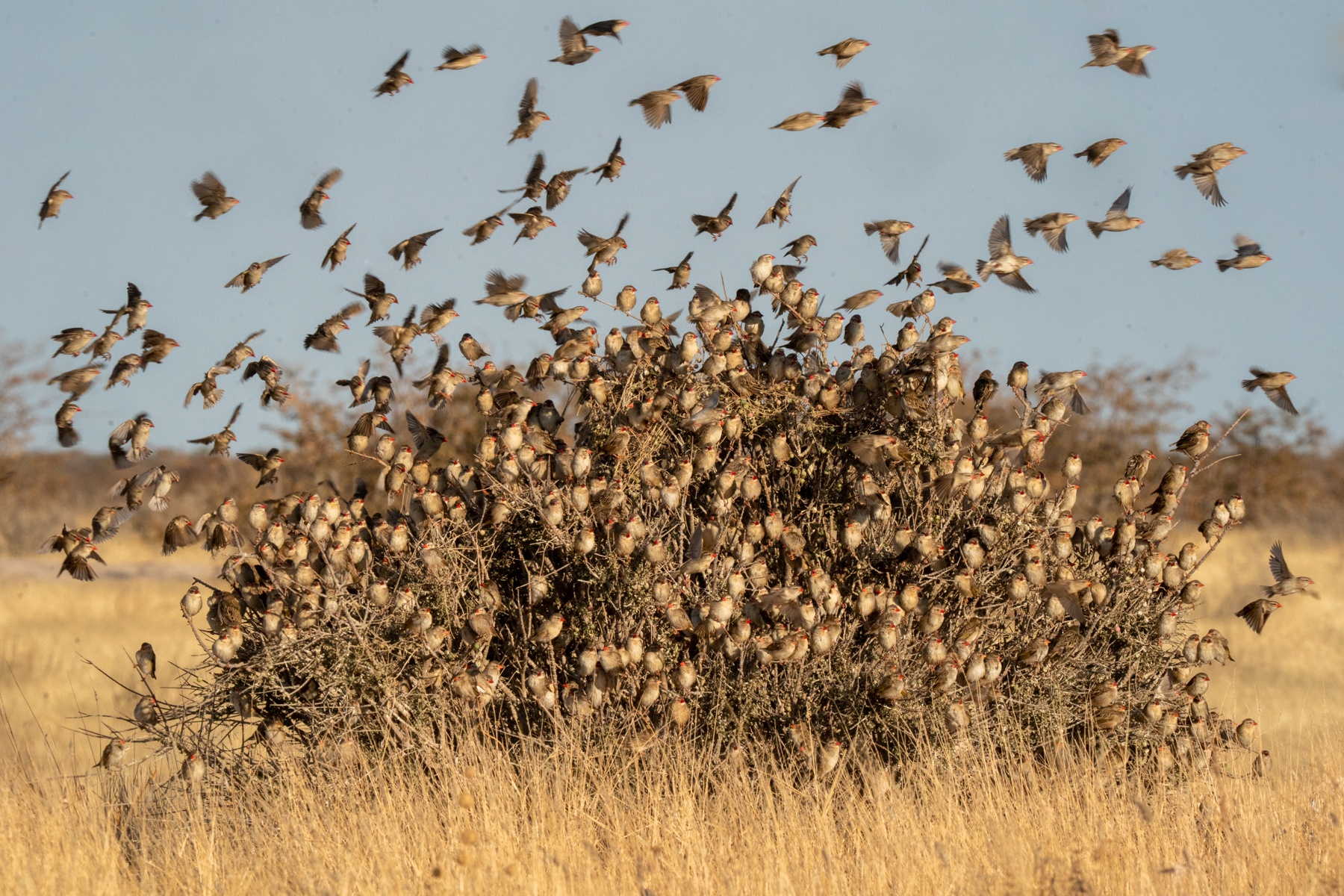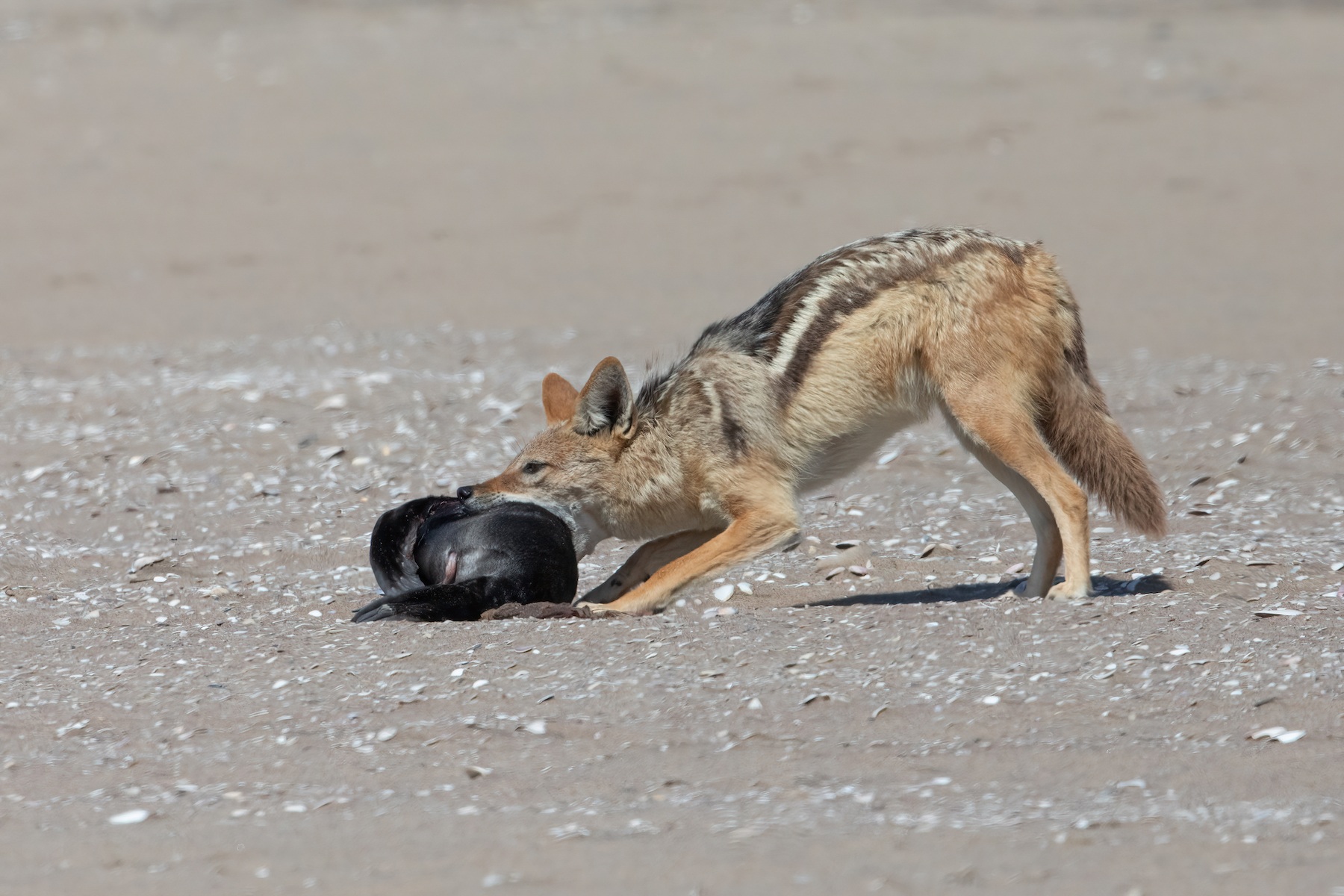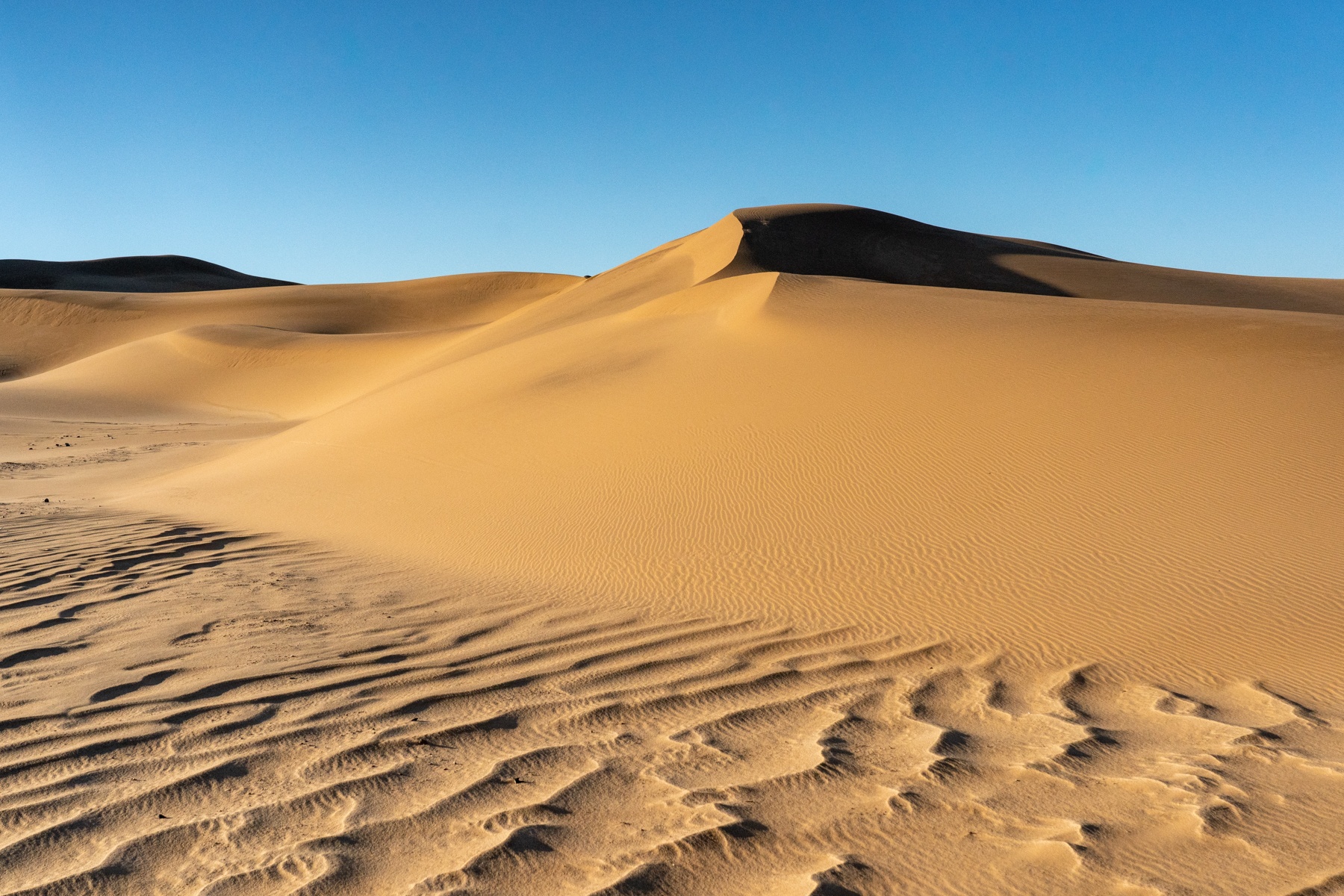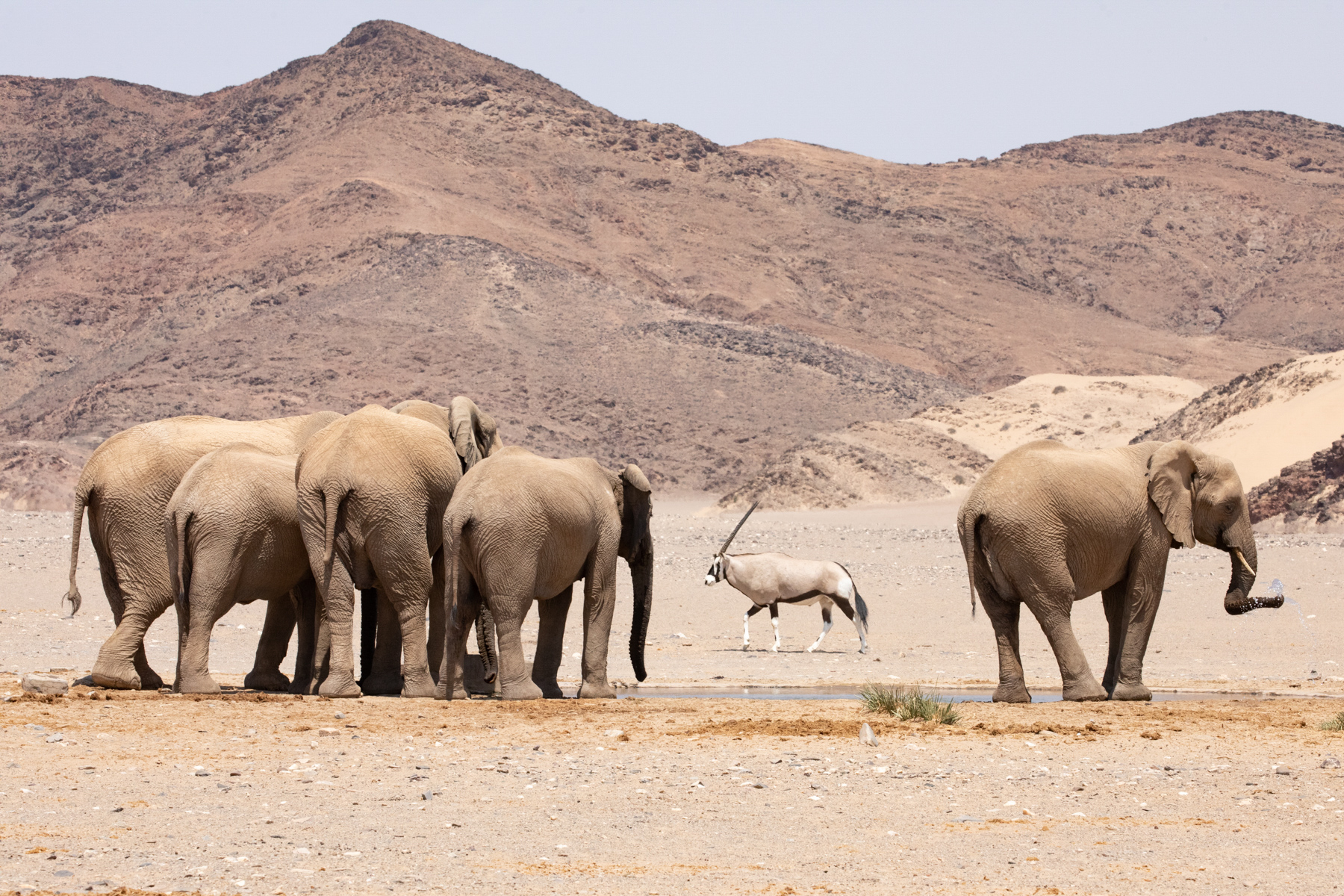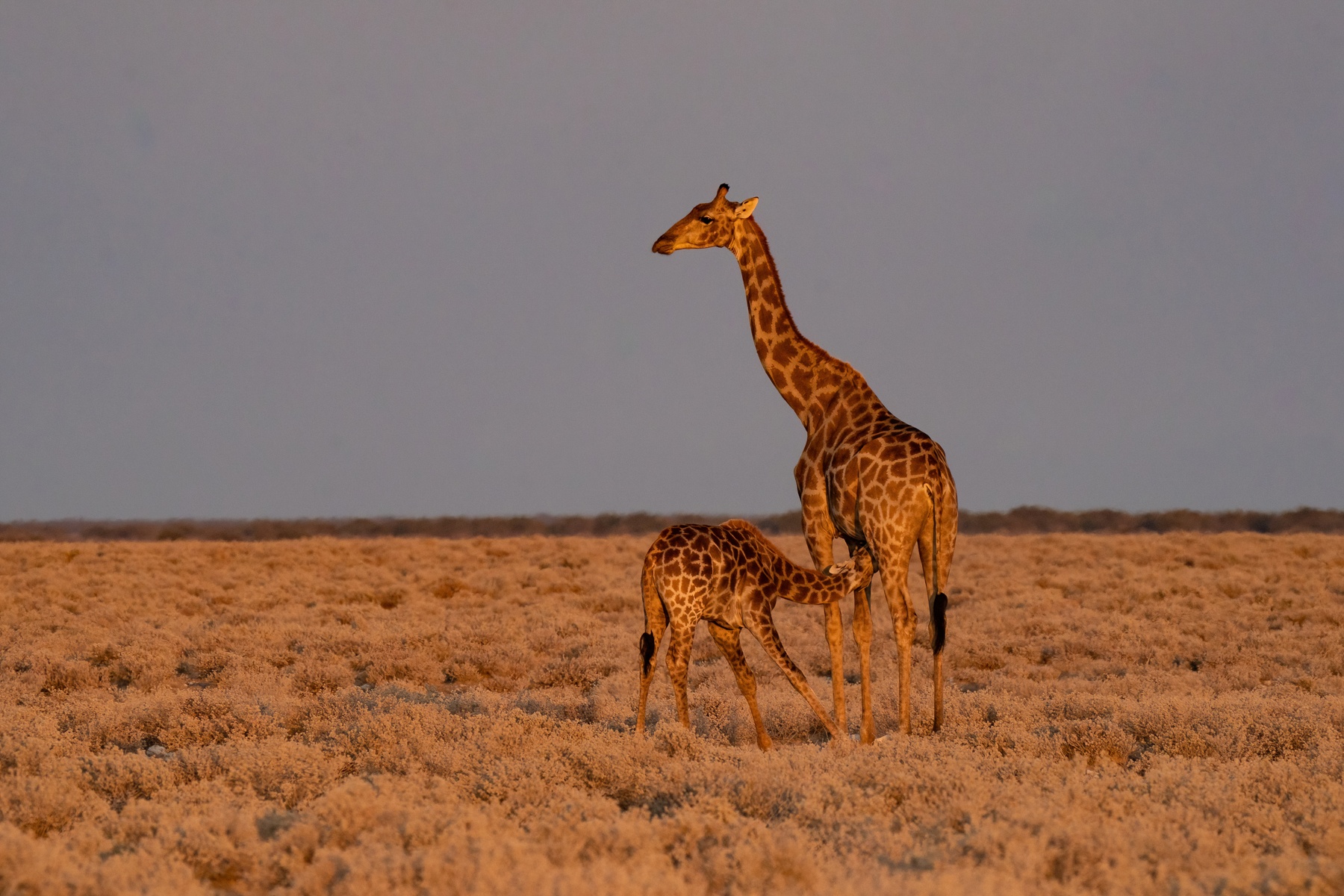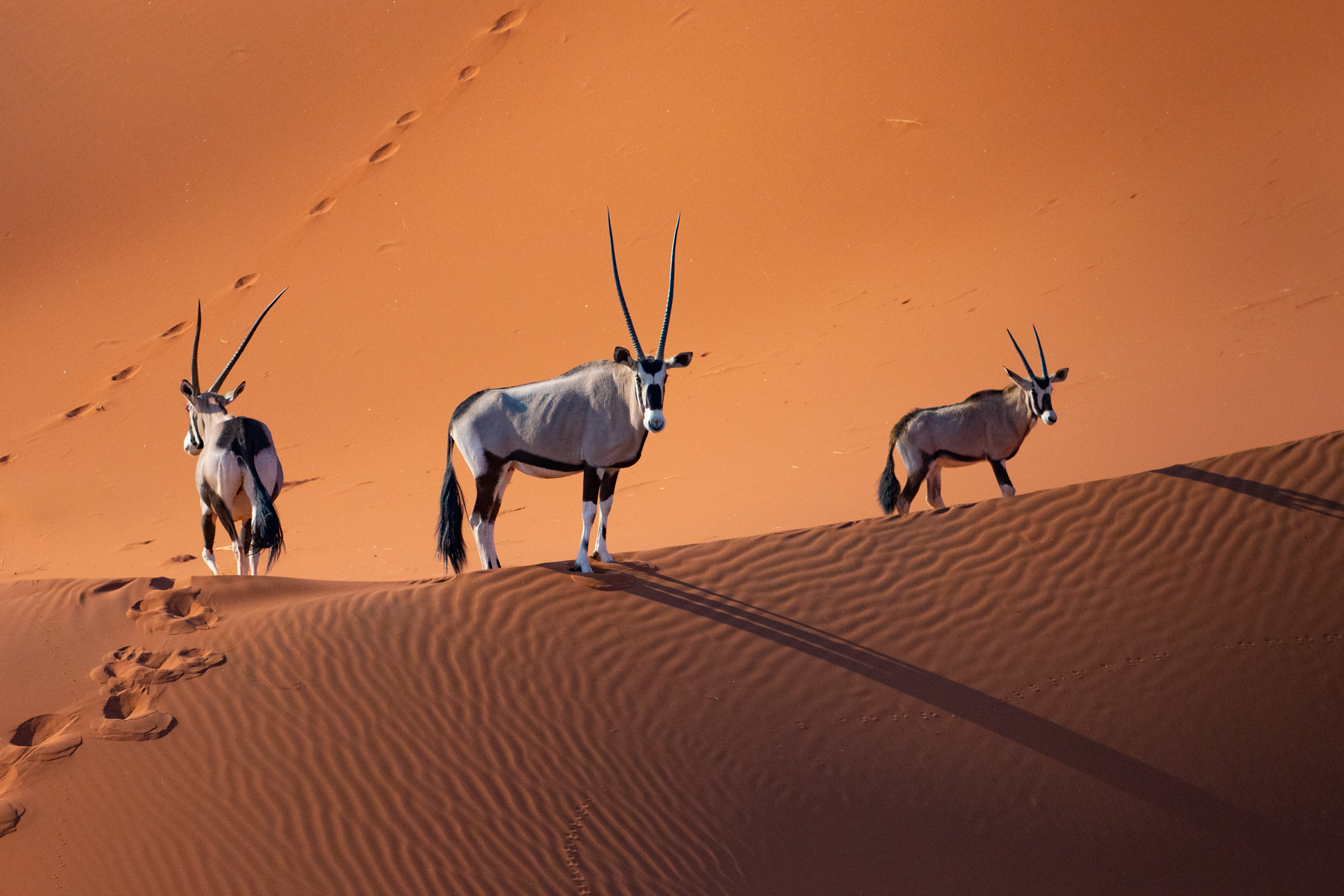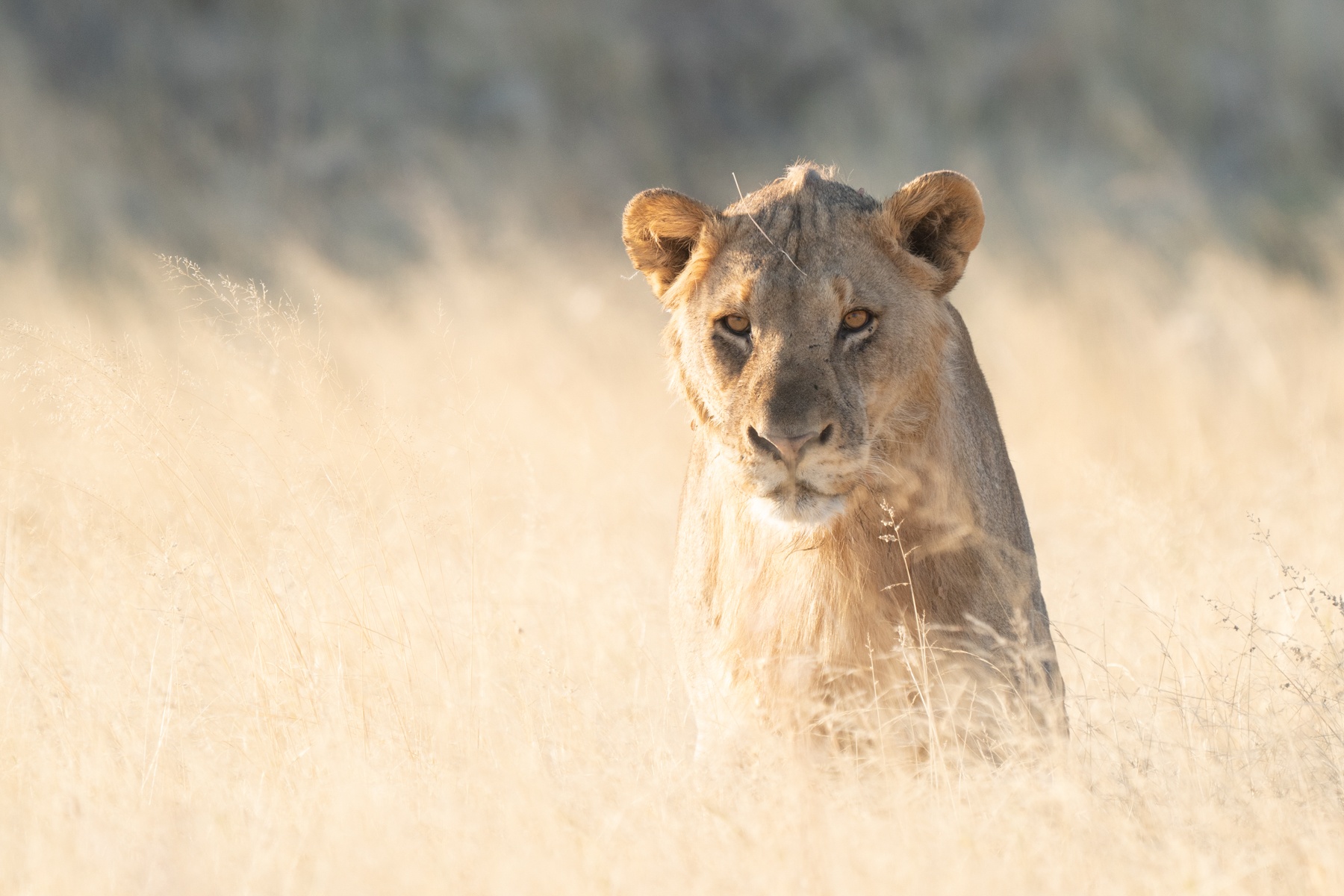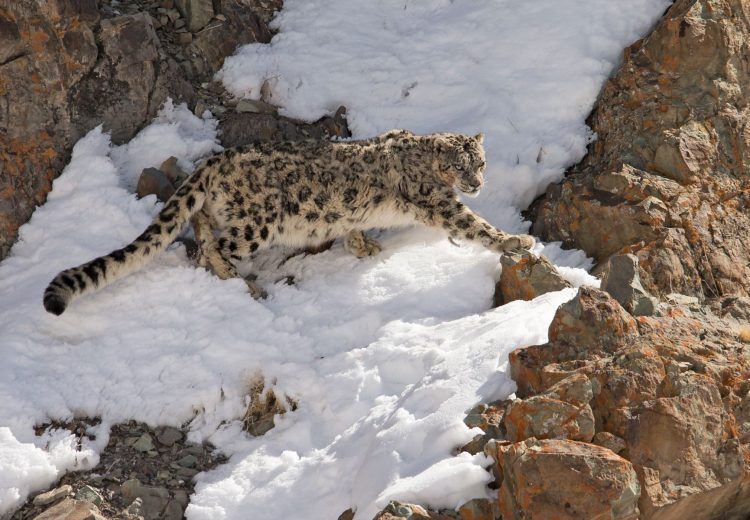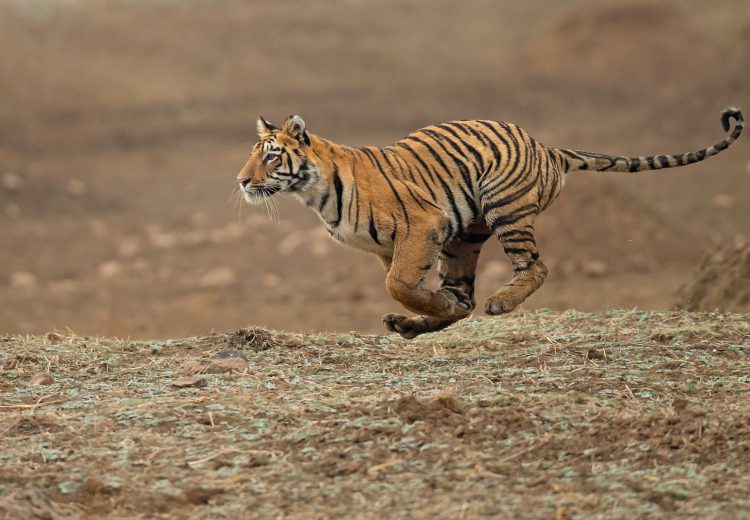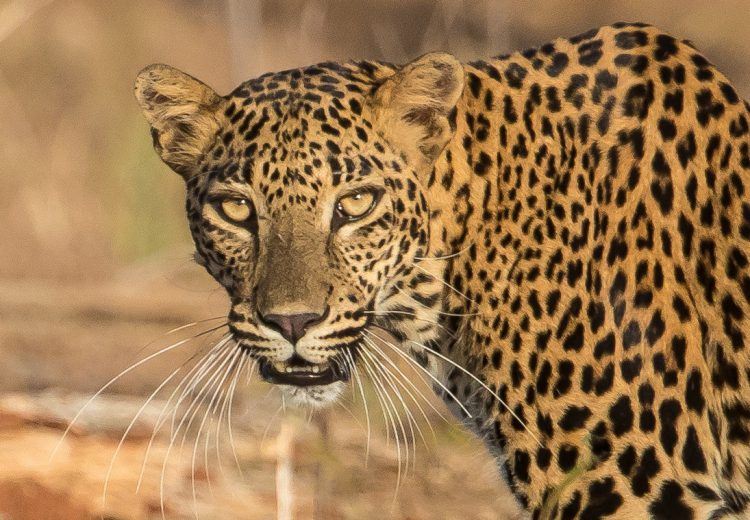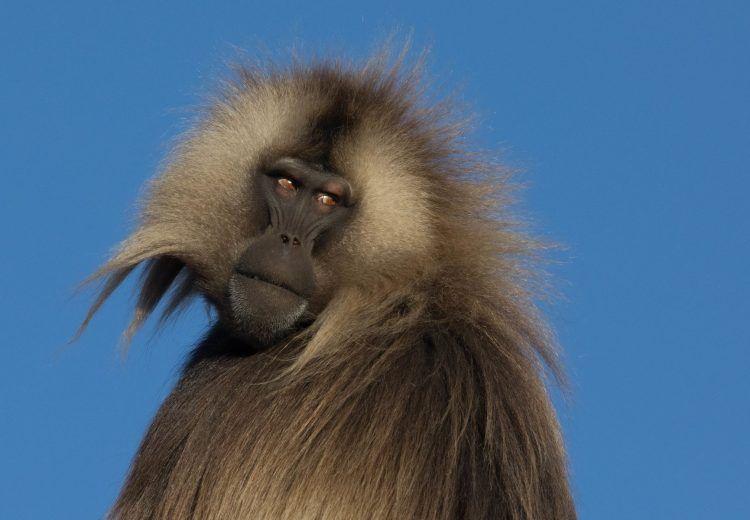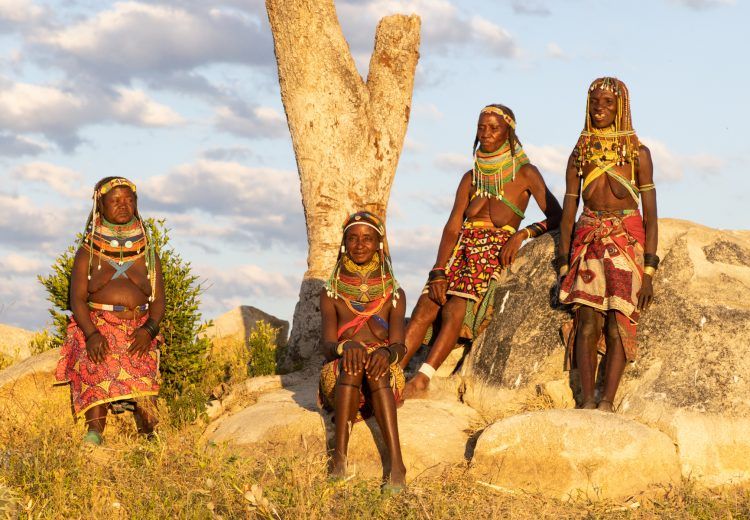South Africa
NAMIBIA: WILDLIFE SPECTACULAR – Sossusvlei, Walvis Bay, Swakopmund, the Hoanib, Etosha and Onguma










































































































































































































Burchell's Zebras in Etosha (image by Inger Vandyke)

Typical Himba village scene (image by Inger Vandyke)

Suffering from too much milk, one of Namibia's desert elephant babies takes a nap at its mother's feet (image by Inger Vandyke)

Ancient (dating back to 9th century) rock petroglyphs in Damaraland (image by Inger Vandyke)

Exploring the jewel-like lichens in Namibia's coastal plains (image by Inger Vandyke)

Where the deserts of Namibia kiss the Atlantic Ocean at Sandwich Harbour (image by Inger Vandyke)

Dorob National Park from a scenic plane flight. Look at that fantastic geological formation! (image by Inger Vandyke)

Portrait of a stunningly beautiful Himba girl (image by Inger Vandyke)

The Road to Nowhere in remote Kaokoland (image by Inger Vandyke)

There is only one thing cuter than Rock Hyraxes and that is the adorable Dassie Rat (image by Inger Vandyke)

Springbok in Etosha (image by Inger Vandyke)

Beauty in simplicity. Sossusvlei at sunrise (image by Inger Vandyke)

Lioness drinking at Charitsaub Waterhole in Etosha, Namibia, after devouring her hunted zebra (image by Inger Vandyke)

A Greater Flamingo in the surf at Walvis Bay (image by Inger Vandyke)

Deadvlei aerial detail shows ancient paths of water through the clay pan (image by Inger Vandyke)

Aerial view of the salt pans at Walvis Bay (image by Inger Vandyke)

Kopje sunrise in remote Namibia (image by Inger Vandyke)

Burchell's Zebras fight it out in the dust of Etosha (image by Inger Vandyke)

Who knew? A Namaqua Chameleon actually 'grabs' its meals using the end of its tongue! (image by Inger Vandyke)

Portrait of a Speckled Pigeon (image by Inger Vandyke)

Sunset walkers on Dune 45 (image by Inger Vandyke)

A Namaqua Chameleon catches its breakfast on our Living Desert trip, the ultimate Sandbox Safari (image by Inger Vandyke)

Cape Glossy Starling are beautiful but they love raiding picnic sites! (image by Inger Vandyke)

A desert everlasting on the dunes in southern Namibia (image by Inger Vandyke)

Ripples in the sand (image by Inger Vandyke)

Swakopmund is arguably Namibia's prettiest coastal town and is marked by many beautiful German colonial buildings (image by Inger Vandyke)

Springboks drinking at a waterhole in Etosha (image by Inger Vandyke)

An elderly Himba woman smoking a pipe outside her hut (image by Inger Vandyke)

Portrait of a Black-backed Jackal in the Cape Fur Seal colony at Cape Cross (image by Inger Vandyke)

Looking into the eye of a baby Burchell's Zebra in Etosha (image by Inger Vandyke)

A Chacma Baboon seeks shade in a tree of the Hoanib ephemeral river (image by Inger Vandyke)

A Black Rhinoceros takes charge of the scene at a waterhole in Etosha (image by Inger Vandyke)

A cheeky Wedge-snouted Lizard runs around at our feet on Elim Dune in Sossusvlei (image by Inger Vandyke)

As the sun sets in Sossusvlei, a tree pierces the shadows (image by Inger Vandyke)

The beautiful Himba people of Kaokoland in Namibia (Image by Inger Vandyke)

The Himba children of Namibia are often tasked with herding and tending to the family's goats (image by Inger Vandyke)

A rare morning where coastal fog descended on Deadvlei (image by Inger Vandyke)

Lilac-breasted Rollers are always a highlight of any trip in Africa (image by Inger Vandyke)

A shy Rosy-faced Lovebird peers out of its nest built by Sociable Weavers in the Quiver Tree Forest (image by Inger Vandyke)

Aerial view of elephants and oryx in remote north-western Namibia (image by Inger Vandyke)

Himba Women running the petrol station in remote Kaokoland (image by Inger Vandyke)

The remote outpost of Orupembe in north-western Namibia (image by Inger Vandyke)

The stunning simplicity of the red dunes at Sossusvlei, Namibia (Image by Inger Vandyke)

Looking back towards Sesriem Canyon on a sunrise scenic flight over Sossusvlei (image by Inger Vandyke)

A cluster of Sociable Weaver nests in Namibia (image by Inger Vandyke)

By September Etosha's water holes teem with life (image by Inger Vandyke)

'The Twins' - two of the iconic camel thorn trees in Namibia's Deadvlei (image by Inger Vandyke)

A dust bathing desert elephant in remote Namibia (image by Inger Vandyke)

The beautiful wife of a Himba head man in Namibia (image by Inger Vandyke)

Aerial photography in Sossusvlei is one of the most sublime experiences in all of Africa (image by Inger Vandyke)

Last light in remote Namibia (image by Inger Vandyke)

A pair of Rosy-faced Lovebirds enjoy the early morning sun at the Quiver Tree Forest (Image by Inger Vandyke)

A pack of Black-backed Jackals argue over a dead seal carcass at Cape Cross (image by Inger Vandyke)

Himba women look as beautiful from behind as they do from the front (image by Inger Vandyke)

The wave. Viewing the red dunes of Sossusvlei from the air is a feast of light, shape and colour (image by Inger Vandyke)

A Marico Sunbird feeding on an agave flower (image by Inger Vandyke)

Eye to eye with Namibia's beautiful desert elephants (image by Inger Vandyke)

Portrait of a married Himba girl in Opuwo, Namibia (image by Inger Vandyke)

When activity at a waterhole gets tough, the tough Oryx get going. Even the birds get scared! (Image by Inger Vandyke)

Giraffe reflections in Etosha (image by Inger Vandyke)

Sometimes the dust and light create incredible silhouette photography opportunities in Etosha (image by Inger Vandyke)

Namibia's desert elephants enjoy grazing after the deserts bloom in an ephemeral river (image by Inger Vandyke)

The hauntingly beautiful dead Camel Thorn Trees of Deadvlei in Namibia (image by Inger Vandyke)

Rhino Reflections (image by Inger Vandyke)

Himba children grow surrounded by so much beauty (image by Inger Vandyke)

A wild desert horse roams the plains of Tsau Khaeb in southern Namibia (image by Inger Vandyke)

A Springbok with a twitchy ear (image by Inger Vandyke)

Zebras gather in the dust to wait their turn for a drink at the water hole (image by Inger Vandyke)

A Black Rhino decides to lie down behind a piece of wood after his drink at Rietfontein waterhole in Etosha (image by Inger Vandyke)

Himba woman and child in Kaokoland (image by Inger Vandyke)

Sun shines through the encroaching fog over the Skeleton Coast in Namibia (image by Inger Vandyke)

An Oryx wanders the plains at the start of Sossusvlei (image by Inger Vandyke)

A female Black Hairy-tailed Scorpion on the move in Dorob National Park, Namibia (image by Inger Vandyke)

Close encounters of the White Rhino kind in Etosha (image by Inger Vandyke)

Himba bracelets (image by Inger Vandyke)

"Shall I take that zebra while you take the other?" Etosha's cheetahs contemplate a hunt (image by Inger Vandyke)

Himba woman are as beautiful from behind as they are from the front (image by Inger Vandyke)

Close up of an elephant's foot in Namibia (image by Inger Vandyke)

Burchell's Zebras in the grasslands near Salvadora in Etosha (image by Inger Vandyke)

Portrait of a young Himba boy (image by Inger Vandyke)

A solitary acacia greets the rising sun in Etosha (image by Inger Vandyke)

Aerial shot of an Oryx running through the dunes at Sossusvlei (Image by Inger Vandyke)

An African Scops Owl peeps out from its hiding place in a mopane tree in Etosha (image by Inger Vandyke)

Oryx are truly the ballerinas of Namibia's dunes. They are so graceful and beautiful. (image by Inger Vandyke)

Ripples and dune details in Sossusvlei (image by Inger Vandyke)

The comical Southern Yellow-billed Hornbills of southern Africa are sometimes called 'Flying Bananas' (image by Inger Vandyke)

A pretty Herero girl smiles in the protection of her mother (image by Inger Vandyke)

One of the many spectacular sunsets we witnessed on our tours (image by Inger Vandyke)

Namibia's mysterious Fairy Circles dot the landscape at Sossusvlei. Image by Inger Vandyke.

A Gemsbok oryx takes off into the grasslands of Sossusvlei, Namibia. This image was taken on an aerial safari by helicopter from Sesriem (Image by Inger Vandyke)

A young male lion in Etosha (image by Inger Vandyke)

Himba children playing in remote Kaokoland, Namibia (Image by Inger Vandyke)

Namibia's pale scorpions fluoresce at night, making them wonderful photographic subjects (image by Inger Vandyke)

Portrait of a Rockrunner in the remote mountains of northern Namibia (image by Inger Vandyke)

Peak hour at M'bari water hole in Etosha (image by Inger Vandyke)

Oryx running on the dunes at Sandwich Harbour (image by Inger Vandyke)

Can you ever photograph too many African sunsets? (image by Inger Vandyke)

A rare image of Etosha's Charitsaub pride hunting a zebra before our eyes (image by Inger Vandyke)

A pair of Oryx in the red landscapes of Sossusvlei at dusk (image by Inger Vandyke)

The tiny eyes of a Peringuey's Adder in the dune sands of Dorob (image by Inger Vandyke)

Zebra Portrait in black and white (image by Inger Vandyke)

Storm clouds in Sossusvlei (image by Inger Vandyke)

A herd of oryx runs across the grasslands of Sossusvlei at sunset (image by Inger Vandyke)

The iconic Devil's Fork in Sossusvlei (image by Inger Vandyke)

A pretty Orange River White Eye in the city gardens of Swakopmund (image by Inger Vandyke)

Exploring patterns in the iconic pan of Deadvlei (image by Inger Vandyke)

Sociable Weavers build such large nest communities that the weight of them can sometimes topple the tree that supports them! They really do make better architects than builders! (image by Inger Vandyke)

A flock of almost adult Ostrich chicks stick together for safety in Etosha (image by Inger Vandyke)

Deadvlei at dawn (image by Inger Vandyke)

Namibia features many different colours of sand dunes including the spectacular garnet sand dunes of Dorob National Park near Swakopmund (Image by Inger Vandyke)

Rainbows adorning the stunning landscapes of Sossusvlei (image by Inger Vandyke)

A solitary tree survives at the bottom of one of Sossusvlei's massive red dunes in Namibia (Image by Inger Vandyke)

A pretty Tractrac Chat in the dunes of Dorob National Park (image by Inger Vandyke)

A stunning male Kudu in Etosha (image by Inger Vandyke)

A perky Kalahari Scrub Robin calls to his mate in Ethosha (image by Inger Vandyke)

The next generation of Etosha's lions keeps safe in the rushes at Charitsaub water hole (image by Inger Vandyke)

Cape Fur Seal at Cape Cross, Namibia

African Pied Crow calling from his road sign (image by Inger Vandyke)

An elderly Black Rhino male in the western end of Etosha (image by Inger Vandyke)

Sossusvlei is never an unattractive office. Our expedition cars lie waiting for us to finish our landscape photography there. (mage by Inger Vandyke)

A Namib Sand-diving Lizard in threat display (image by Inger Vandyke)

Line of giants in Etosha (image by Inger Vandyke)

Aerial detail of Deadvlei (image by Inger Vandyke)

A Tawny Eagle enjoys his dinner of a Crested Francolin in Etosha (image by Inger Vandyke)

Quiver Tree in the Giant's Playground at Keetmanshoop, Namibia (image by Inger Vandyke)

A beautiful Himba woman in remote Kaokoland (image by Inger Vandyke)

Last light in Namibia's incredible landscapes. The colours take your breath away. (image by Inger Vandyke)

Young Himba boy in contemplation (image by Inger Vandyke)

Layered dunes at Sandwich Harbour (image by Inger Vandyke)

A Springbok enjoying a sunrise breakfast in Namibia (image by Inger Vandyke)

Himba head man in remote Kaokoland (image by Inger Vandyke)

Himba women wear the most beautiful metal braces (image by Inger Vandyke)

Two Burchell's Zebras drinking at a water hole surrounded by a flock of Sand Grouse in Etosha (image by Inger Vandyke)

Portrait of a stunning Himba woman in remote northern Namibia (image by Inger Vandyke)

Dune grasses at sunset on Elim Dune in Sossusvlei (image by Inger Vandyke)

Pearl-spotted Owlet in Okaukuejo, Etosha. They always look angry! (image by Inger Vandyke)

A laughing Himba woman draws water from her well to sustain her goats and sheep (image by Inger Vandyke)

A colony of Rosy-faced Lovebirds using the nests of Sociable Weavers in the Quiver Tree Forest (image by Inger Vandyke)

Portrait of a Pale Chanting Goshawk in Namibia (image by Inger Vandyke)

The beautiful hair extensions adorning Himba women in Namibia (image by Inger Vandyke)

Short-toed Rock Thrushes are a common bird of Namibia's stony deserts (image by Inger Vandyke)

The demure smile of a Himba head man (image by Inger Vandyke)

The simple beauty of landscape photography in Sossusvlei (image by Inger Vandyke)

A herd of female Kudus take a drink in Etosha (image by Inger Vandyke)

A pair of Burchell's Zebras wait out a dust storm in Etosha (image by Inger Vandyke)

The incredible birdlife of Walvis Bay's lagoons feature Glossy Ibis, flamingos and thousands of migratory birds (image by Inger Vandyke)

Flamingos take flight in front of the dunes at Sandwich Harbour. There is nowhere in Africa where you can photograph them like this, other than Namibia. (image by Inger Vandyke)

The quiet, dreamlike landscapes of Sossusvlei at sunset (image by Inger Vandyke)

Beautiful sunlit Oryx in remote Namibia (image by Inger Vandyke)

Pink clouds at dusk in the beautiful Tsau Khaeb National Park of southern Namibia (image by Inger Vandyke)

Portrait of a Cheetah (Image by Inger Vandyke)

Giraffes imitating trees in the Hoarasib ephemeral river (image by Inger Vandyke)

Exploring a ruined oil rig in a remote stretch of Namibia's Skeleton Coast (image by Inger Vandyke)

A stunning herd of Oryx in the dunes of Sandwich Harbour (image by Inger Vandyke)

A Sociable Weaver struggles to hold on to nesting material in a stiff breeze (image by Inger Vandyke)

Ruppell's Korhaans calling to attract a mate (image by Inger Vandyke)

Adorable Rock Hyraxes are universally loved by the guests of our Namibia photography tours (image by Inger Vandyke)

"Are you guys following me?" An Oryx checks on his herd mates in the dunes of Sandwich Harbour (image by Inger Vandyke)

Profile of a beautiful Himba woman in her hut (image by Inger Vandyke)

Sociable Weaver nest in a Quiver Tree (image by Inger Vandyke)

The mesmerising dunescapes of Namibia's Sandwich Harbour (image by Inger Vandyke)

Rock Hyraxes can look quite buck-teethed when they look at you (Image by Inger Vandyke)

A pair of Burchell's Zebras rest on the grasslands of Etosha (image by Inger Vandyke)

When elephants fight it sometimes looks like affection (image by Inger Vandyke)

Stunning sunset in Tsau Khaeb National Park, southern Namibia (image by Inger Vandyke)

An aerial view of the coastline at Walvis Bay (image by Inger Vandyke)

A beautiful Horned Adder on the top of the dunes in Dorrob National Park near Swakopmund (image by Inger Vandyke)

Secretarybird cooling off in the waterhole at Klein Otavi in Etosha (image by Inger Vandyke)

A Cheetah ambles towards us (image by Inger Vandyke)

Desert-adapted elephants roam the wild landscapes of Namibia's extraordinary ephemeral rivers (image by Inger Vandyke)

Baby elephant playing in the herd at Etosha (image by Inger Vandyke)

A rare sighting of a Porcupine in Etosha close to sunset. He even drummed his quills to display near the guests on our tour! (image by Inger Vandyke)

A Dazzle of Zebras at Chudob Water Hole near Namutoni in Etosha (image by Inger Vandyke)

Himba woman nursing her baby (image by Inger Vandyke)

Stunning Sossusvlei - everywhere you turn there are beautiful images! (image by Inger Vandyke)

Deadvlei from the air (image by Inger Vandyke)

Portrait of a Damara Dik Dik in Etosha (image by Inger Vandyke)

A mother desert elephant makes her way down the Hoanib Riverbed with her tiny baby (image by Inger Vandyke)

Namibia's iconic Deadvlei is a paradise for landscape photographers (image by Inger Vandyke)

The journey (image by Inger Vandyke)

A wild desert lioness finds shade near the mouth of the Hoanib ephemeral river (image by Inger Vandyke)

Adorable Namib Web-footed Geckos on the Living Desert excursion of our Namibia photo tour (image by Inger Vandyke)

Backlit Double-banded Coursers in Etosha (image by Inger Vandyke)

A group of Oryx on the dunes in Sossusvlei taken from our scenic helicopter flight at sunrise (image by Inger Vandyke)

Herero women giggling next to their roadside stalls in Damaraland (image by Inger Vandyke)

Portrait of a beautiful Himba girl in remote Namibia (image by Inger Vandyke)

An Eland braces itself for the dust of a sudden whirlwind in Etosha (image by Inger Vandyke)

Portrait of a prominent Himba Head Man in remote Kaokoland, Namibia (image by Inger Vandyke)

The unbearable lightness of trees (image by Inger Vandyke)

A young Himba girl holds a newly made Erembe, or the crown made of goat skin that is worn by married Himba women (Image by Inger Vandyke)

Feather on Sand Dunes at Swakopmund, Namibia

A Springbok just about to scratch an itch in Etosha (image by Inger Vandyke)

A Springbok takes to the water to cool off in Etosha, Namibia (image by Inger Vandyke)

A flock of Red-billed Queleas take off from their bushy perch in Etosha (image by Inger Vandyke)

During our Sandwich Harbour adventure we will search for unique wildlife behaviour including Black-backed Jackals preying on fur seal pups (image by Inger Vandyke)

In Namibia's Dorob National Park, the dunes are gorgeous in the early light (image by Inger Vandyke)

Desert Elephants are forced to share their drinking holes with other creatures including Oryx (image by Inger Vandyke)

At first light in Etosha, a mother giraffe nurtures her baby (image by Inger Vandyke)

Three Oryx on a dune taking from our aerial flight in a helicopter with no doors! (image by Inger Vandyke)

A sleepy Etosha lioness wakes up and goes to hunt (image by Inger Vandyke)
|
Saturday 18th July –
Saturday 1st August 2026 Leader: Virginia Wilde |
15 Days | Group Size Limit 6 |
NAMIBIA WILDLIFE PHOTOGRAPHY TOURS WITH WILD IMAGES
Namibia offers such a rich feast of landscapes and wildlife that it is not surprising that Namibia photography tours are now considered some of the finest in Africa.
As one of the most sparsely populated countries on earth, Namibia is home to a kaleidoscope of landscapes that are home to some of Africa’s most beautiful wildlife and people.
Our Namibia photography tour visits the best wildlife venues in this wonderful , frienfdly and now quite modern yet wild country.
A Breathtaking Landscape Steeped in History
Namibia’s landscapes are dominated by a geological kaleidoscope rivalled by very few countries on earth. Almost around every corner, the colours of the countryside change dramatically, robbing even the most jaded photographer of breath. In Namibia, some of the world’s oldest deserts are breathed into life by beautiful ephemeral rivers, snaking like veins from rocky mesas to the sea, where the cooling Benguela creates a coastal fog unique only to its coast and, oddly, coastal South America.
We explore two of the most spectacular expanses of desert dunes in Africa on our tour. The extraordinary sand sea at Sossusvlei is famous for its endless gigantic red sand dunes hiding clay pans dotted with ancient camel thorn trees. Then we will take an adventurous drive over the huge yellow coastal dunes of southern Namibia to Sandwich Harbour, where we will search for herds of Oryx, migratory birds and the elusive brown hyena while driving the beach where the wild Atlantic kisses Namibia’s coastline.
During our stay in Sossusvlei we will offer an optional one-hour scenic flight by helicopter for aerial photography of the region’s dunes, wildlife and clay pans.
Further north, we will drive into the remote Skeleton Coast region searching for incredibly unique wildlife, including desert-adapted elephants, lions and rhinoceros.
Finally, Etosha, the great white place that is home to a myriad of safari wildlife species, awaits us as a grand finale to our tour.
Namibia’s rich cultural history is ancient and spans centuries before the country was colonised by Germany. During our tour we will visit a site of extremely isolated rock carvings that have been viewed by only a few outside visitors to the country. Dating back to the 9th century, these beautiful arts were created by the country’s Damara people, whose long existence in Namibia is rivalled only by that of the San Bushmen.
Optional Scenic Flight Over Sossusvlei
One of the highlights of visiting the astonishing sand sea of Sossusvlei in the Namib Naukluft National Park is actually seeing this incredible landscape from the air. We offer a one-hour scenic flight in a helicopter with no doors over Sossusvlei, where we search for beautiful Oryx on the dunes and other wildlife. Taking place at sunrise or sunset, this is a perfect chance to gain an unfettered view of the crescent and star dunes of Sossusvlei while the light is soft and the shadows are long. With space for only three guests in each of two helicopters (a total of six guests), the costs of this expensive flight drop considerably if we can fill each helicopter. Due to the sublime photographic opportunities these flights offer, they are very popular with our guests, and we would suggest you register your interest in joining one of these scenic flights at the time of booking.
Africa’s Arid Wildlife
Guided by some of the leading naturalist photographers in the country, our tour will not only take you to see Namibia’s most iconic safari and desert wildlife; we will explore the southern dunes for flocks of wild flamingos and birds while looking for shy brown hyenas.
Namibia’s coastal dune systems might appear lifeless to some, but we will take you on the ultimate ‘sandbox safari’ in search of Africa’s little five – Namaqua chameleon, Peringuey’s Adder, Namib Web-footed Gecko, Namib Sand-diving Lizard and Toktokkie beetles. This fascinating part of the trip gives you the chance to photograph feeding chameleons and tame Tractrac Chats while learning about the geography of Namibia’s coastal dunes first-hand.
We will also visit the world’s largest colony of Cape Fur Seals in the rugged coastal region of Cape Cross. Teeming with life, Cape Cross is thought to be the first place where Europeans set foot in Namibia in 1486. Now it is a wildlife reserve that is home to almost 200,000 seals who spend their days lounging, arguing, fishing, swimming and breeding along rocky headlands and beaches.
It is close to Cape Cross that we will make a brief stop to view the jewel-like lichen fields that are unique to Namibia. These orange landscapes feature over 120 species of lichens that exist here and nowhere else. Each plant is like a tiny desert jewel and they are wonderful for macro photography.
Supported by local experts, we will explore two of the country’s most remote and fascinating ephemeral rivers, the Hoanib and Hoarusib, searching for Namibia’s unique desert-adapted elephants, lions and rhinos. Driving through these ethereally beautiful places, we may see troupes of Chacma Baboons, flocks of ostriches, journeys of giraffes and other desert wildlife wandering between the dunes and these elongated oases of the Skeleton Coast deserts.
In southern Africa’s oldest national park of Etosha, our tour spends four days on safari in open-topped vehicles, waterhole hopping at the peak time of the year when thirsty animals teem around any sources of water to drink. During our safaris, we will search for Africa’s largest wild elephants, prides of lions, black and white rhinoceros, and numerous species of ungulates, including Hartmann’s Mountain Zebras, listed as vulnerable by the IUCN.
What makes our Namibia Photography Tour different?
Given the warm, friendly nature of Namibia and its incredible diversity of photographic subjects, it is hardly surprising that many photography tour companies offer trips of various lengths in this superb country.
Our tour travels the length of this spectacular country at the absolute best time to photograph wildlife. The main rain season in Namibia usually falls between December and April. During this time, water is widely available across the country and the vegetation is lush. During the rainy season and up until the end of May, wildlife photography can be difficult in these conditions. The peak wildlife viewing in Namibia is during the months of June to October, when the waterholes are drying up and the vegetation has been grazed. It is this time you can experience the magical golden light with less obstructed views of an abundance of wildlife congregating at waterholes.
Through numerous visits to Namibia, we have an unparalleled level of expertise in locating the best photographic locations. We don’t just focus on the main tour circuit with all of its iconic destinations; we go deeper into the country to find some of its most precious and hidden wildlife while showing you how to best capture it all in photos.
Our guides stem from the country’s leading natural history family and from extensive photographic visual storytelling backgrounds. While travelling with us, we not only show you the unseen, but we help you to tell a story through your portfolio of the trip.
Accommodation and Road Transport
Accommodation during our Namibia photography tour is a mix of comfortable lodges and hotels.
Travel in Namibia involves long distances. Transport is by custom-built, extended Landcruisers. The vehicle configuration is that each participant will have a window seat. Each vehicle has a pop-top roof in the vehicle that can be opened in Etosha and the ephemeral rivers.
Walking
There is very little walking on this Namibia photography tour as most of it is conducted by driving. A short walk over undulating dunes is required to reach Dead Vlei. A boardwalk is available to view the seals at Cape Cross.
Climate
Namibia and South Africa are both extremely dry, arid landscapes with very few mosquitoes. During the day we suggest you wear neutral coloured clothing while on safari, a broad-brimmed hat and light, long-sleeved clothes to protect you from the sun. At night and on early morning drives a warm fleece is recommended as the night-time desert temperatures can drop to below 10 degrees Celsius (50 degrees Fahrenheit).
Photographic Equipment
For wildlife photography of the larger mammals and birds, a 200-300mm lens will often be the most useful lens, but we also recommend a focal length of 400-600mm for other bird shots, mammal close-ups etc. (If your budget does not run to prime lenses, high quality 100-400mm or similar zoom lenses can be a great alternative.) For landscape and night photography, we suggest you bring a wide-angle lens from 10mm upwards.
Alternatively, you can get wonderful photography results with a high-quality digital bridge camera with an 18-20x or higher optical zoom and a good wide-angle capacity (equivalent to 24-28mm).
iPhones and iPads are useful on this trip for photographing macro subjects like Peringuey’s adders and also for the tiny lichens we will view in the desert. You may find mobile devices are also great for taking small videos of the wildlife we will encounter during our tour.
If you have questions about what equipment you ought to bring, please contact us.
Photographic Highlights
- A true adventure spanning much of the country
- Our tour is timed to make the most of Namibia's incredible night skies for celestial photography
- The incredible red dune landscapes of the Sossusvlei including golden hour photography in Namibia’s most iconic destination, Dead Vlei
- Optional scenic helicopter flight over the red dune sand sea of Sossusvlei in search of Oryx and other desert wildlife
- The world’s oldest plants, Welwitschia mirabilis in the stunning red granite landscapes of northern Namibia
- A search for Africa’s “Little Five” in the dunes of Swakopmund (Namib Web-footed Gecko, Namaqua Chameleon, Peringuey's Adder, Shovel-snouted Lizard and Toktokkie Beetle)
- Look for prowling Black-backed Jackals in the largest African Fur Seal colony in the world at Cape Cross
- A search for prides of desert adapted lions and other creatures of the red granite desert system of Damaraland, including Black Rhinoceros, giraffes, zebra and the rare desert elephants of Namibia
- Explore the wreck of the Zeila and other ruined structures on Namibia's famous Skeleton Coast
- A thrilling 4WD journey through the desert landscapes of Sandwich Harbour, searcing for elusive Brown Hyena and other desert wildlife
- Etosha's incredible waterholes attract a huge variety of wildlife including Elephants, Giraffes, Zebra, Hartebeest, Springbok, Black and White Rhinoceros, Kori Bustards, Wildebeest, Lions and Cheetah plus so much more
- Enjoy the new and wonderful low-level private hides/blinds at Onguma at the edgfe of Etosha National Park
OUTLINE ITINERARY
- Day 1: Arrive in Windhoek and overnight
- Day 2: Drive a spectacular scenic route to world-famous Sossusvlei and arrive in time for sunset photos in the sand sea
- Days 3-4: Dawn photography in the iconic Deadvlei and the rest of the days visiting the otherworldly dunescapes of Sossusvlei
- Day 5: Final photography of Sossusvlei before driving to Walvis Bay for sunset
- Day 6: Full day sand dune adventure exploring Sandwich Harbour for Brown Hyenas and other desert wildlife
- Day 7: Namibia's Living Desert search for Africa's "Little Five" before an afternoon at rest in the pretty coastal town of Swakopmund
- Day 8: Travel north to the Cape Fur Seal colony at Cape Cross and then into the rugged basalt landscapes of southern Kaokoland
- Day 9: A full day on safari in the Hoanib ephemeral river searching for desert adapted rhinos, elephant, lions and other wildlife
- Day 10: Morning drive into Etosha National Park, arriving in time to enjoy our first afternoon on safari in southern Africa's oldest wildlife reserve. Overnight at Okaukuejo.
- Day 11: Exploring west-central Etosha. Overnight at Okkaukuejo.
- Day 12: Travel through Etosha to the Namutoni area in the east. Overnight at Onguma a private sanctuary bordering the park.
- Days 13-14: Exploring Onguma and visiting its photo hides/blinds, as well as Etosha itself.
- Day 15: After a final photo session at Onguma, transfer to Windhoek airport for afternoon tour end.
To see a larger map, click on the square-like ‘enlarge’ icon in the upper right of the map box.
To see (or hide) the ‘map legend’, click on the icon with an arrow in the upper left of the map box.
To change to a satellite view, which is great for seeing the physical terrain (and for seeing really fine details by repetitive use of the + button), click on the square ‘map view’ icon in the lower left corner of the ‘map legend’.
PRICE INFORMATION
Wild Images Inclusions: Our tour prices include surface transportation, accommodations, meals and entrance fees.
Our tour prices also include all tips for local guides, drivers, camp staff and accommodation/restaurant staff.
Deposit: 20% of the total tour price. Our office will let you know what deposit amount is due, in order to confirm your booking, following receipt of your online booking form.
TO BOOK THIS TOUR: Click here (you will need the tour dates)
2026: provisional price £6490, $8490, €7810, AUD12810. Windhoek/Windhoek.
Single Supplement: 2026: £580, $770, €700, AUD1160.
If you are travelling alone, the single supplement will not apply if you are willing to share a room/tent and there is a room-mate of the same sex available.
This tour is priced in US Dollars. Amounts shown in other currencies are indicative.
Air Travel To & From The Tour: Our in-house IATA ticket agency will be pleased to arrange your air travel on request, or you may arrange this yourself if you prefer.
NAMIBIA WILDLIFE PHOTOGRAPHY TOUR: DETAILED ITINERARY
Day 1
Our Namibia photography tour begins this evening at Windhoek, where we will stay overnight. Home to a population of around 300,000 people, Windhoek feels more like a large town than a capital city. It is a modern city whose architecture is sprinkled with colonial buildings that hark back to the time when Namibia was a German colony.
On the first night of our expedition, we will enjoy a welcome dinner at our lovely lodge overlooking the nearby arid mountains outside Windhoek.
Day 2
Today we will drive southwestwards towards Sossusvlei for a three nights stay, travelling through some spectacular country as we near our goal.
This afternoon will be our first opportunity to enjoy photography in Namibia’s stunning sand sea, the red dunes of Sossusvlei. We stay at a lodge inside the park allowing us to extend our time for photography until sunset.
Days 3-4
On our first morning at Sossusvlei, we will get up early to photograph the iconic Deadvlei at sunrise. This famous clay pan is dotted with ancient camel thorn trees and is probably one of the most photographed locations in Africa, if not the world. We will be there very early in order to capture it in the best light, before the crowds. During the day we will take a break before heading into some more remote dune areas of the park when the afternoon light cast shadows on the dunes.
We will also see our first of the unexplained “Fairy Circles” in Namibia at Sossusvlei.
The second morning we will have an optional aerial flight at Sossusvlei for our guests. Photographers not wishing to take the flight will enjoy a morning of landscape photography in this stunning region.
During the afternoon we will do some more exploration of this extraordinarily scenic plkace.
Day 5
Today we drive towards the bustling coastal city of Walvis Bay where we will spend the night.
This afternoon we will visit some of the lagoons that are homes to flocks of thousands of flamingos and other migratory birds. Our beautiful hotel is on the coast away from the noise of the city.
Day 6
Adventure beckons as we undertake a full day sand dune safari across Namibia’s coastal desert to Sandwich Harbour. It is here we will go in search of the elusive Brown Hyena while exploring these gigantic dunes that fall into the wild Atlantic Ocean. It is here that we will also search for other desert wildlife including Oryx, Springbok, Ostrich and Black-backed Jackals, alongside migratory birds, Cape Fur Seals and reptiles. The drives to Sandwich Harbour are thrilling and the way the light falls on these dunes is mesmerising.
Upon our return from Sandwich Harbour we will drive north to Swakopmund for two nights stay at our comfortable hotel.
Day 7
After breakfast, we will embark on a brilliant journey through the coastal dune systems of the Dorob National Park just south of Swakopmund. Namibia is one of two places in the world where the cold waters of the Benguela current running along the coast cool down the heat of the desert to create a coastal fog that supports an entire ecosystem of its own. The other place this occurs is the Atacama Desert of northern Chile and southern Peru in South America.
The coastal fogs of the Skeleton Coast support such a tremendous amount of life that Namibia’s dune systems are, quite literally, some of the most alive deserts on earth. We will be searching for some incredible reptiles during this excursion like Shovel-nosed Lizards, Namibian Web-footed Gecko, Namaqua Chameleons, legless lizards, and Horned Vipers. Photography opportunities should be excellent. Dorob is also a fantastic place to explore the dunes for uniquely desert-adapted plants like Dollarbush and birds such as the Tractrac Chat.
We will also learn more about the origin of Namibia’s shifting sands in the reserve and the mineral make up of the different coloured sands of the dunes.
Stopping in Swakopmund for lunch, we will then enjoy an afternoon at leisure in this lovely town. It’s a great place to charge batteries, go shopping, explore some beautiful colonial architecture and even enjoy some photography on foot in the town’s gardens.
Day 8
This morning we will make a sightseeing drive north of Swakopmund to visit the town’s saltworks in search of birds to photograph. We will then drive to the wrecked fishing trawler of the ‘Zeila’, stopping there for some scenic photography before driving north to Cape Cross.
Nearly a quarter of a million Cape Fur Seals call Cape Cross home during their peak breeding months of October and November. In the lead up to the season, well over 200,000 are present in this gargantuan coastal colony. To see Cape Cross is a visual spectacular of seals, seabirds and if we are lucky, predatory animals like Brown Hyena which take advantage of young, elderly or unwell seals as prey. It is a seething mass of wildlife that is unrivalled anywhere in southern Africa. It is here we will also stop to photograph the pretty lichens in the coastal rock deserts of the region.
Leaving Cape Cross, we will drive north to Torra before we travel inland to escape the fog of the Skeleton Coast. When the dunes subside, they give way to the incredible red granite landscapes of Damaraland, one of Namibia’s most untouched and spectacular wilderness areas, and a wonderful place for landscape photography.
Our adventure inland begins here as we traverse a rugged 4WD, unmarked trail to reach our destination of Khowarib, near the headwaters of Namibia’s Hoanib ephemeral river, where we will stay two nights at a comfortable lodge. On our drive we will see massive outcrops of Euphorbia Damarana and red mesa type mountains as we search for this region’s uniquely adapted desert wildlife that includes Black Rhinos, ‘Desert (African Savanna) Elephants, zebra, giraffe, Klippspringe, Steinbok and a myriad of birds.
Damaraland is when we get our first taste of the real Africa. It is home to two wonderful tribes of people that are distantly related – the Herero and the Himba – and on our journey into Damaraland we will begin to see the beautiful Herero women in their Victorian dresses and unique cow-horn shaped head dress. We will also begin to see the red-ochre-coloured women of the Himba.
Day 9
Today we will spend a full day searching for the extremely rare and wild ‘Desert’ Lions’of Namibia. Under the advice of local guides we will spend a full day attempting to find prides of desert lions around the Hoanib. While lions roam all of Africa, Namibia’s desert adapted lions are unique in that they have learned to survive in one of the harshest landscapes on earth. There are several prides known to researchers working in this region and we will be attempting to locate one or more in their spectacular desert terrain to photograph them.
It is important to remember that the desert lions of Namibia are completely wild and not living within reserves as the lions that we will see elsewhere on our trip will be. If we find a pride, seeing them in this landscape will be one of the wildlife highlights of our photography expedition through Namibia.
Day 10
Leaving early, we will drive towards Etosha National Park where we will spend the first two nights at Okjaukuejo in the west-central part of the park.
We will arrive in time to enjoy our first afternoon on safari in southern Africa’s oldest game reserve.
Day 11
Etosha, meaning ‘Great White Place’, is dominated by a massive mineral pan. The pan is part of the Kalahari Basin, the floor of which was formed around 1000 million years ago. The Etosha Pan covers around 25% of the National Park. The pan was originally a lake fed by the Kunene River. However, the course of the river changed thousands of years ago and the lake dried up. The pan now is a large dusty depression of salt and dusty clay which fills only if the rains are heavy and even then only holds water for a short time. This temporary water in the Etosha Pan attracts thousands of wading birds including impressive flocks of flamingos. The perennial springs along the edges of the Etosha Pan draw large concentrations of wildlife and birds.
A San legend about the formation of the Etosha Pan tells of how a village was raided and everyone but the women slaughtered. One woman was so upset about the death of her family she cried until her tears formed a massive lake. When the lake dried up nothing was left apart from a huge white pan.
The wildlife viewing and photography in Etosha National Park is excellent, the best time being from May to September – the cooler months in Namibia. Visitors to Etosha Game Reserve can expect to see many antelope species, African Savanna Elephant, Southern Giraffe, White Rhinoceros and Lions. More fortunate visitors will see Black Rhinoceros, Leopard and Cheetah. There is a network of roads linking the camps and subsidiary roads lead to various waterholes.
Today, and much of the rest of our stay in the Etosha area will be spent on photosafari in Etosha National Park, where we will search for the largest elephants in Africa and a myriad of mammal and bird species. Stopping briefly (where allowed) to hop out for photographs, our vehicle-based exploration of Etosha will traverse many of the park’s side tracks and visit many water holes, the epicentres of Etosha’s wildlife activity. Wildlife photography opportunities simply abound here and you are sure to come away with a large number of satisfying images.
Day 12
We will spend the day travelling through the park, with numerous stops for wildlife photography, until we exit at the Namutoni Gate in the east. From there, we continue the short distance to the private Onguma Reserve for a three nights stay at a very comfortable safari camp.
Days 14-15
The biggest attraction at Onguma is the recently-constructed low-level photo hides/blinds that regularly attract drinking animals including Lion, Leopard, Spotted Hyena and many ungulates.
We are sure to want to spend plenty of time at these hides but we will also explore the Onguma reserve and the nearby Etosha National Park as well. These are going to be two wonderful days!
Day 15
After a pre-breakfast photo session, we leave Etosha behind and drive back to Windhoek airport for an afternoon tour end.
Namibia 2022 Photography Tour Report
by Sean Braine
On this, our final tour that combines both Namibia and South Africa, our group assembled in Windhoek for a fabulous night out at Joe’s Beerhouse, the famous start and end point to many intrepid and historical expeditions in Southern Africa. Secreted away in a quiet Windhoek suburb, Joe’s is not only well known for its […]
View Report
Namibia 2020 Photography Tour Report
Namibia would have to be one of the most sublimely beautiful destinations for photography on the African continent. Visiting it shortly after the country opened its borders to tourists recently was an incredible experience. As a seasoned leader in Namibia, I have visited and led tours there many, many times but to see it with […]
View Report
Namibia and South Africa Tour Report 2019
Our group for the 2019 Namibia and South Africa tour assembled in Windhoek at the lovely Villa Vista hotel which enjoys wonderful views over the city. A few guests had arrived early to overcome jetlag and had already bagged a few lovely photographs of the wildlife in suburban Windhoek including Grey Go-away-bird and Rosy-faced Lovebirds. […]
View Report
Namibia and South Africa Tour Report 2017
The Kalahari On the first day of the tour we packed up our custom built vehicles and departed Windhoek early to drive south east towards the border of Namibia and South Africa. Leaving the city on bitumen roads we had a wonderful, bump-free ride until we stopped for fuel at Stampriet. From there we were […]
View Report
Other Wild Images Tours featuring multiple areas of photographic interest
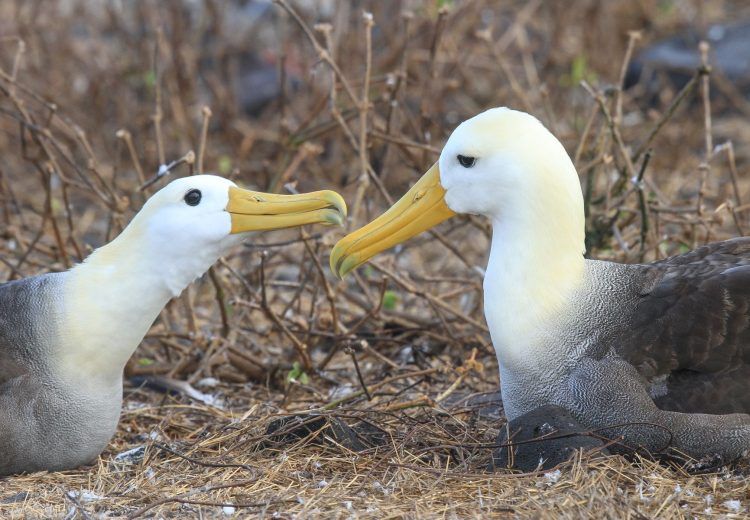
South America (including Galapagos)
May 2025
GALAPAGOS ISLANDS: Extraordinary wildlife photography in the footsteps of Darwin
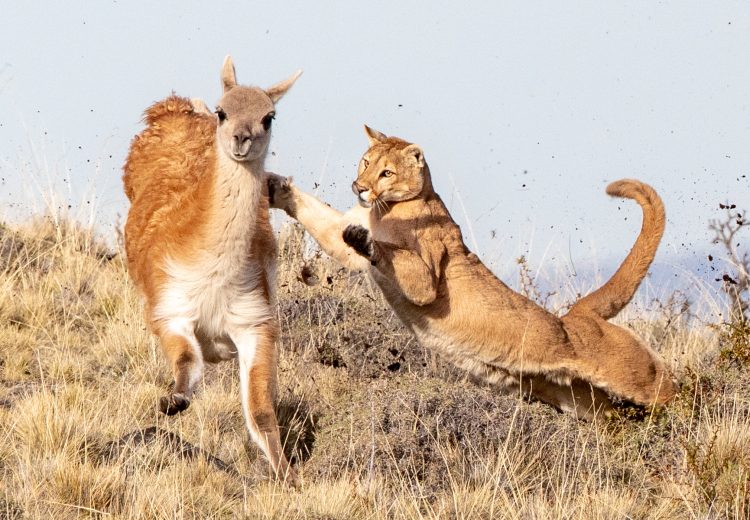
South America (including Galapagos)
September 2025
CHILE: WALKING WITH PUMAS – An Extraordinary Photographic Adventure at Torres del Paine
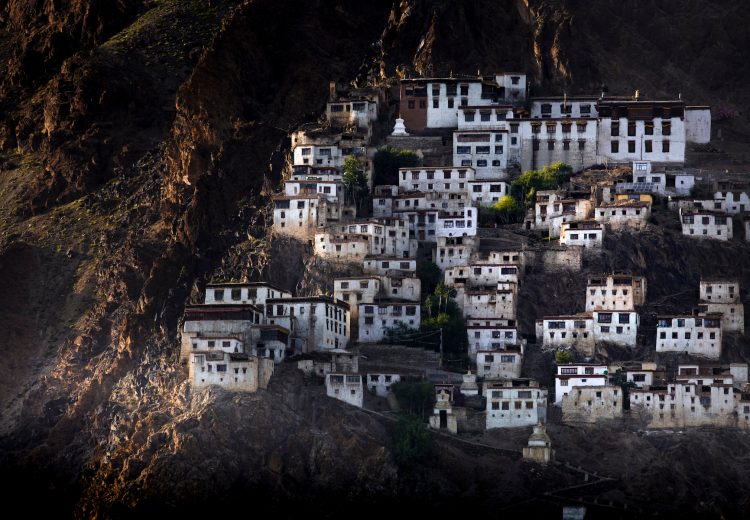
India
September-October 2025
ZANSKAR: A REMOTE BUDDHIST WORLD – Exploring the most isolated valley of the Indian Himalayas
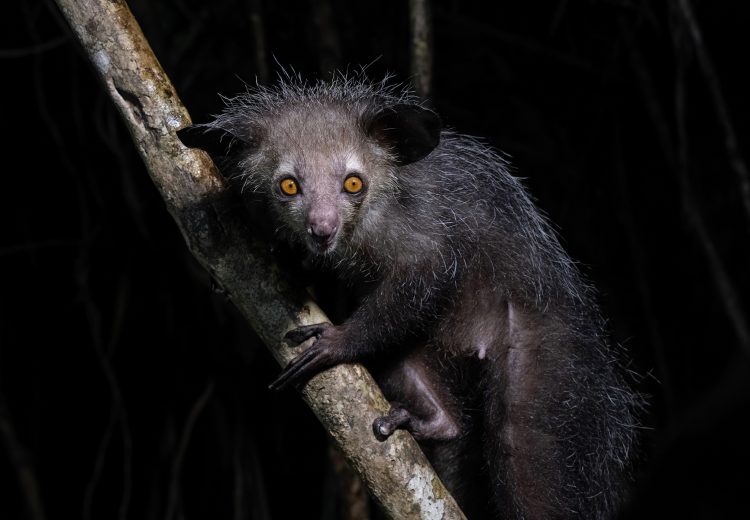
Madagascar
October 2025
MADAGASCAR: A WORLD APART – The Natural Curiosities of the ‘Eighth Continent’
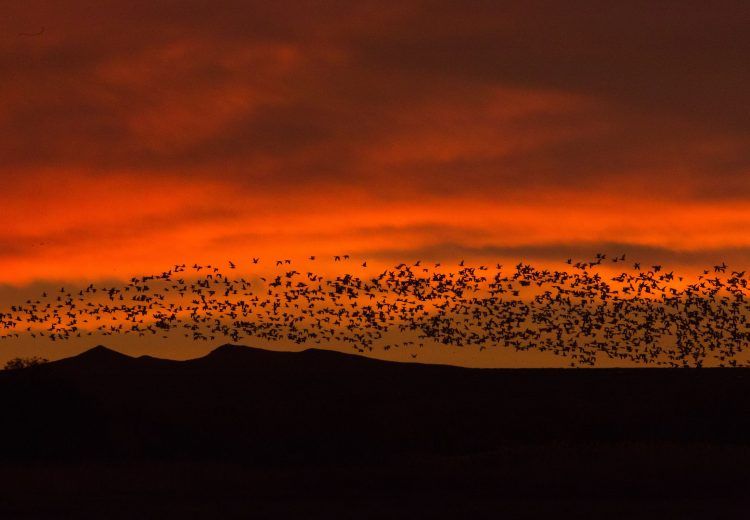
United States of America
December 2025
NEW MEXICO: CRANES, GEESE & LANDSCAPES – Bosque del Apache and White Sands
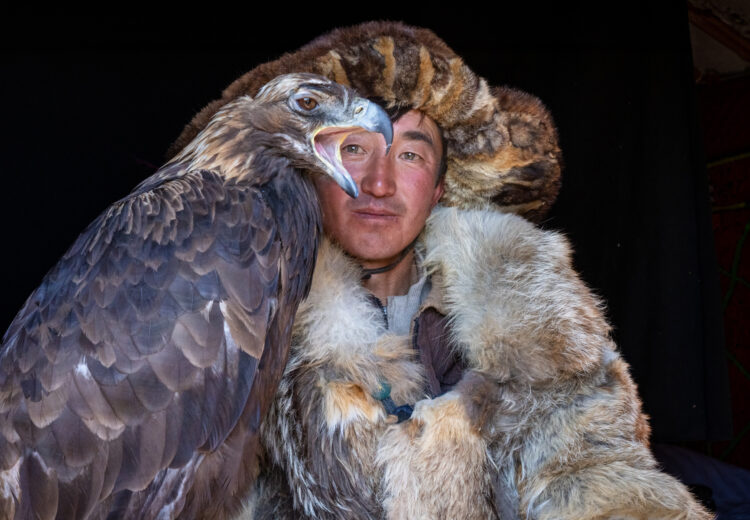
Mongolia
September 2026

